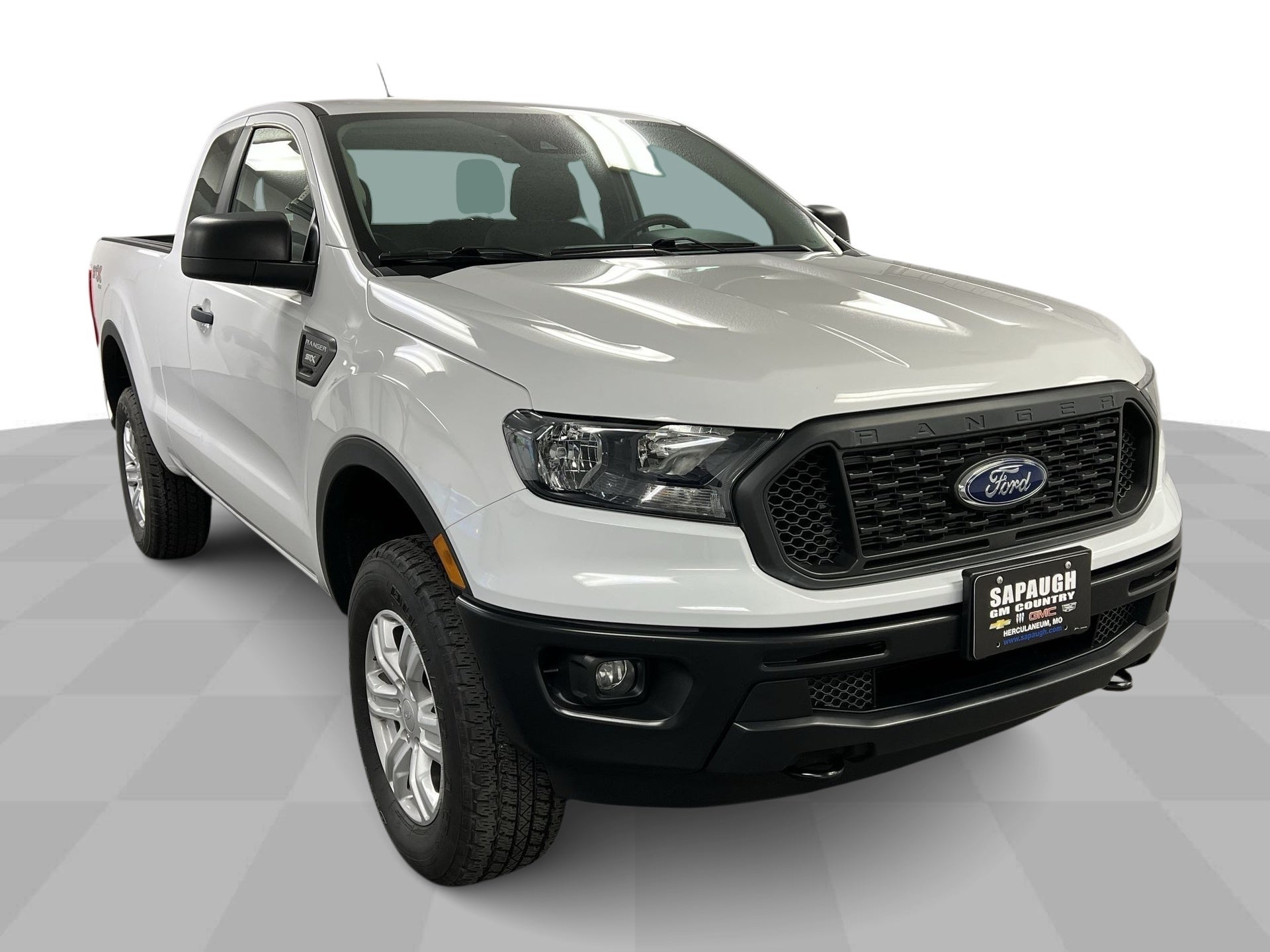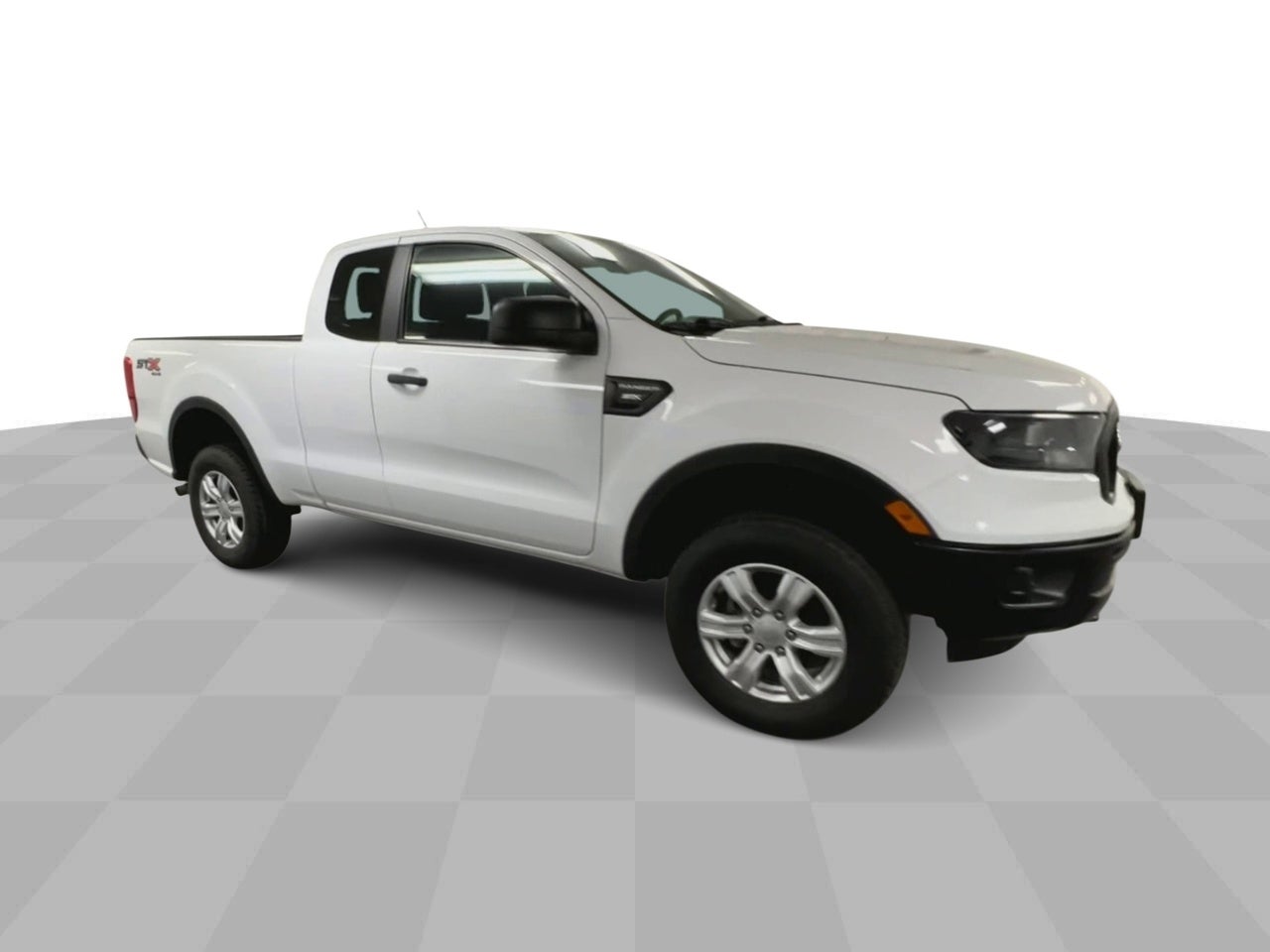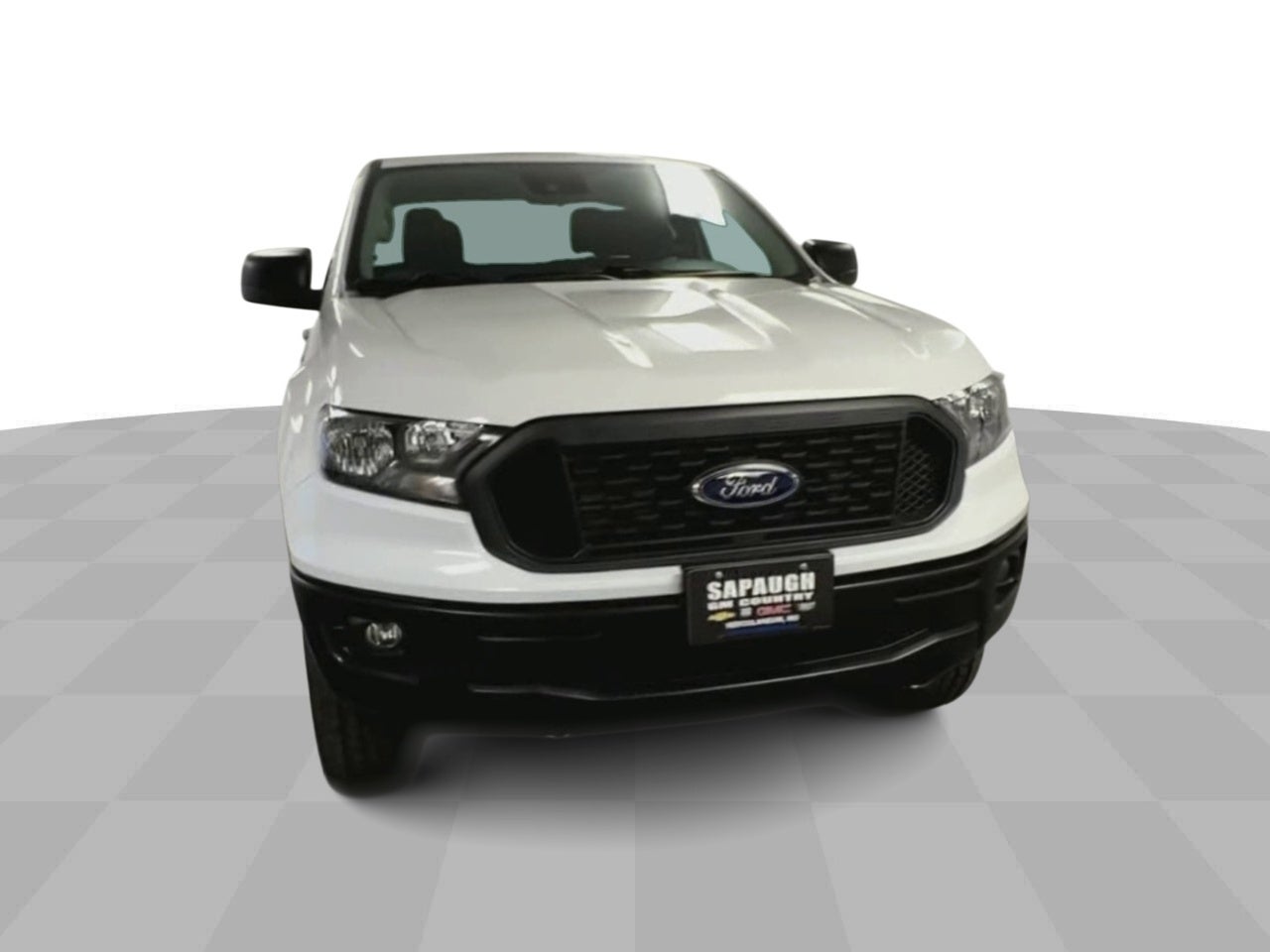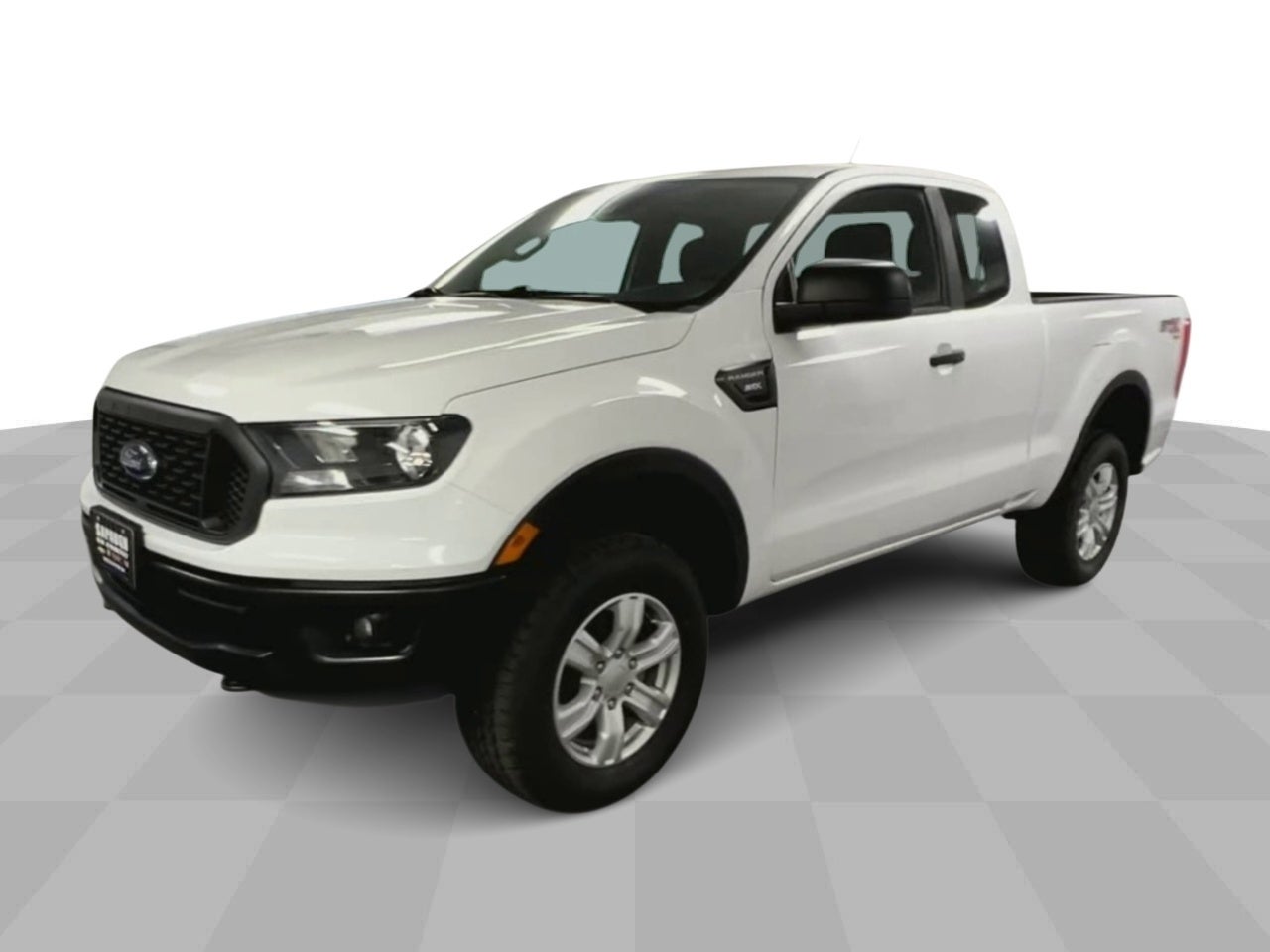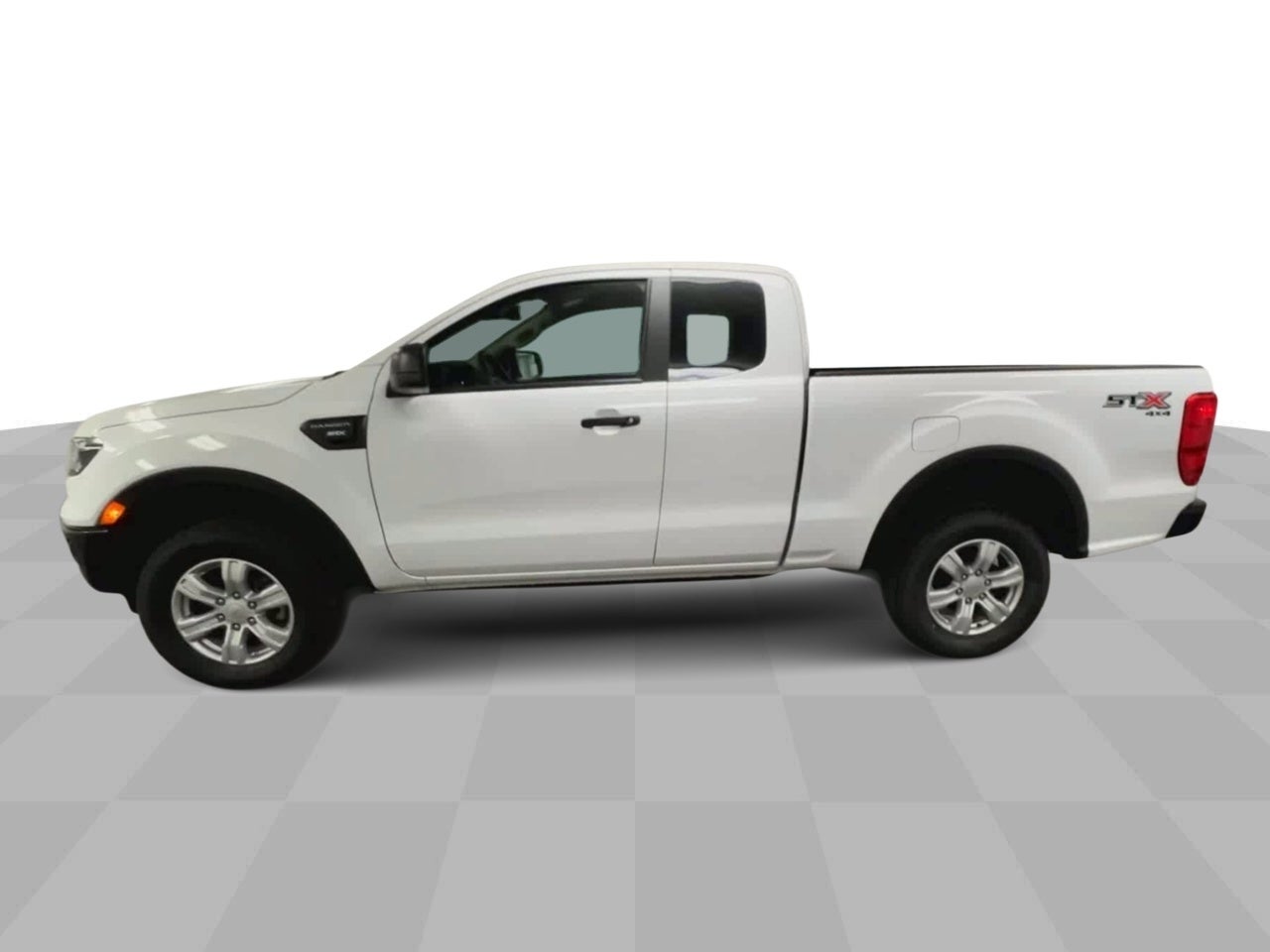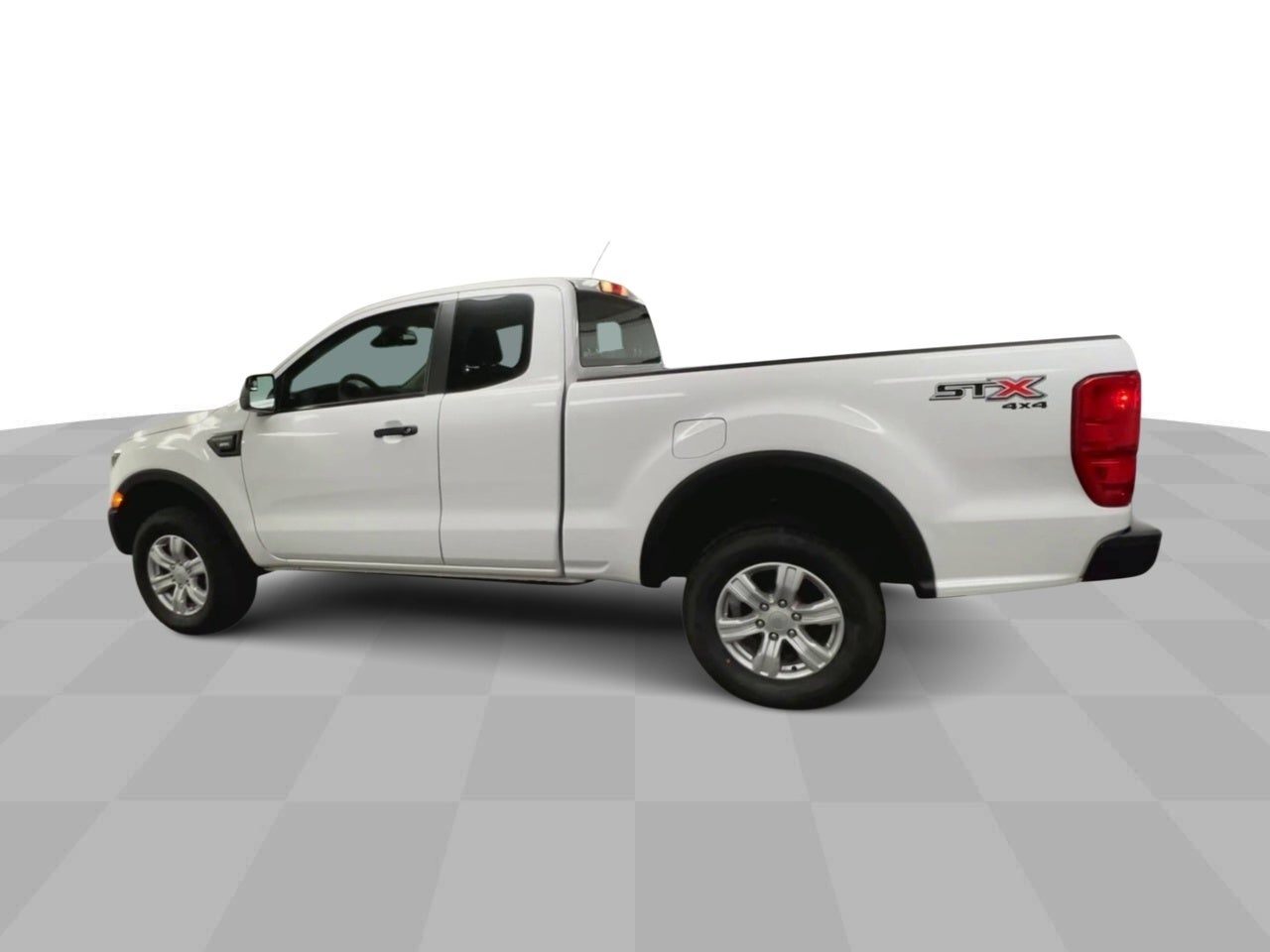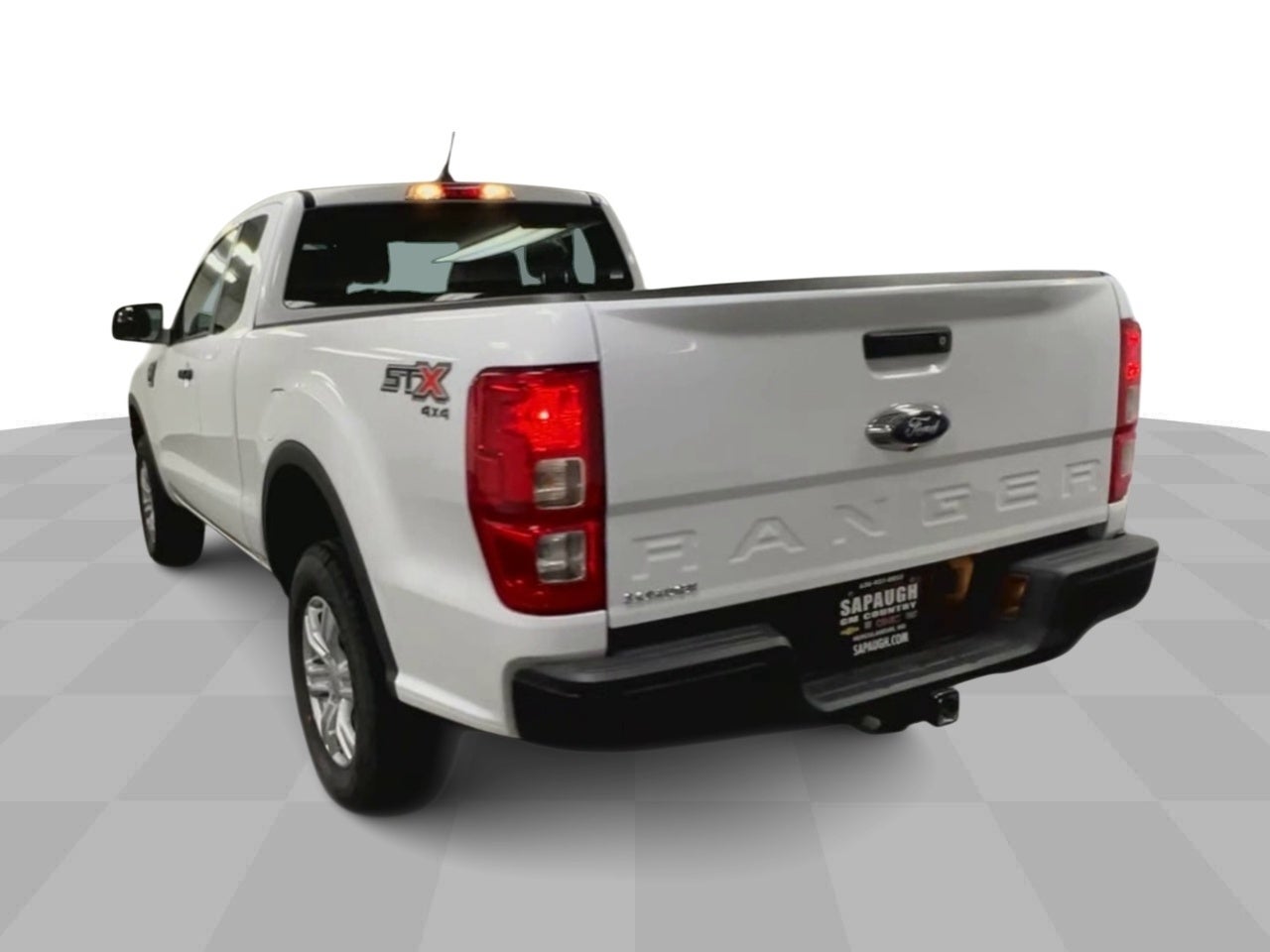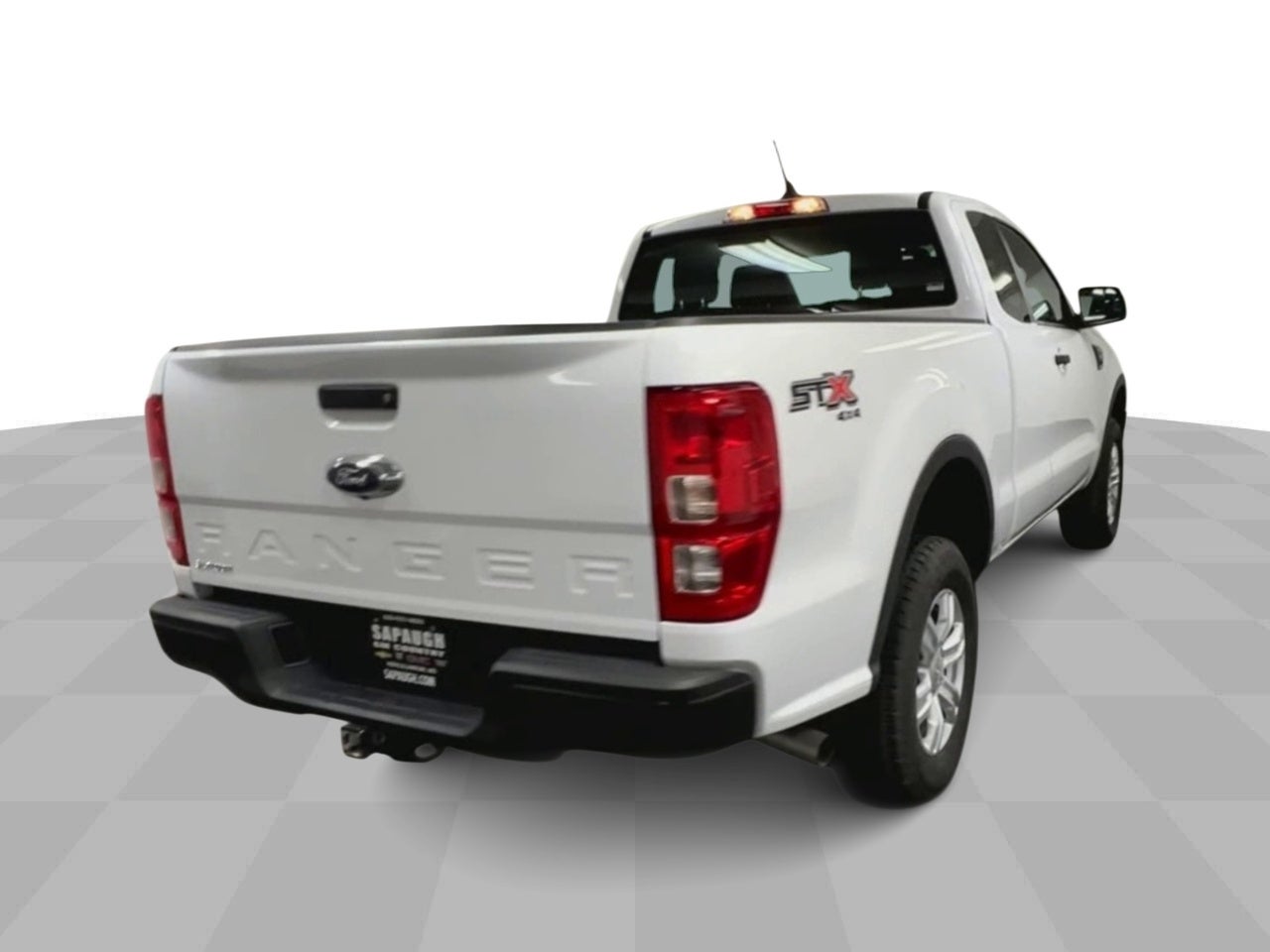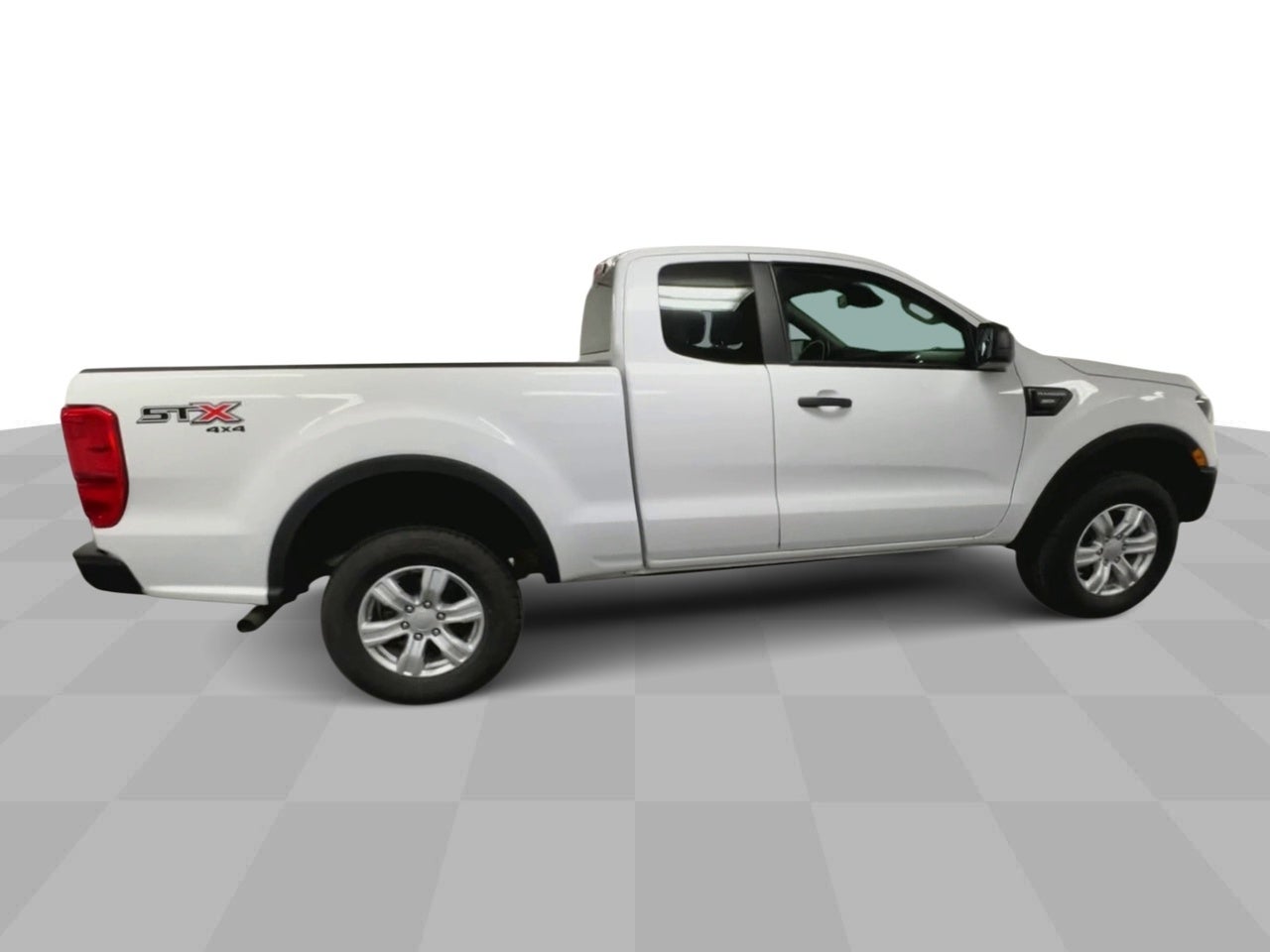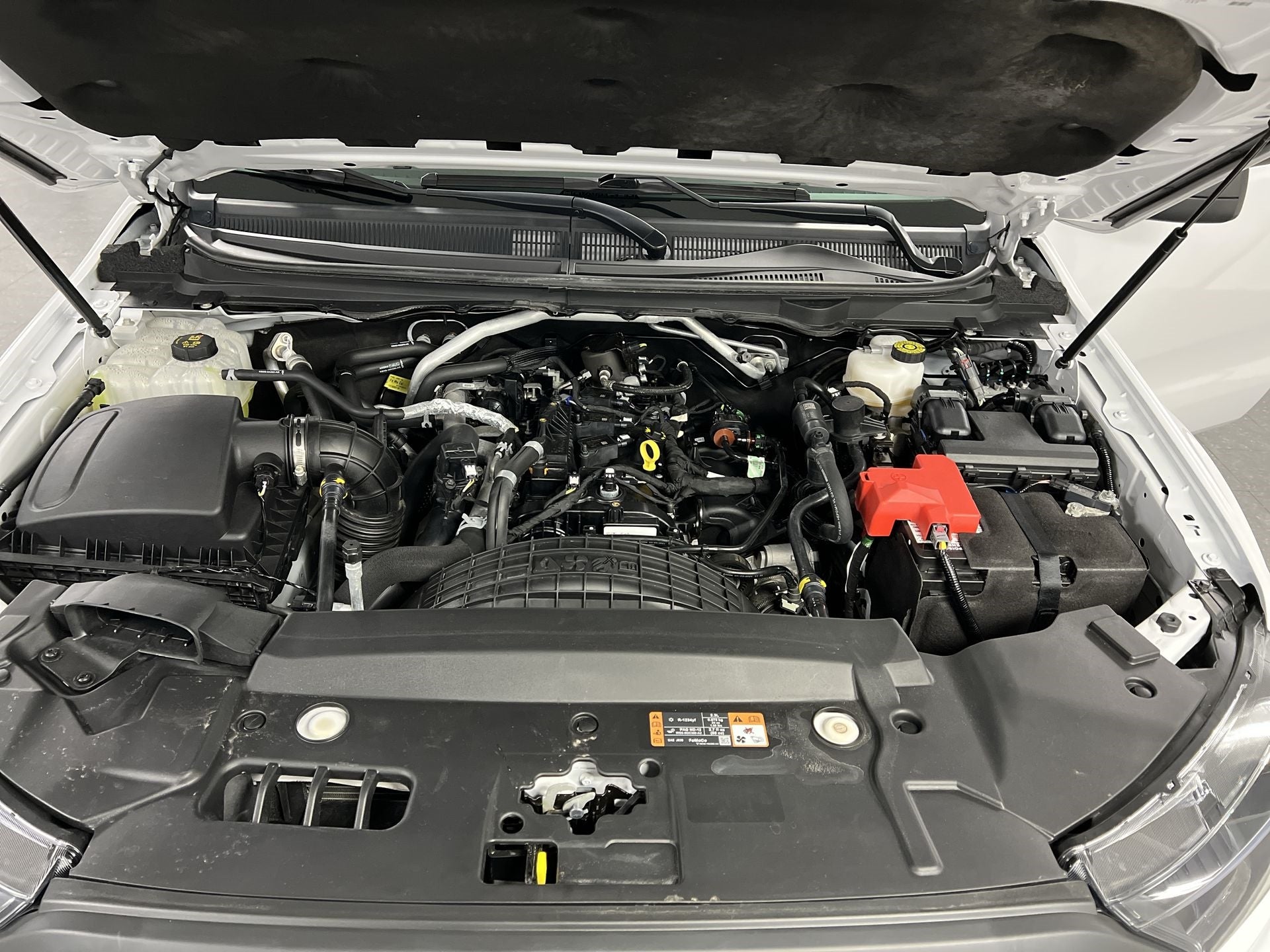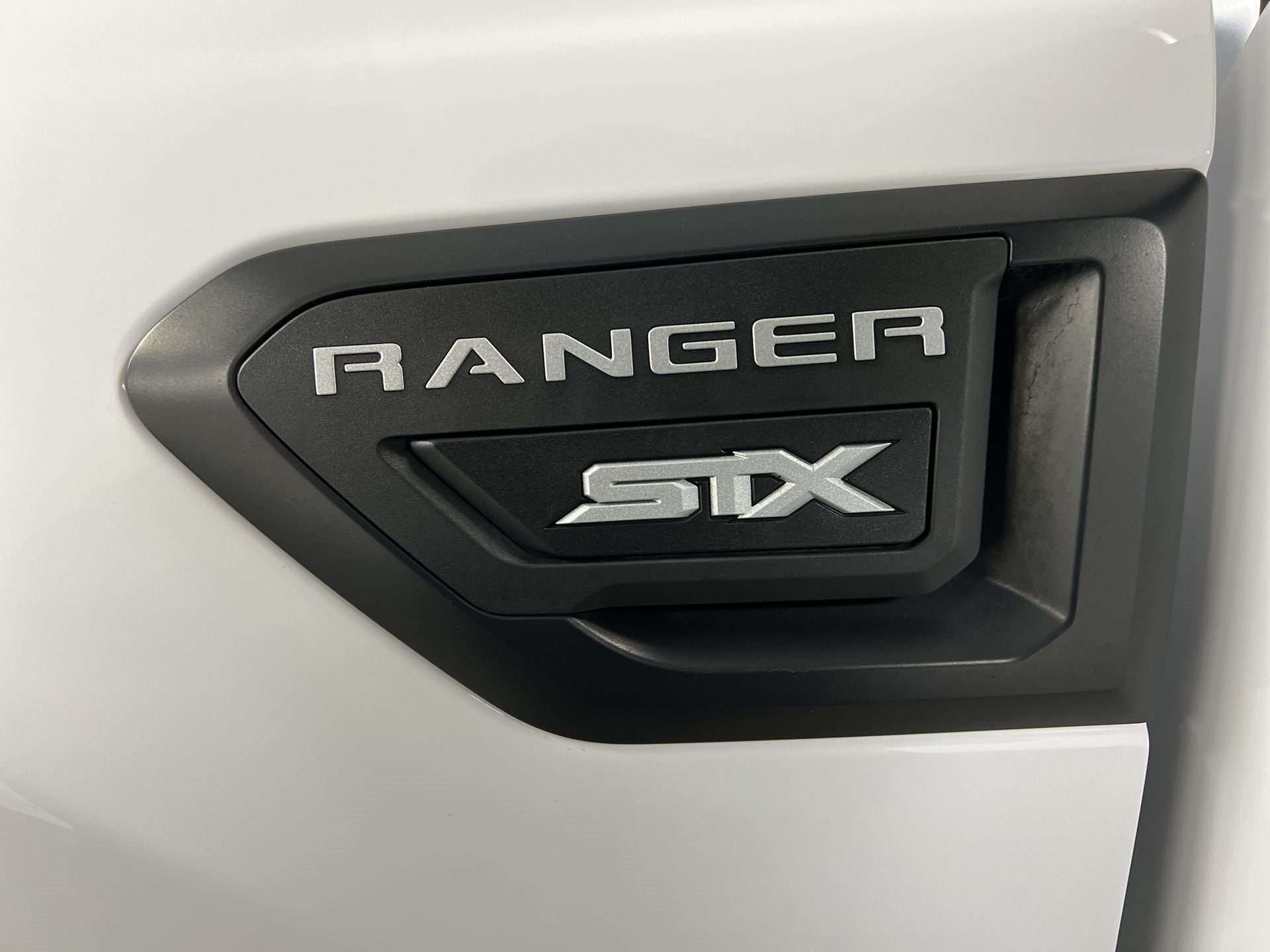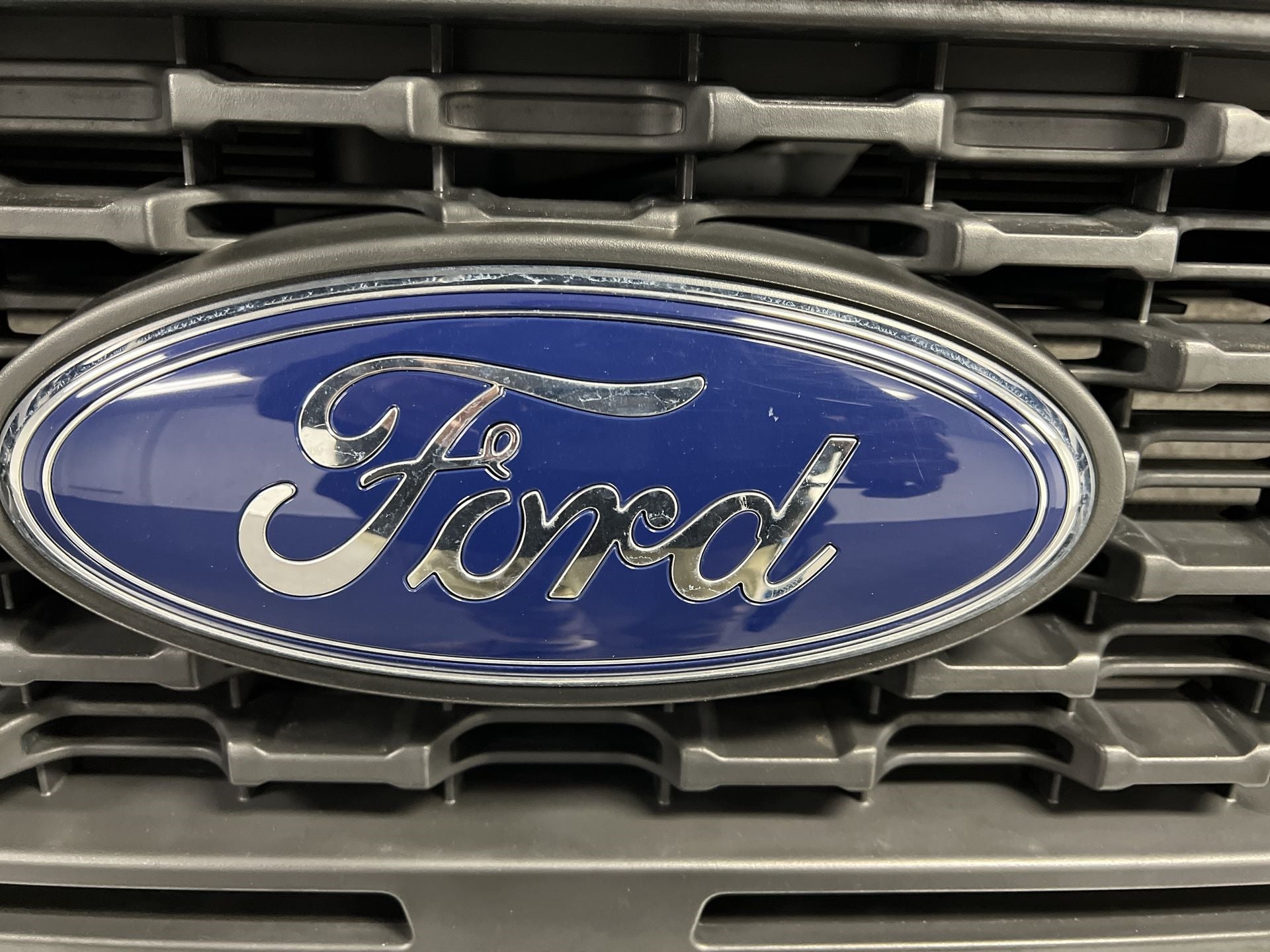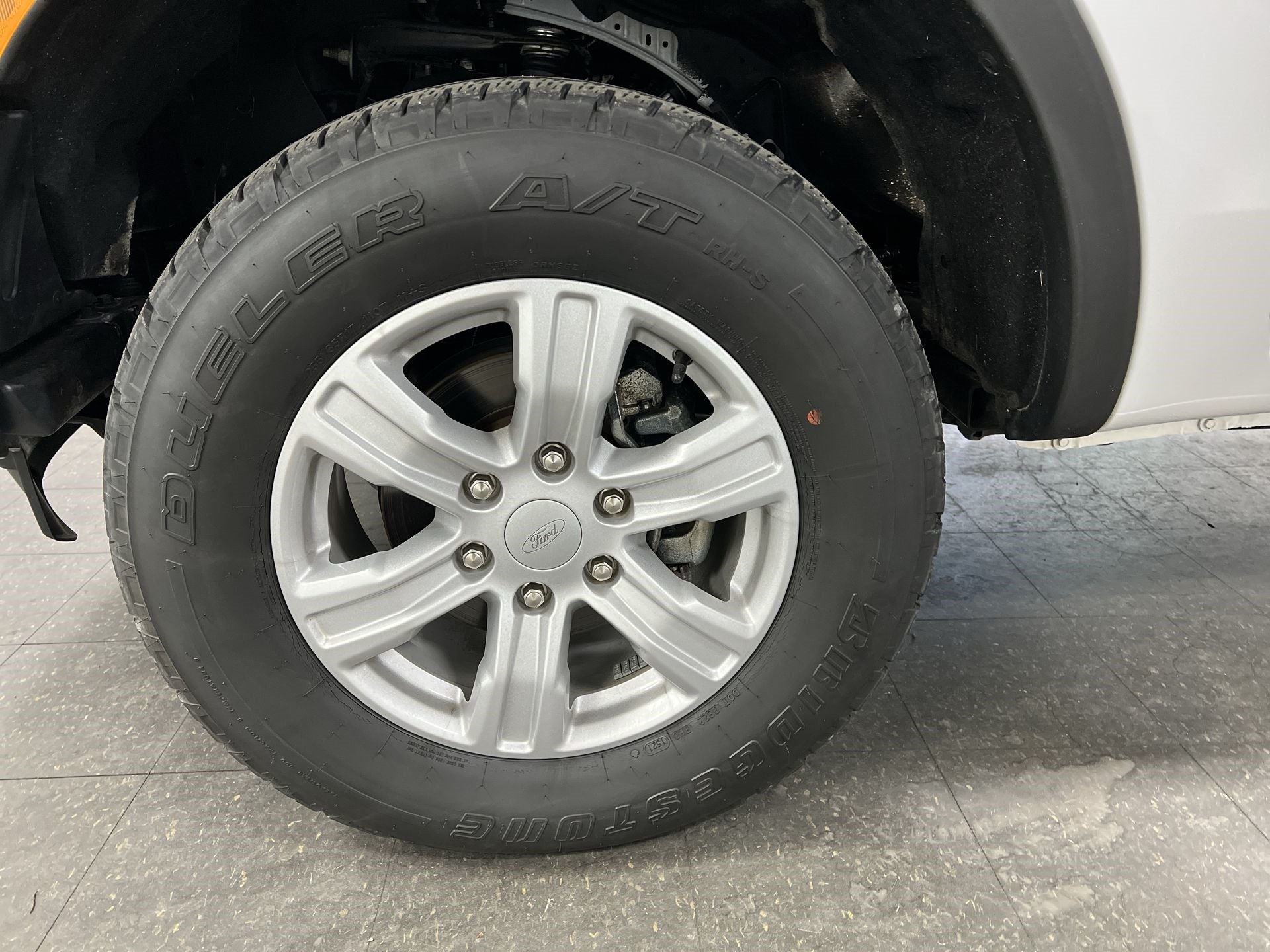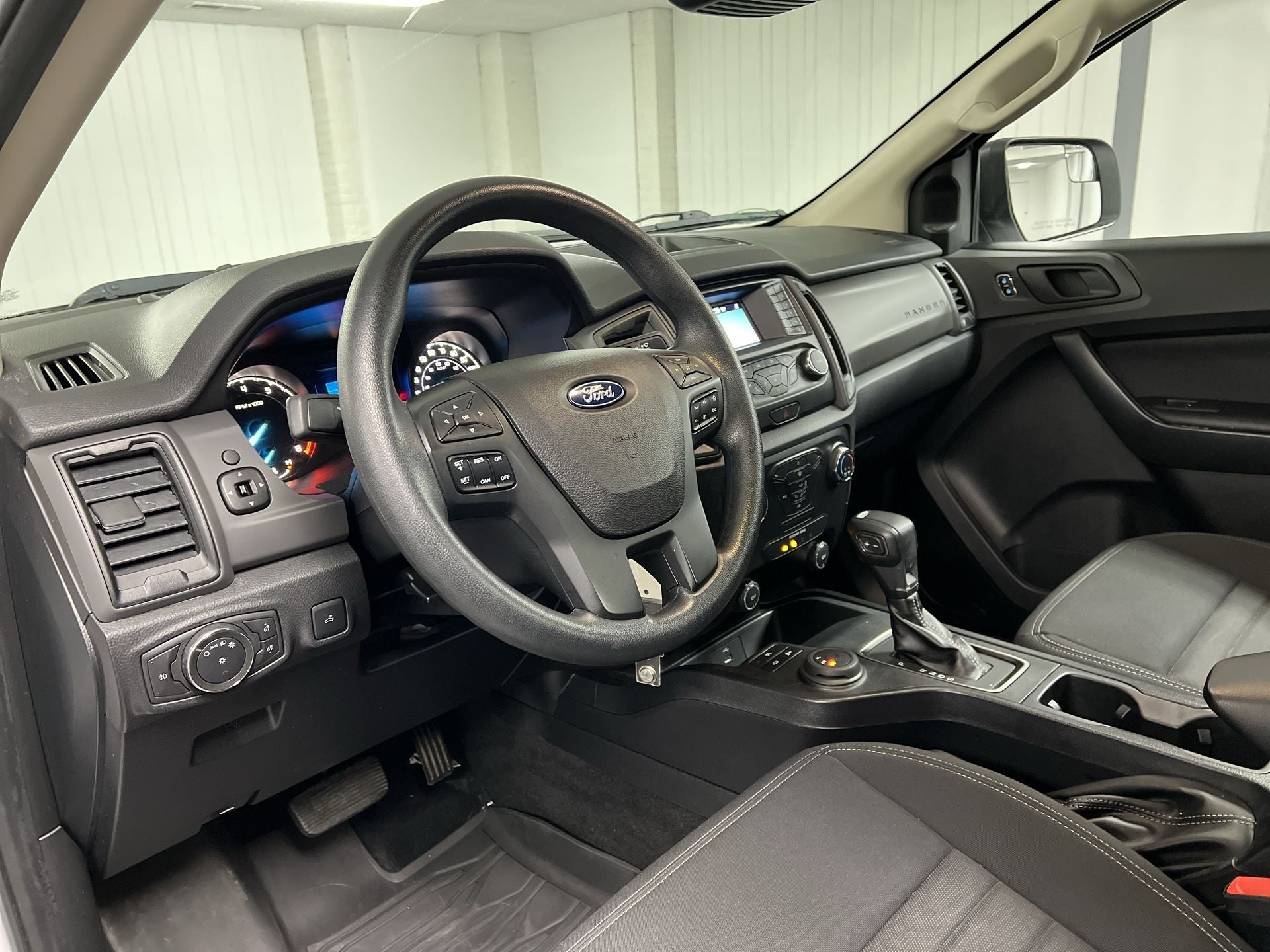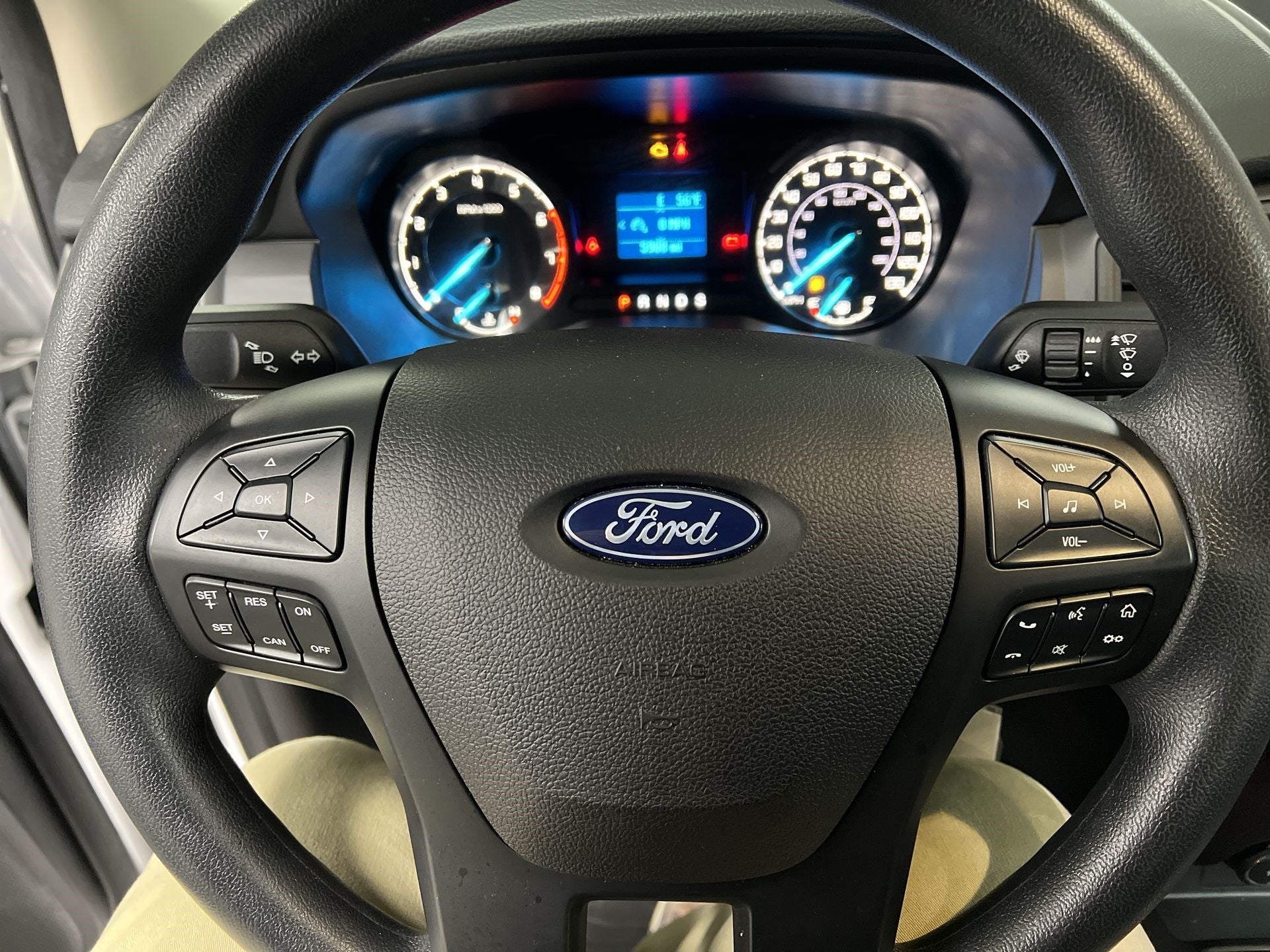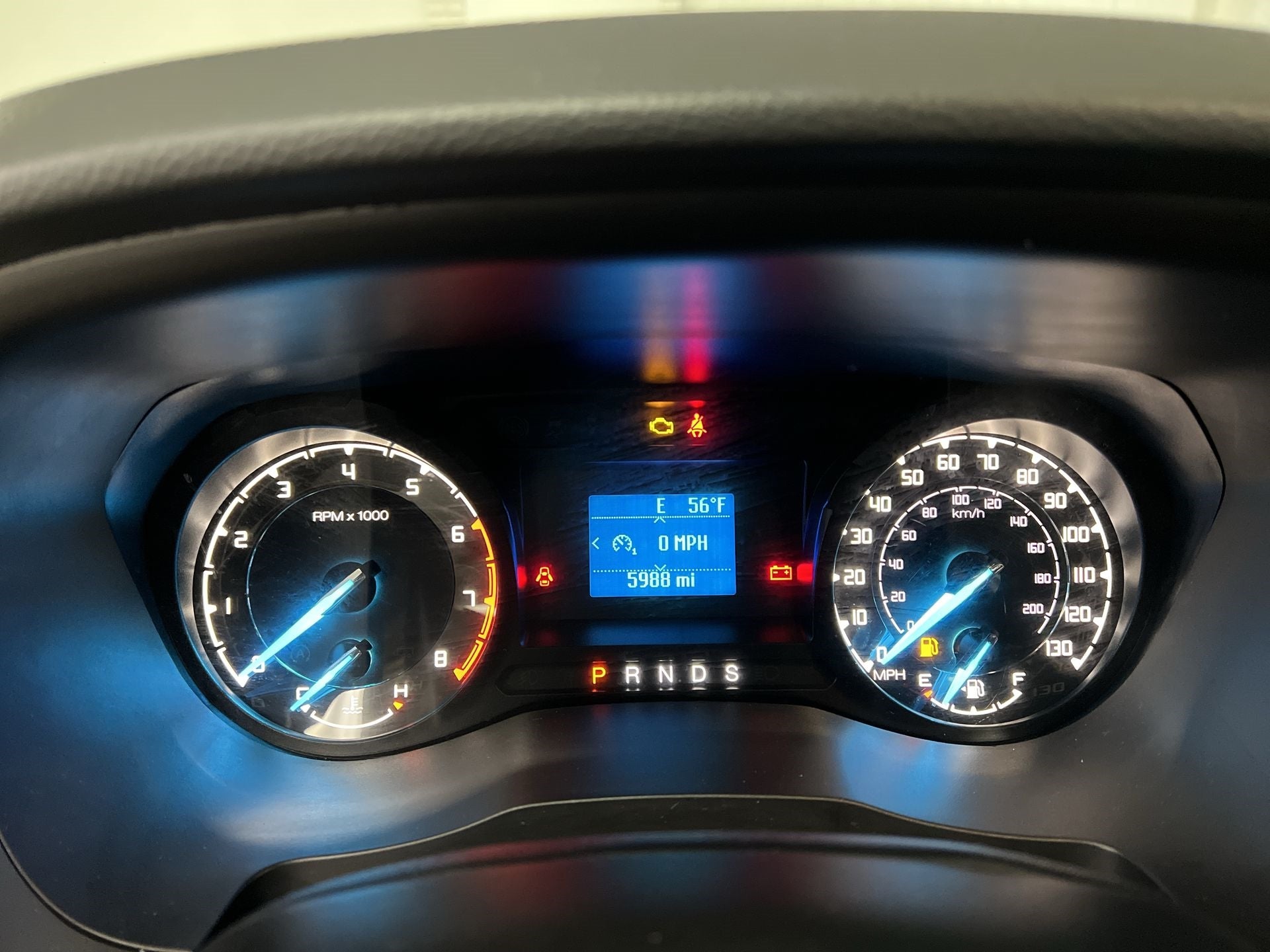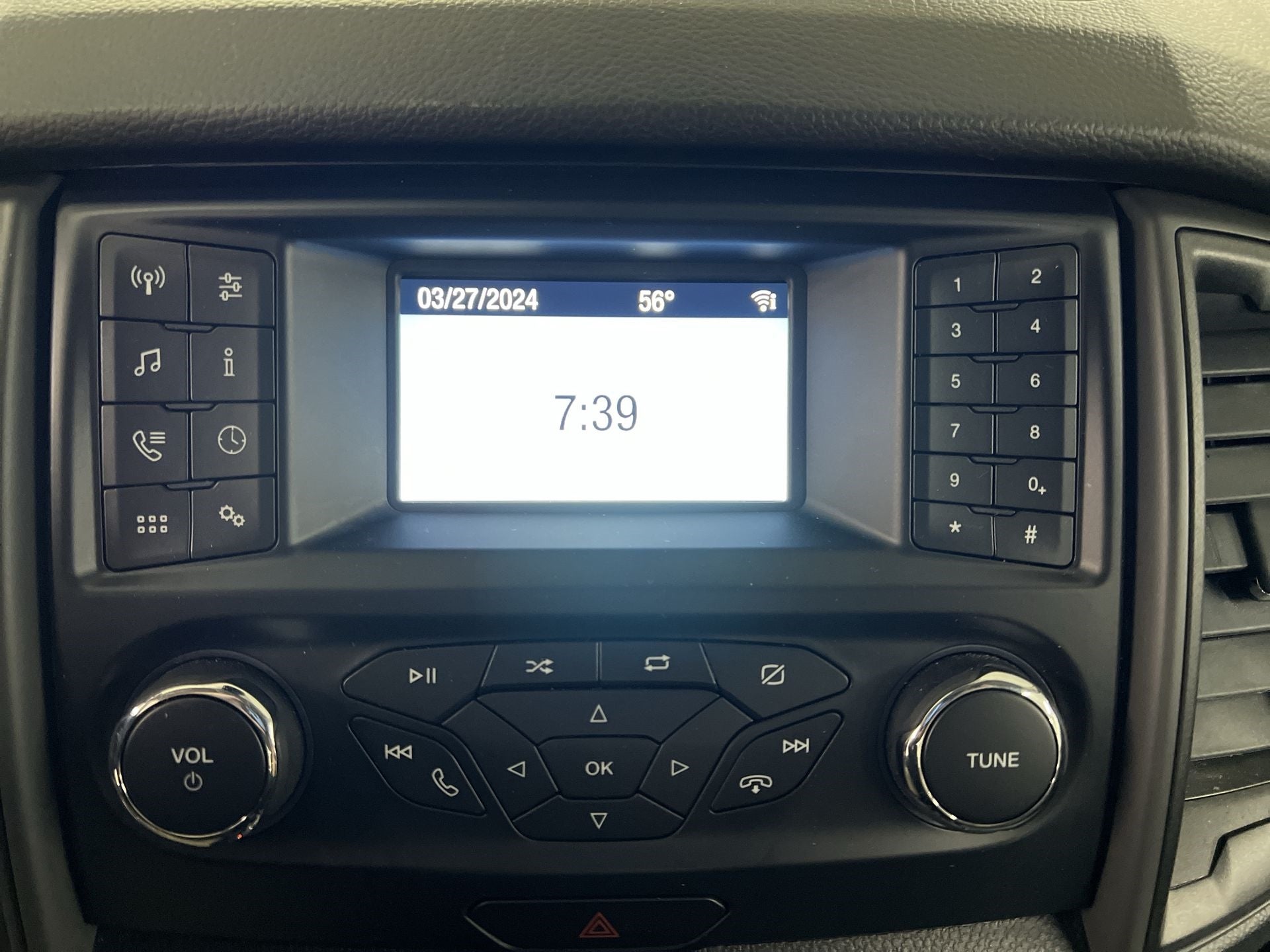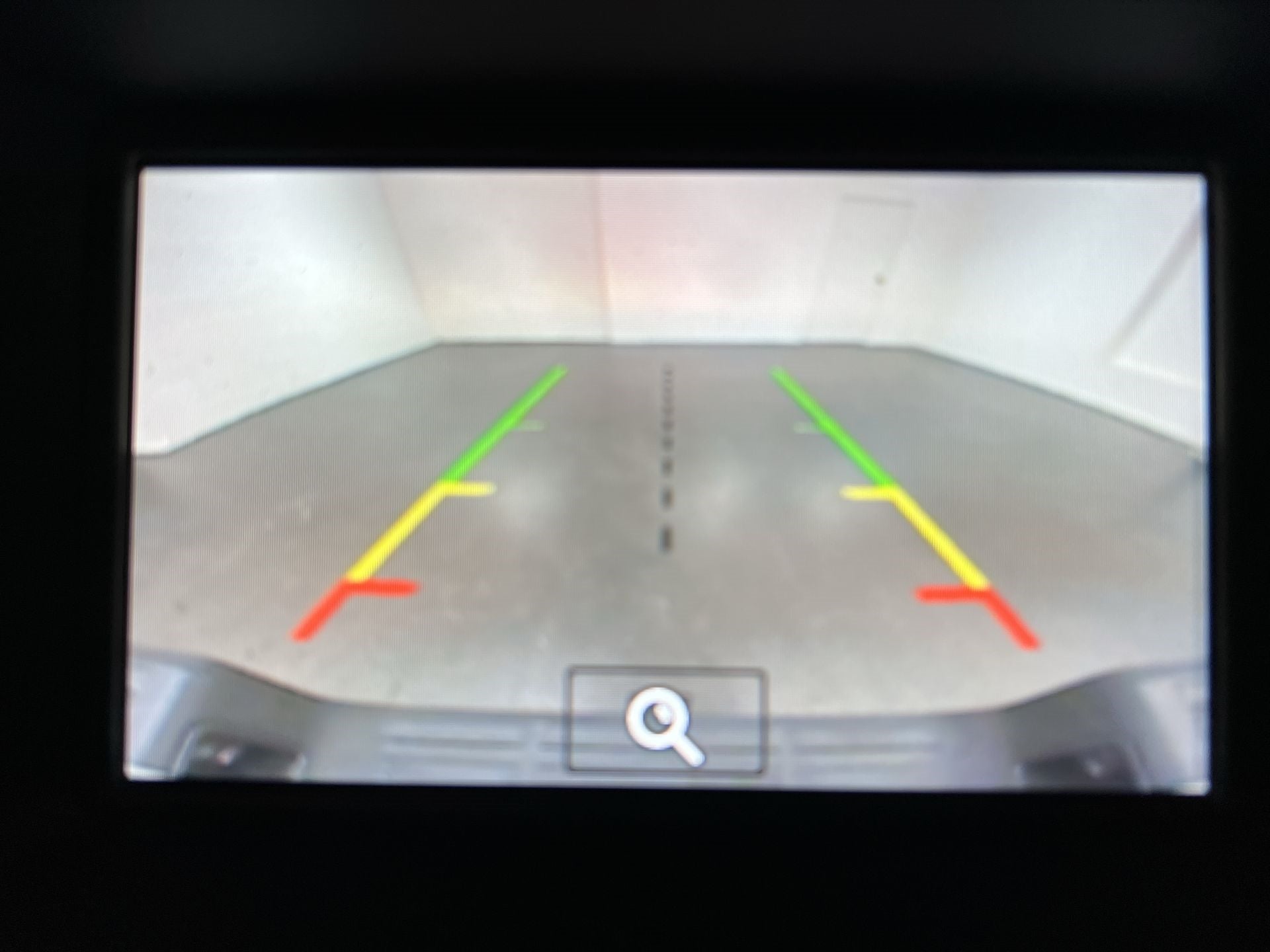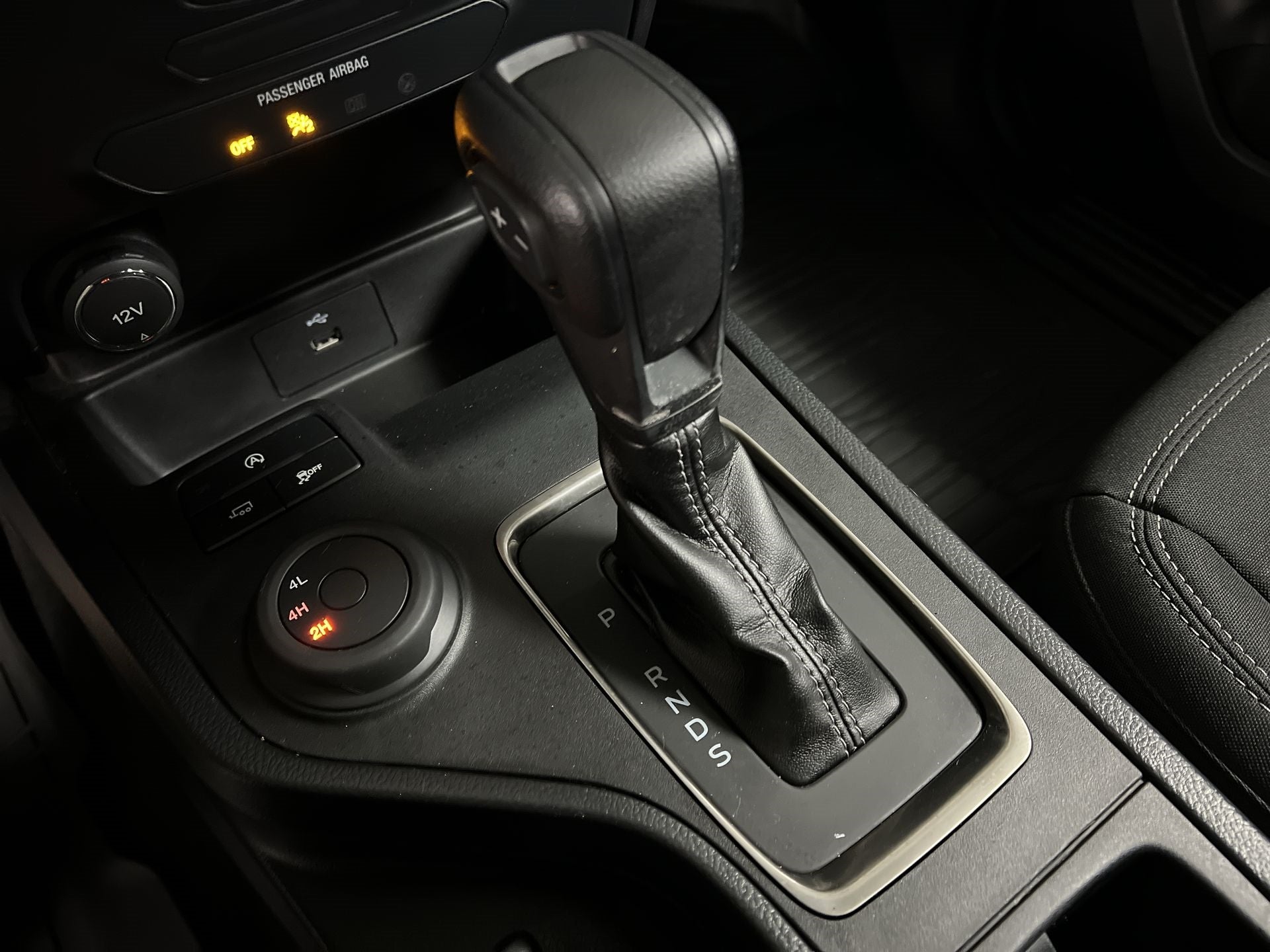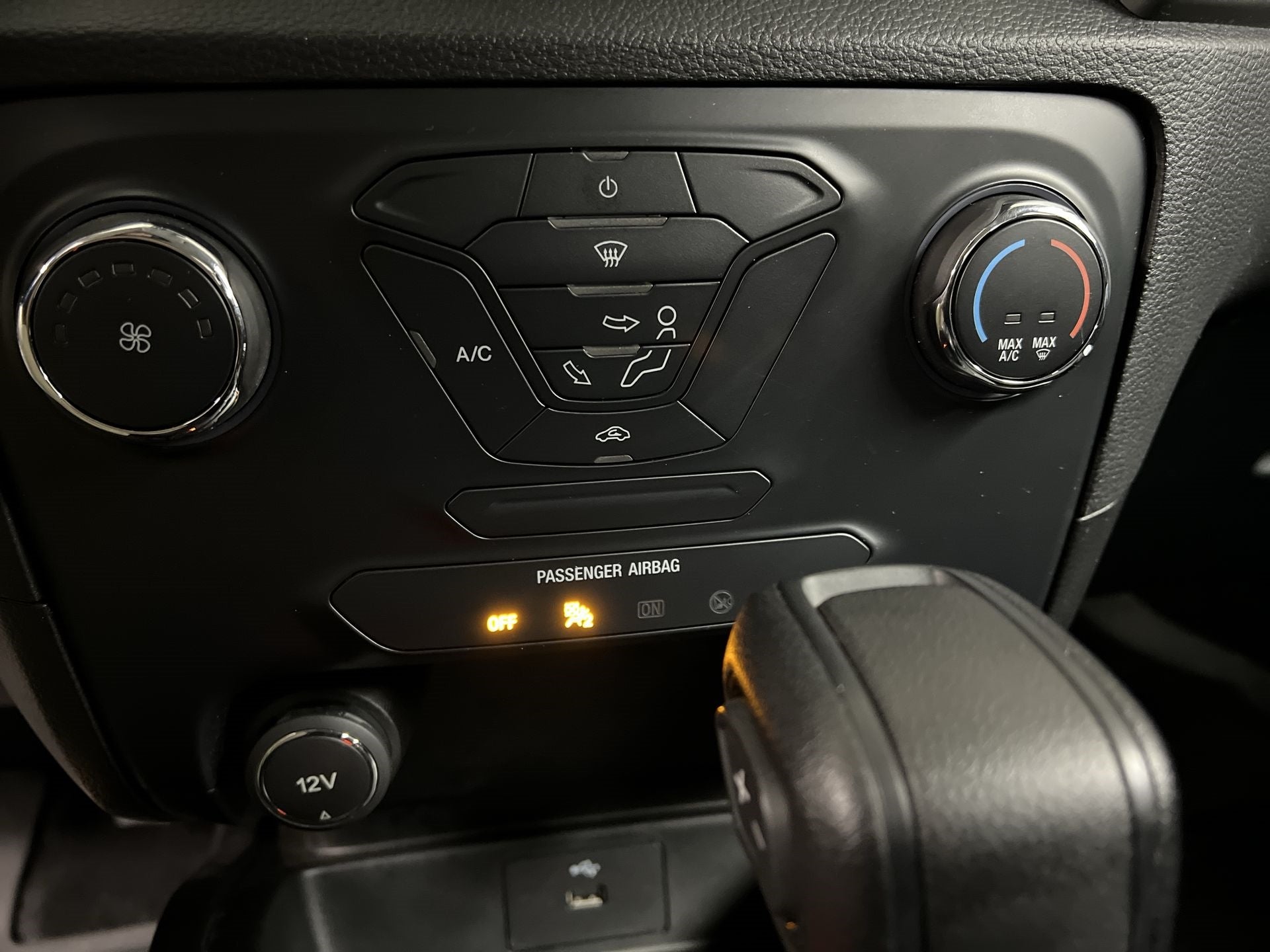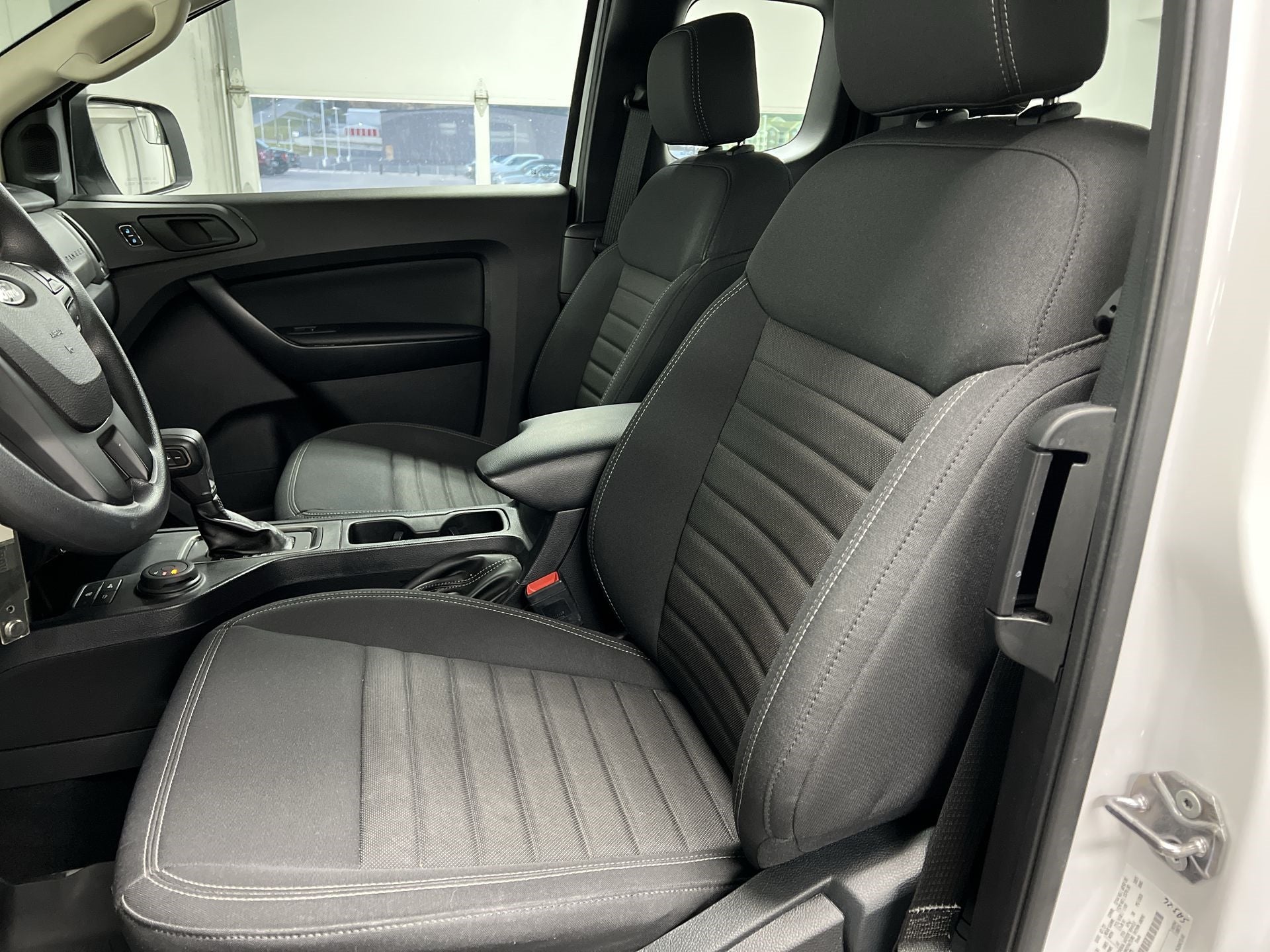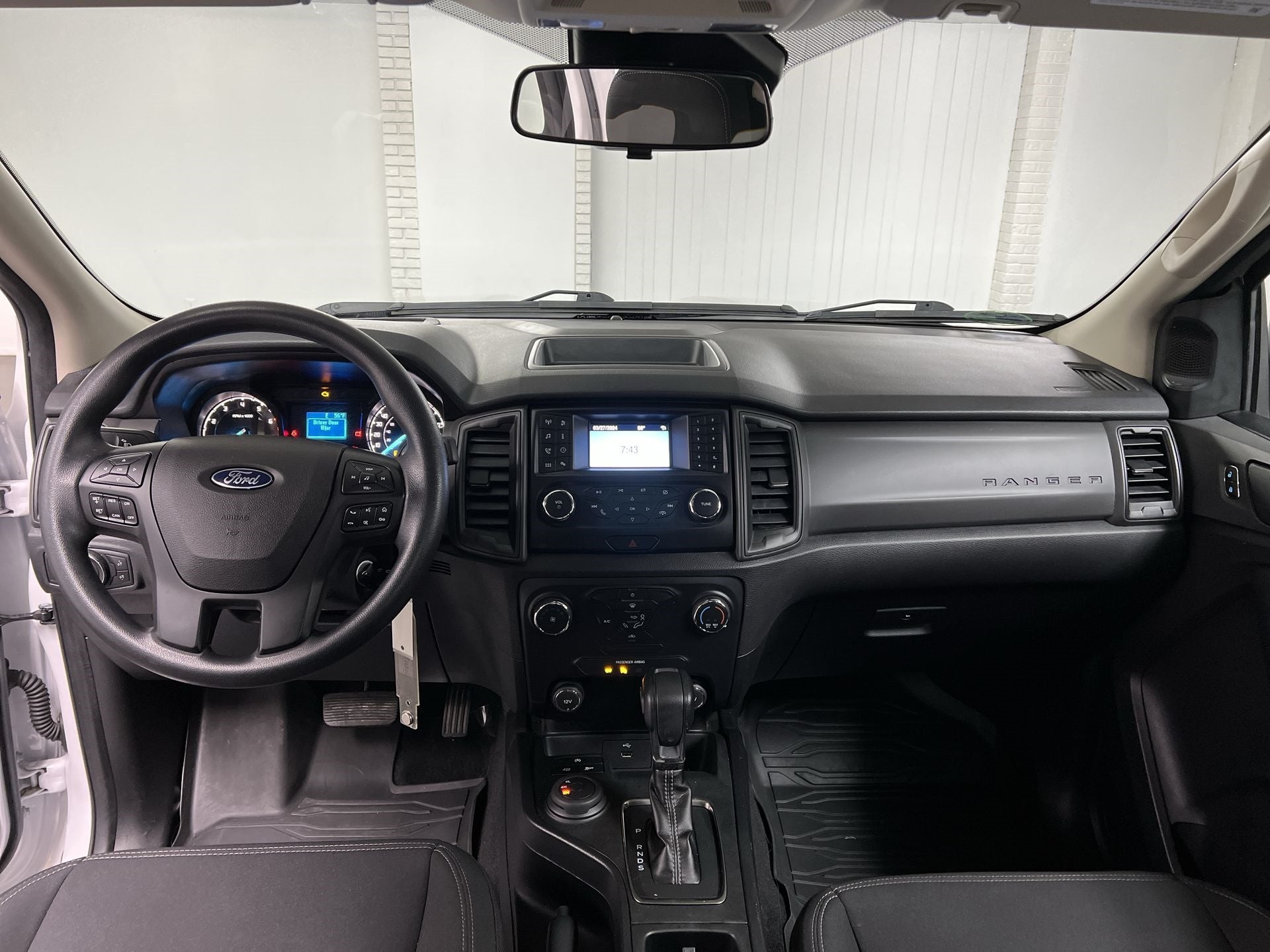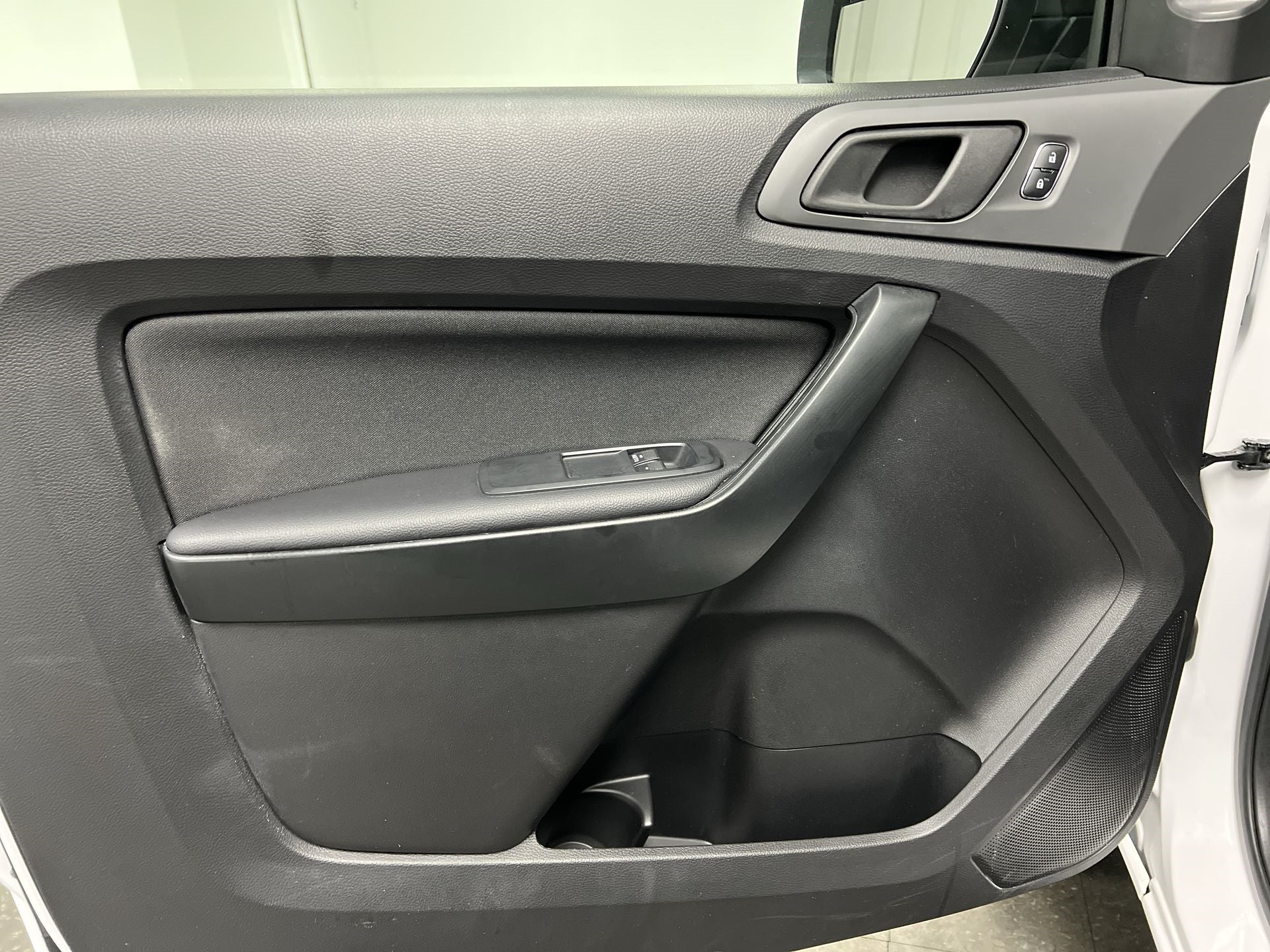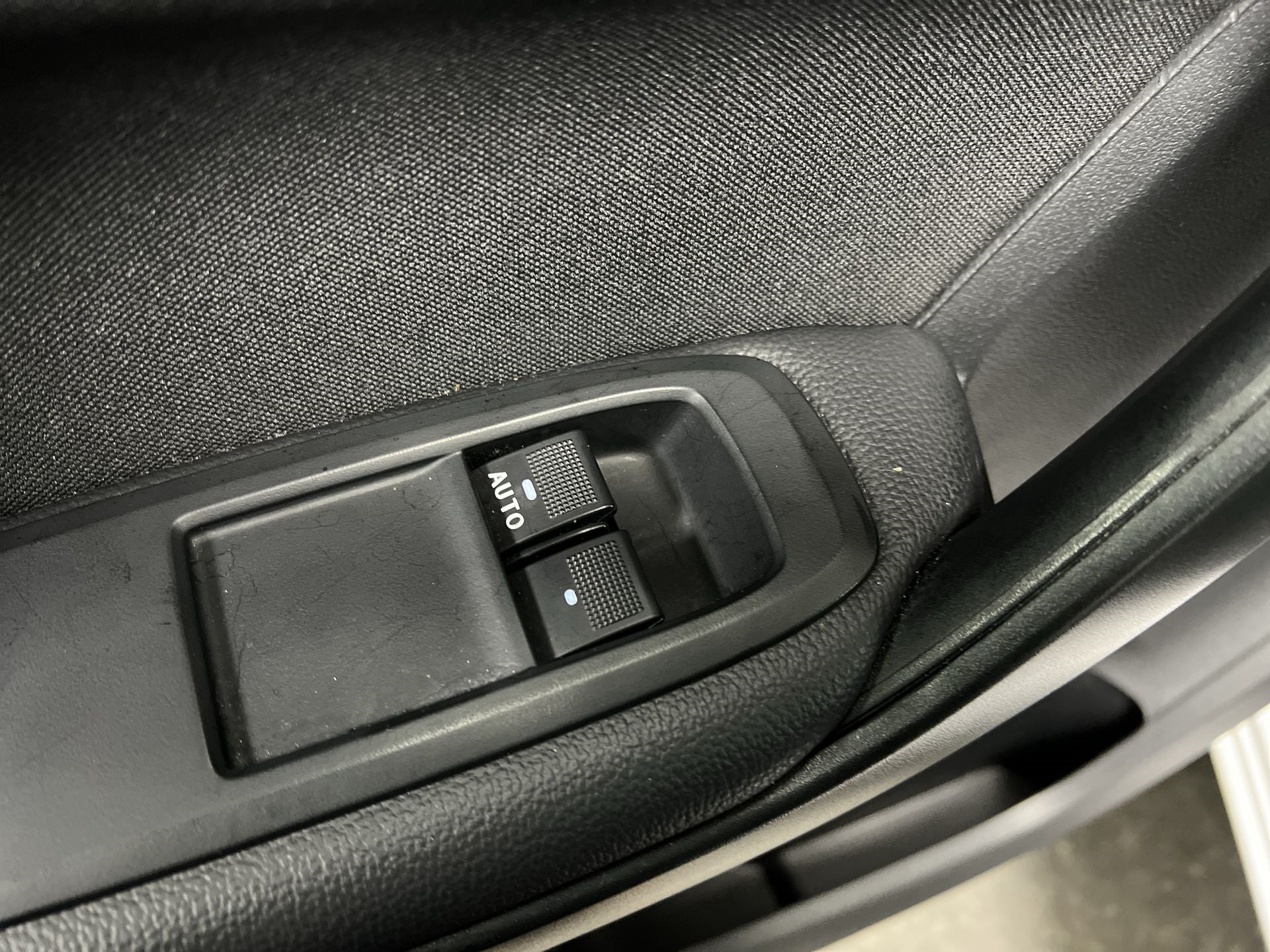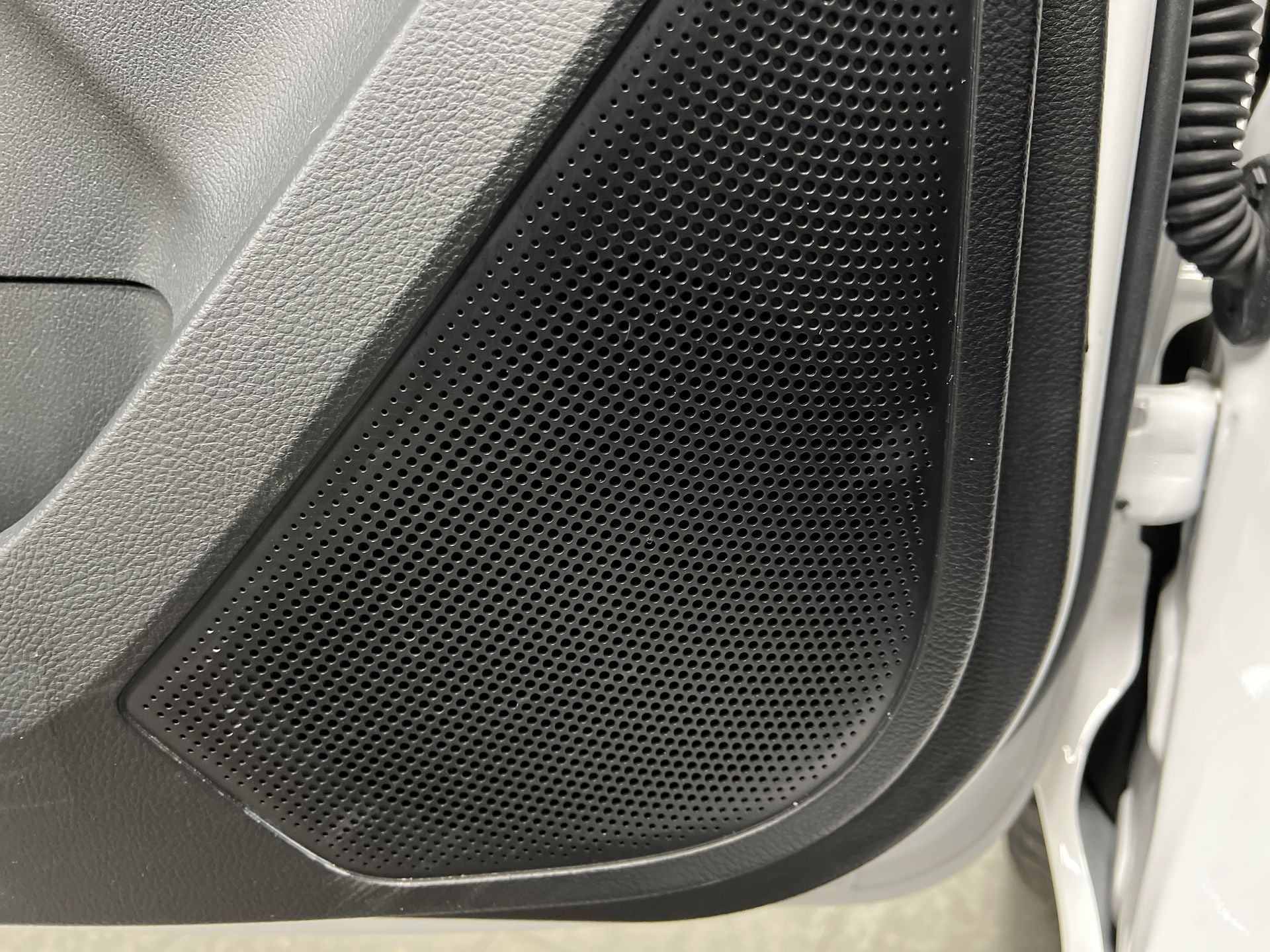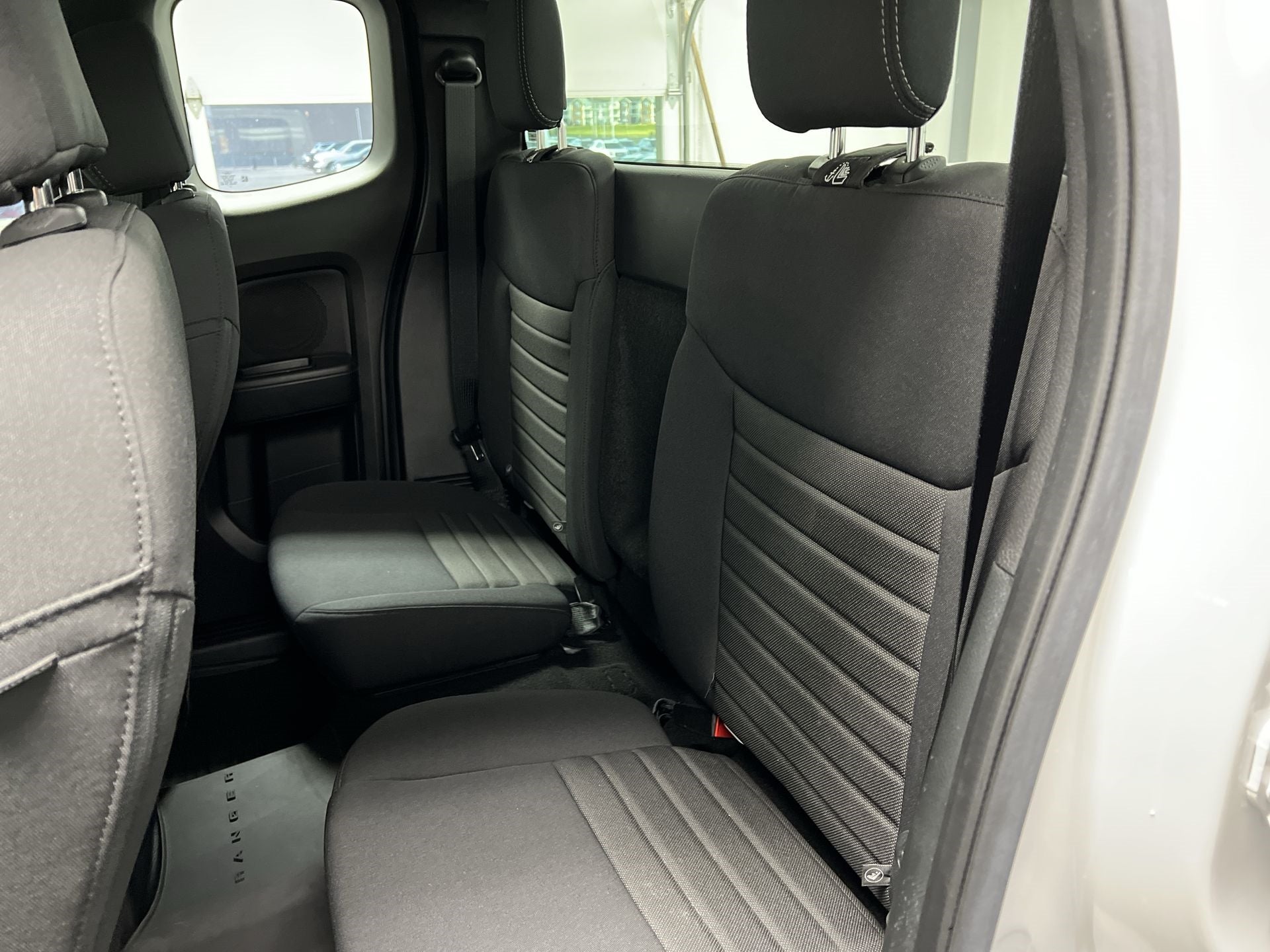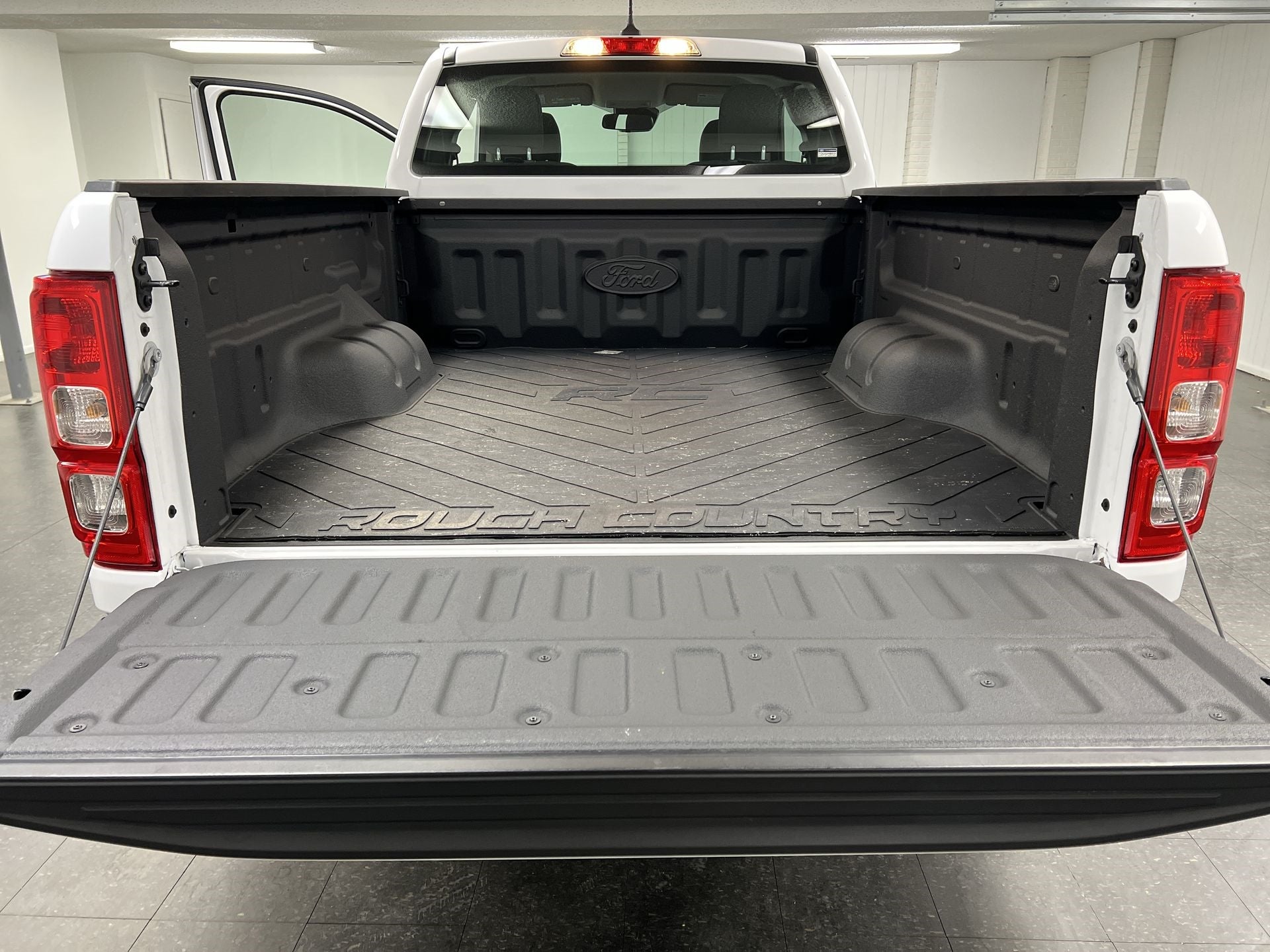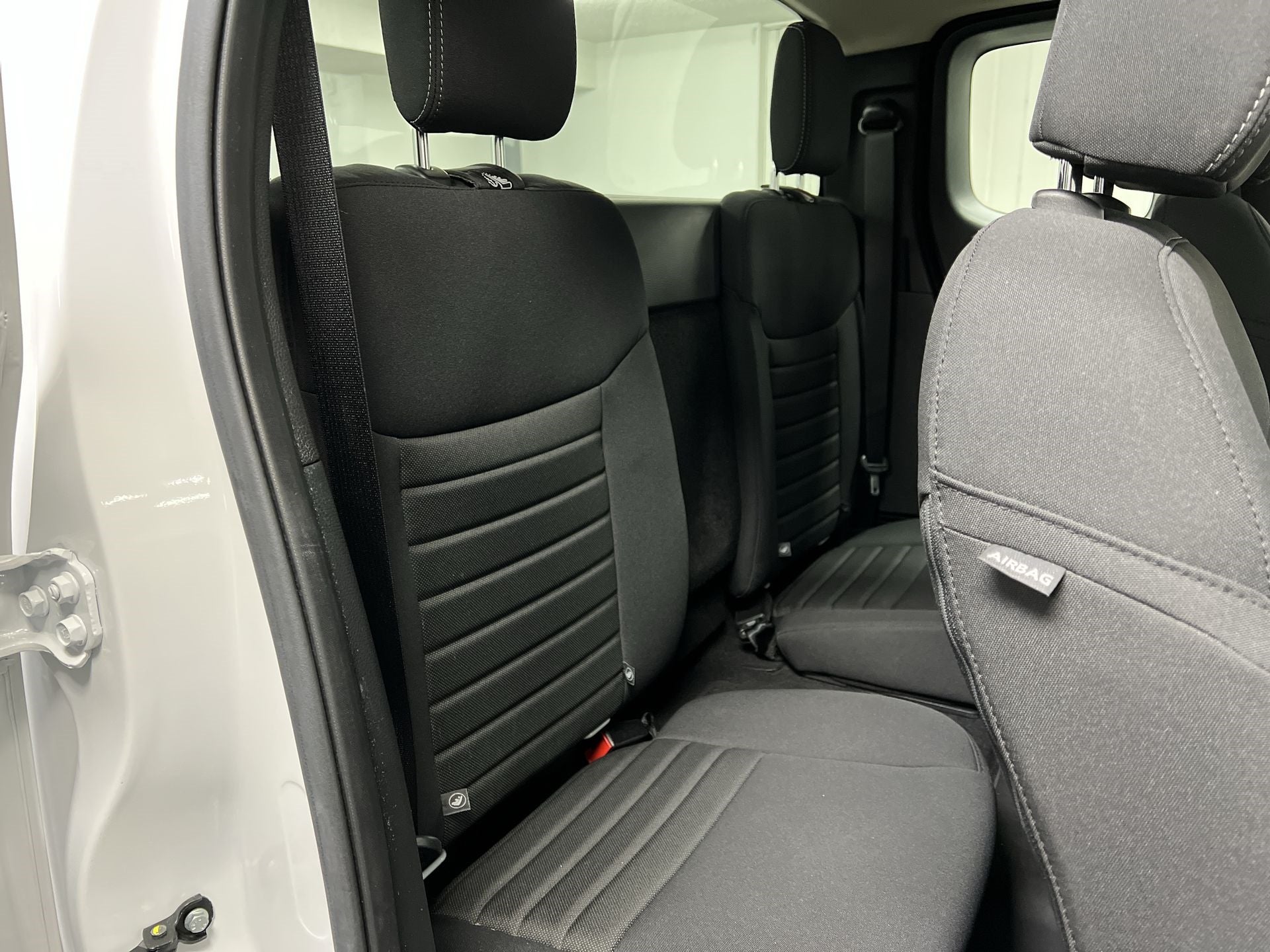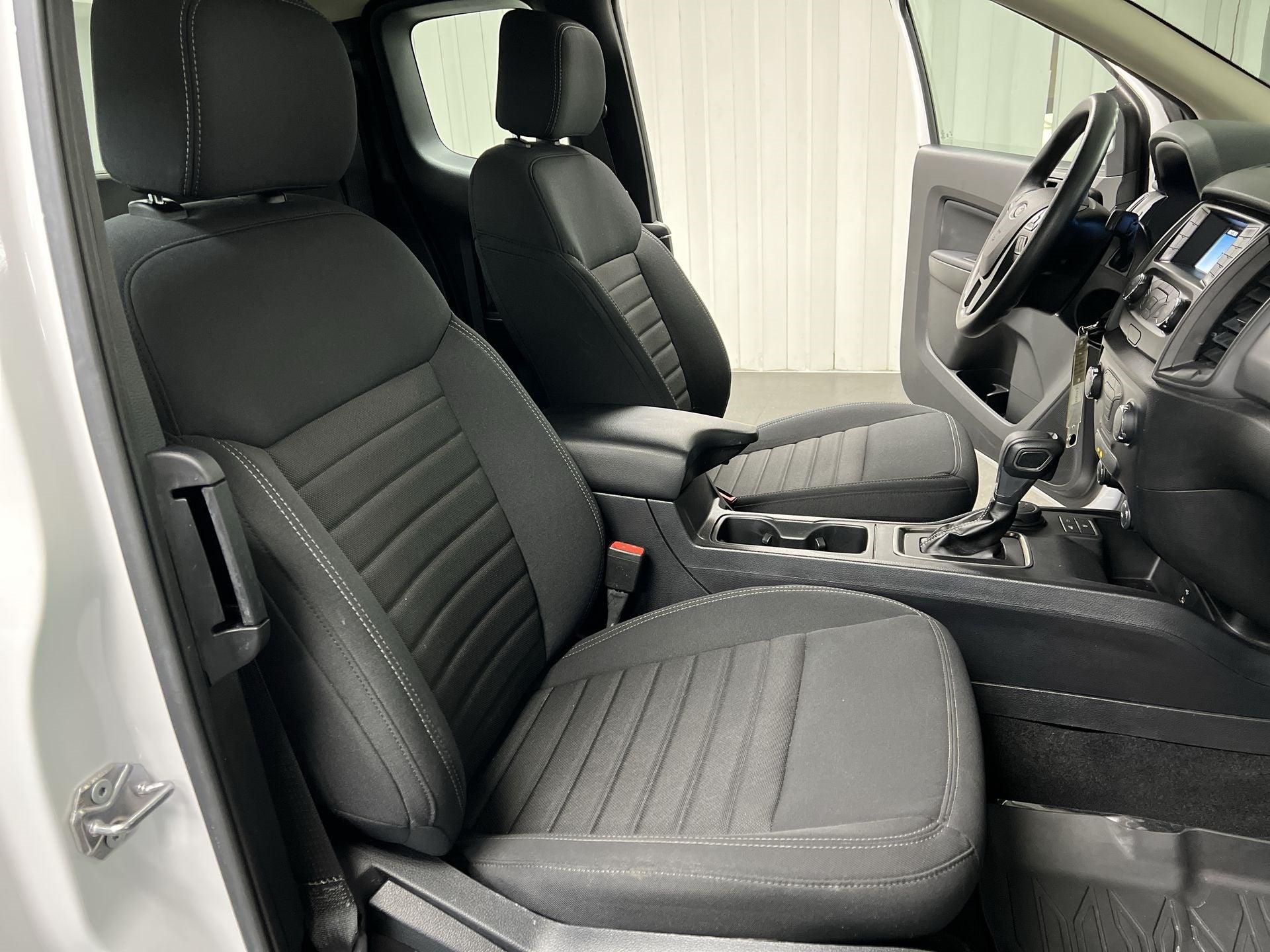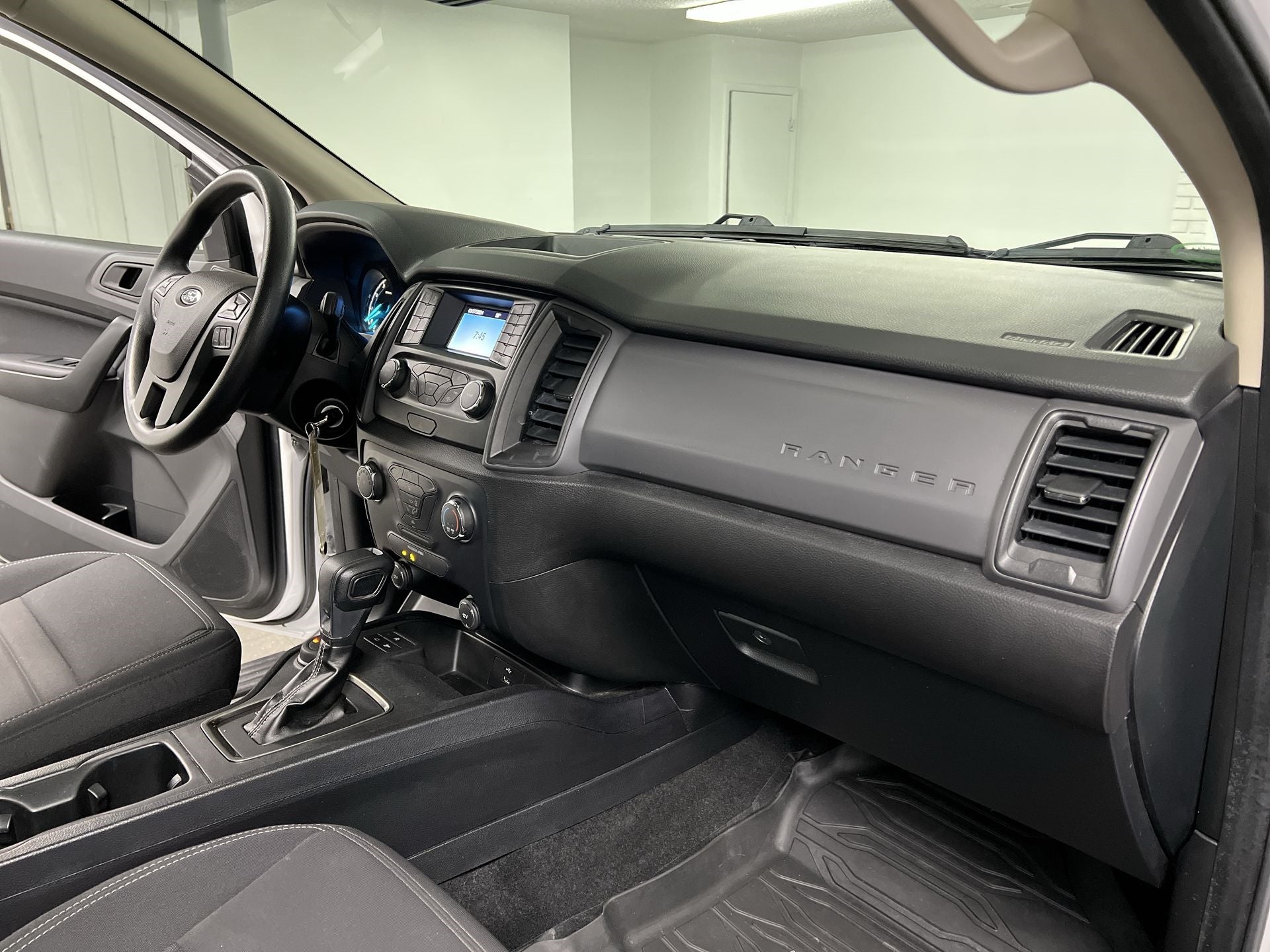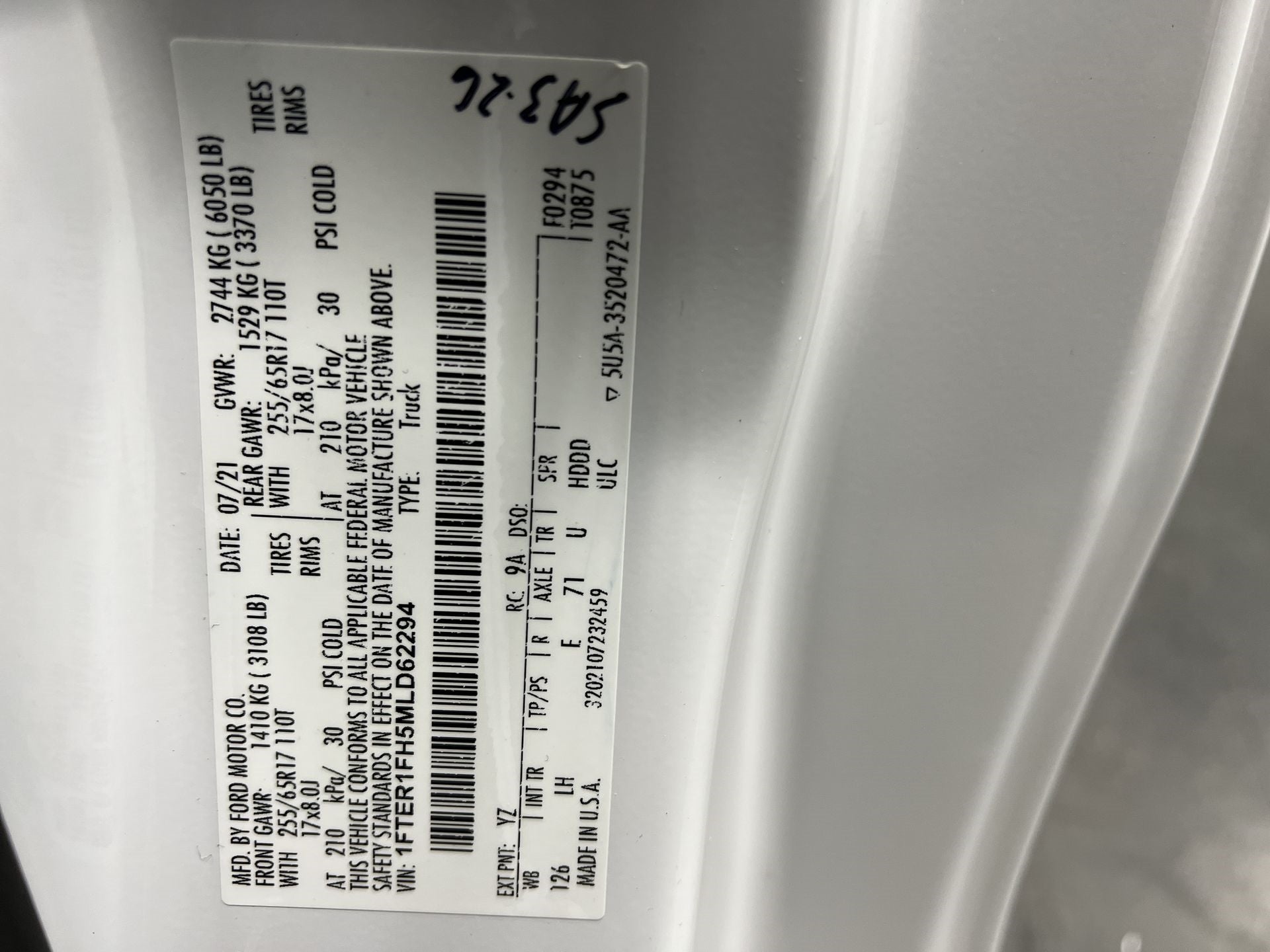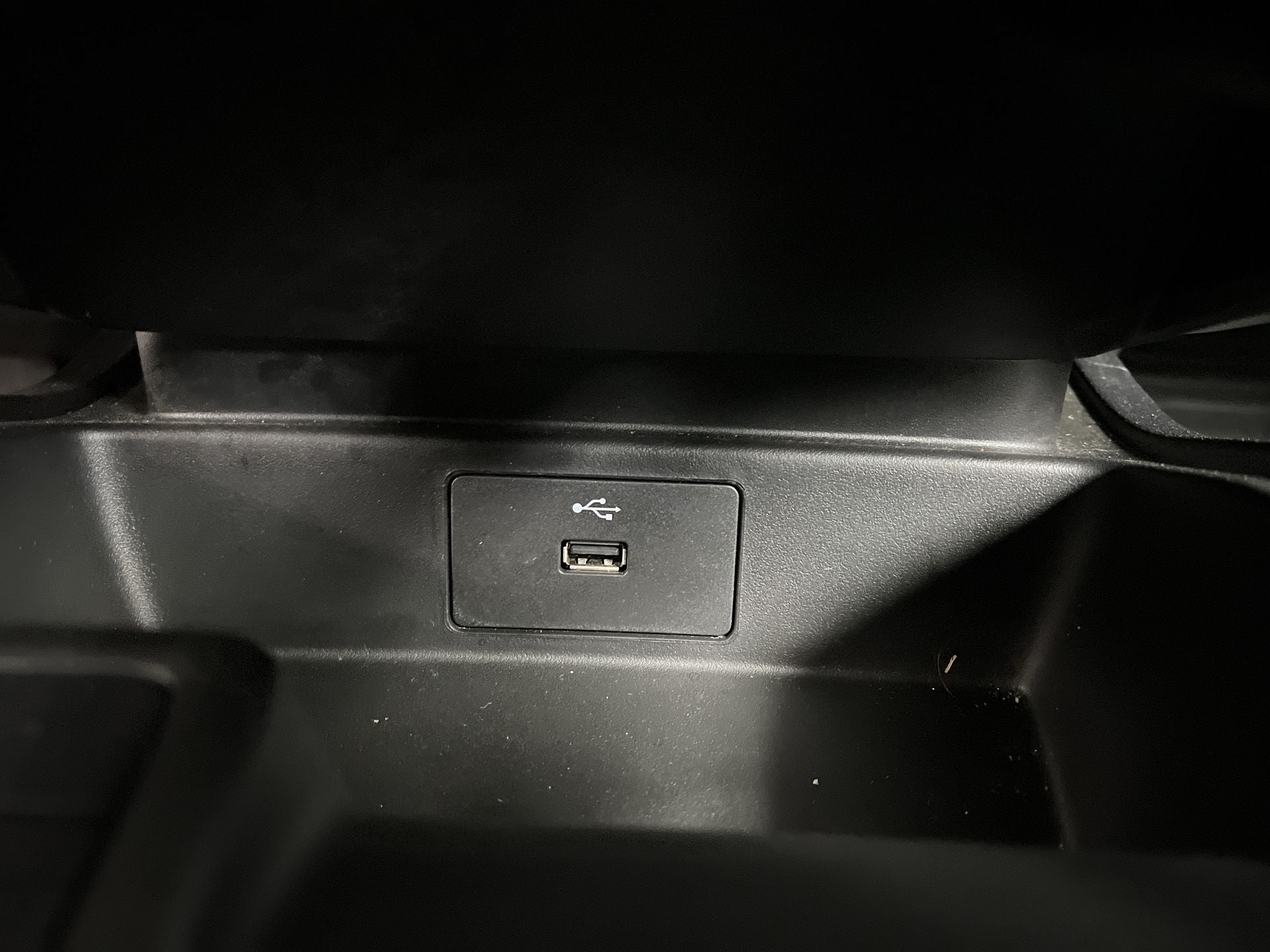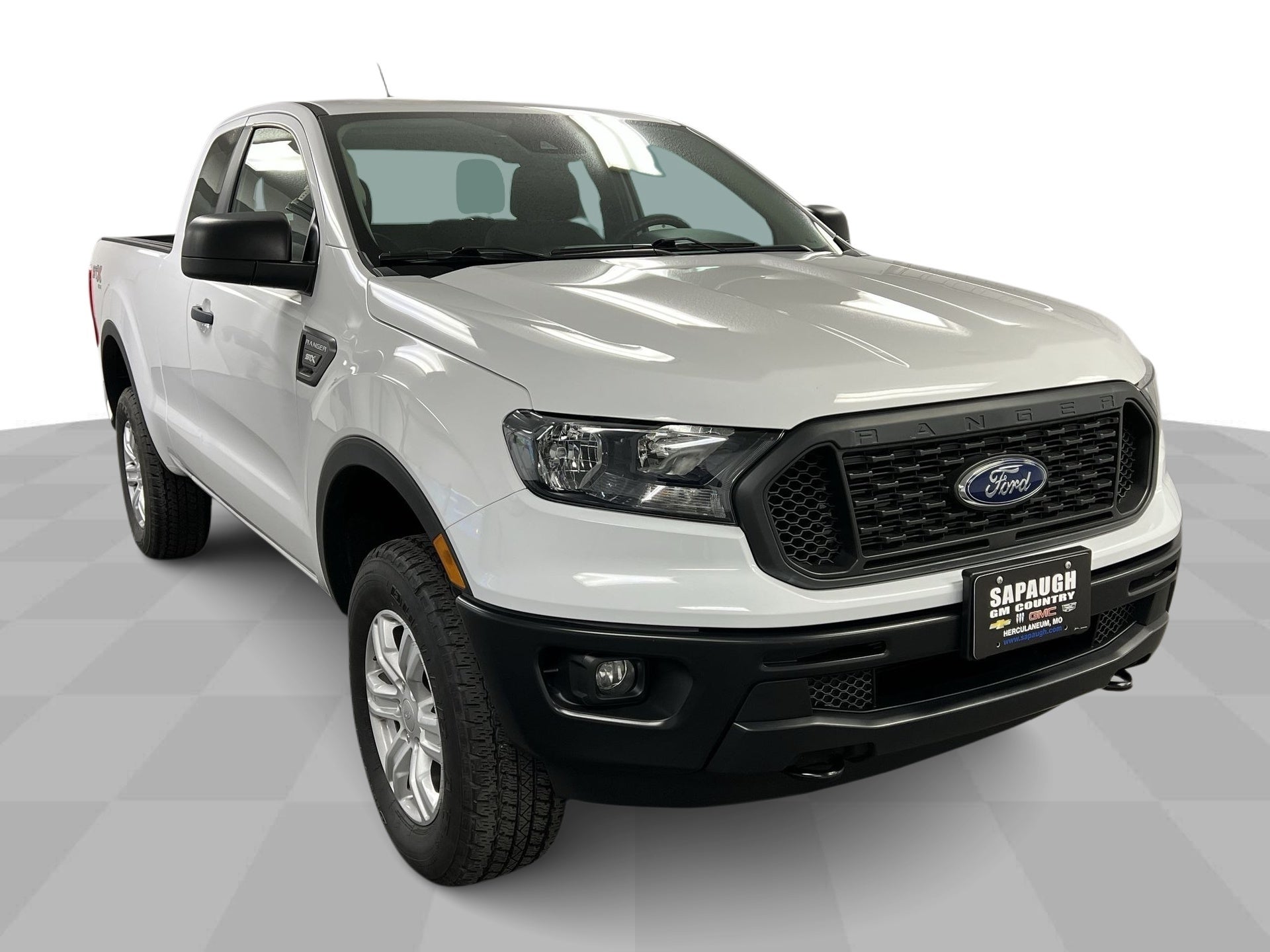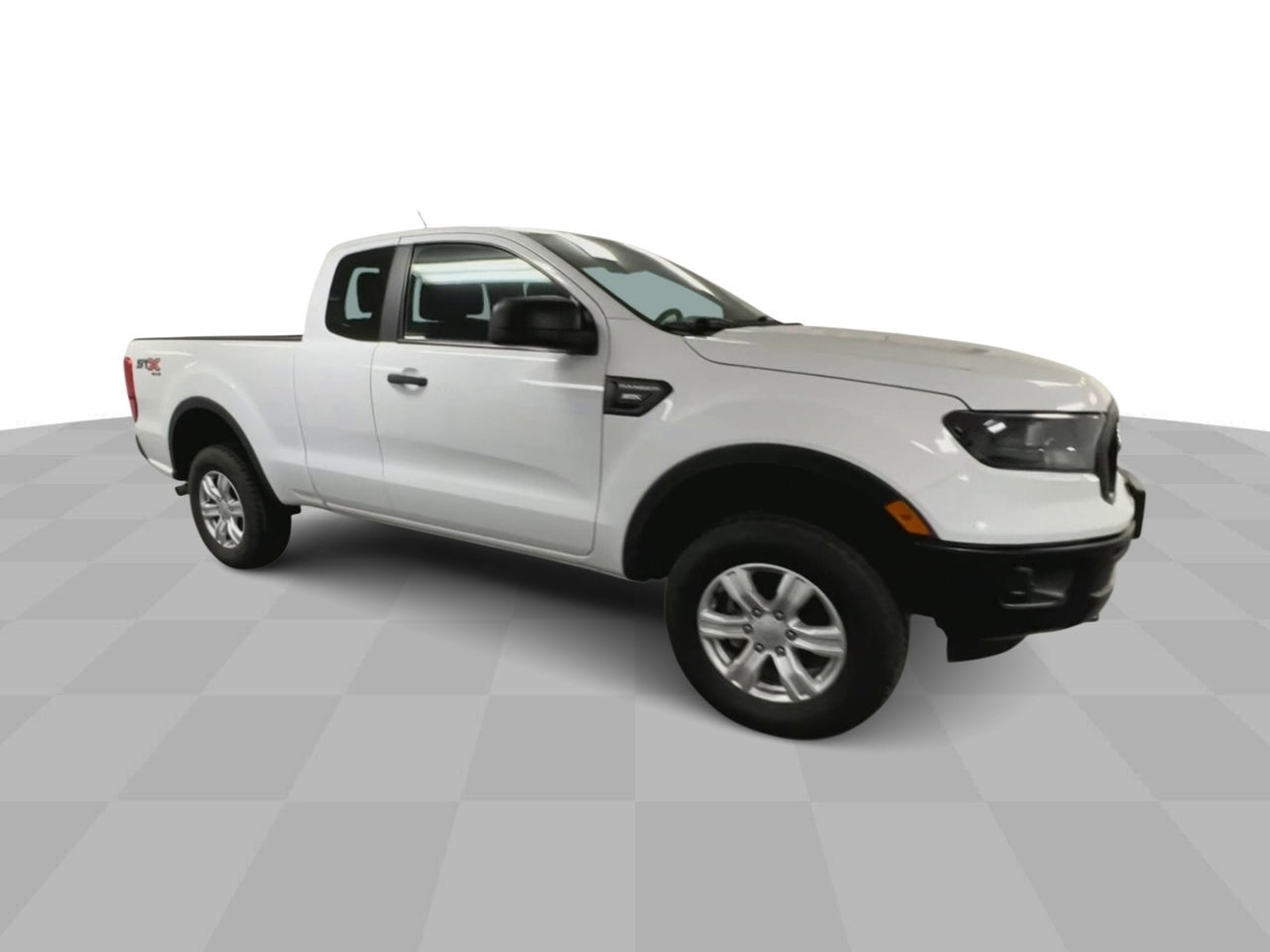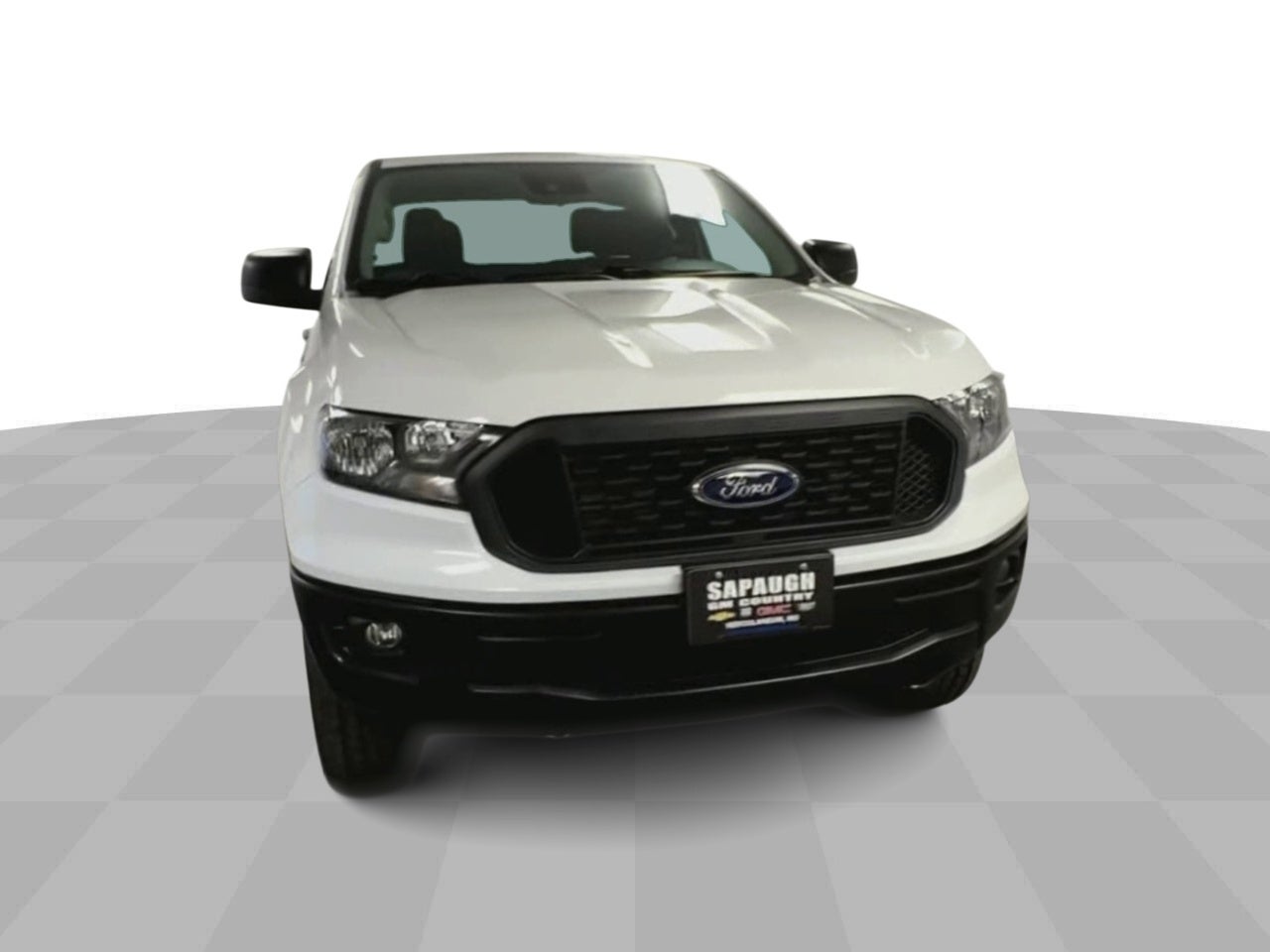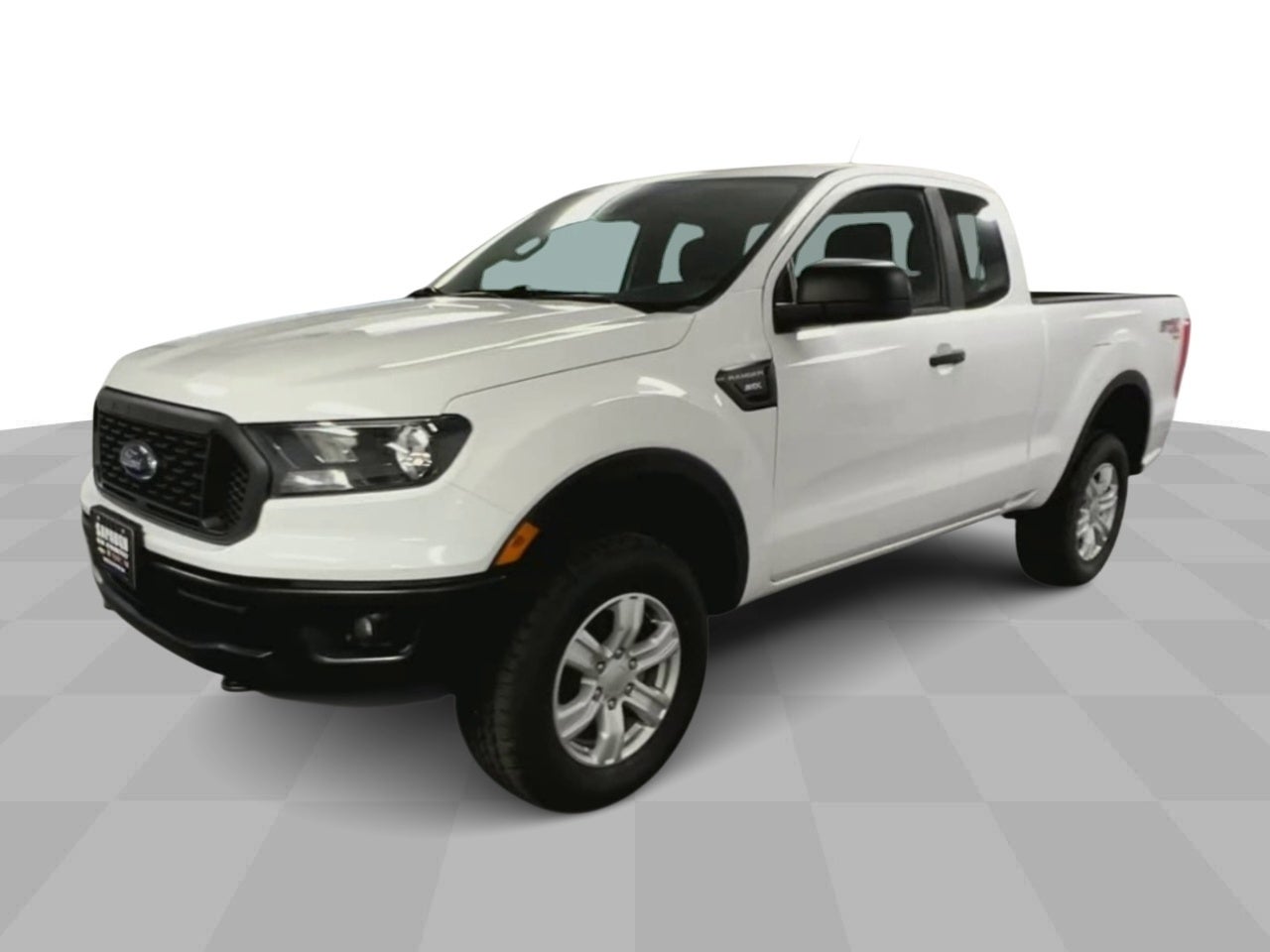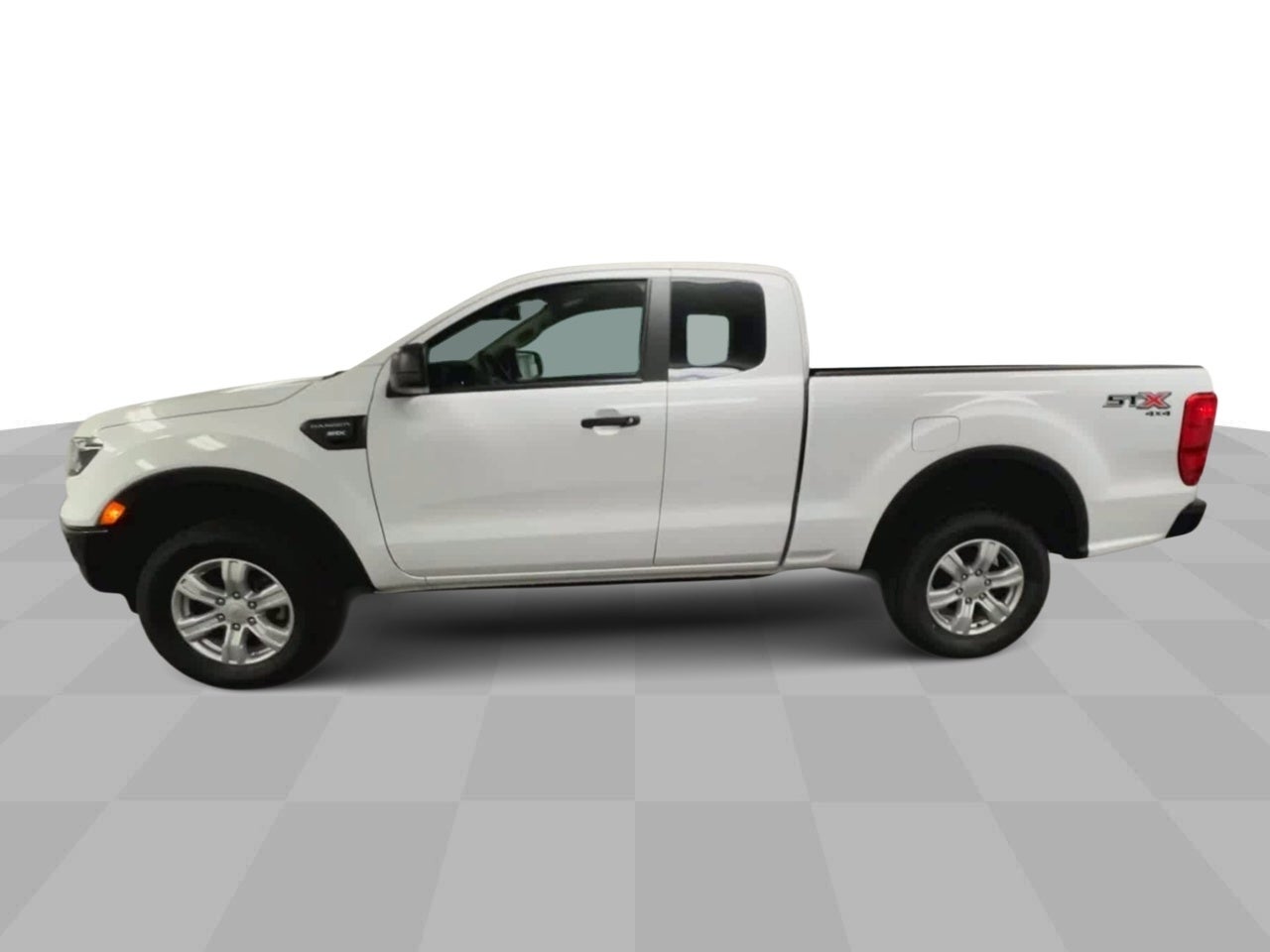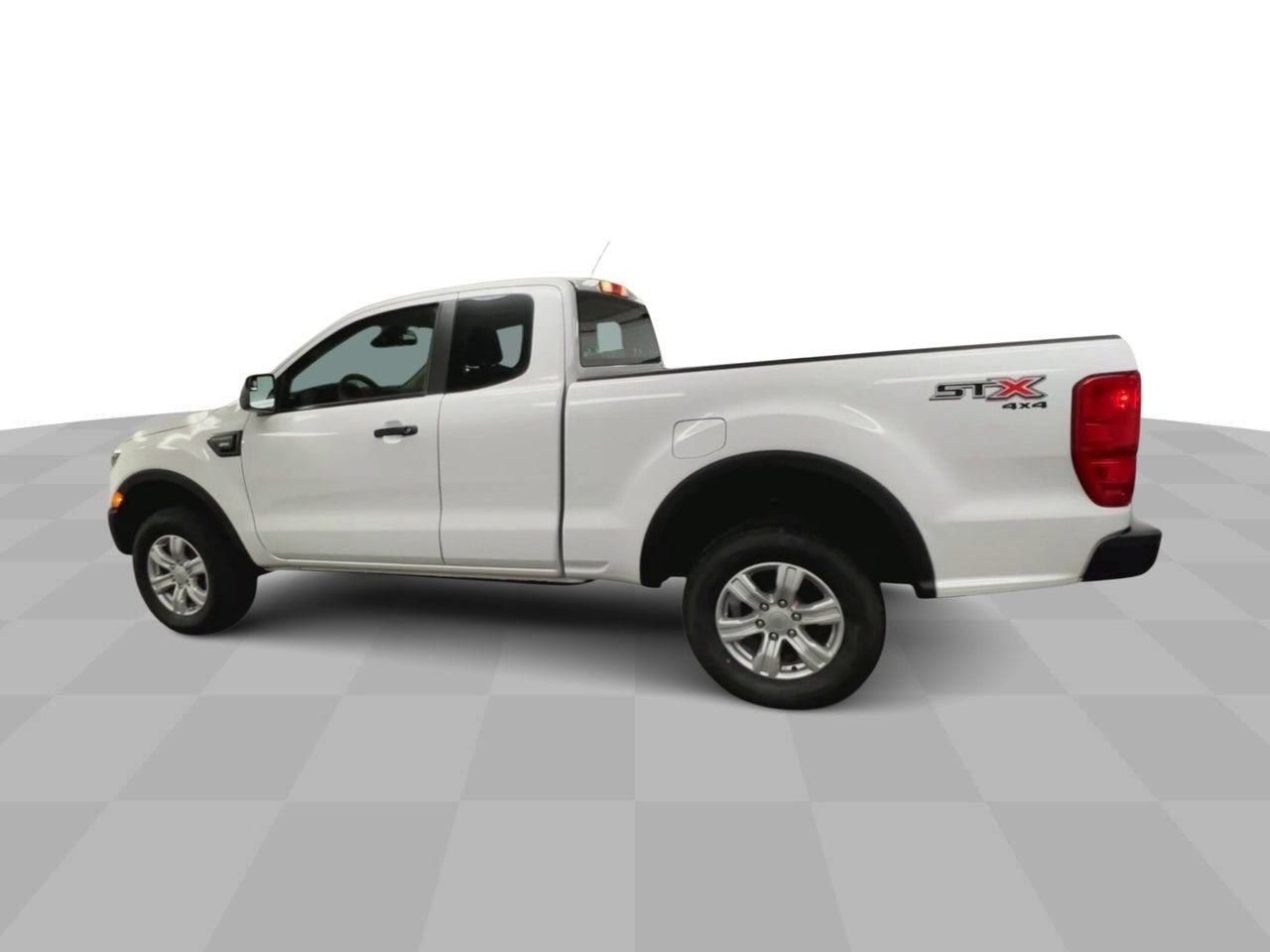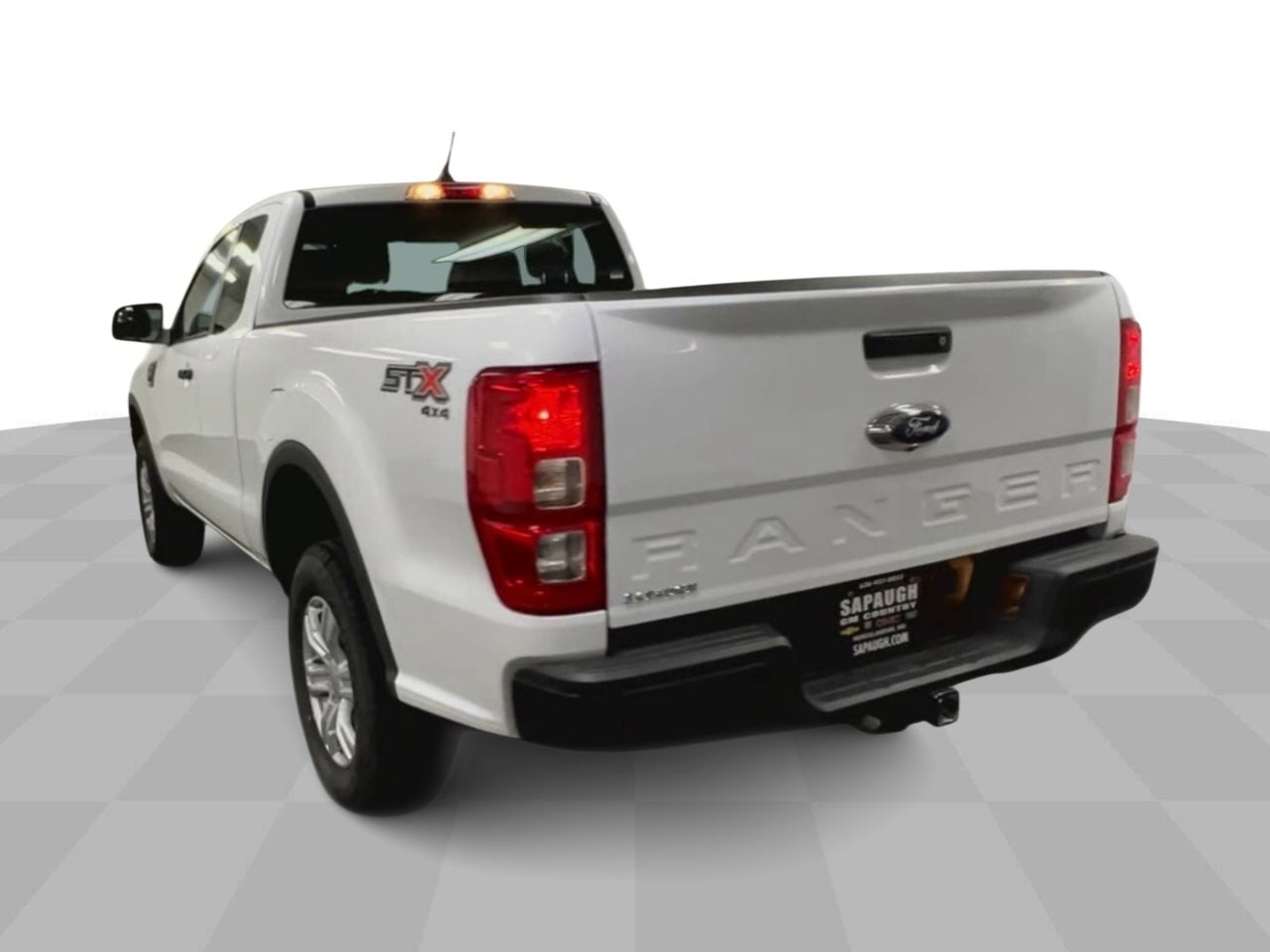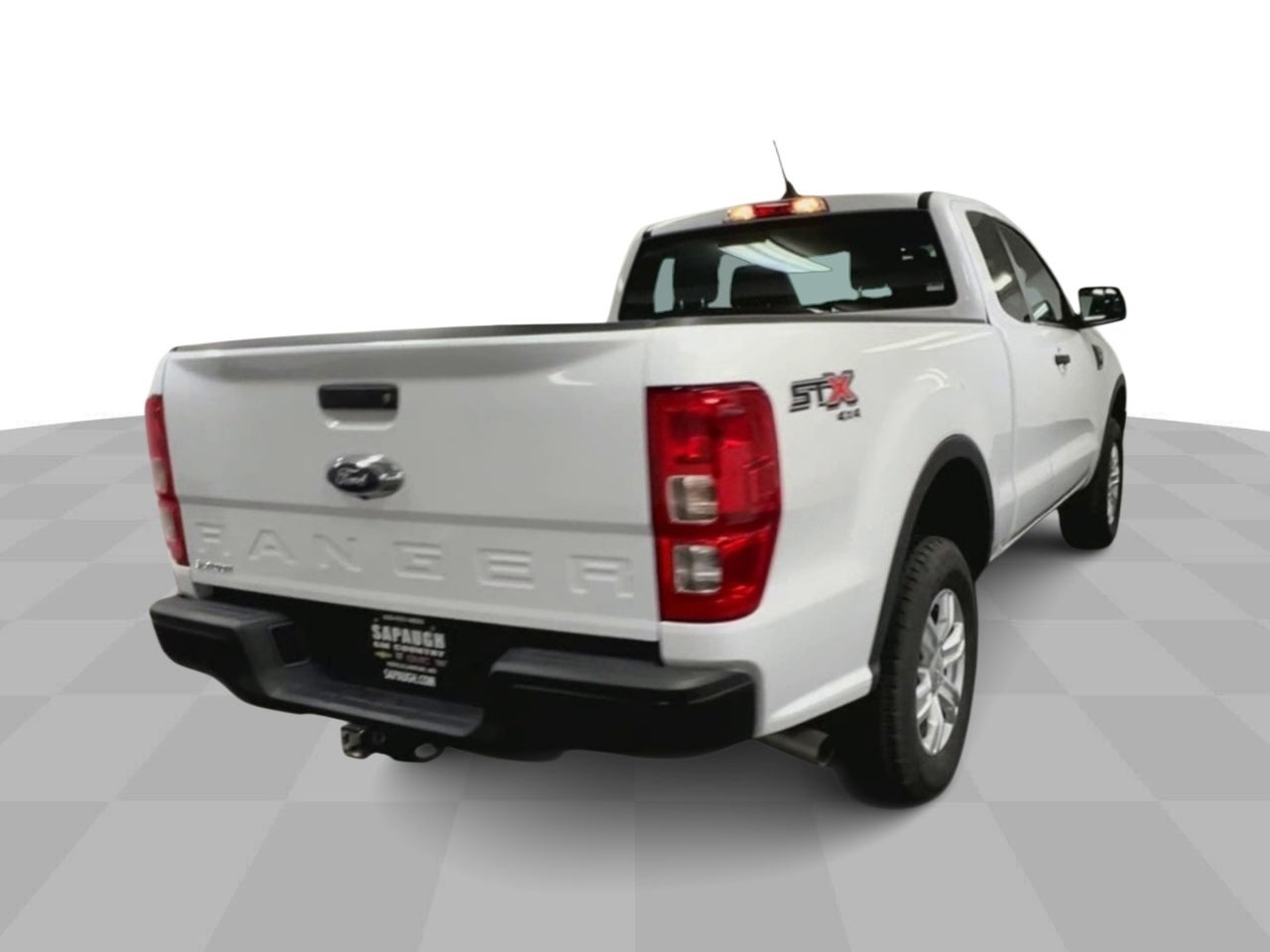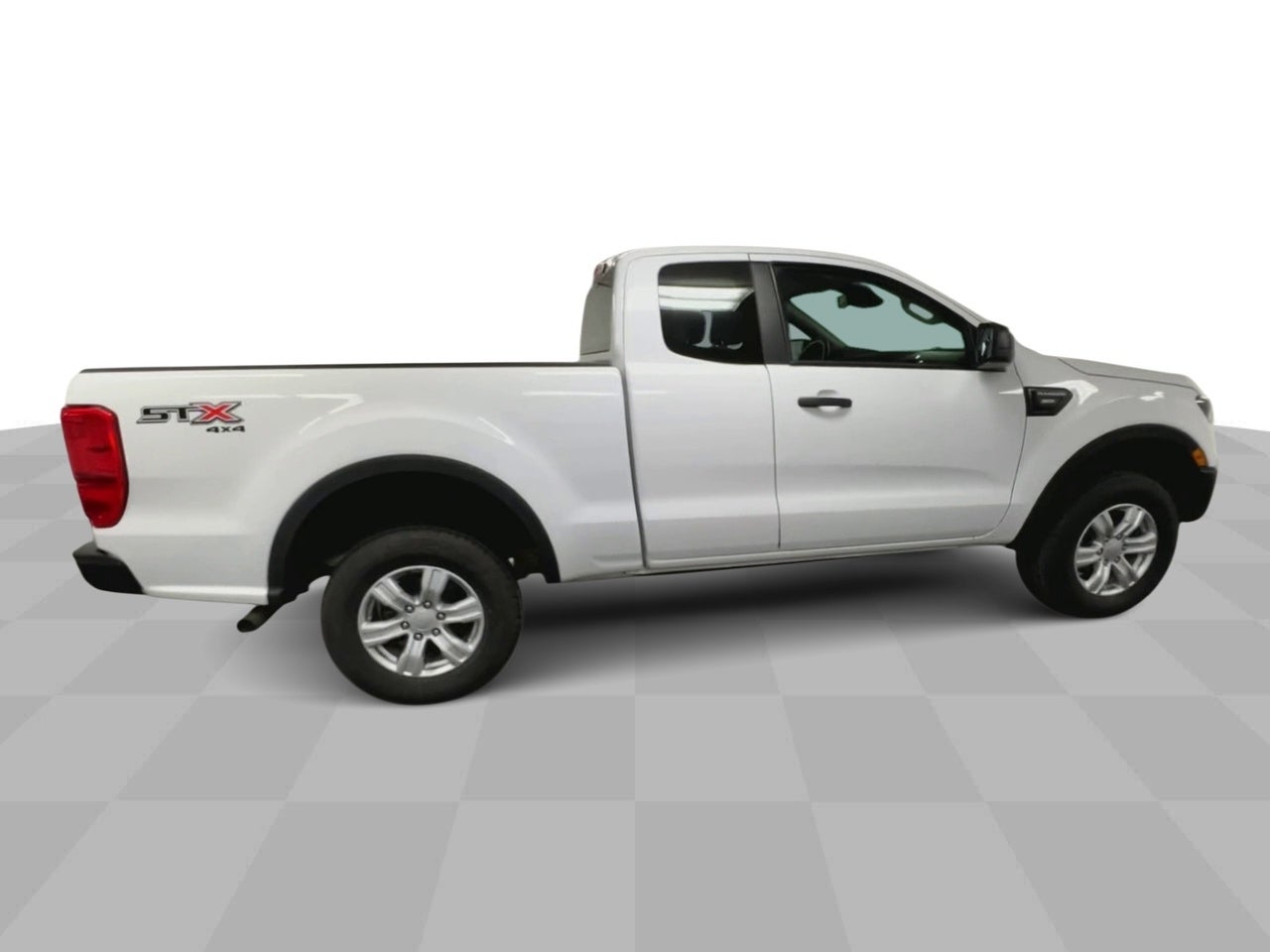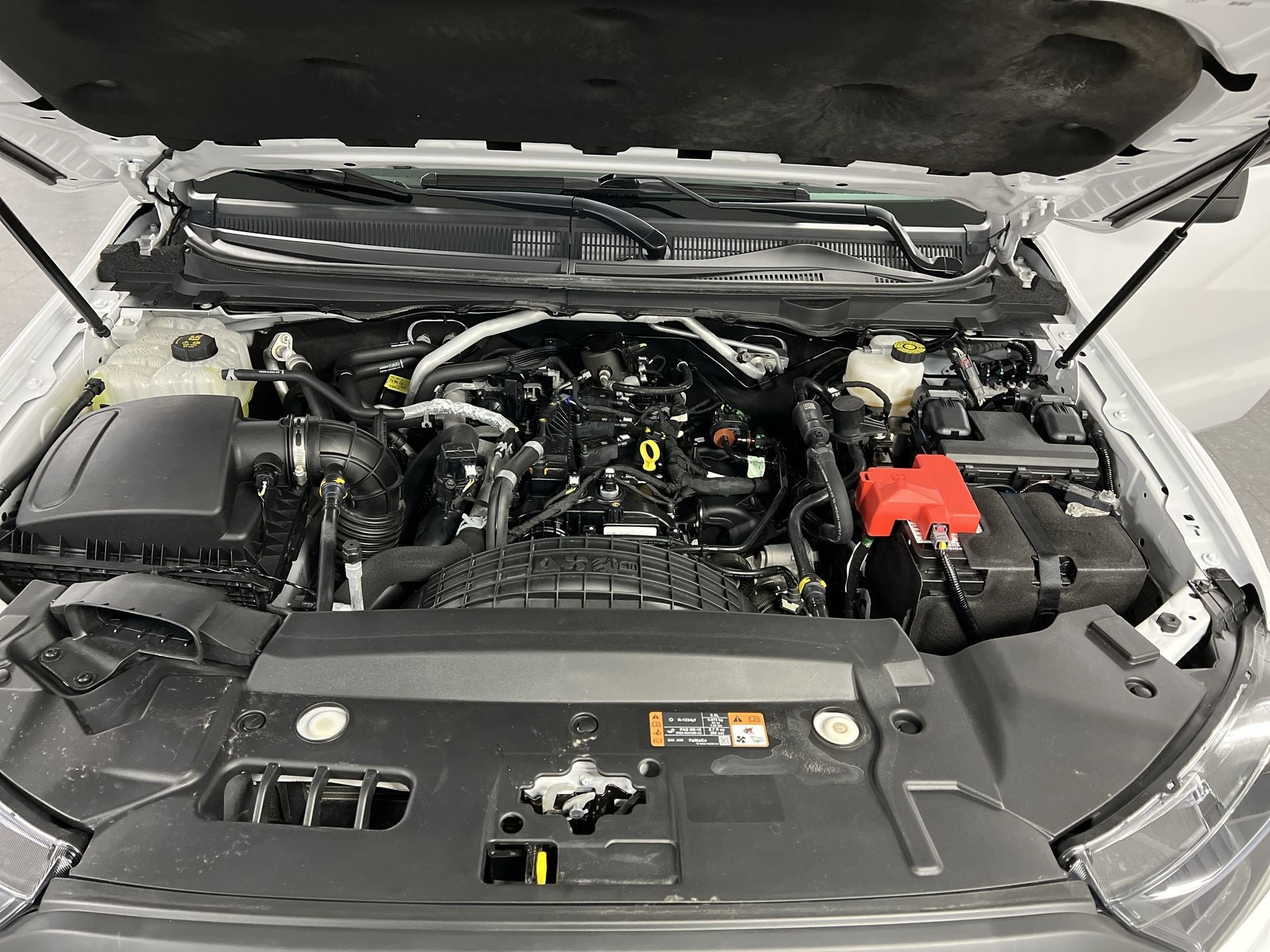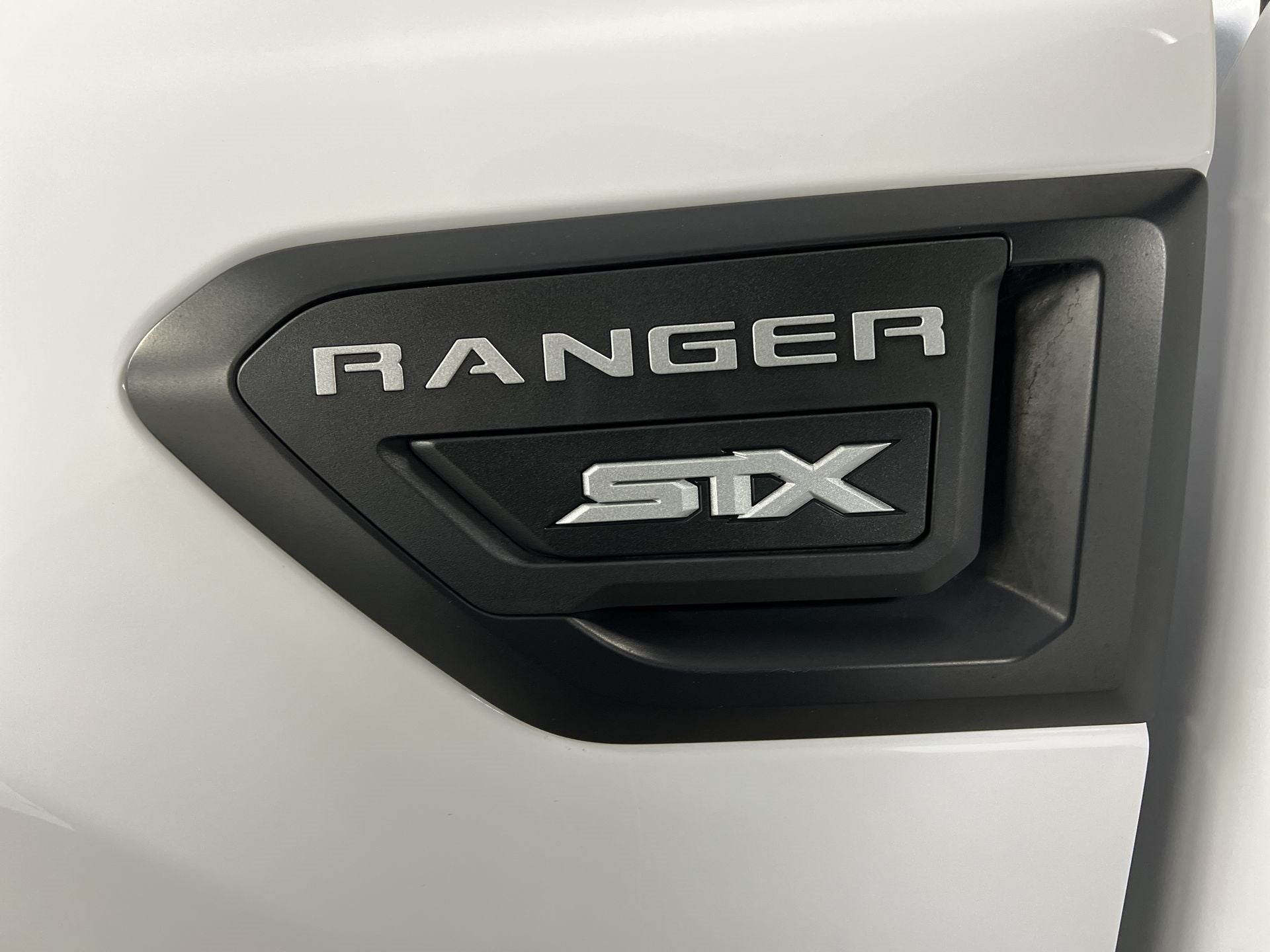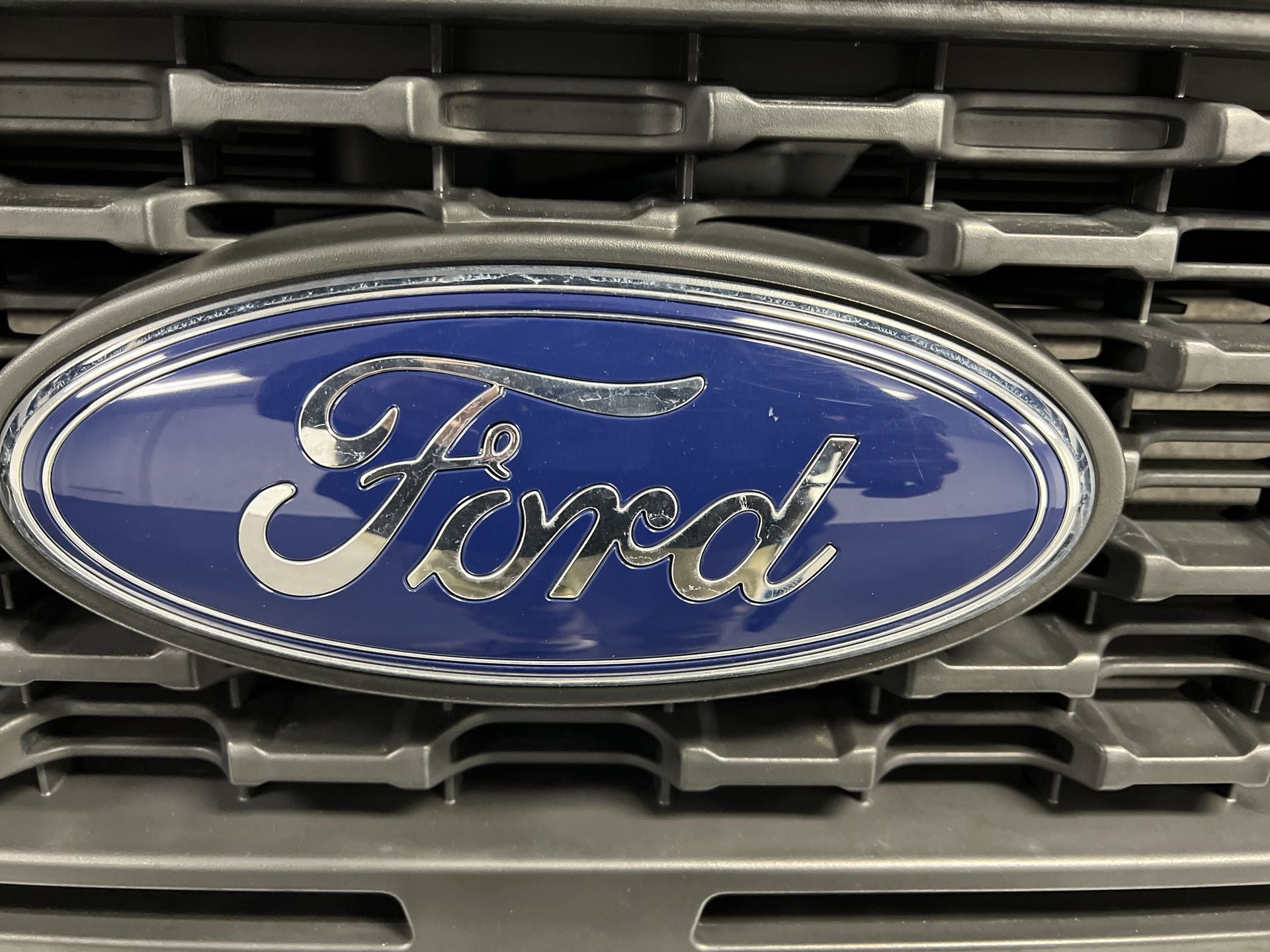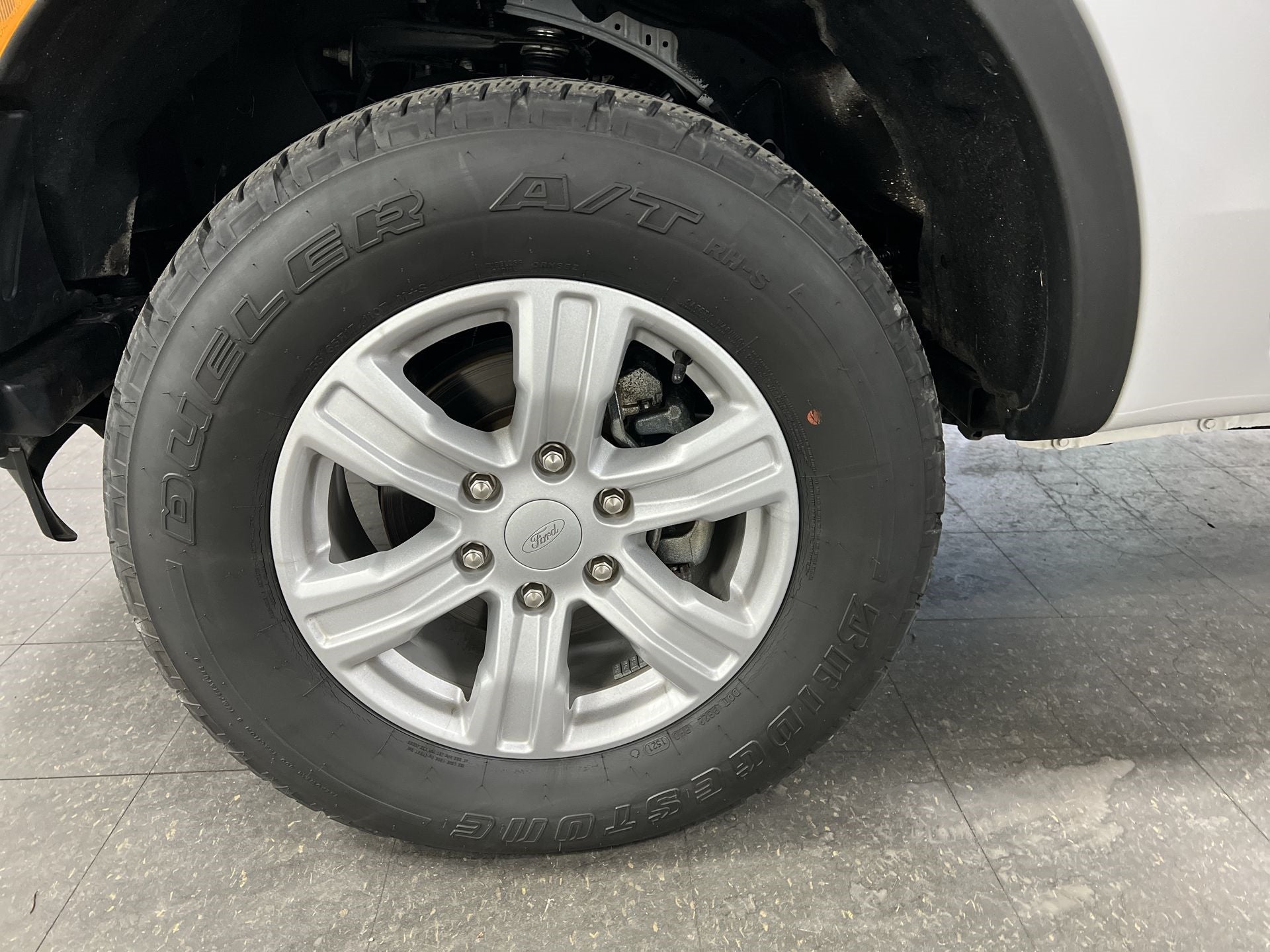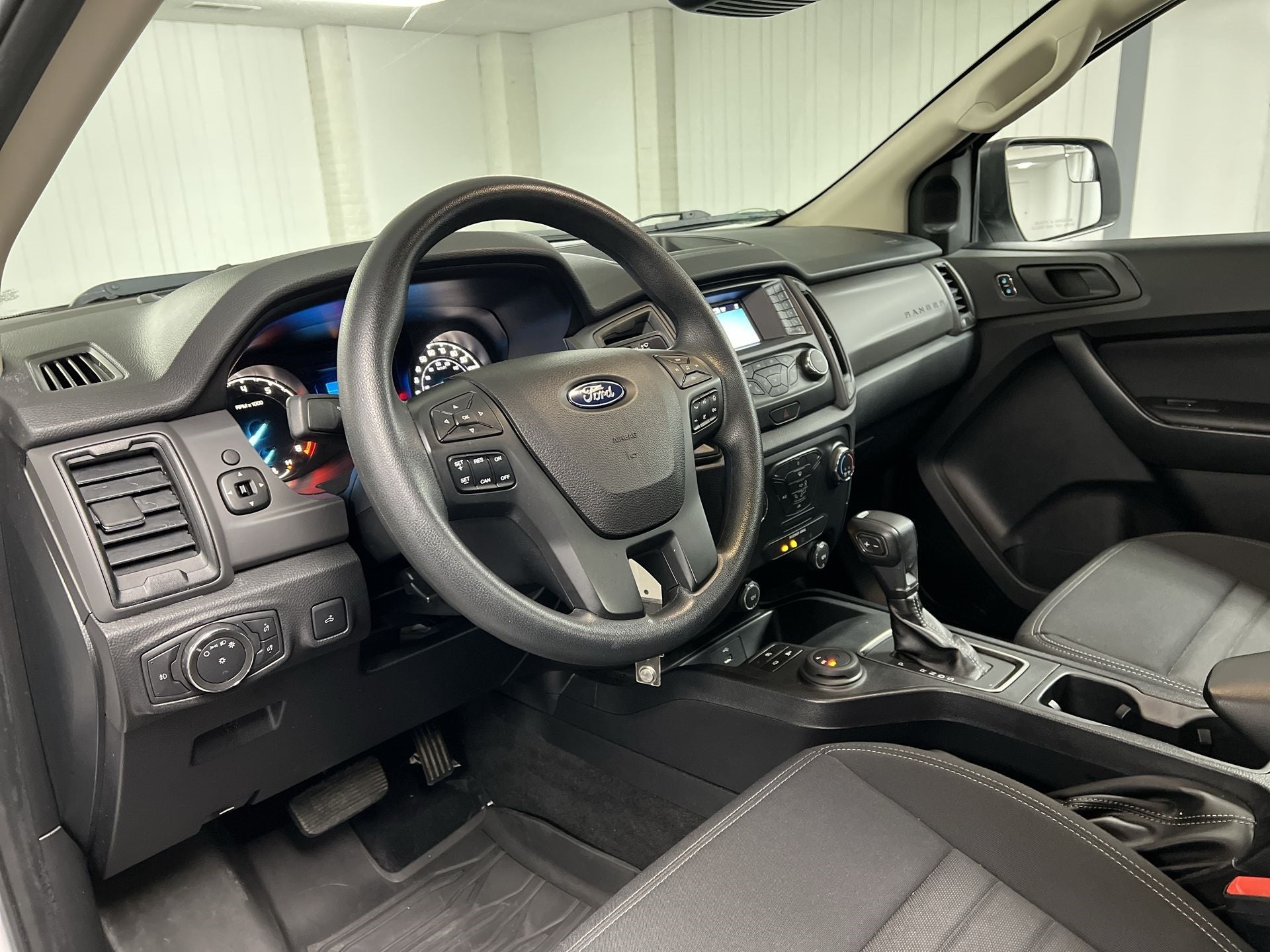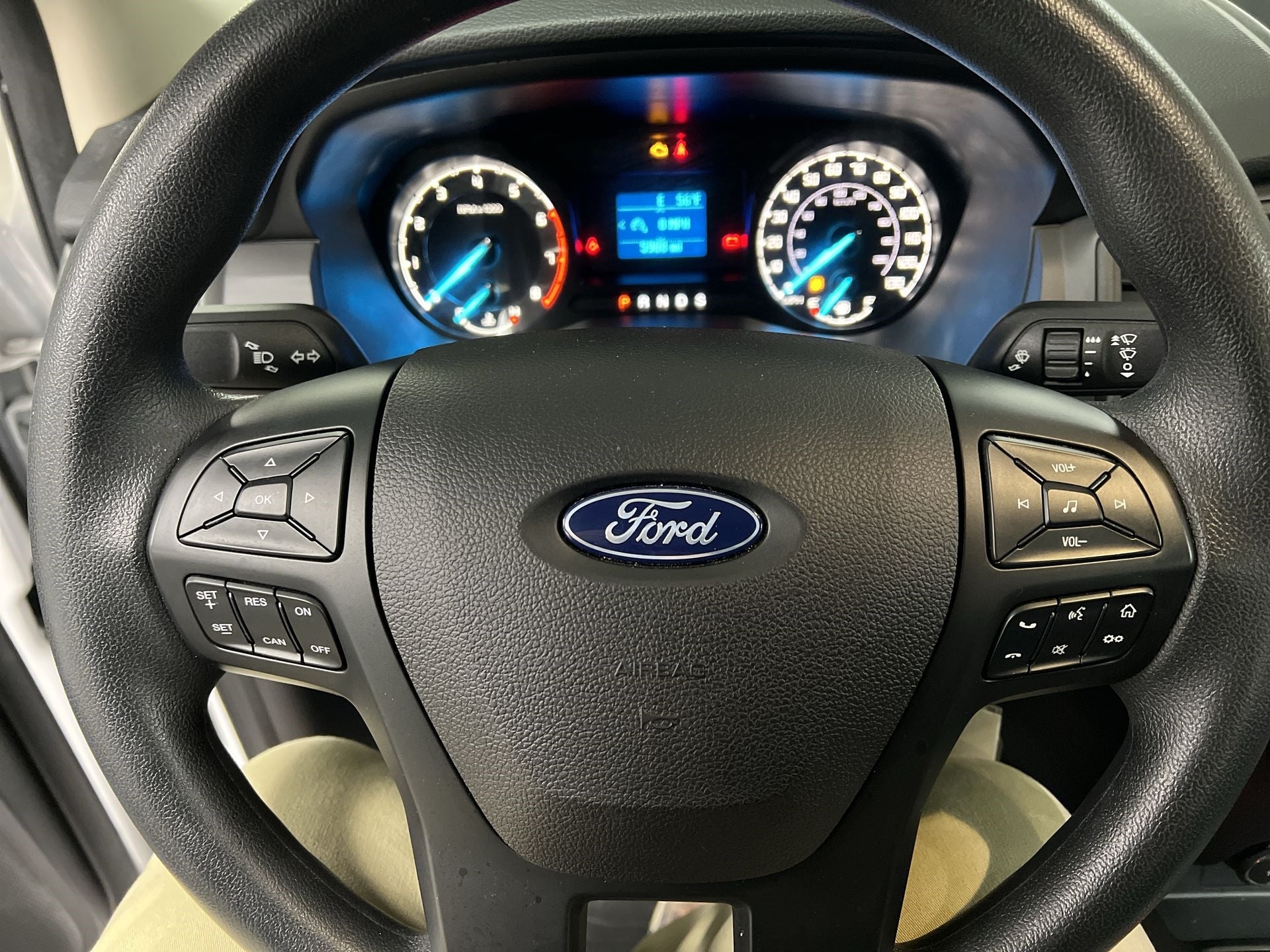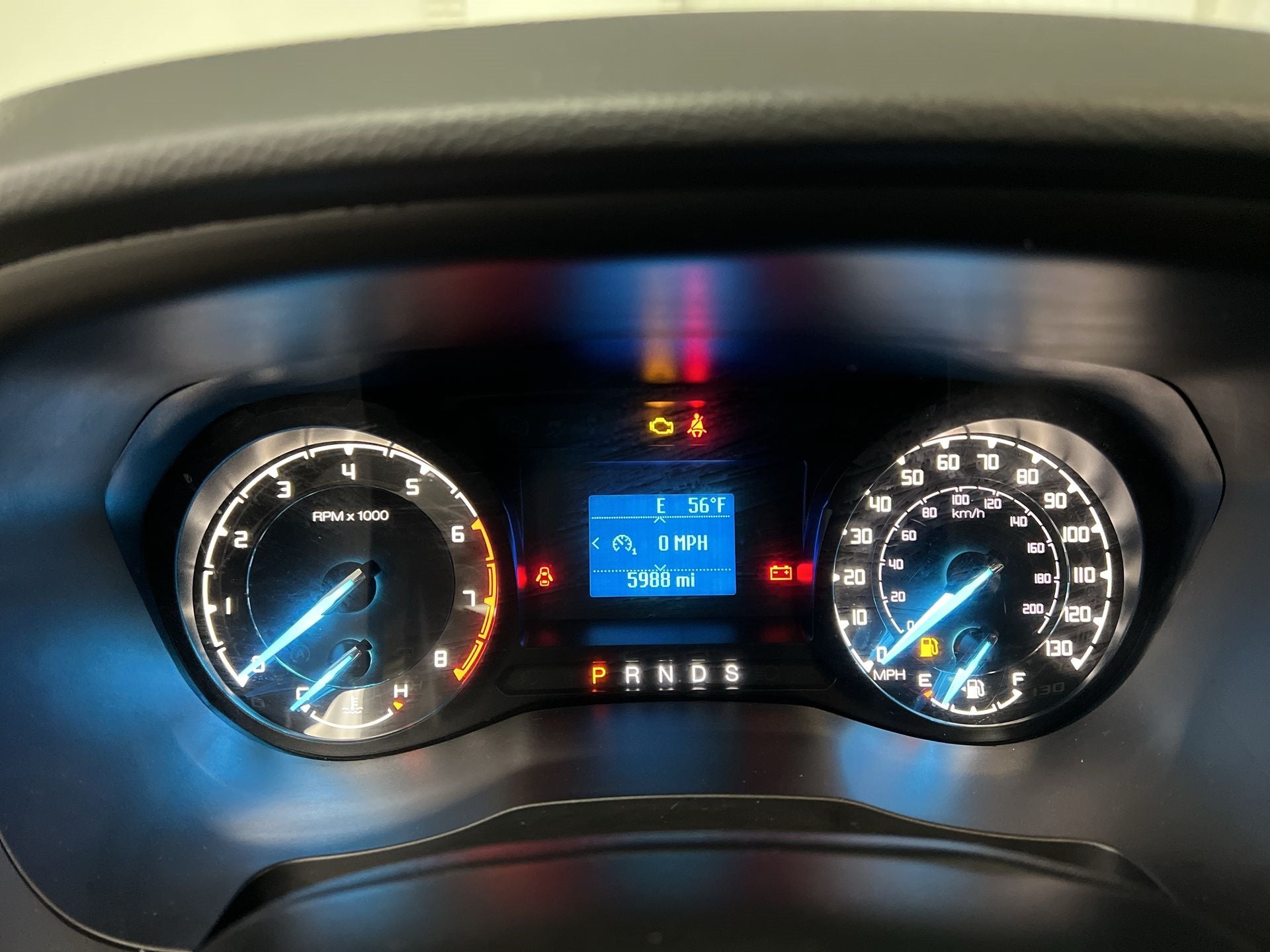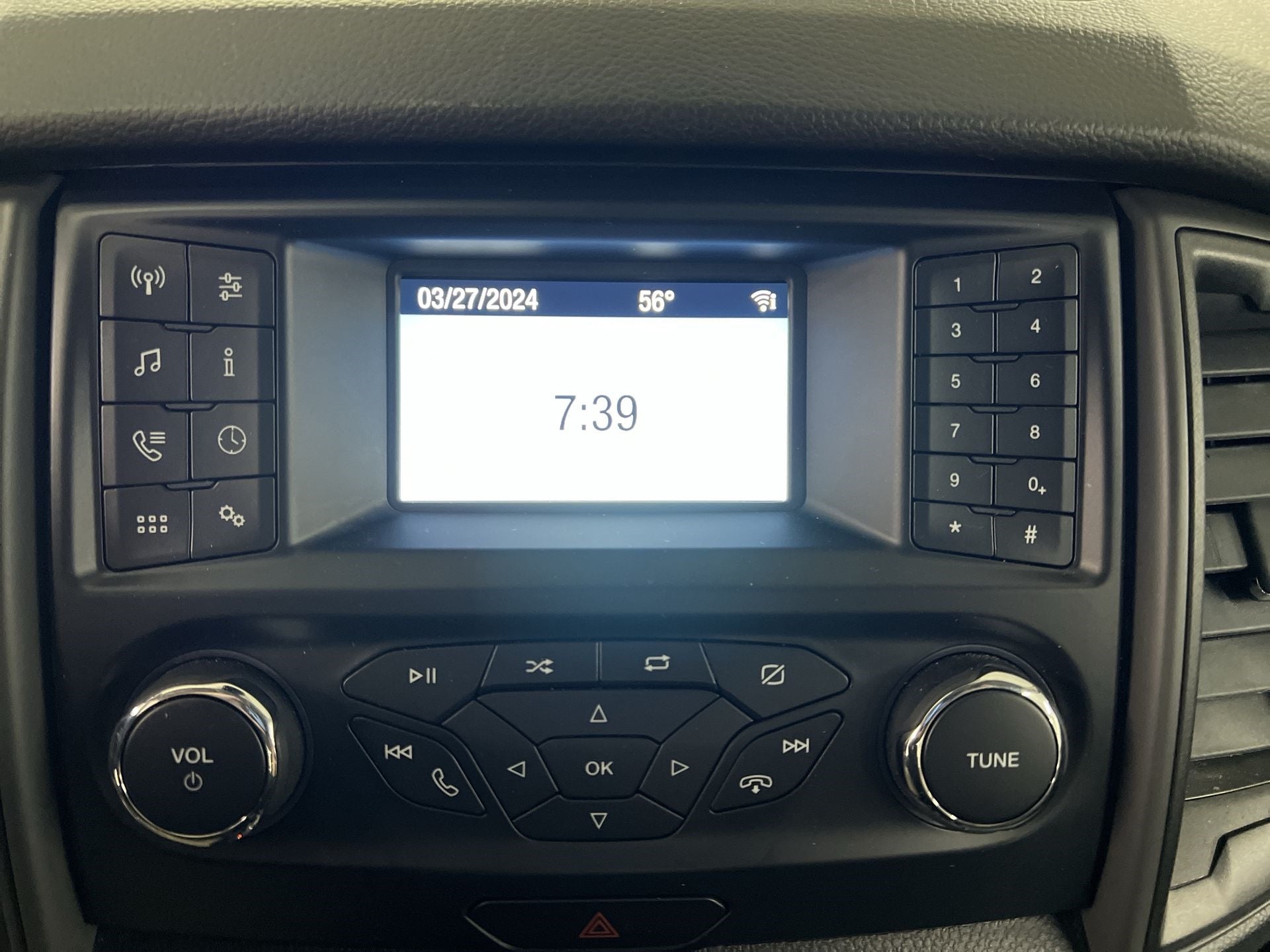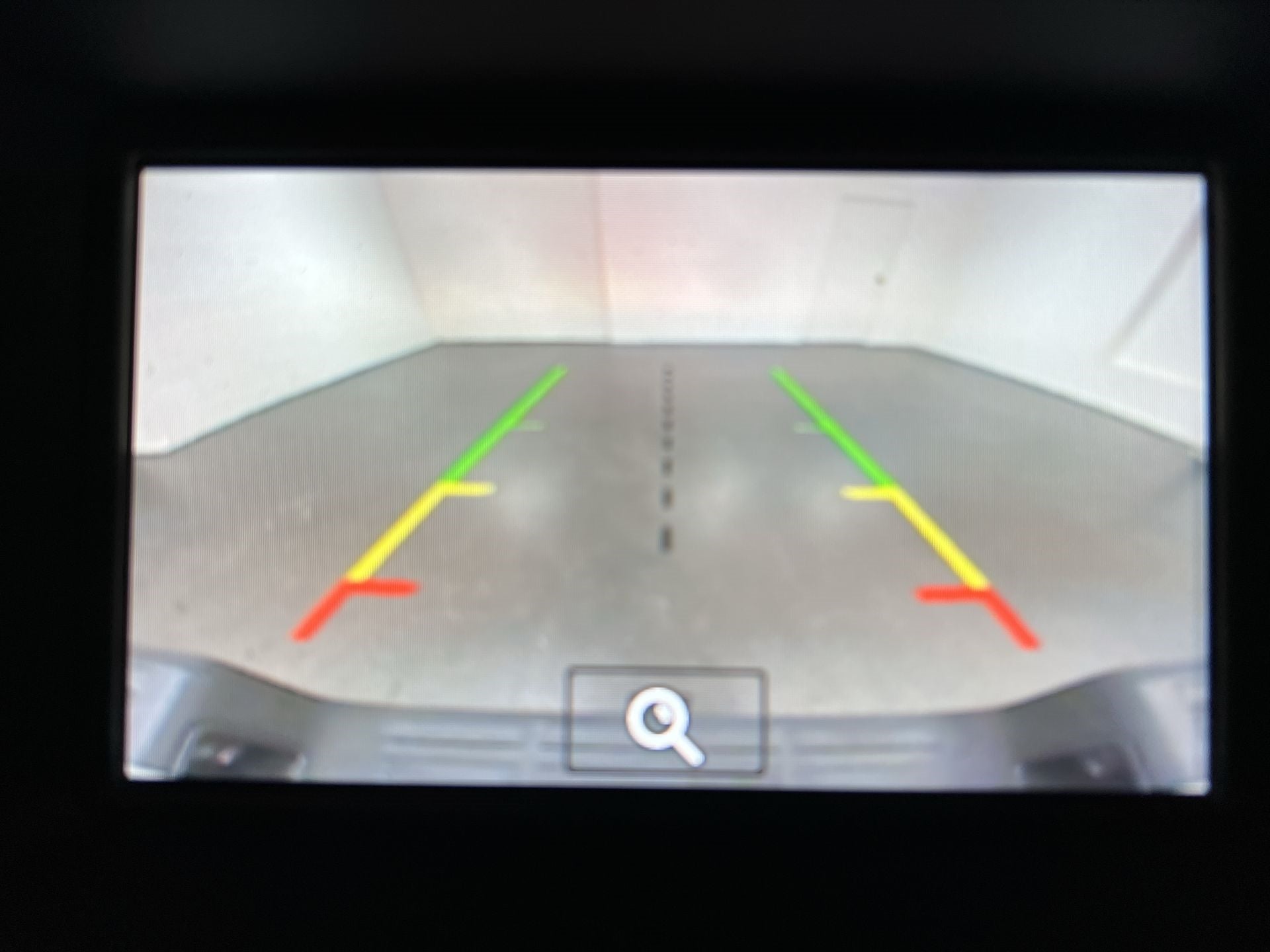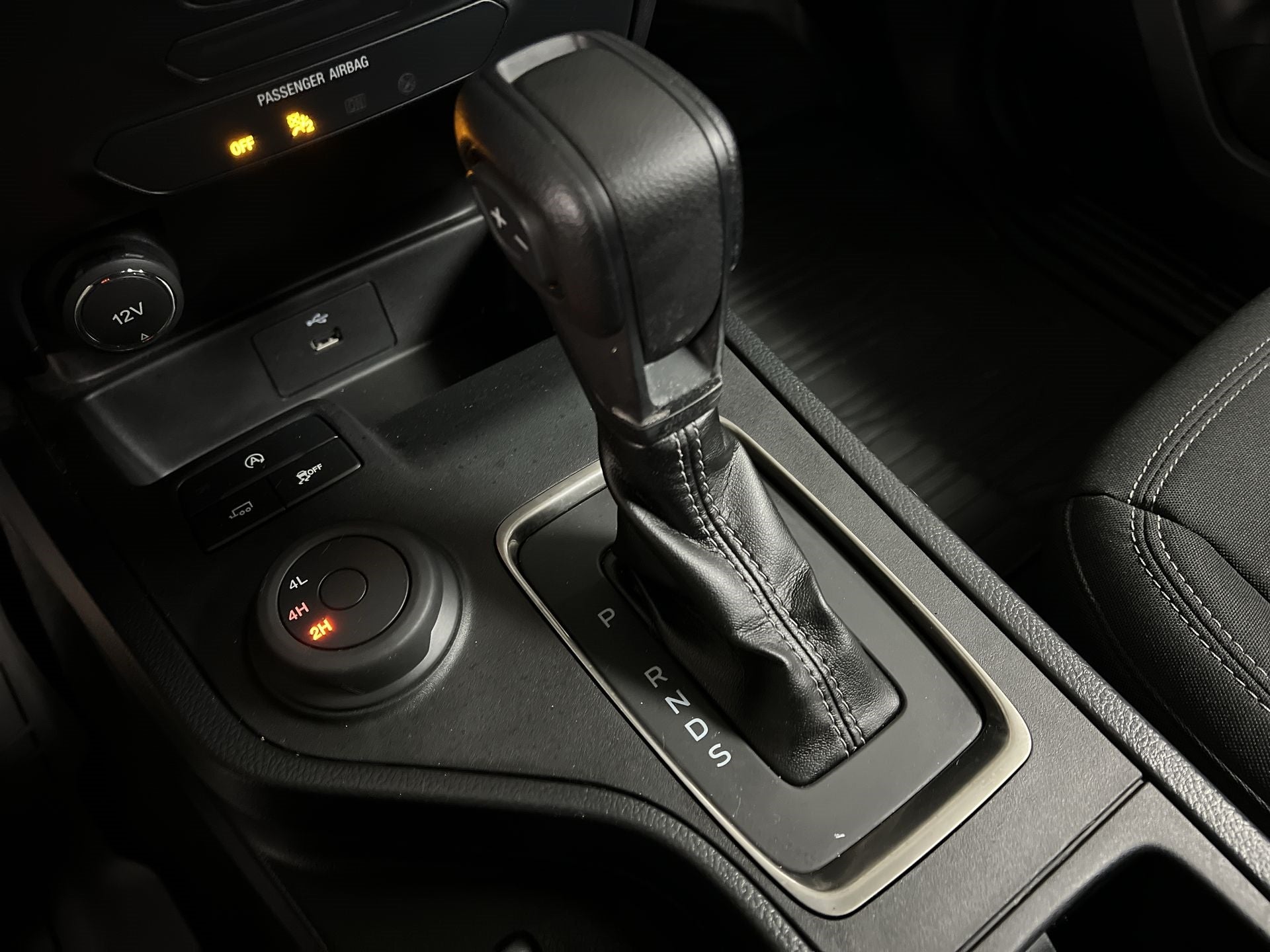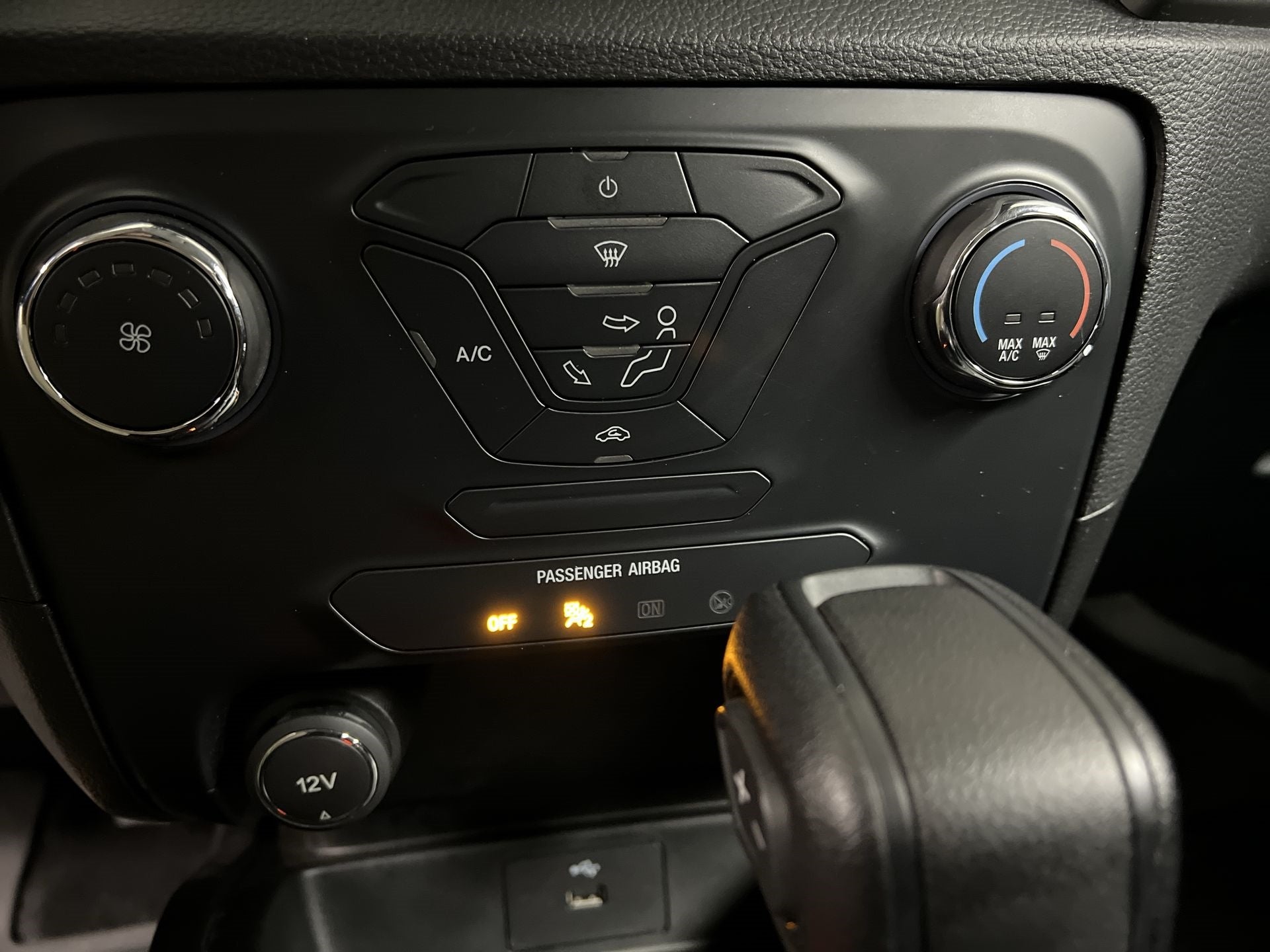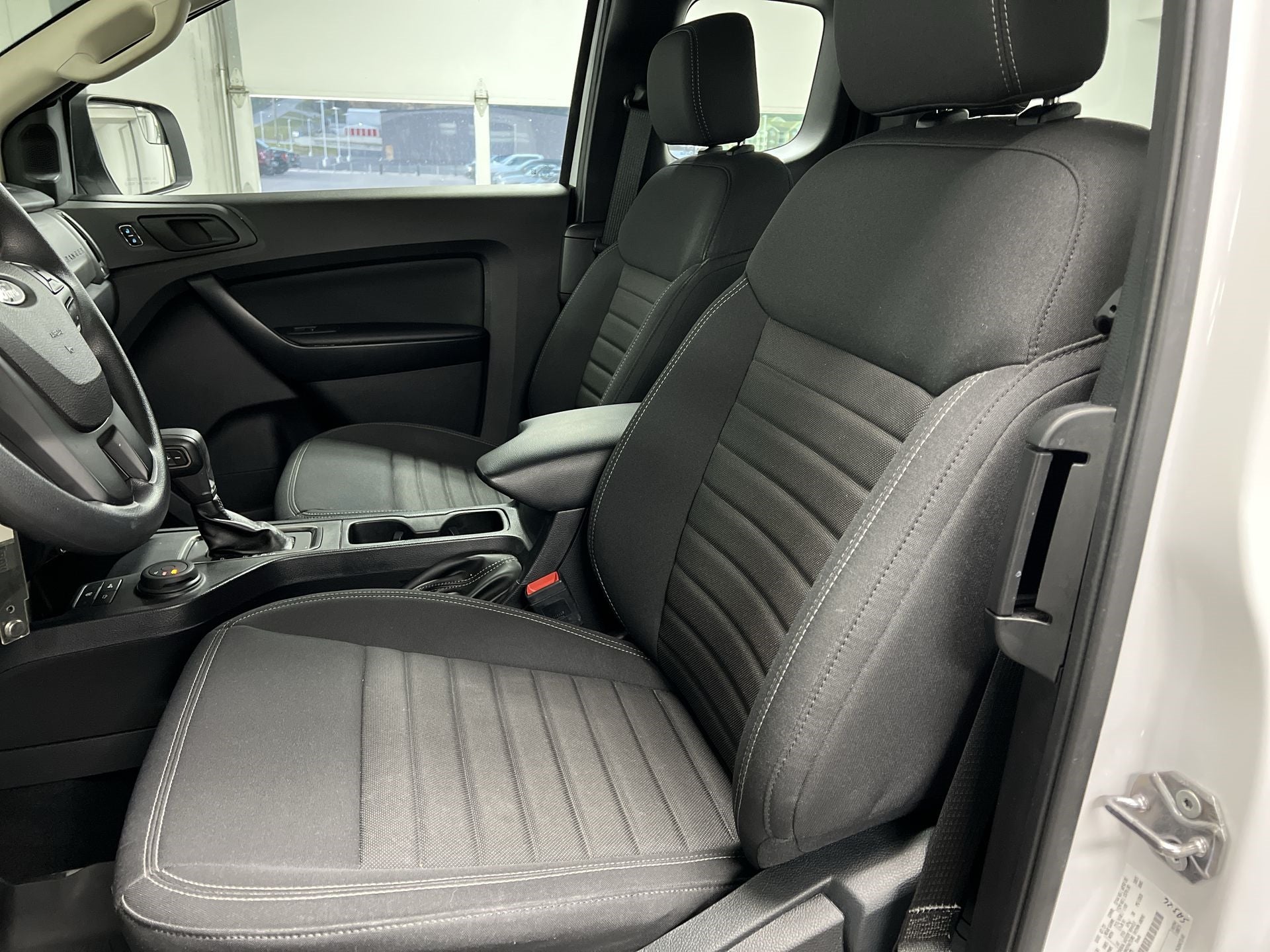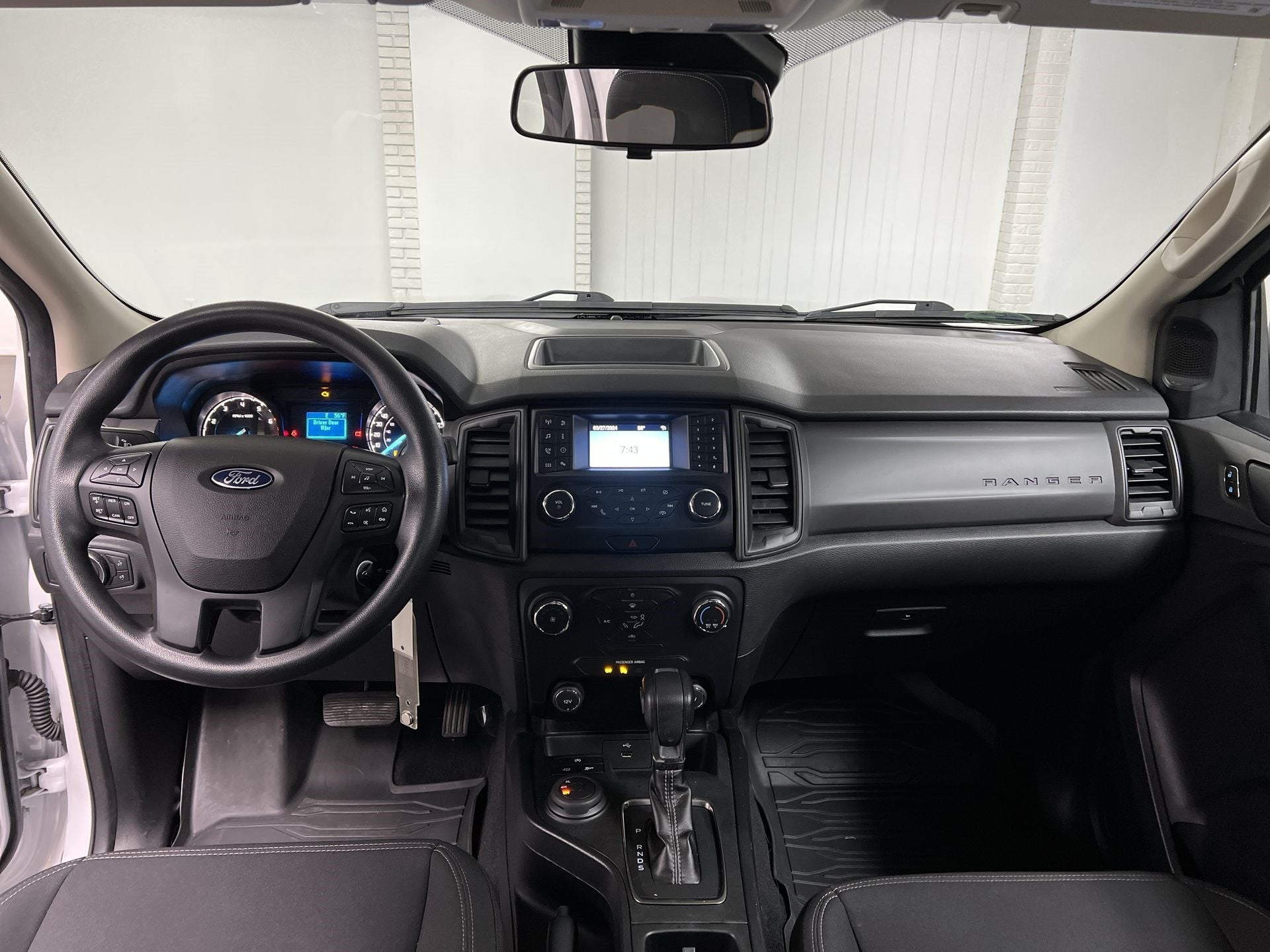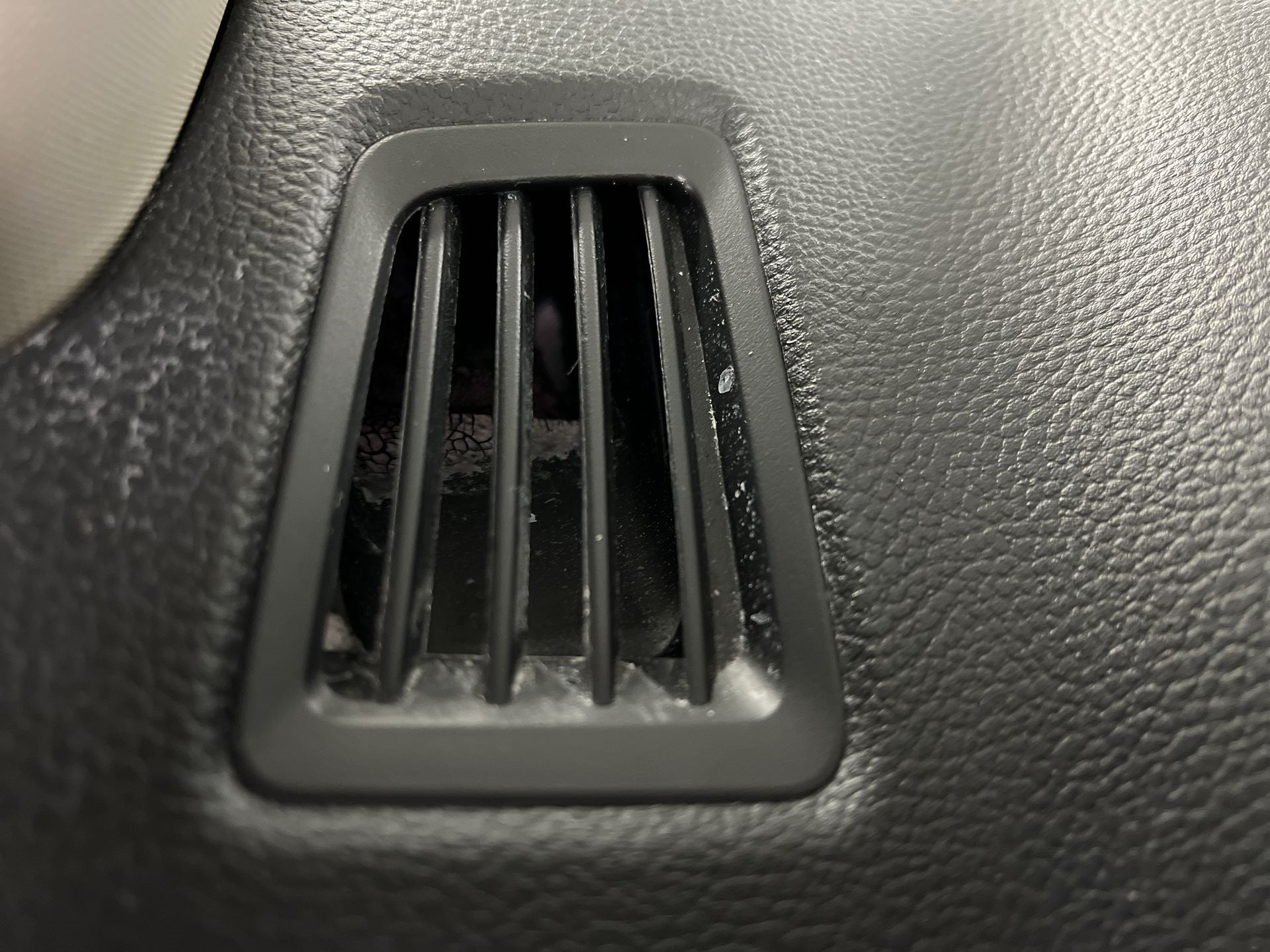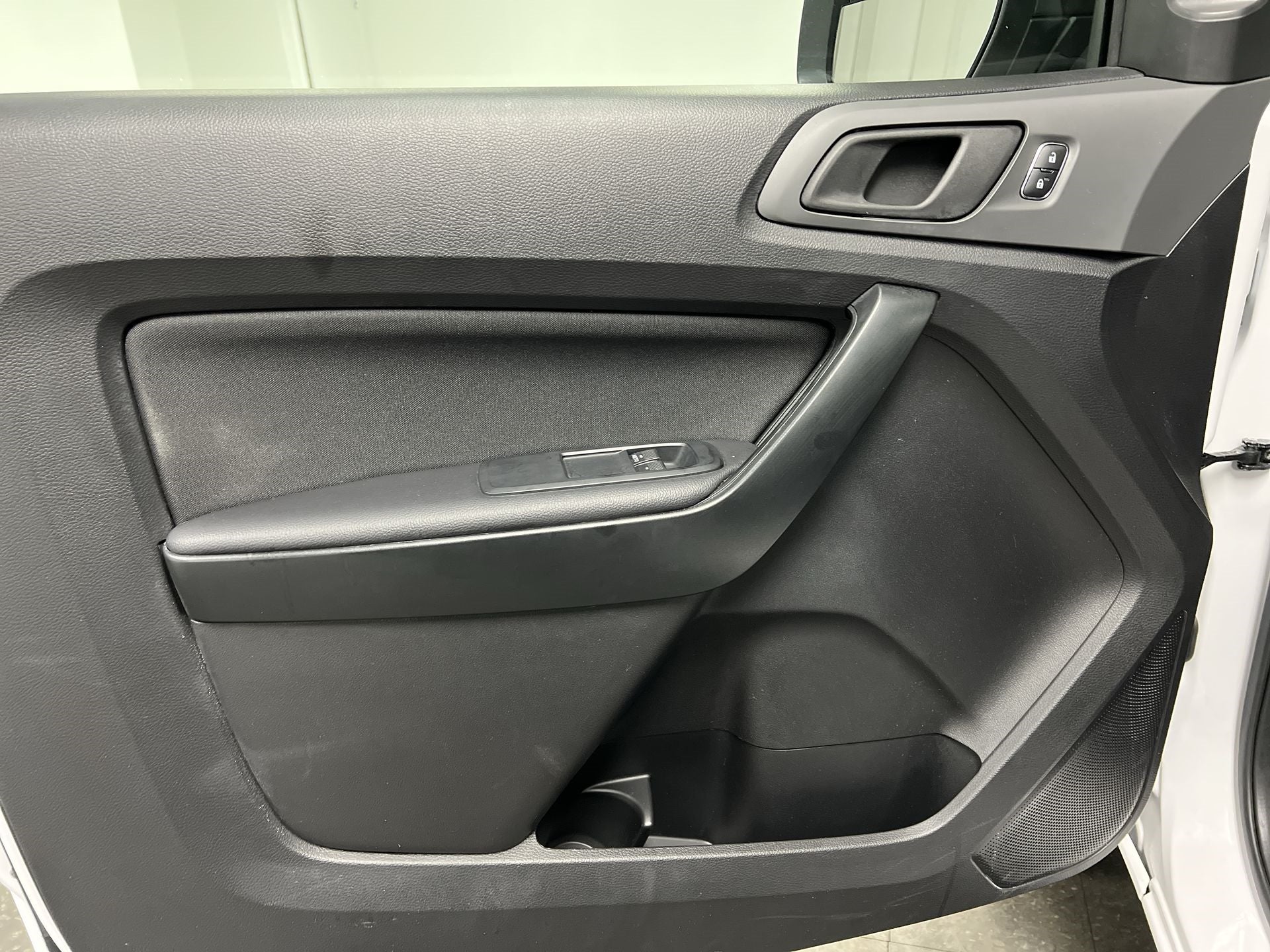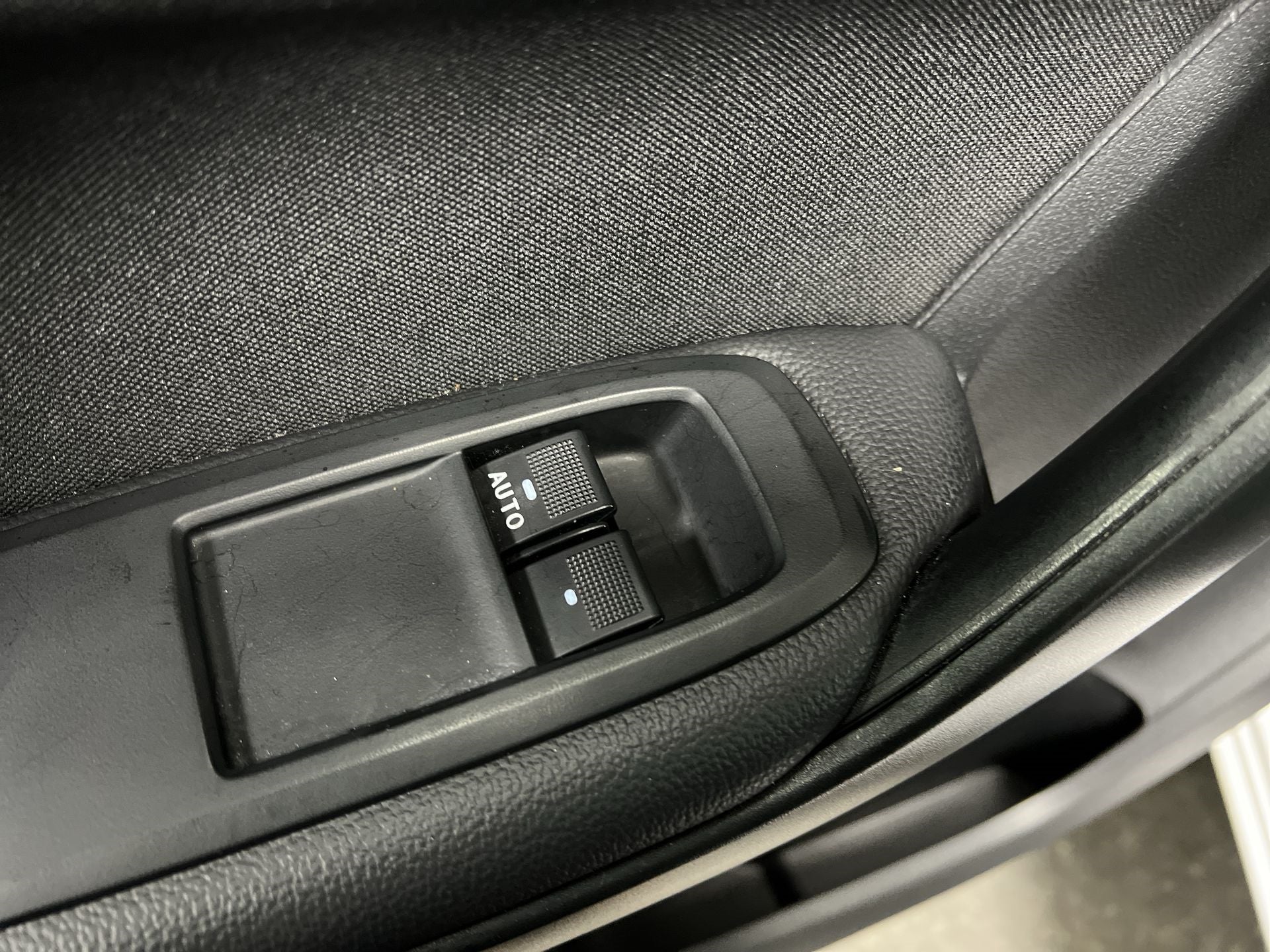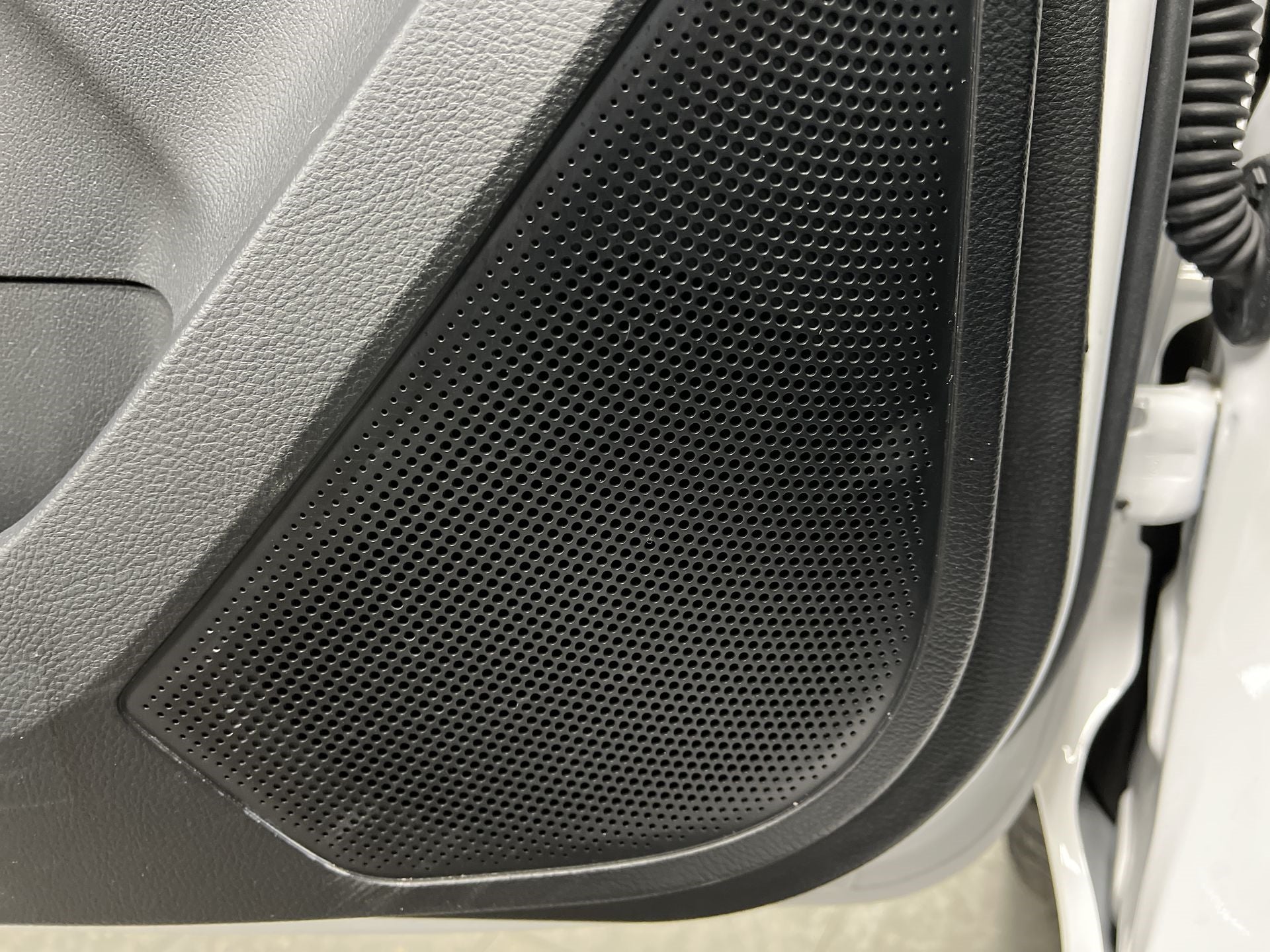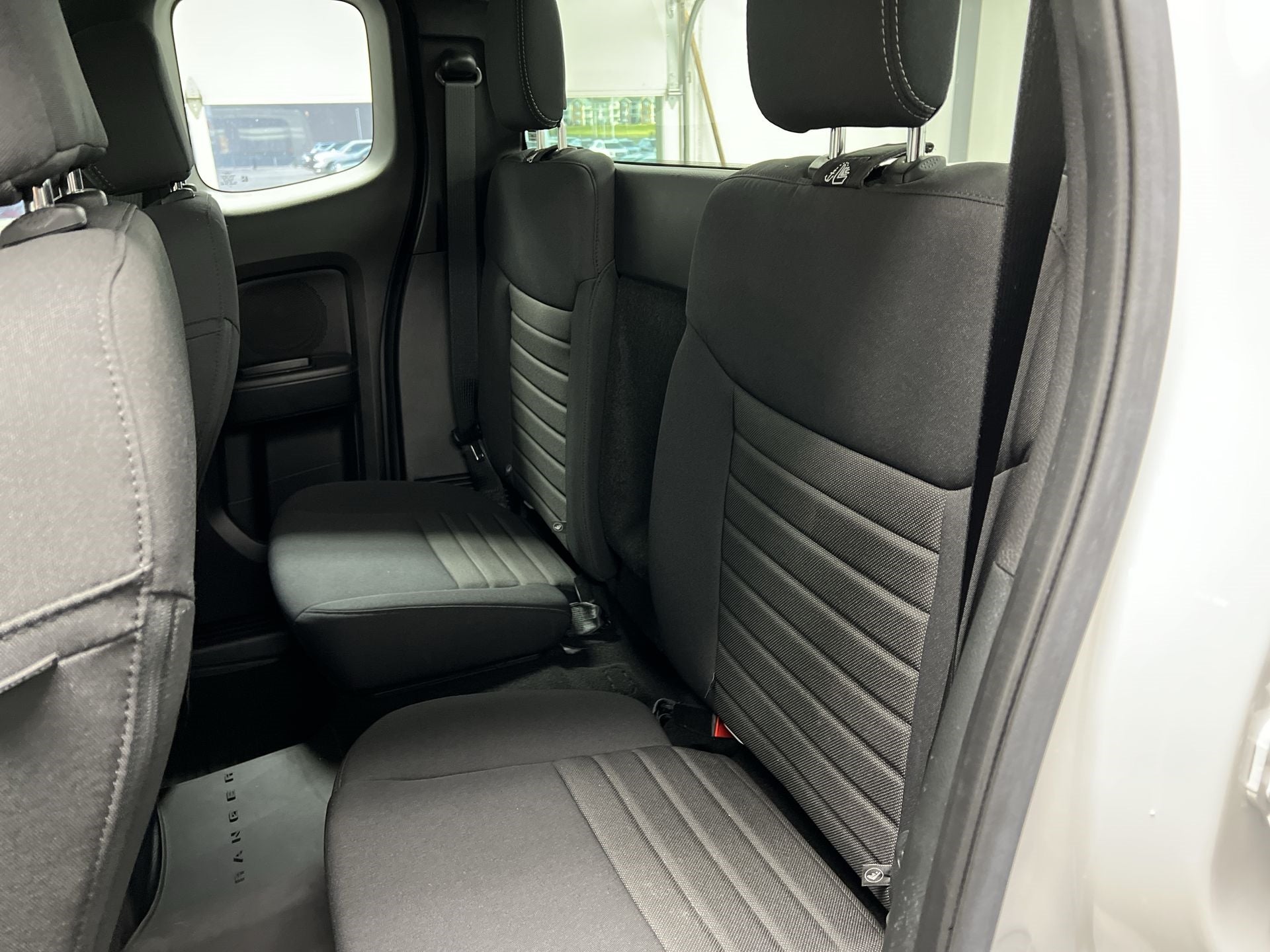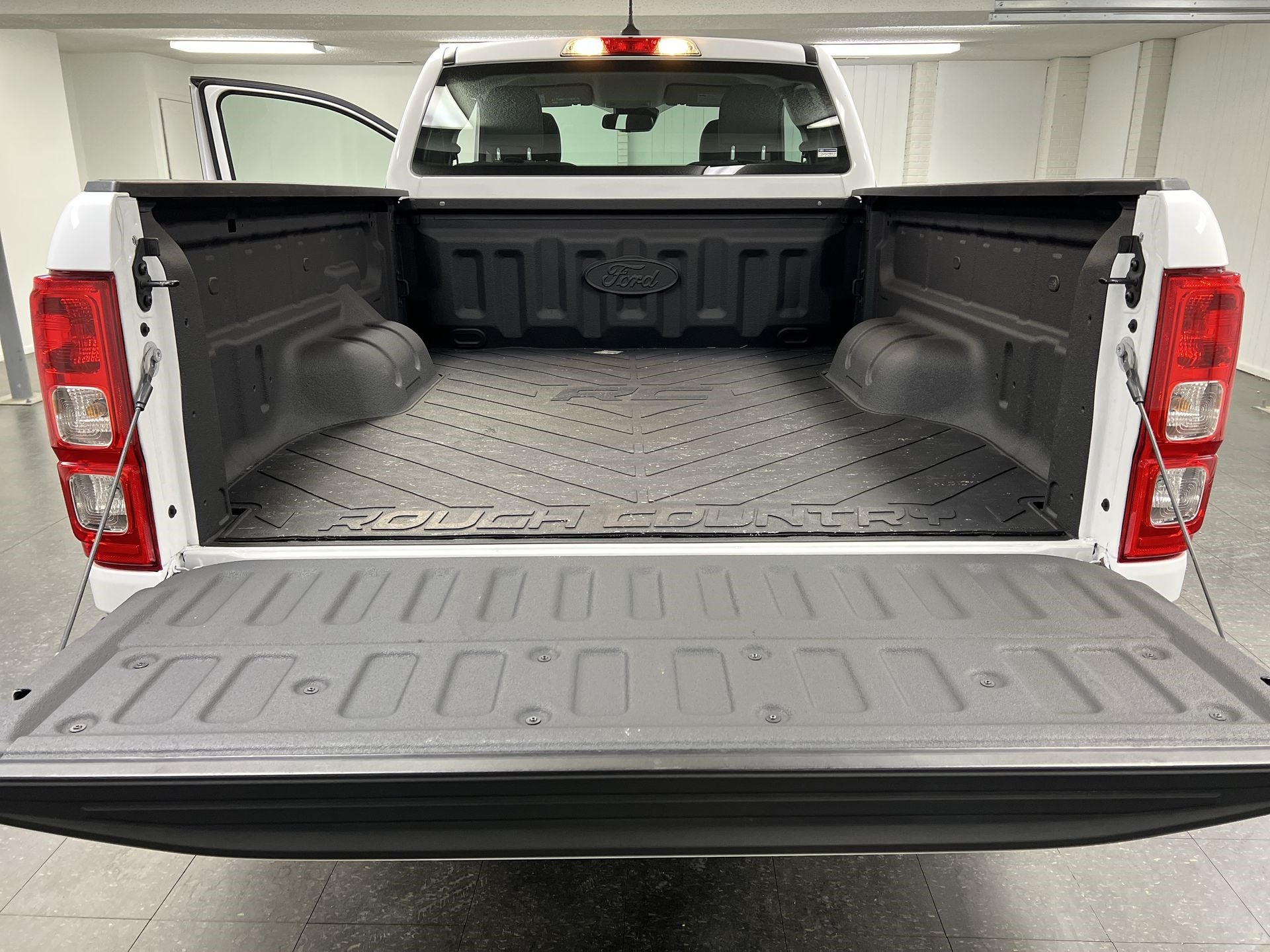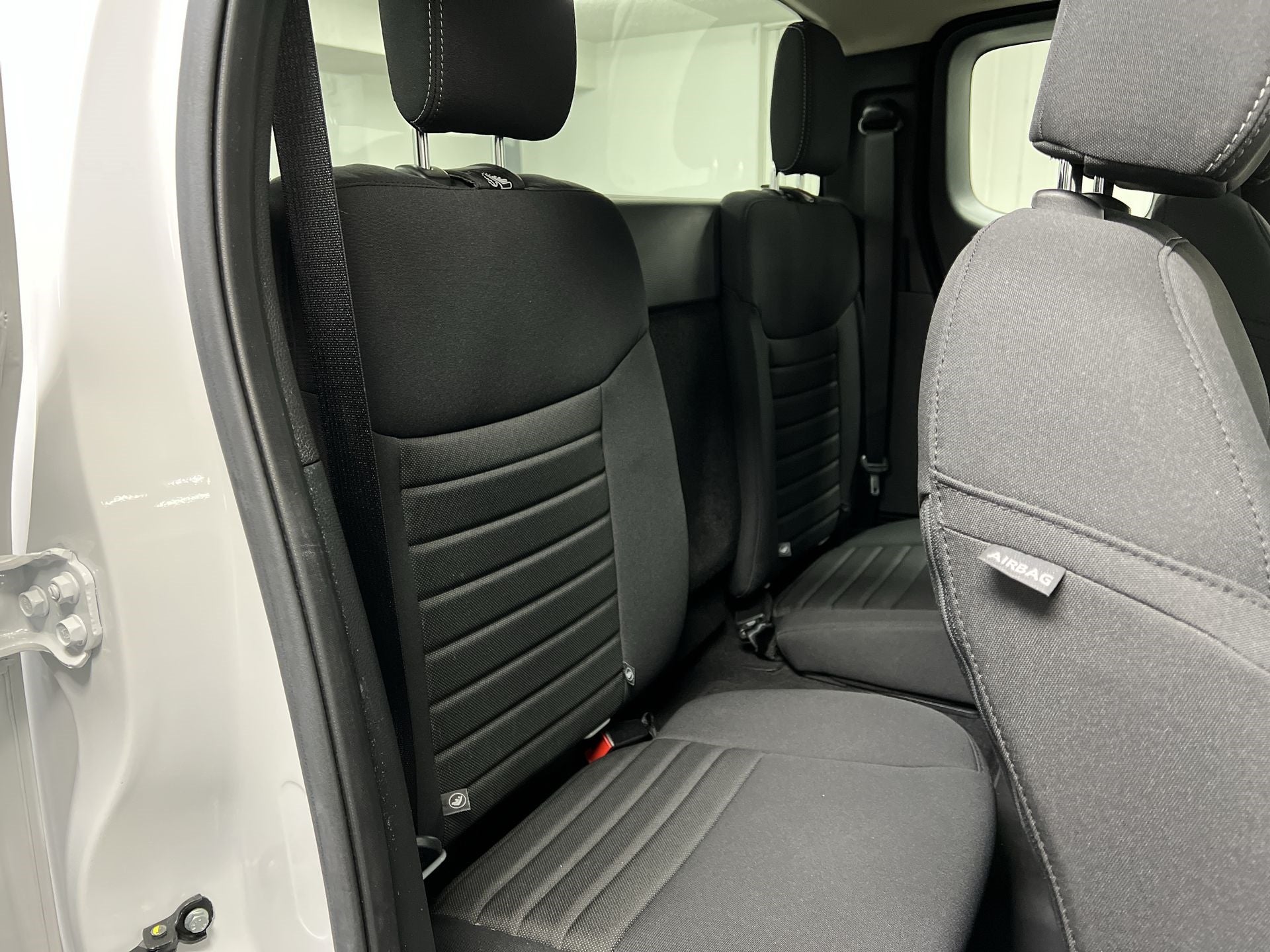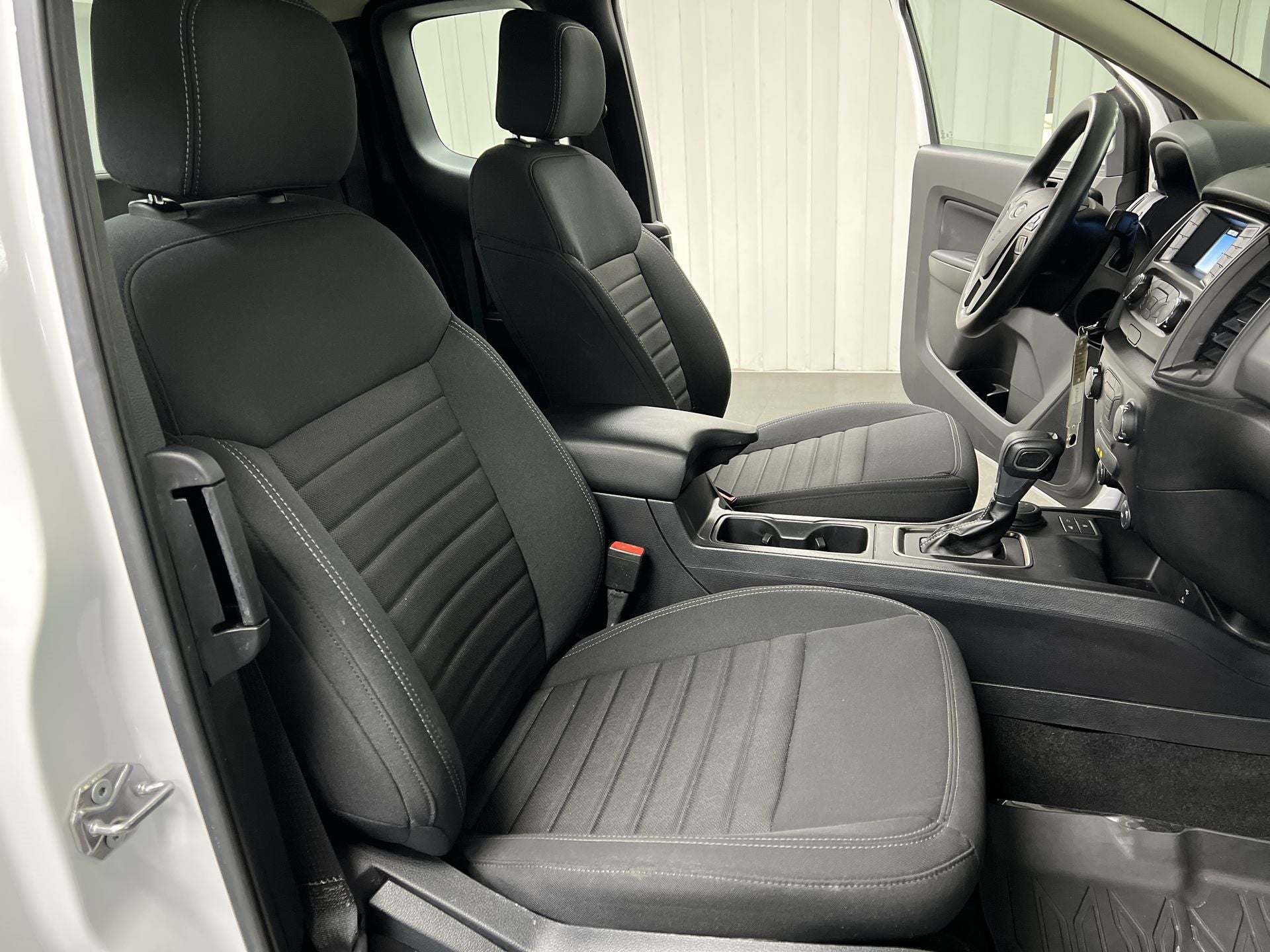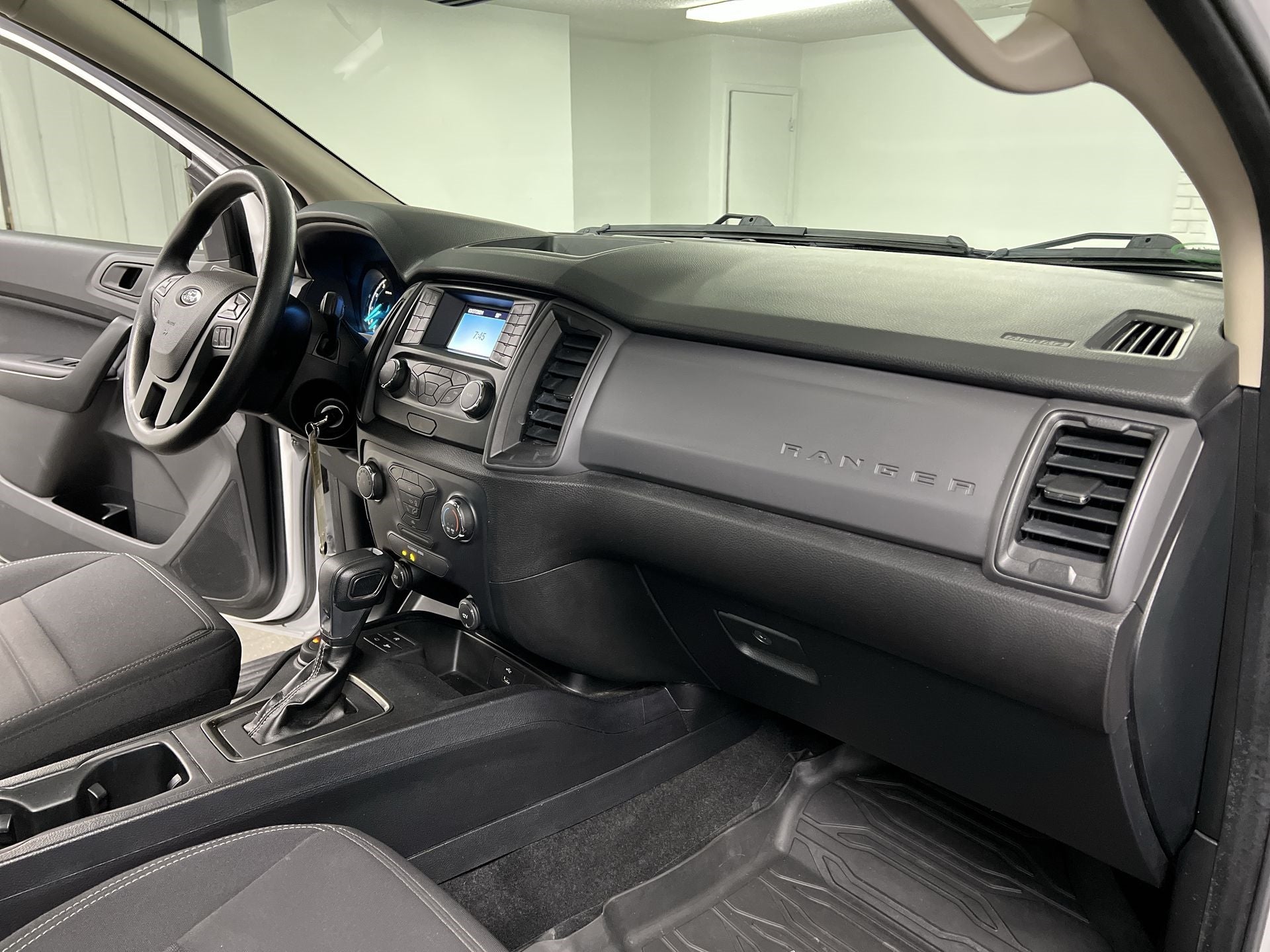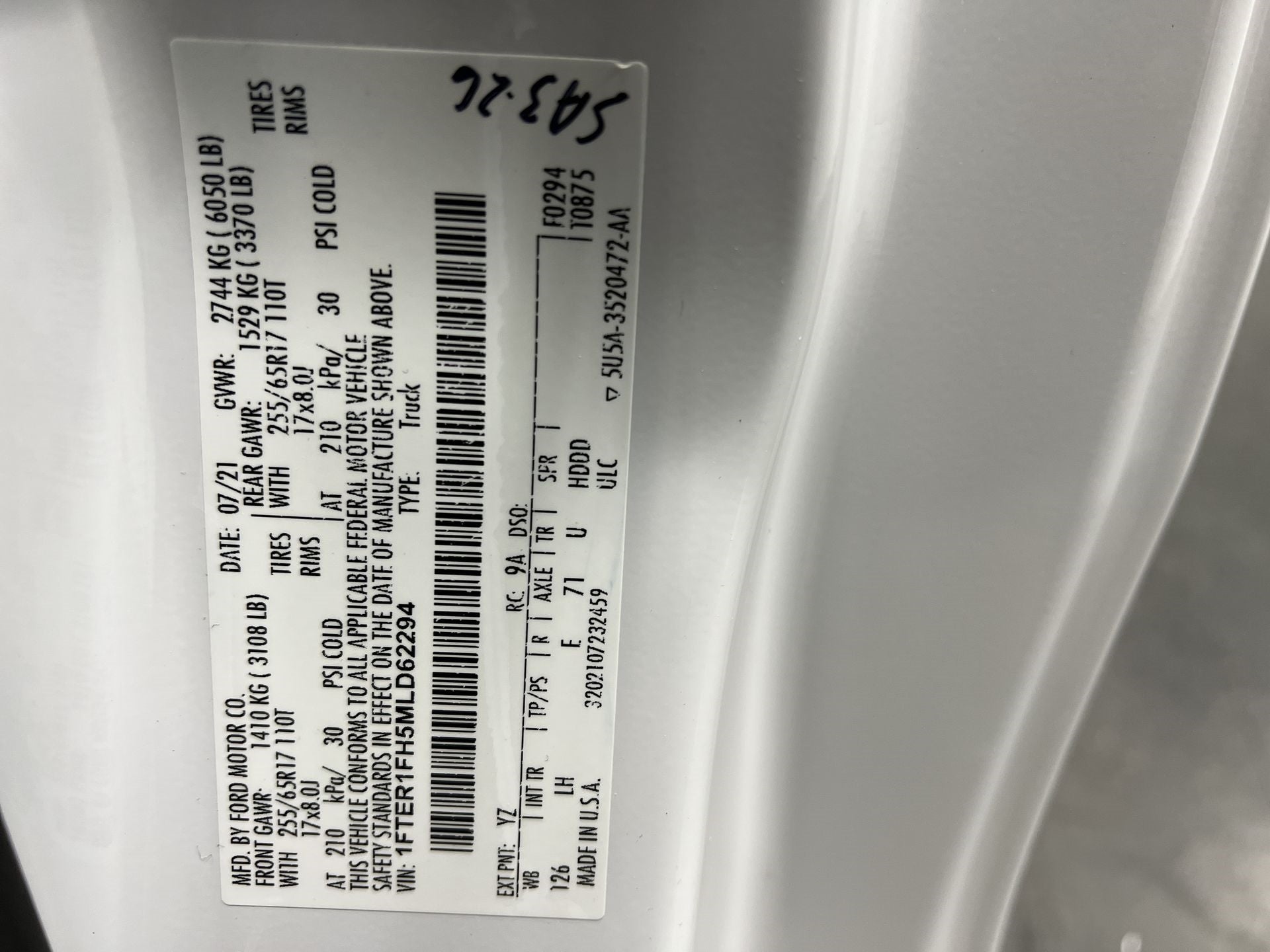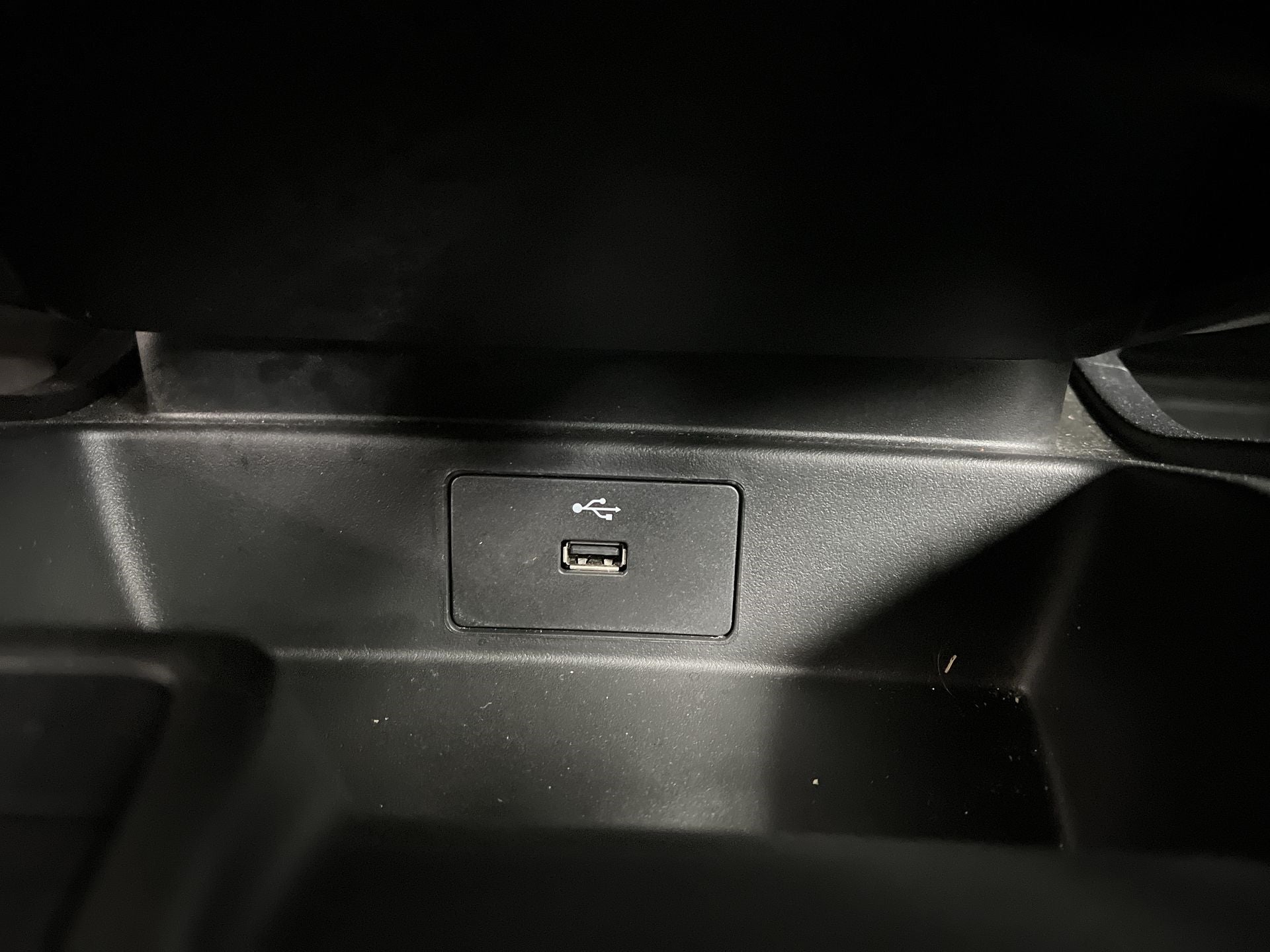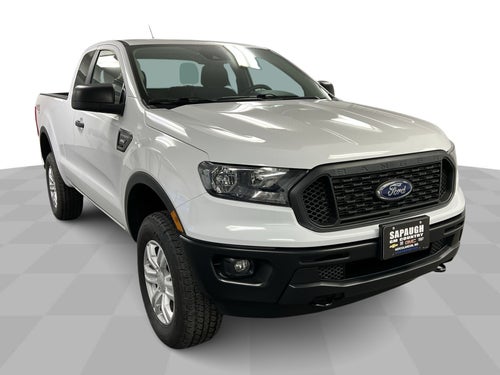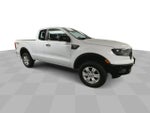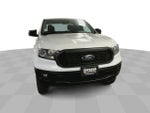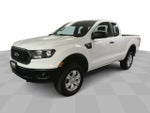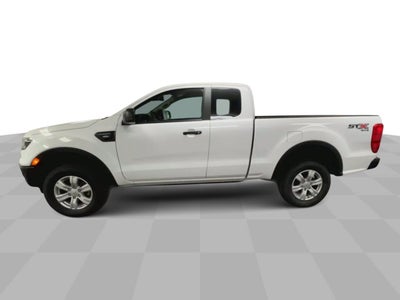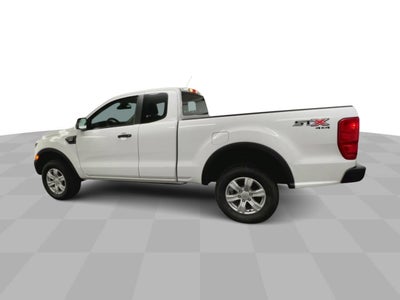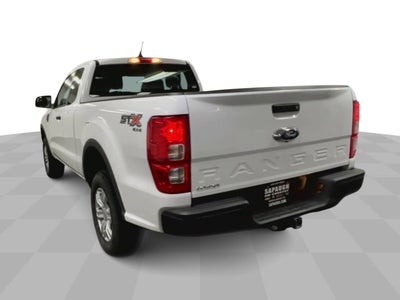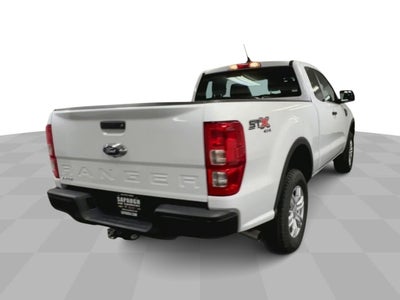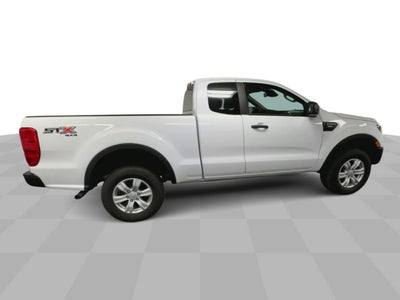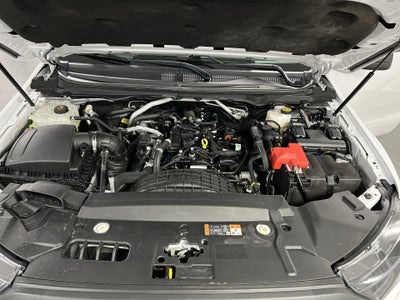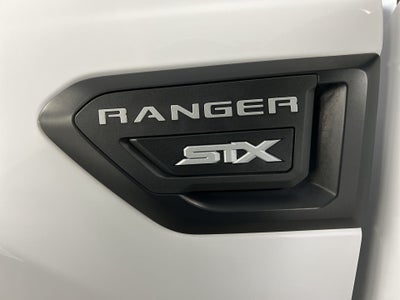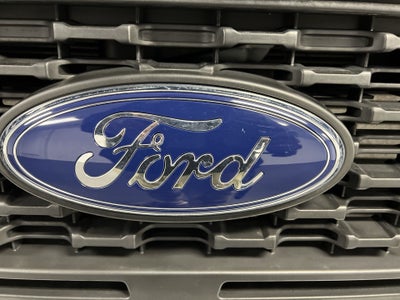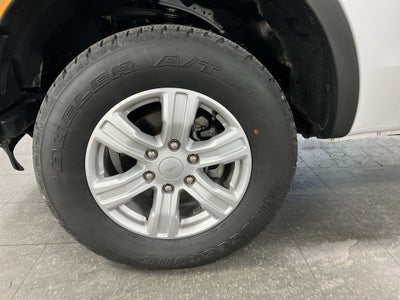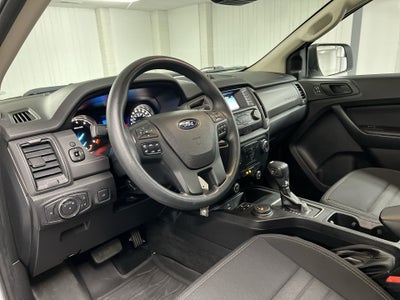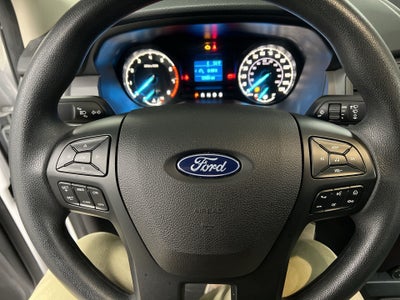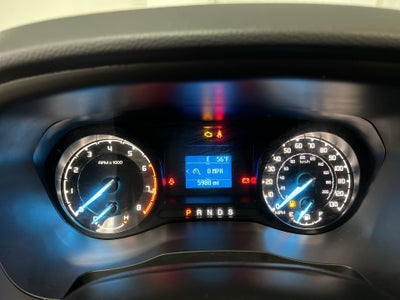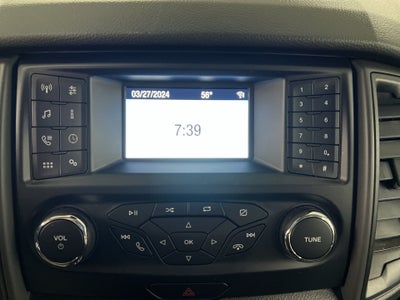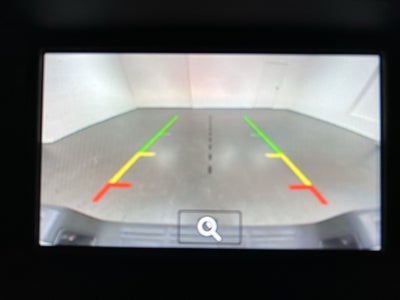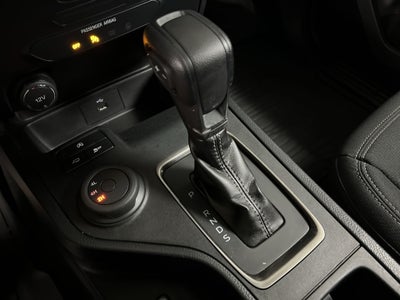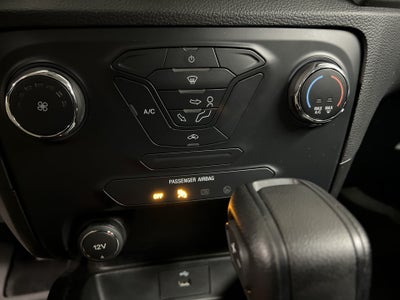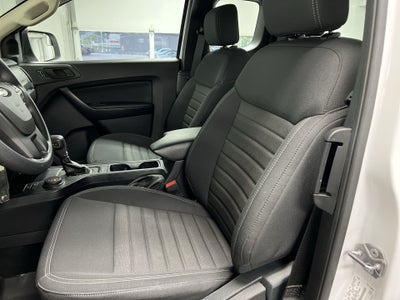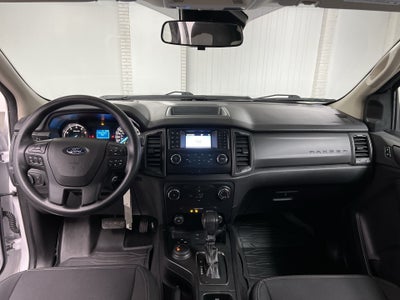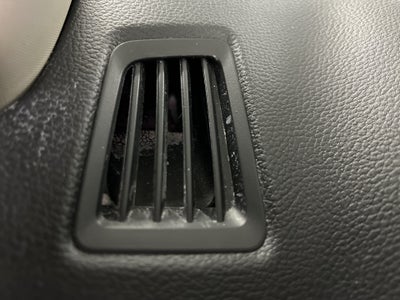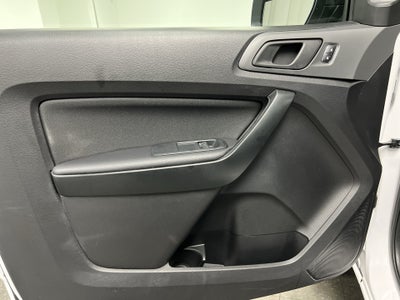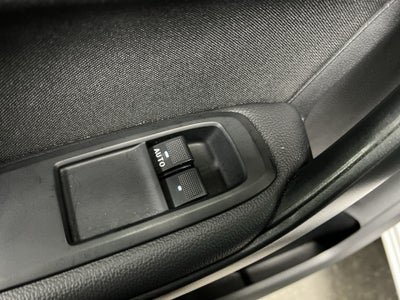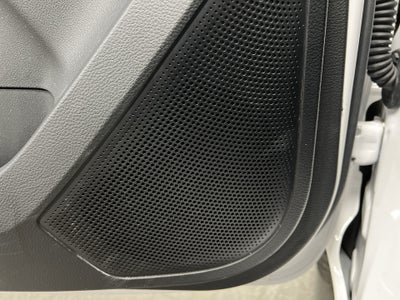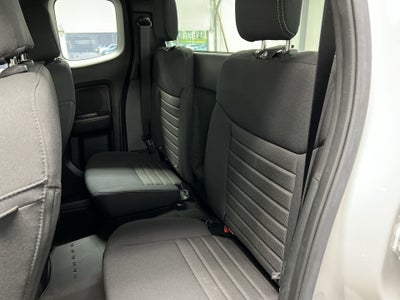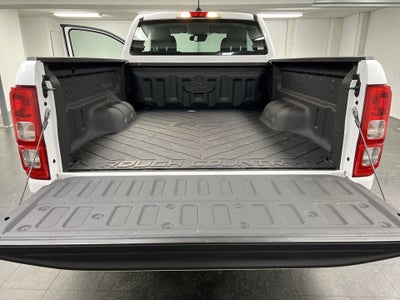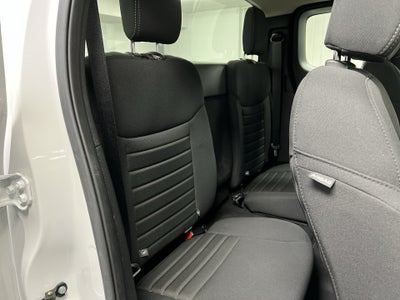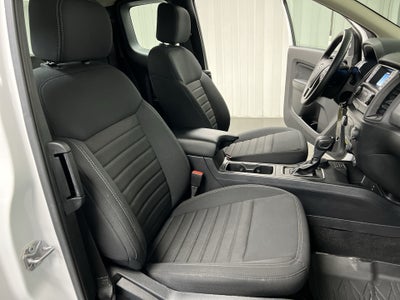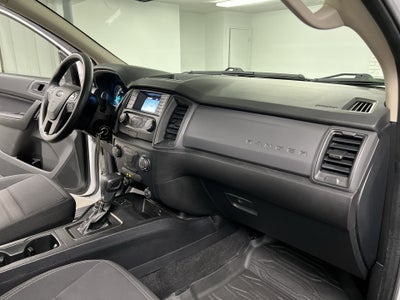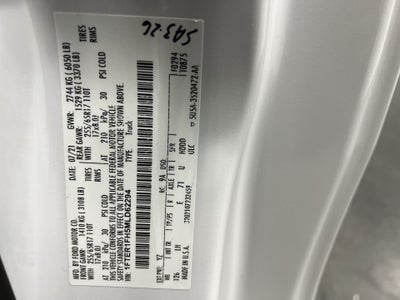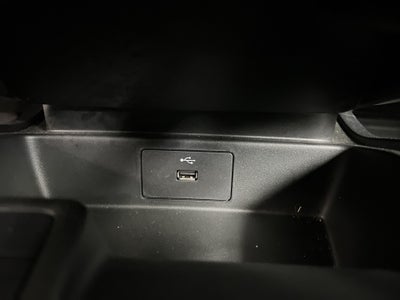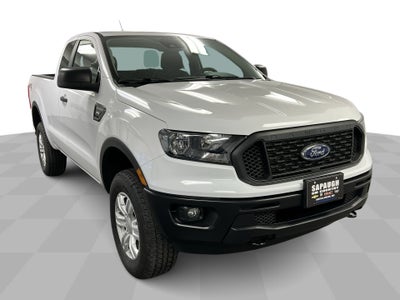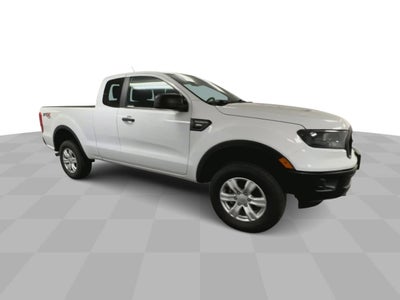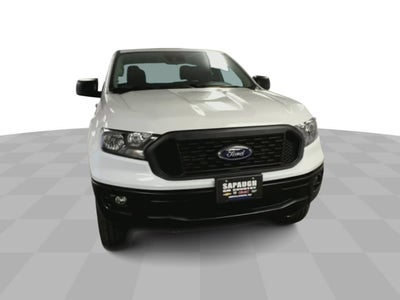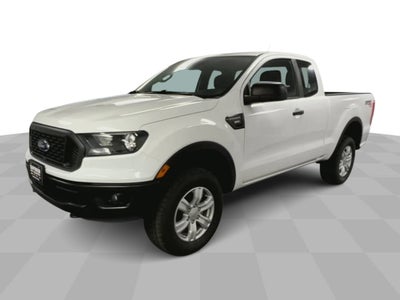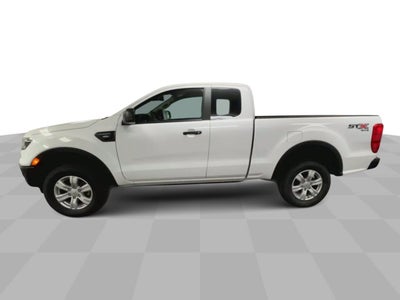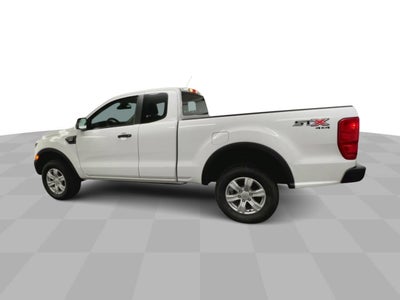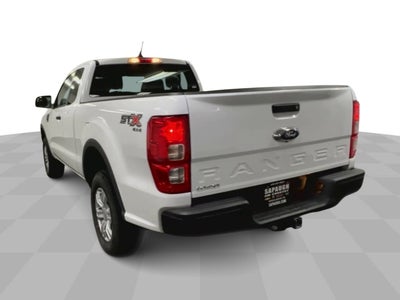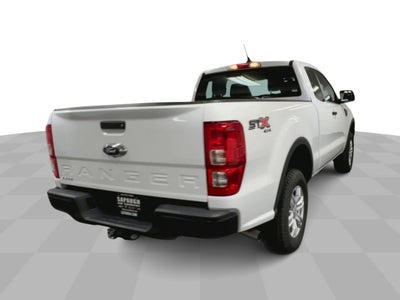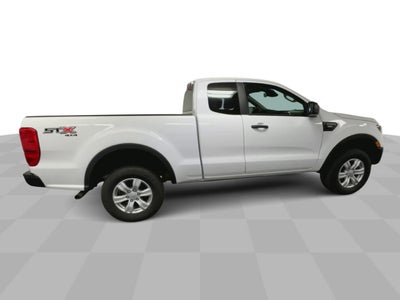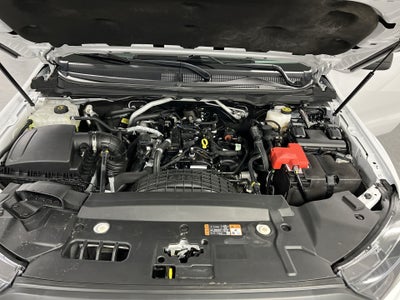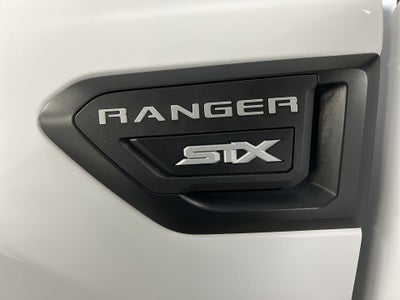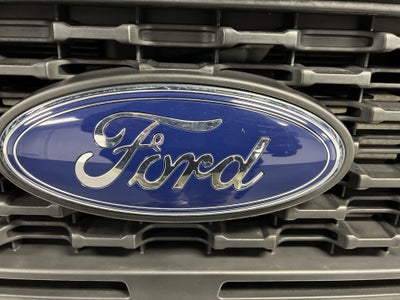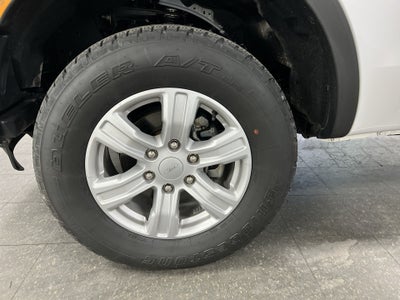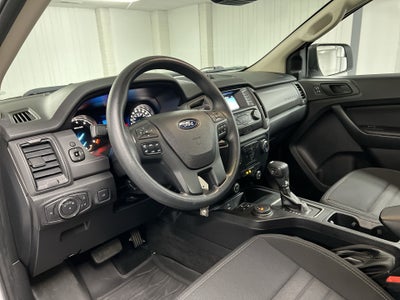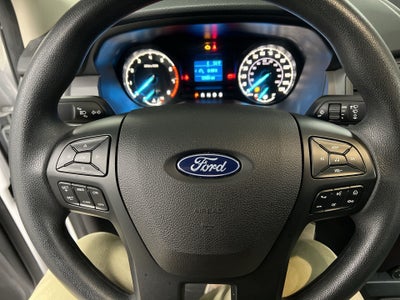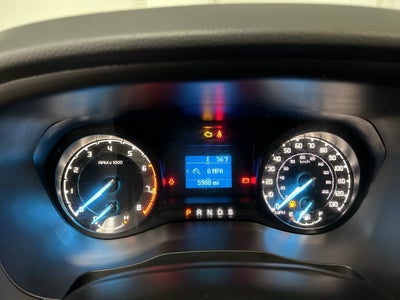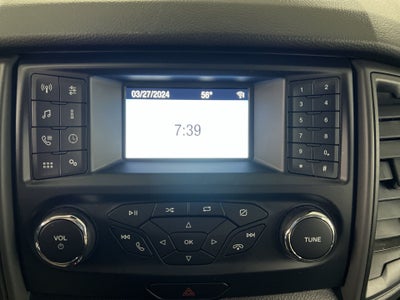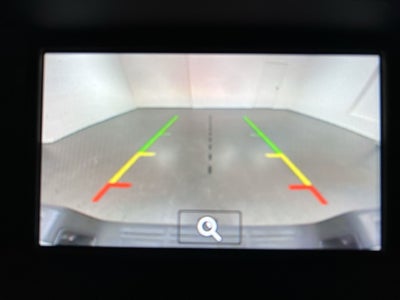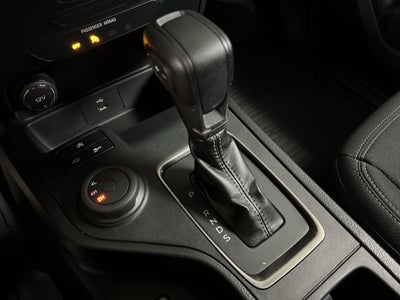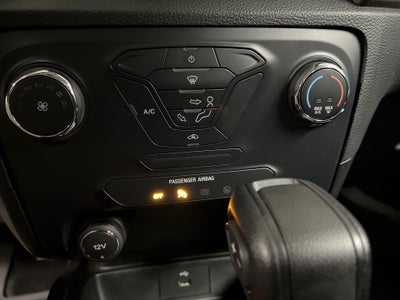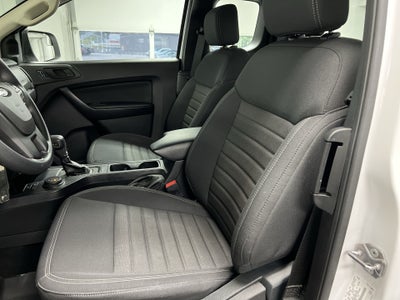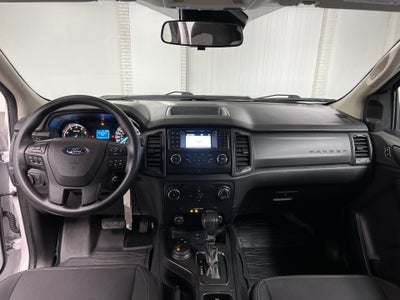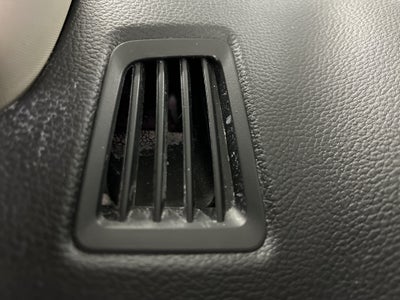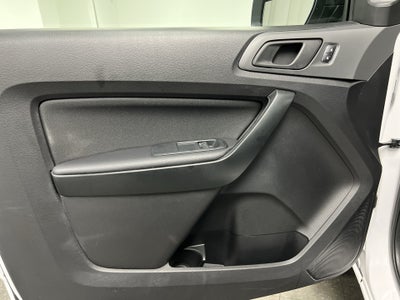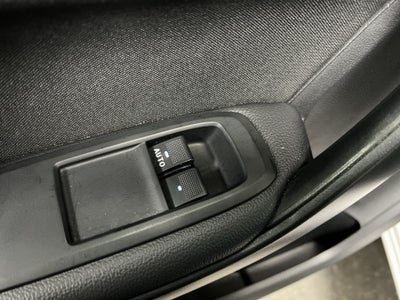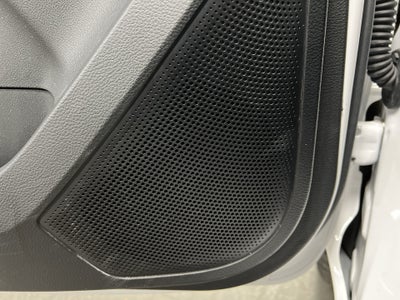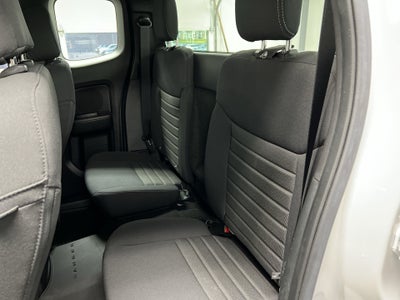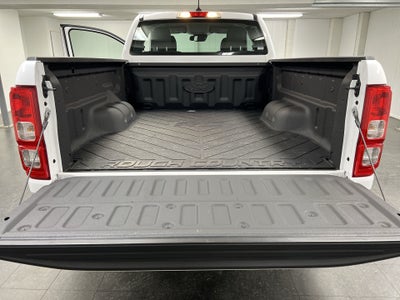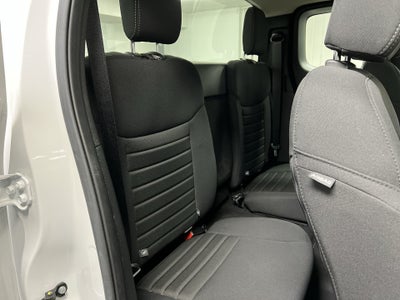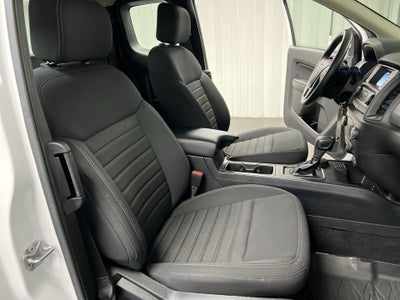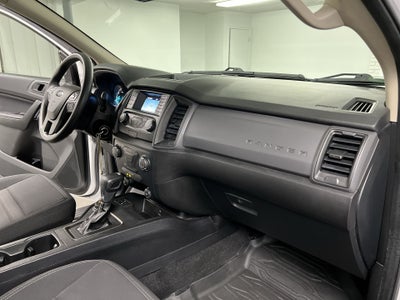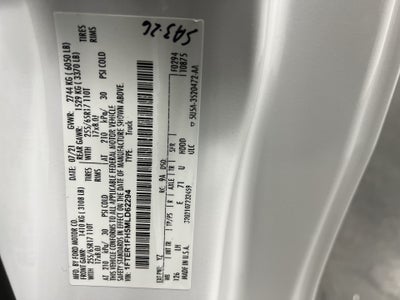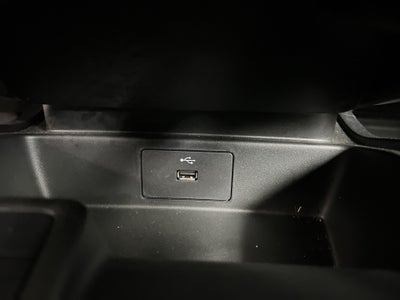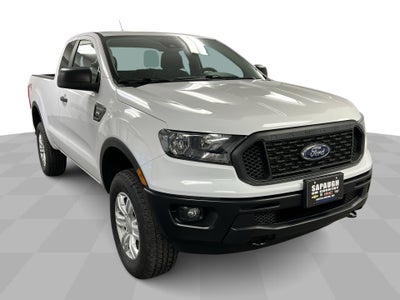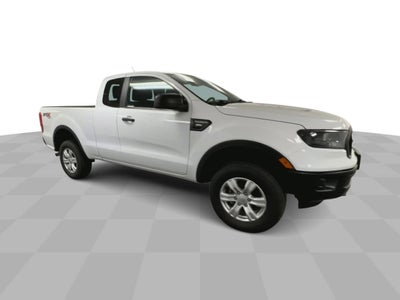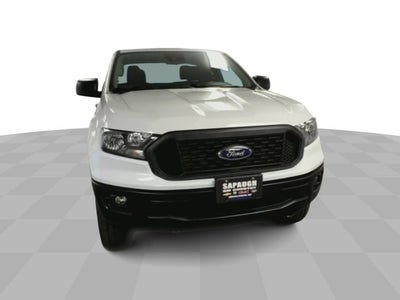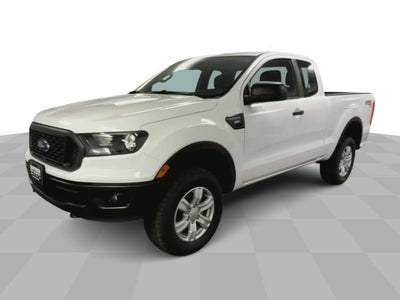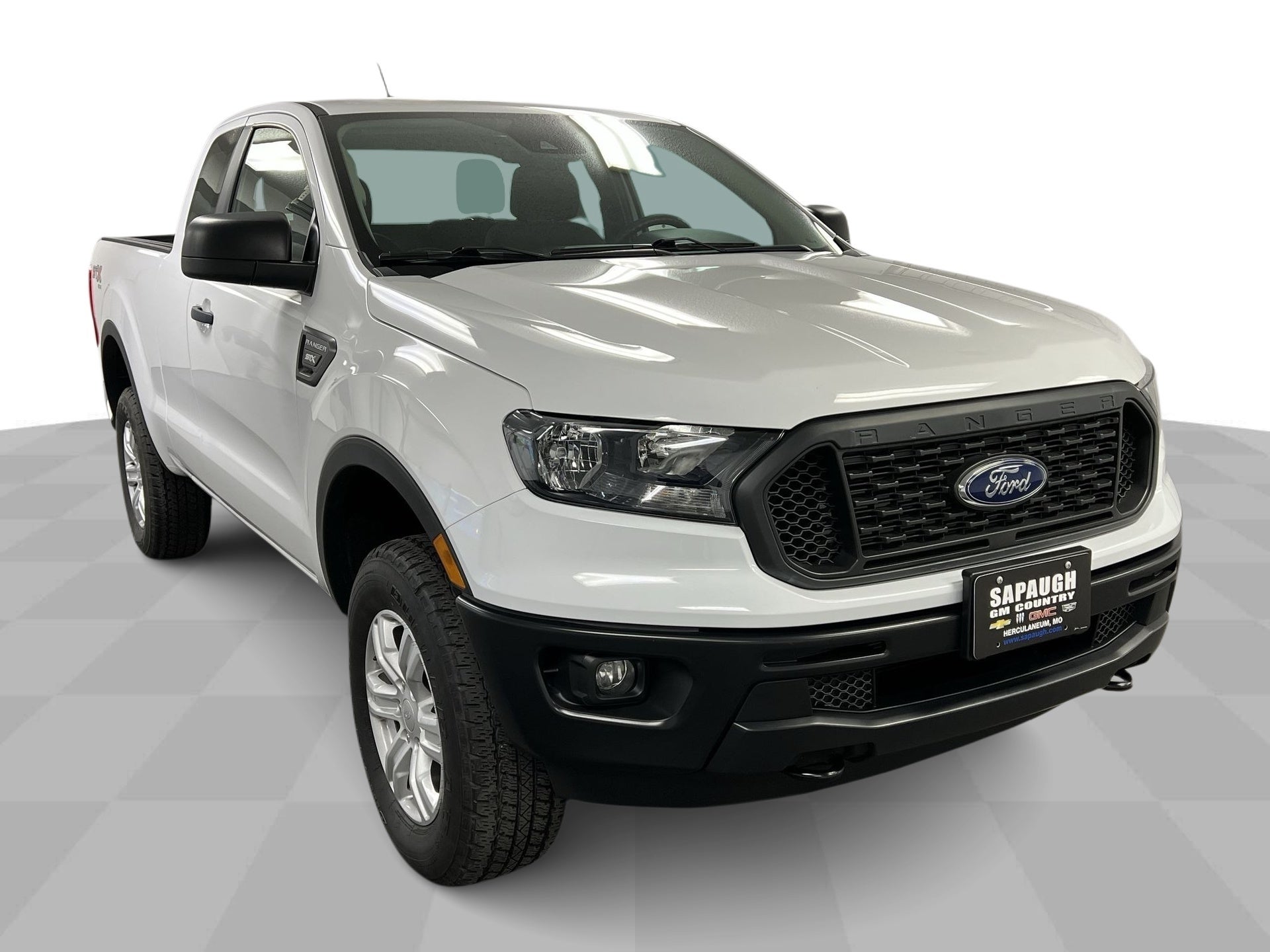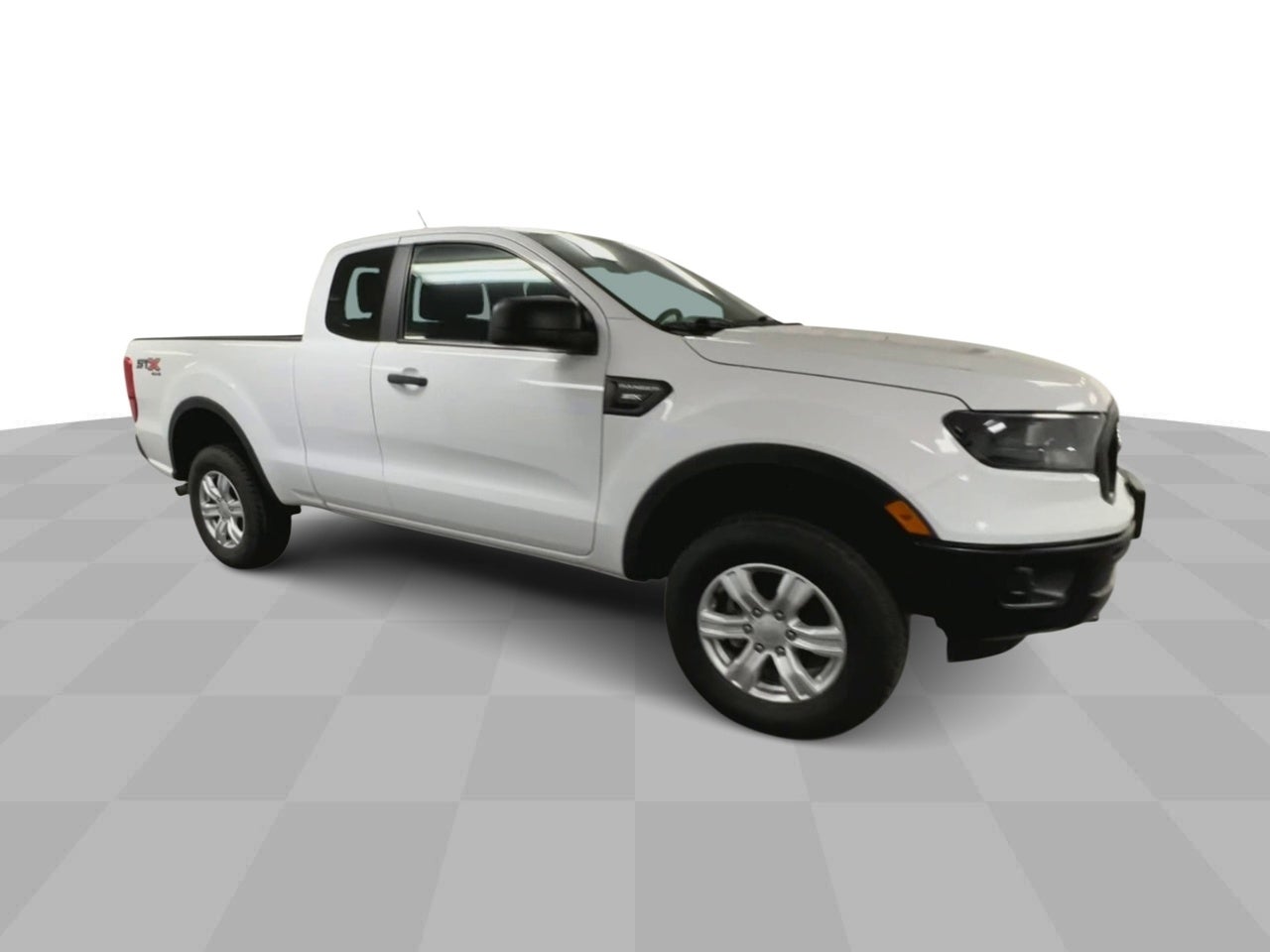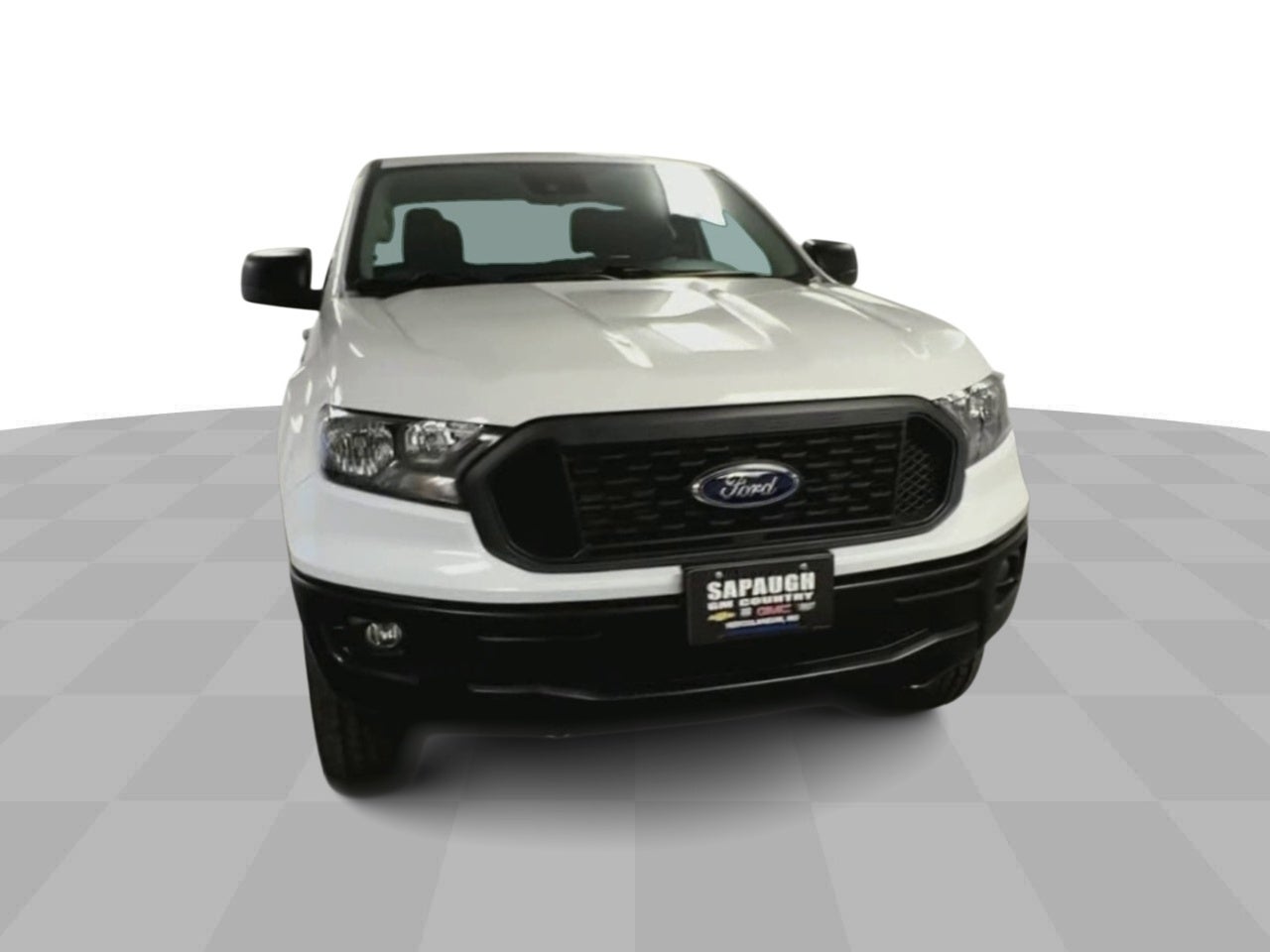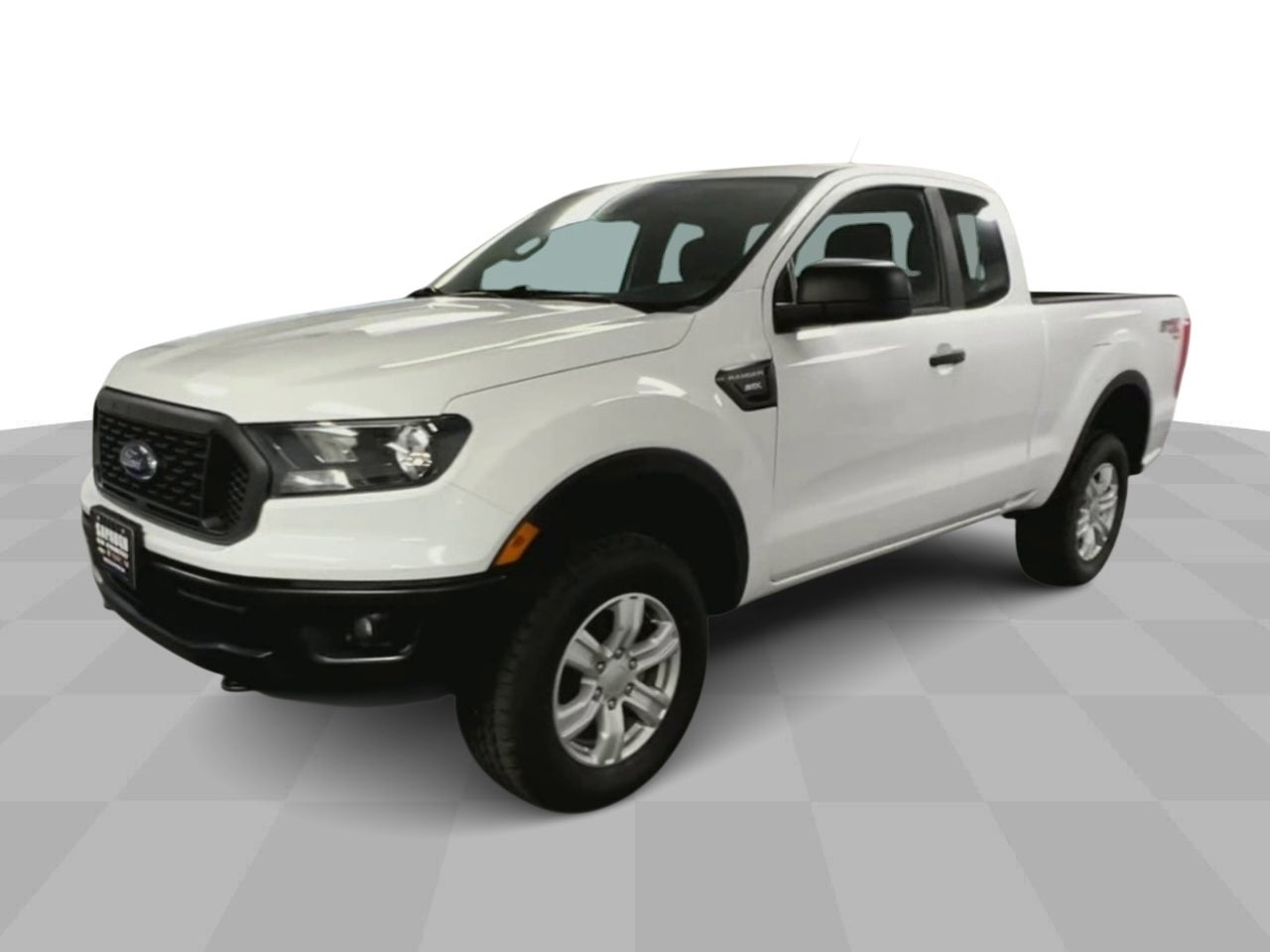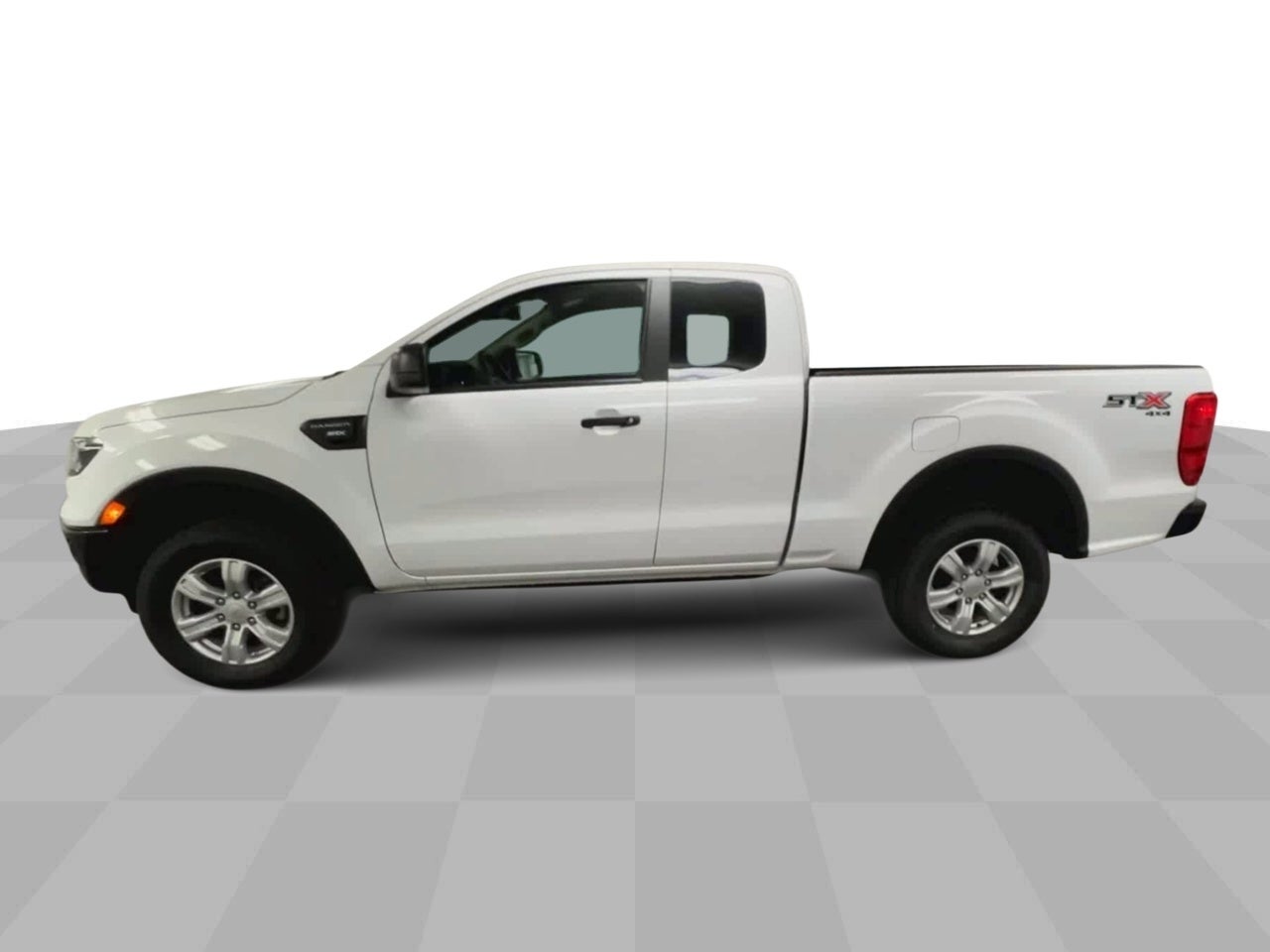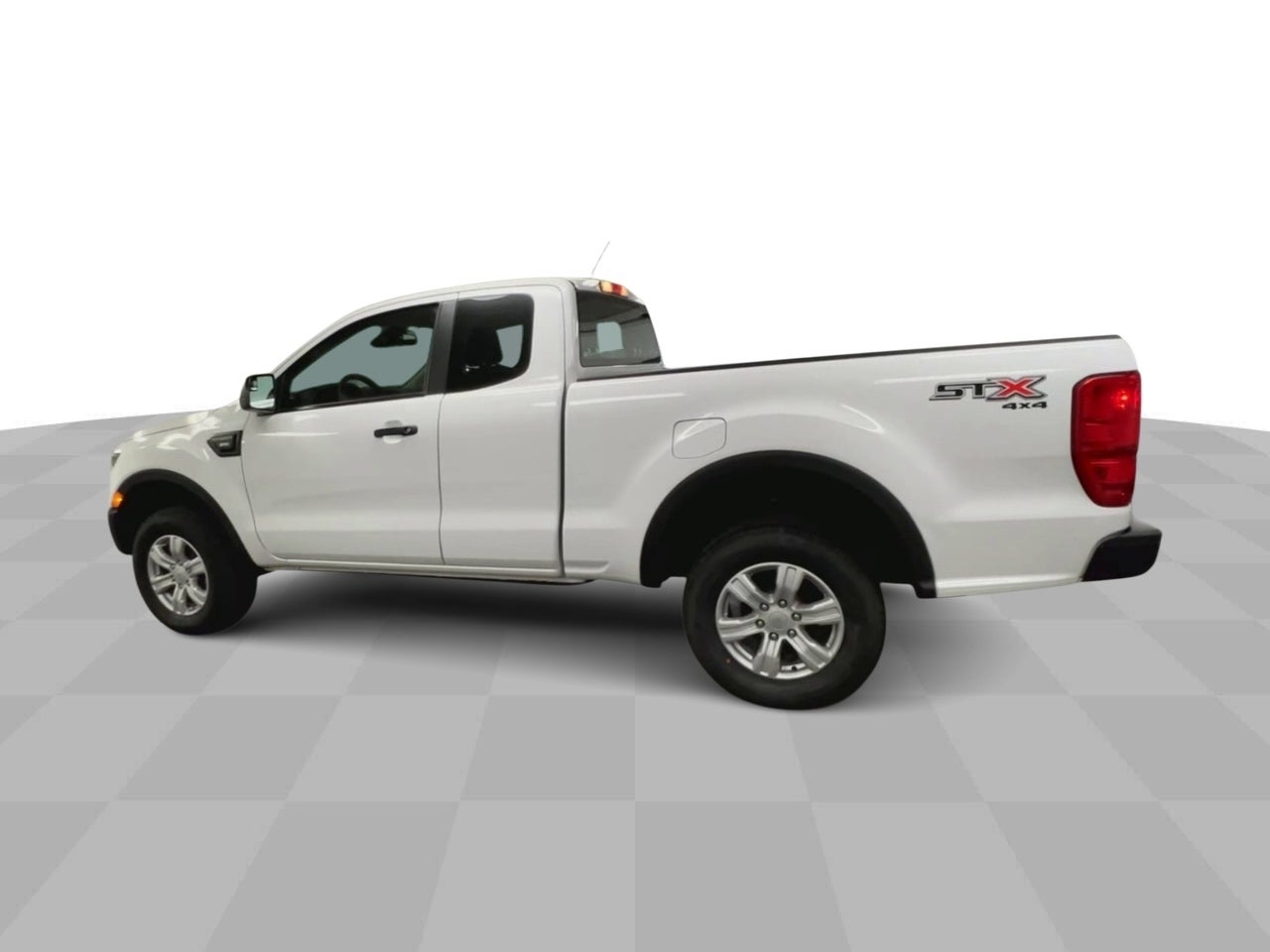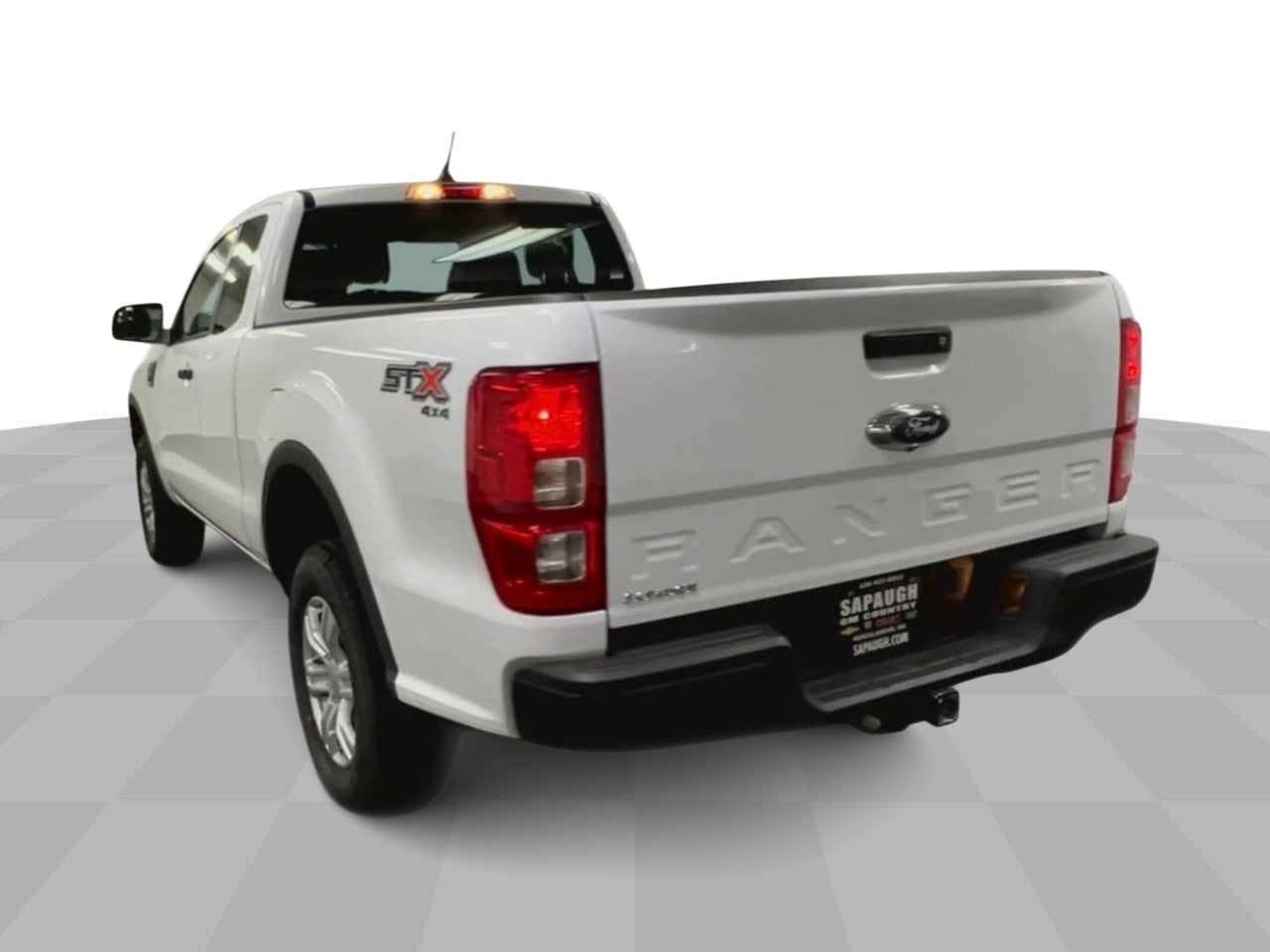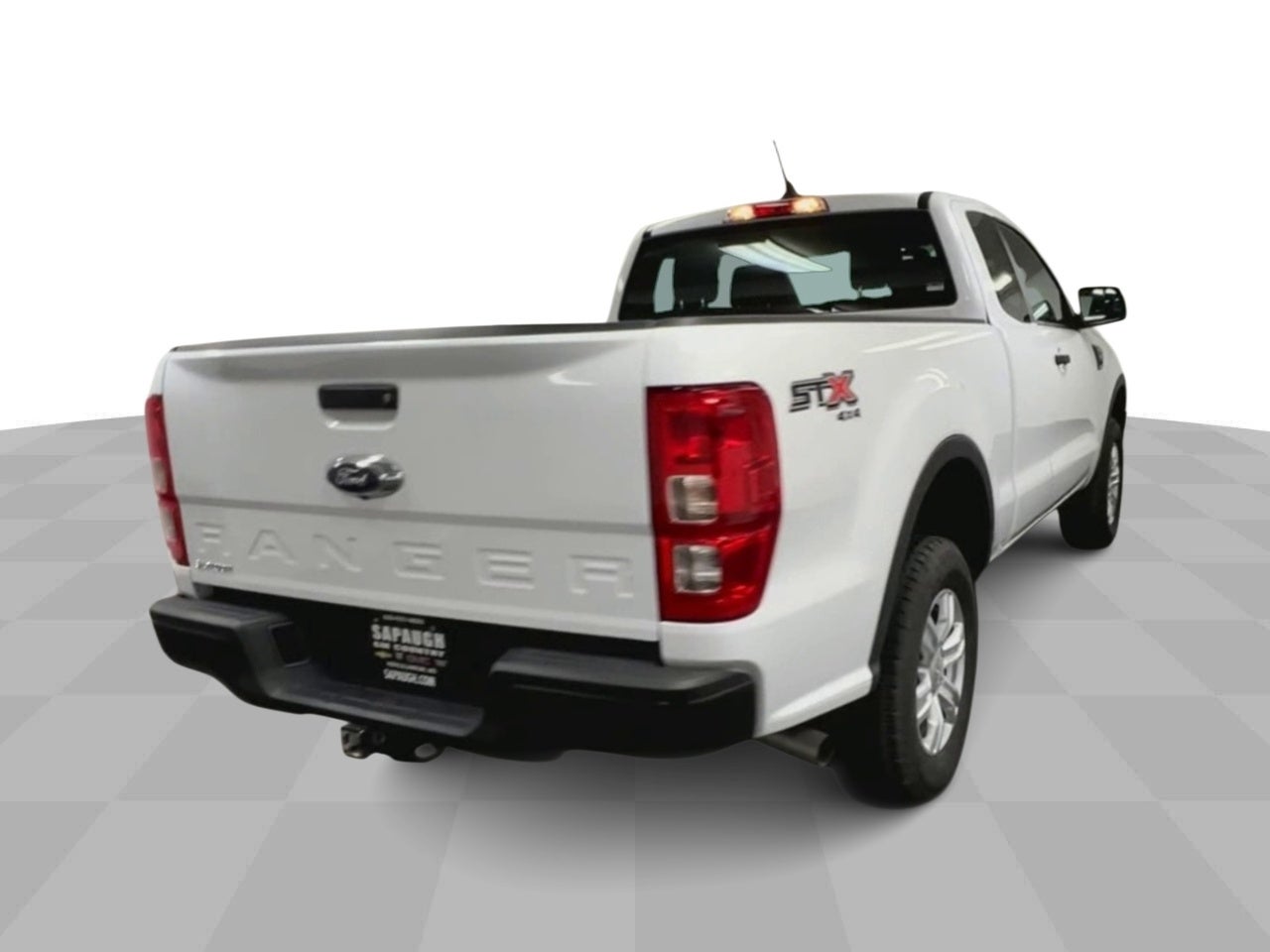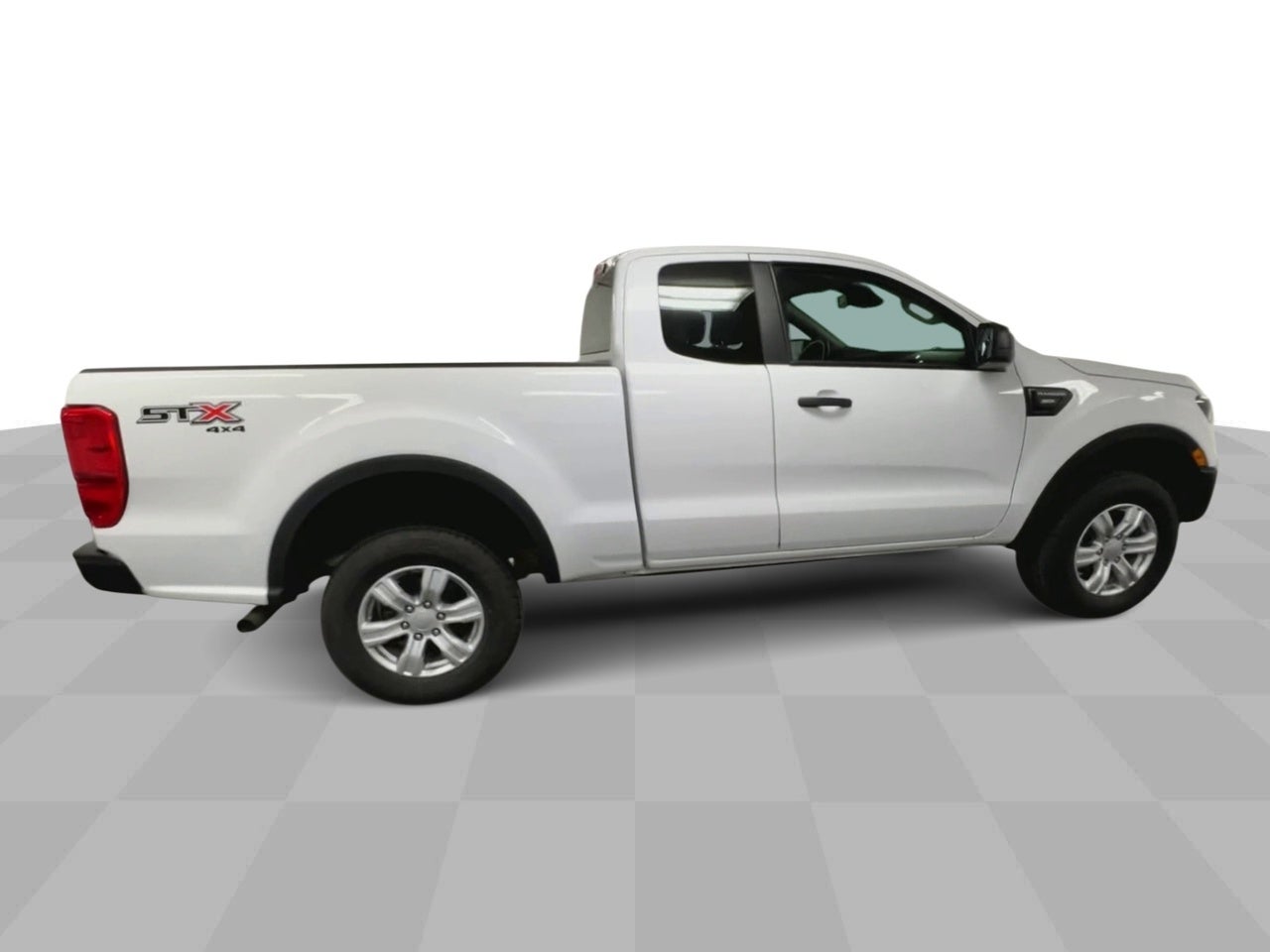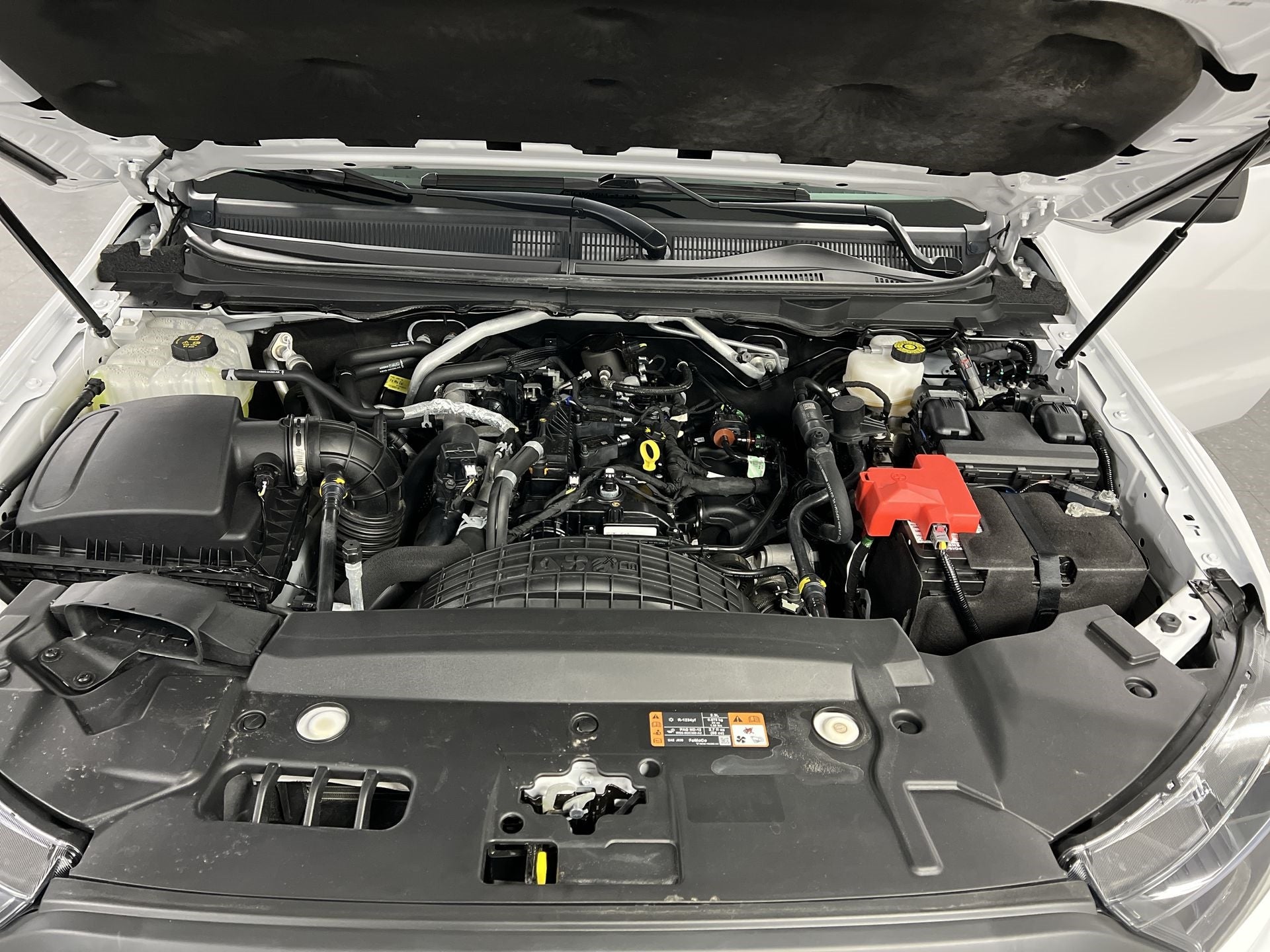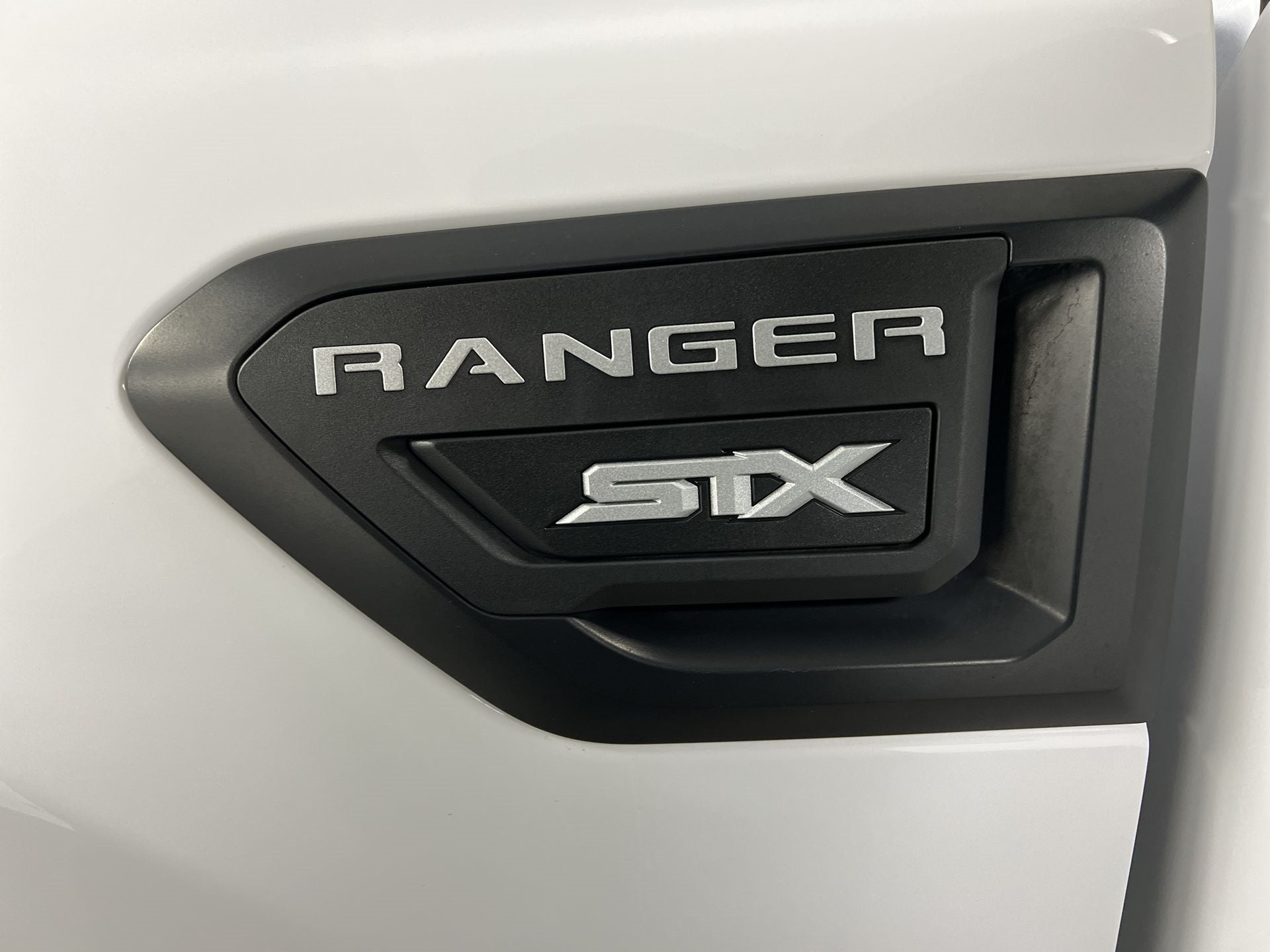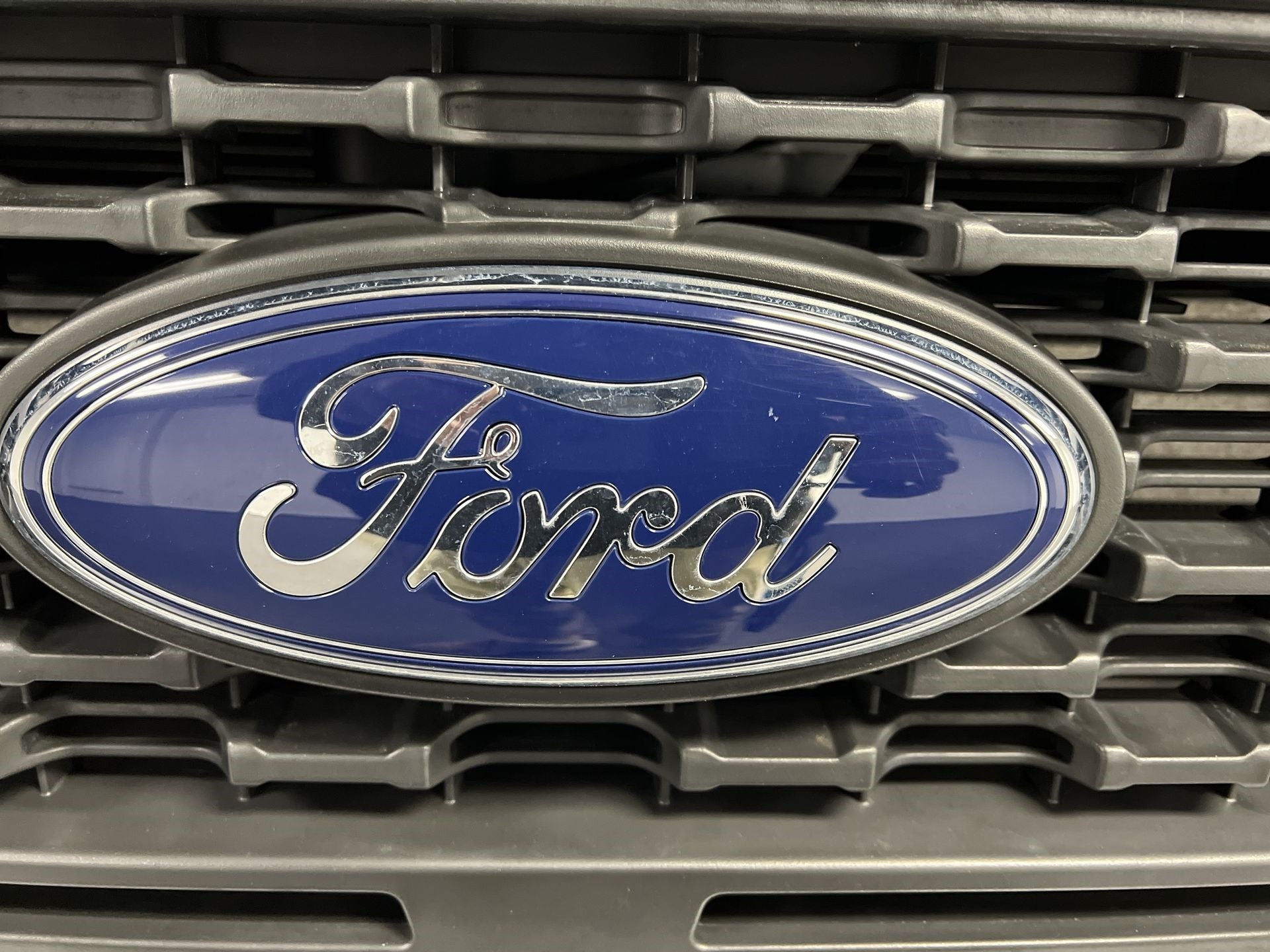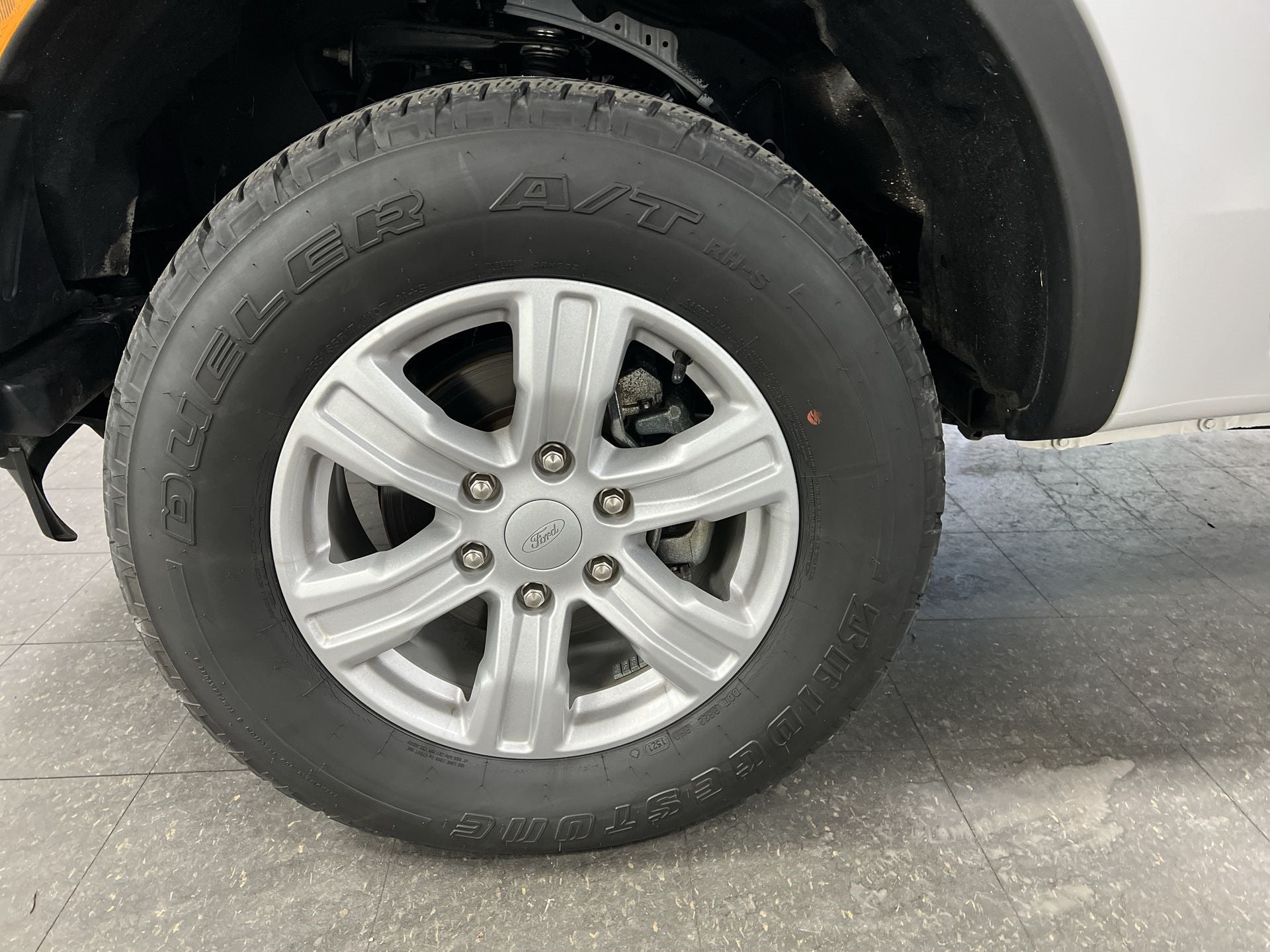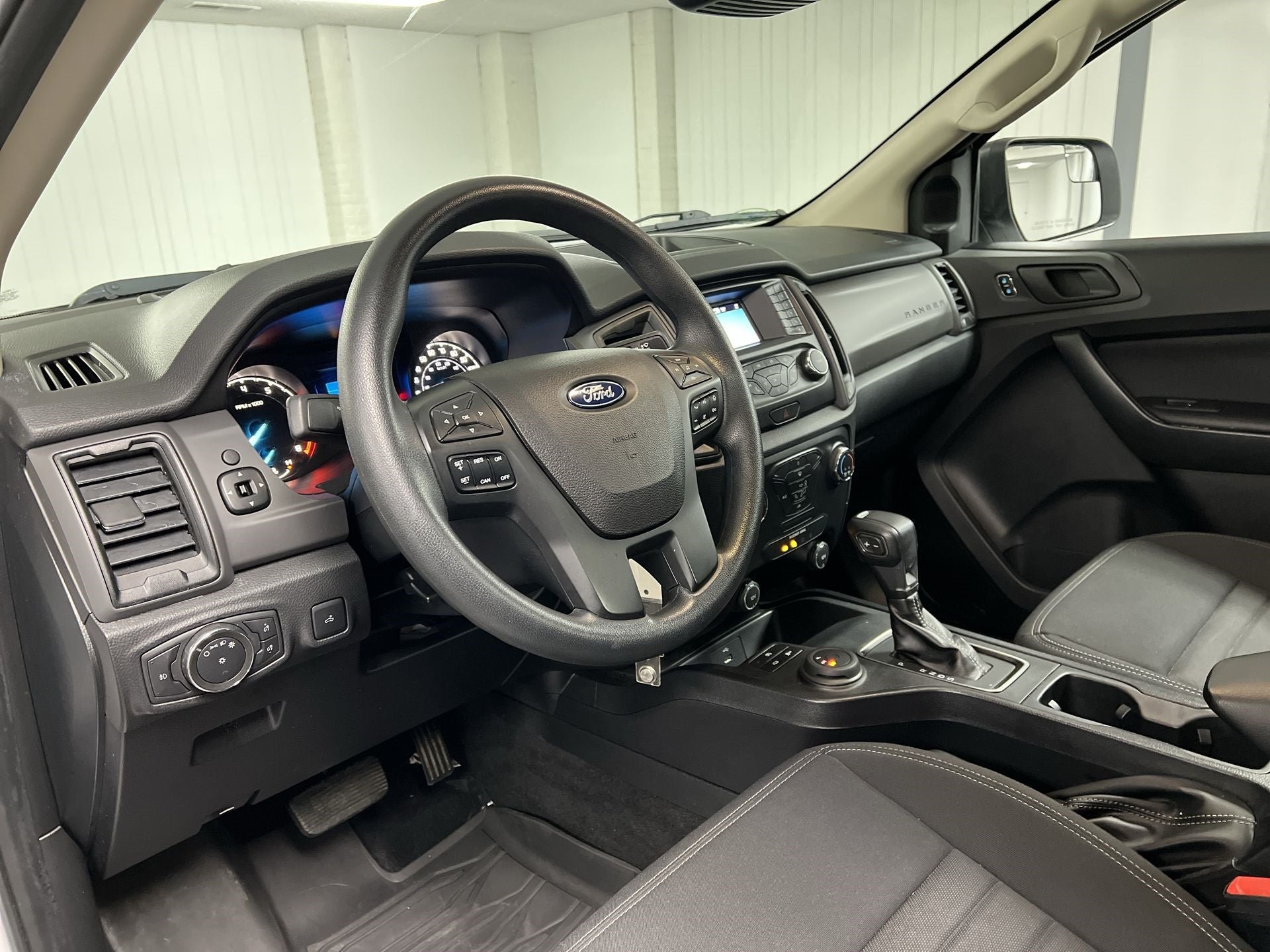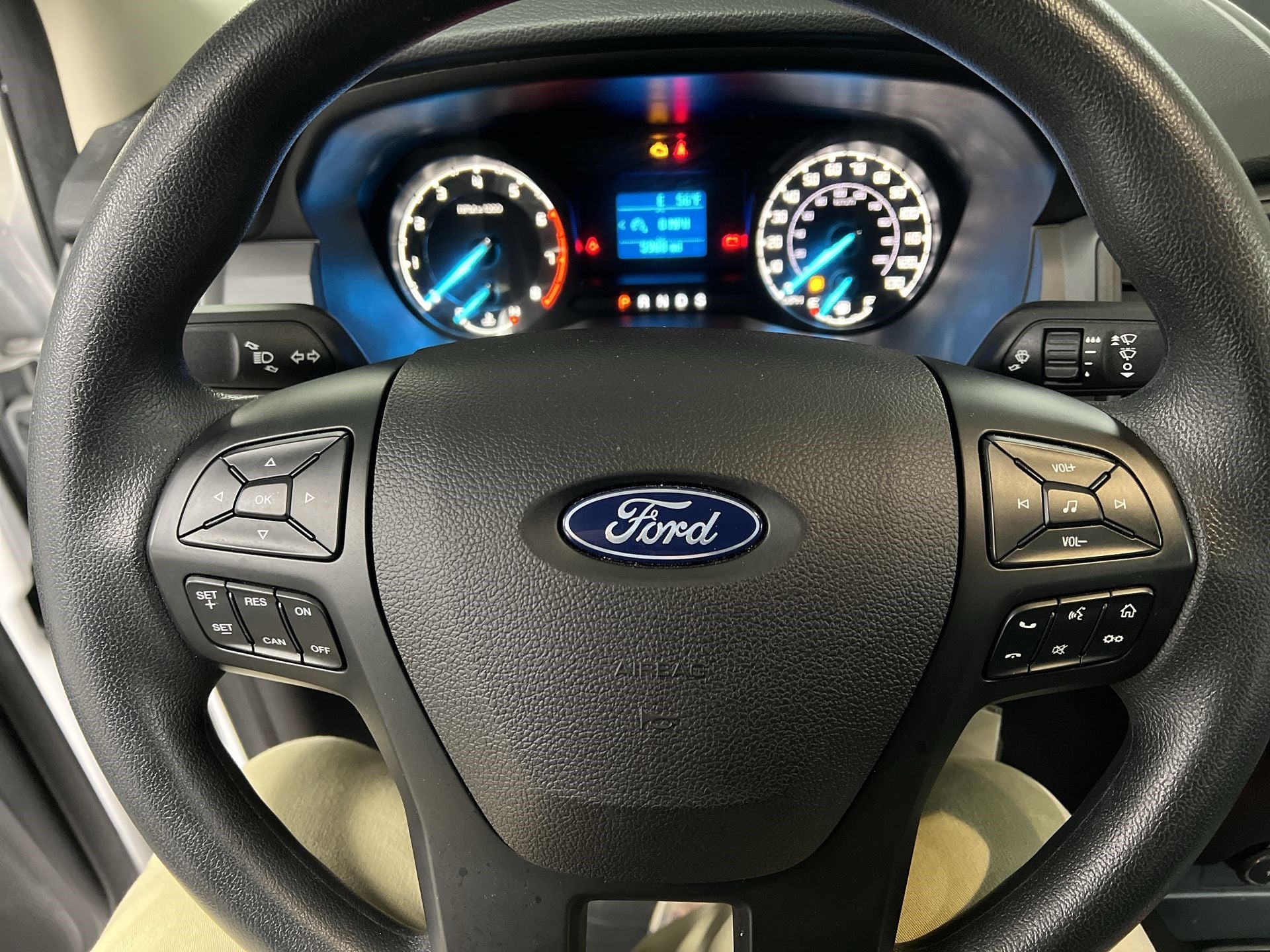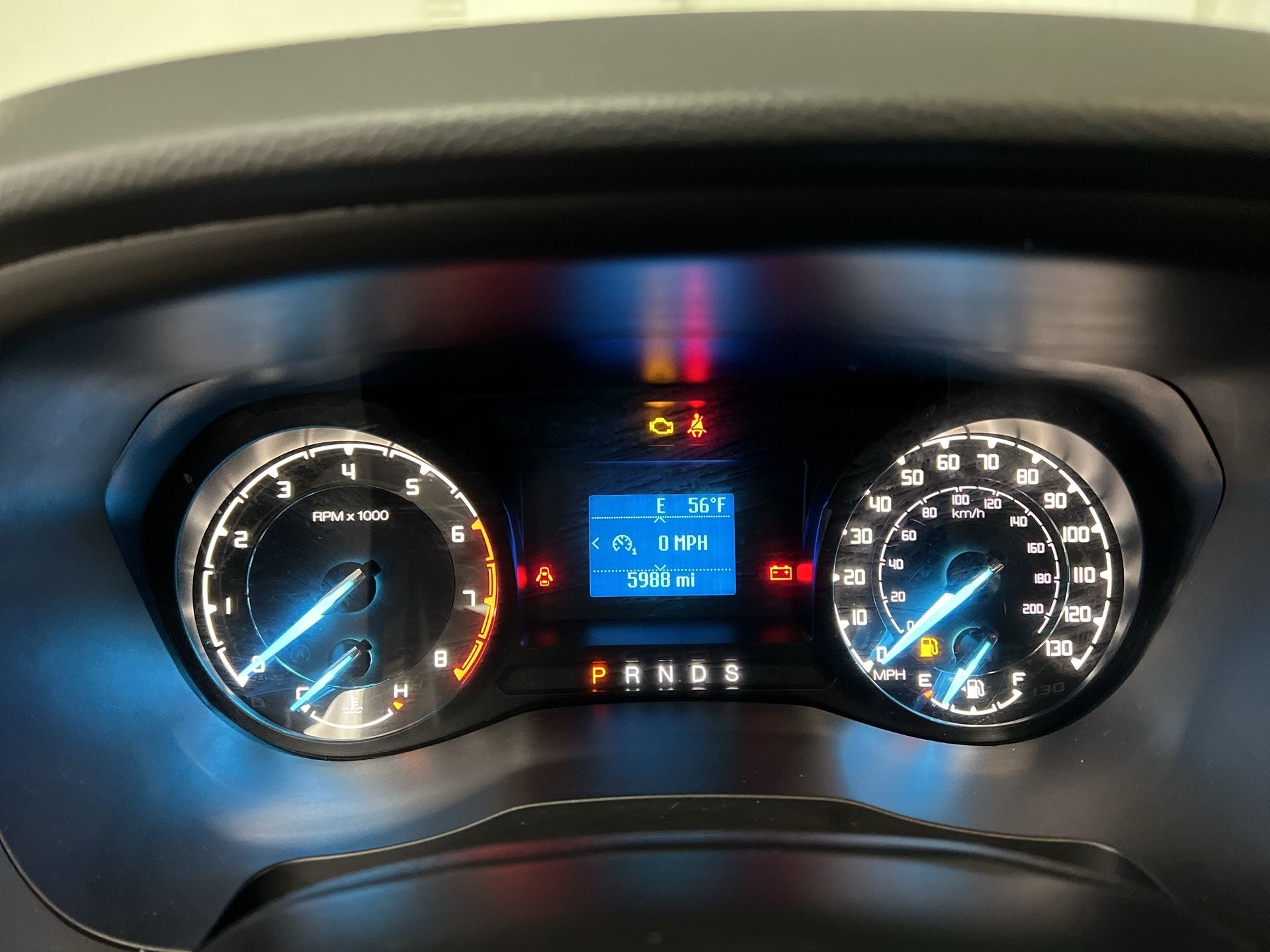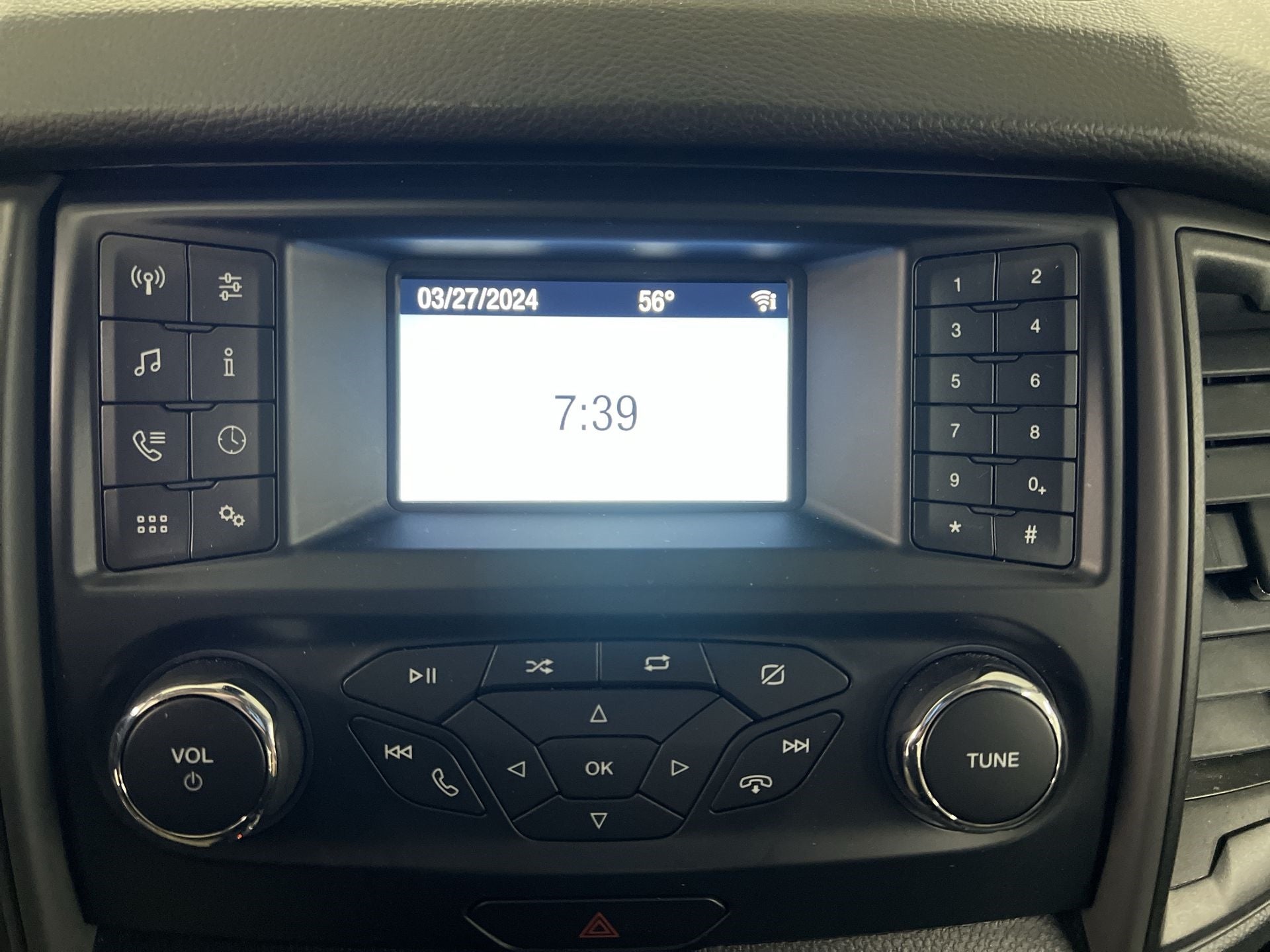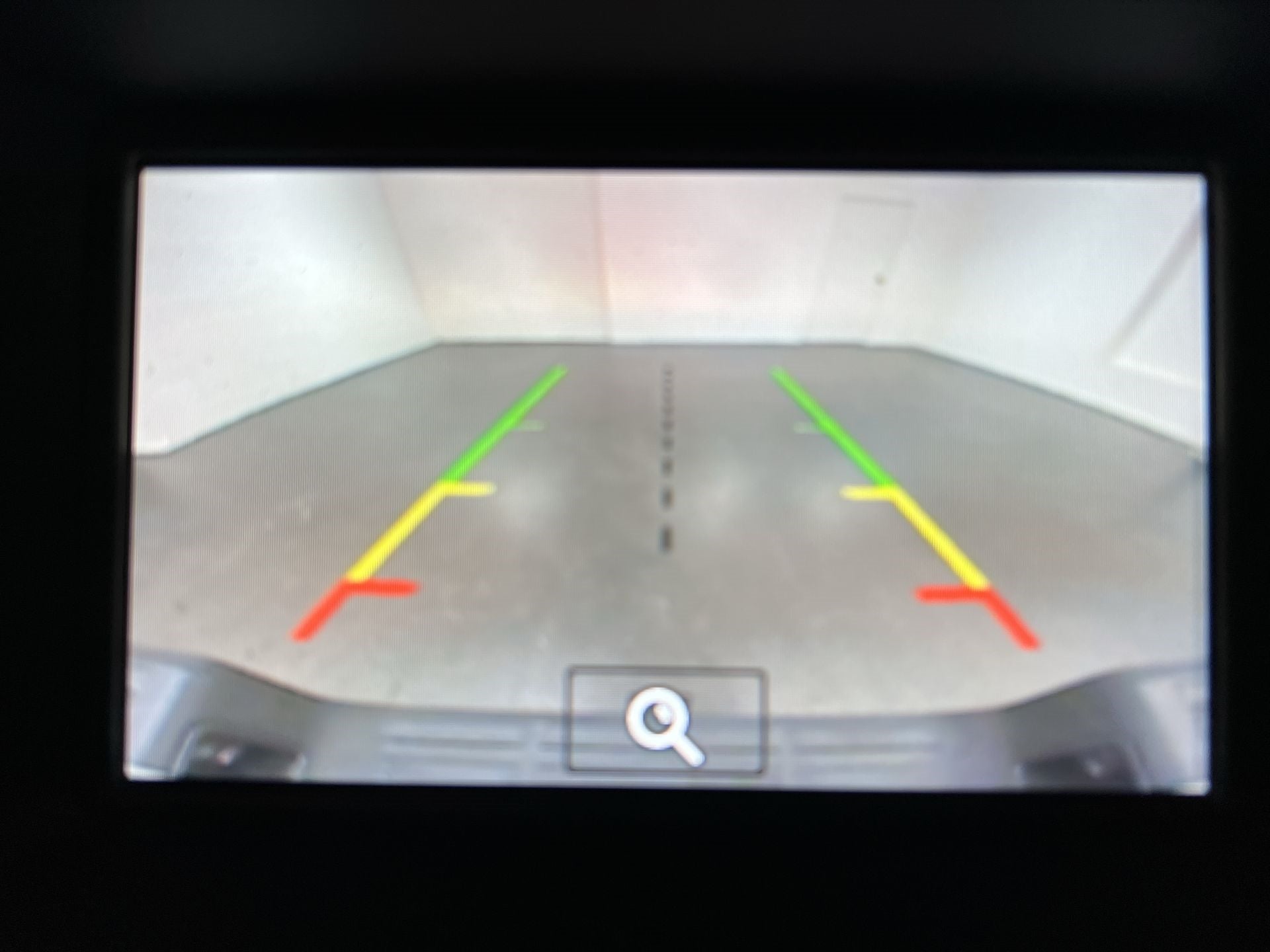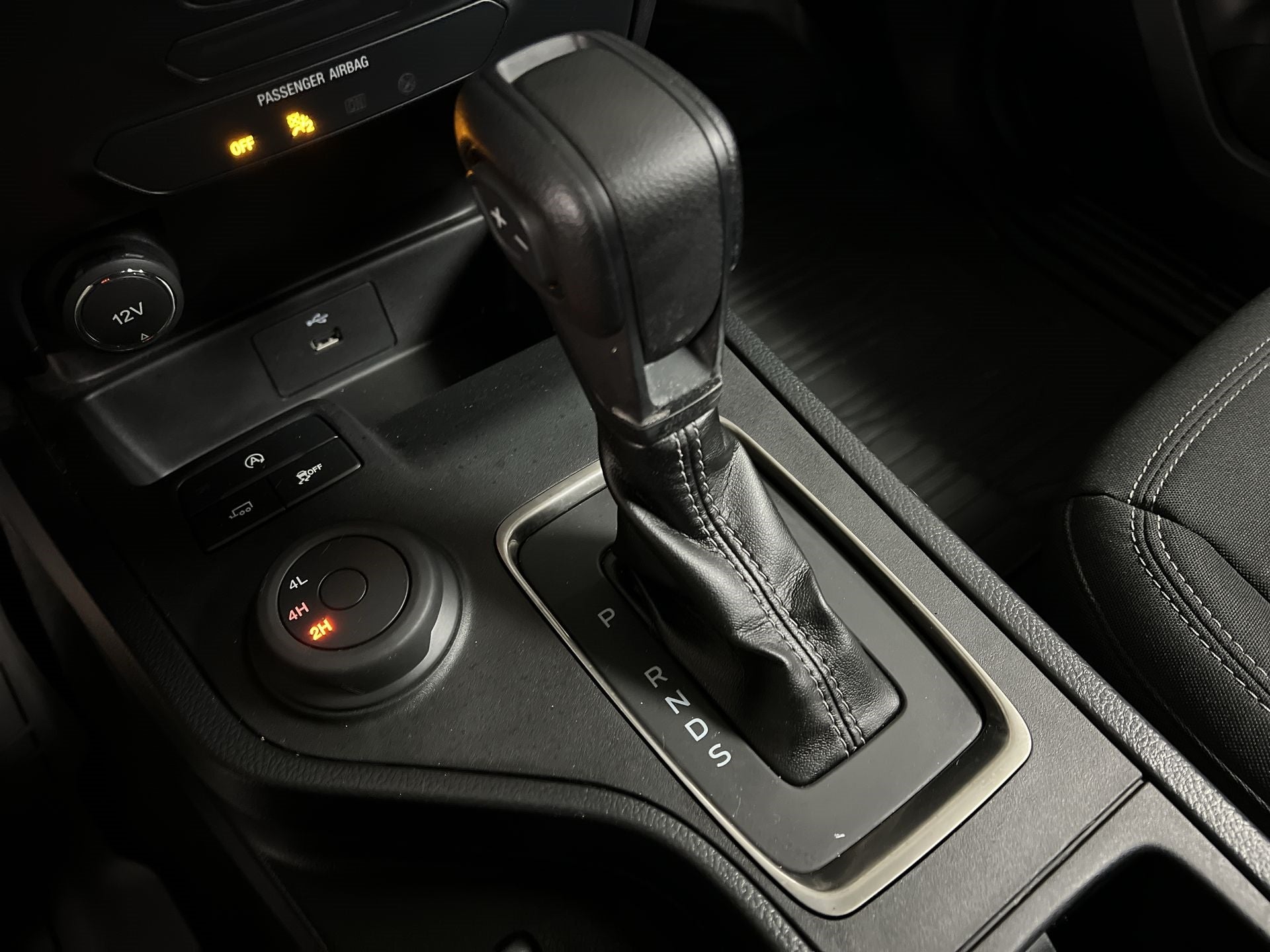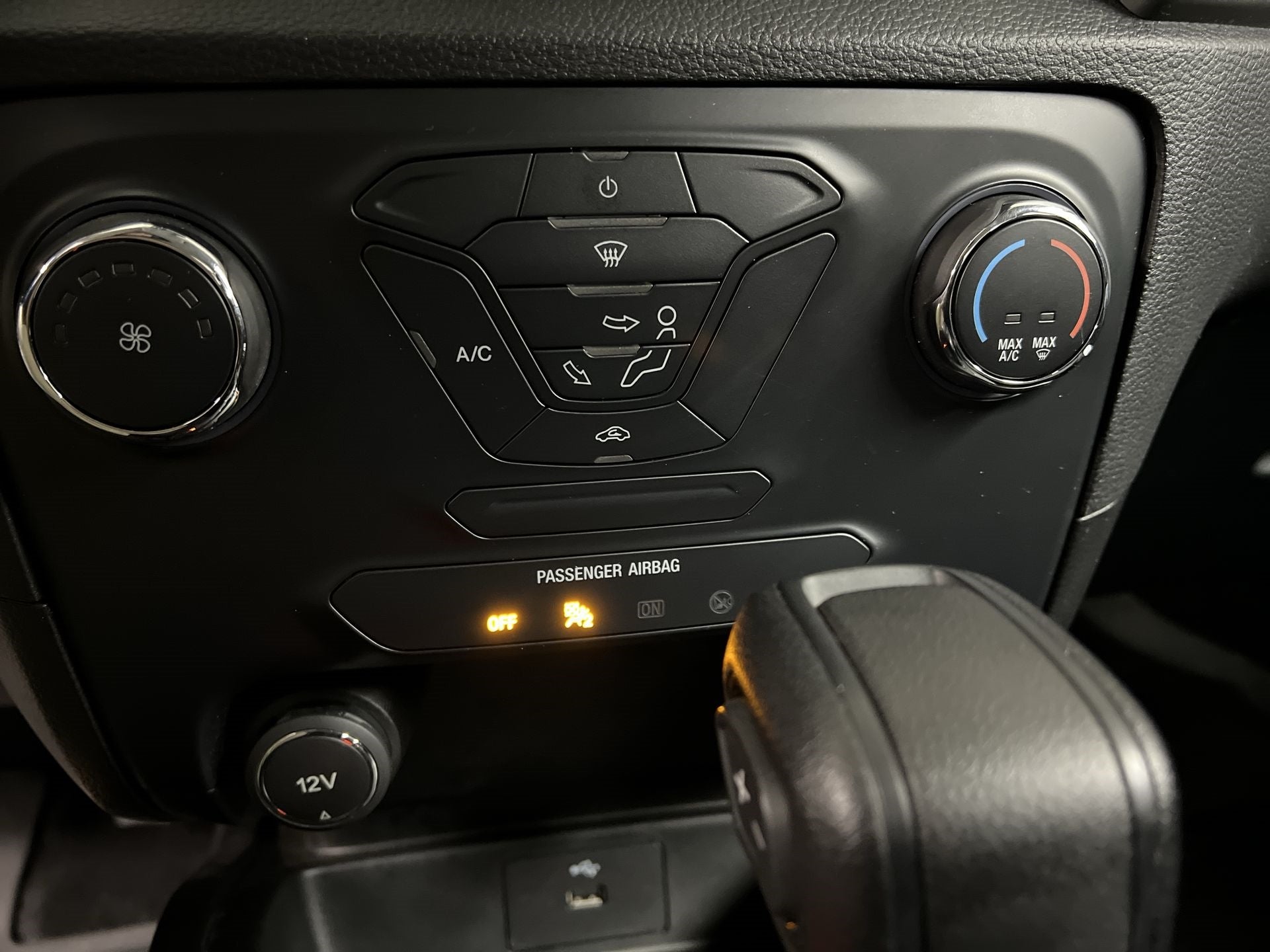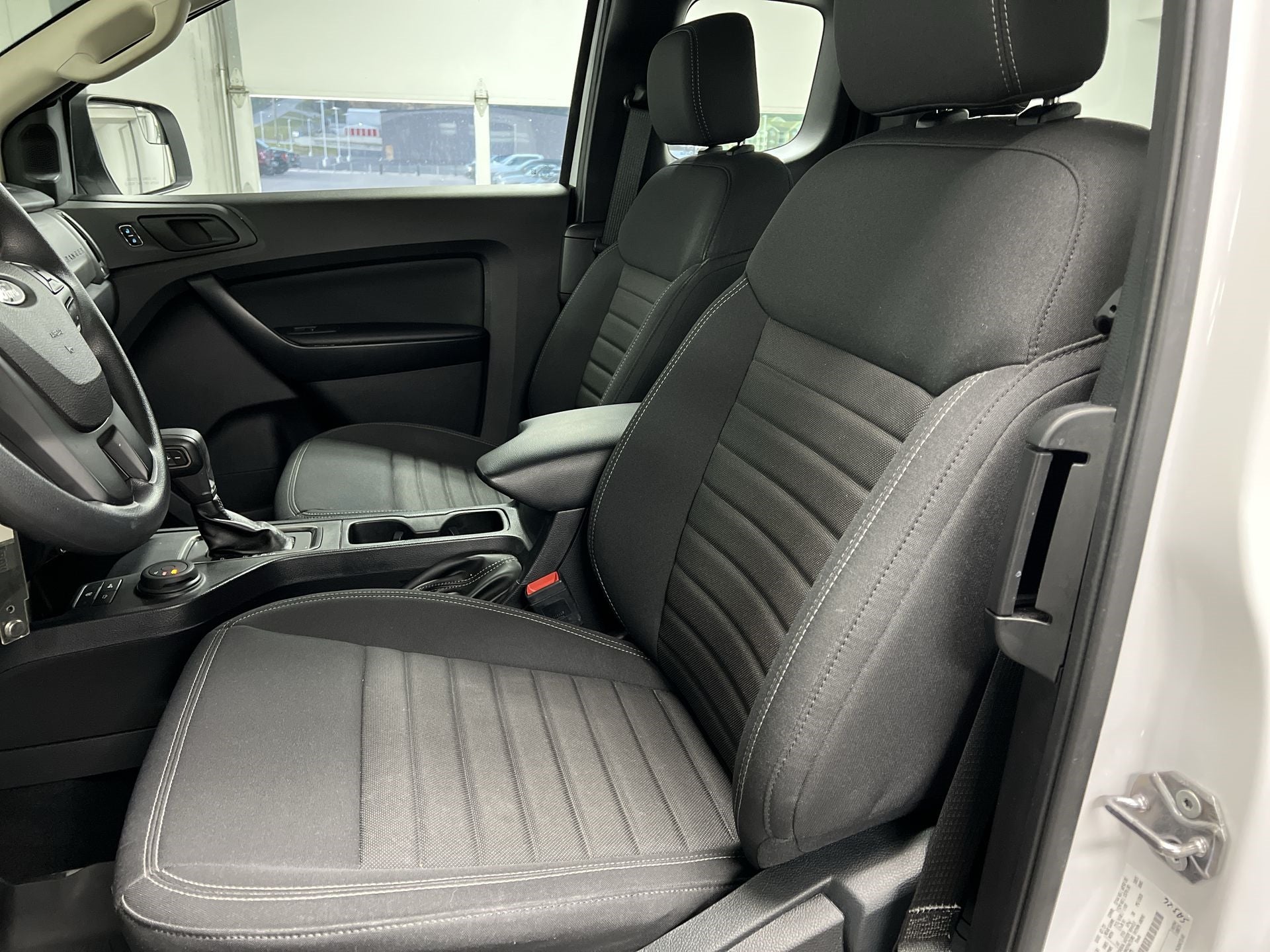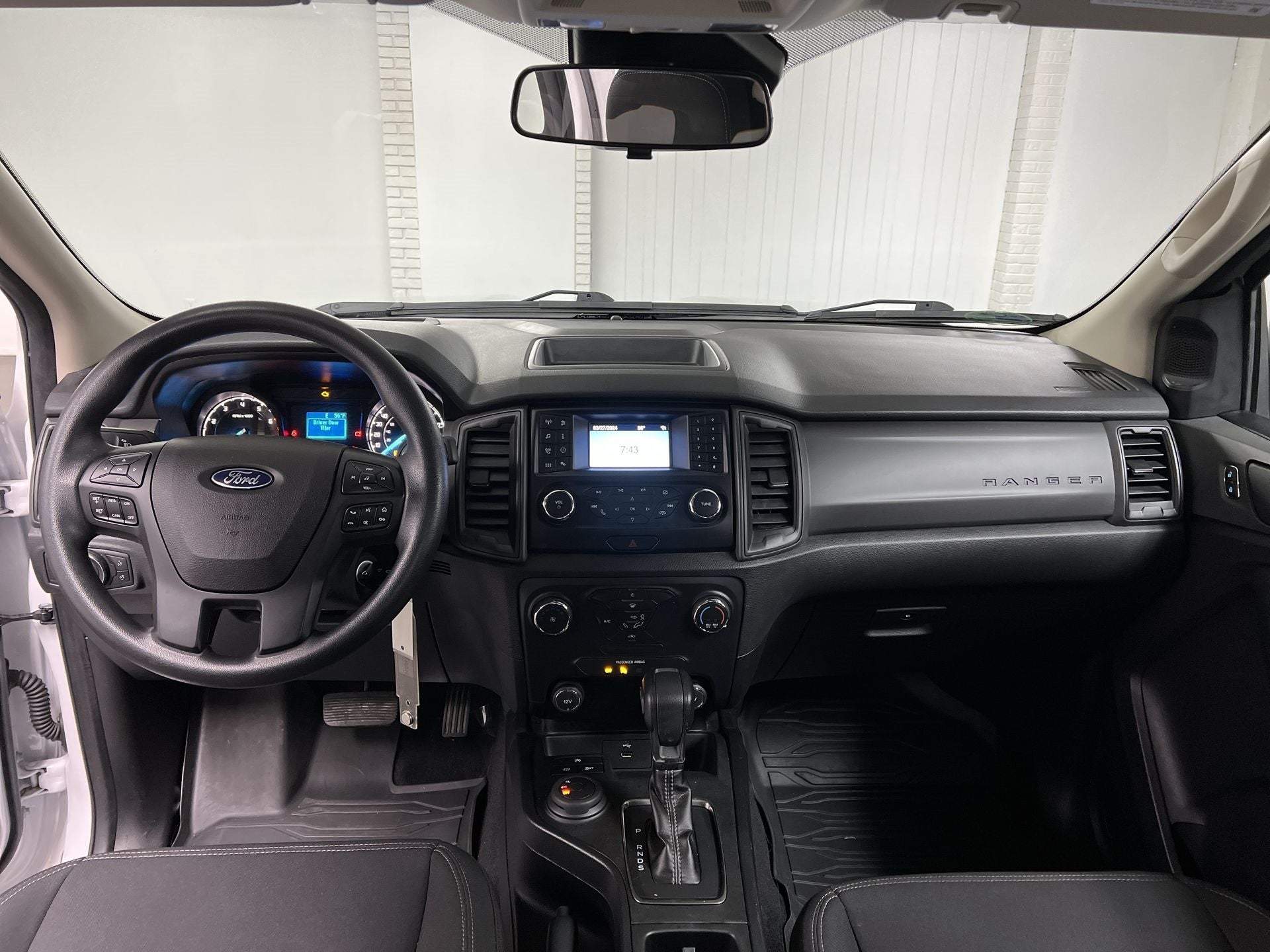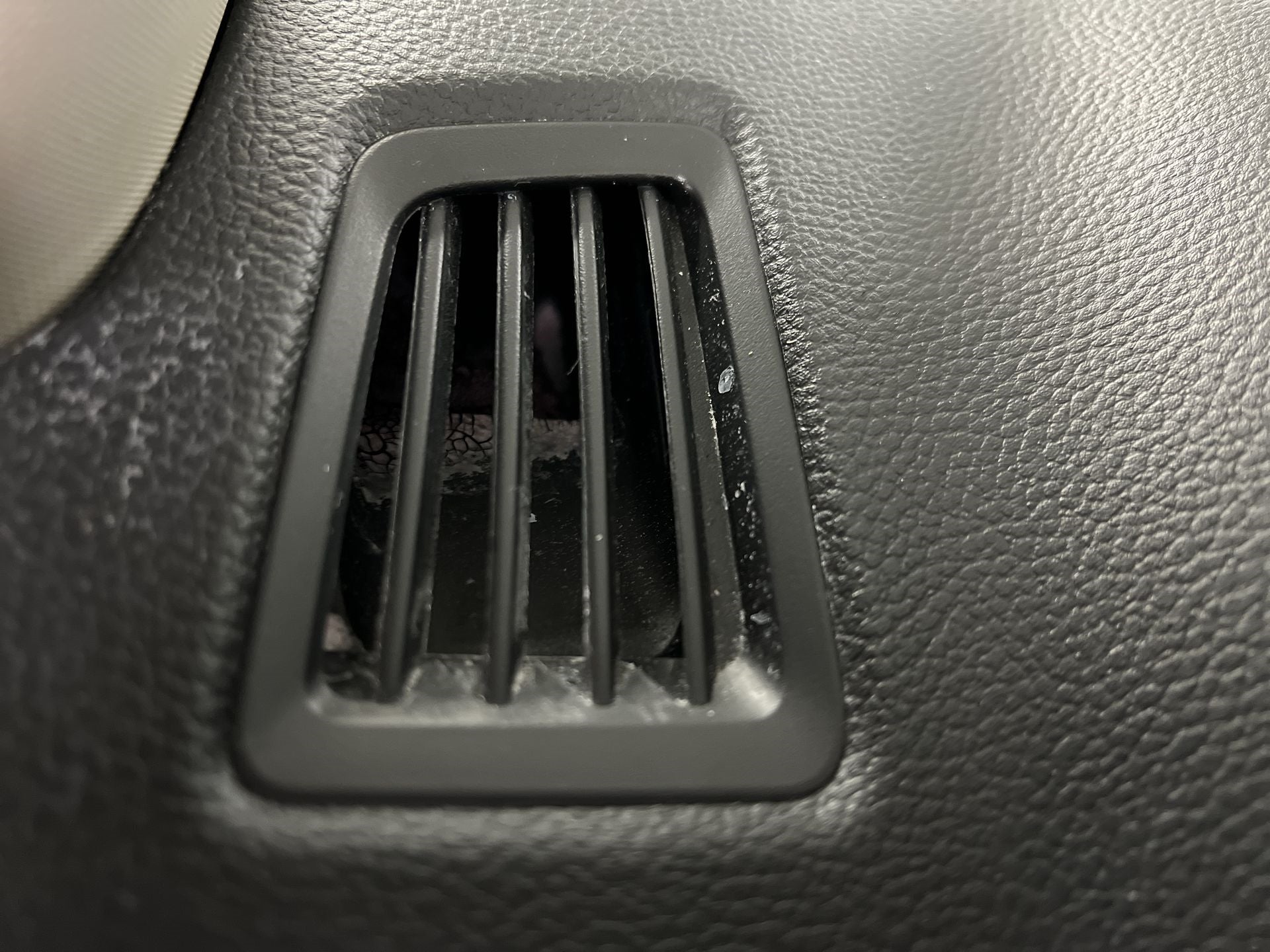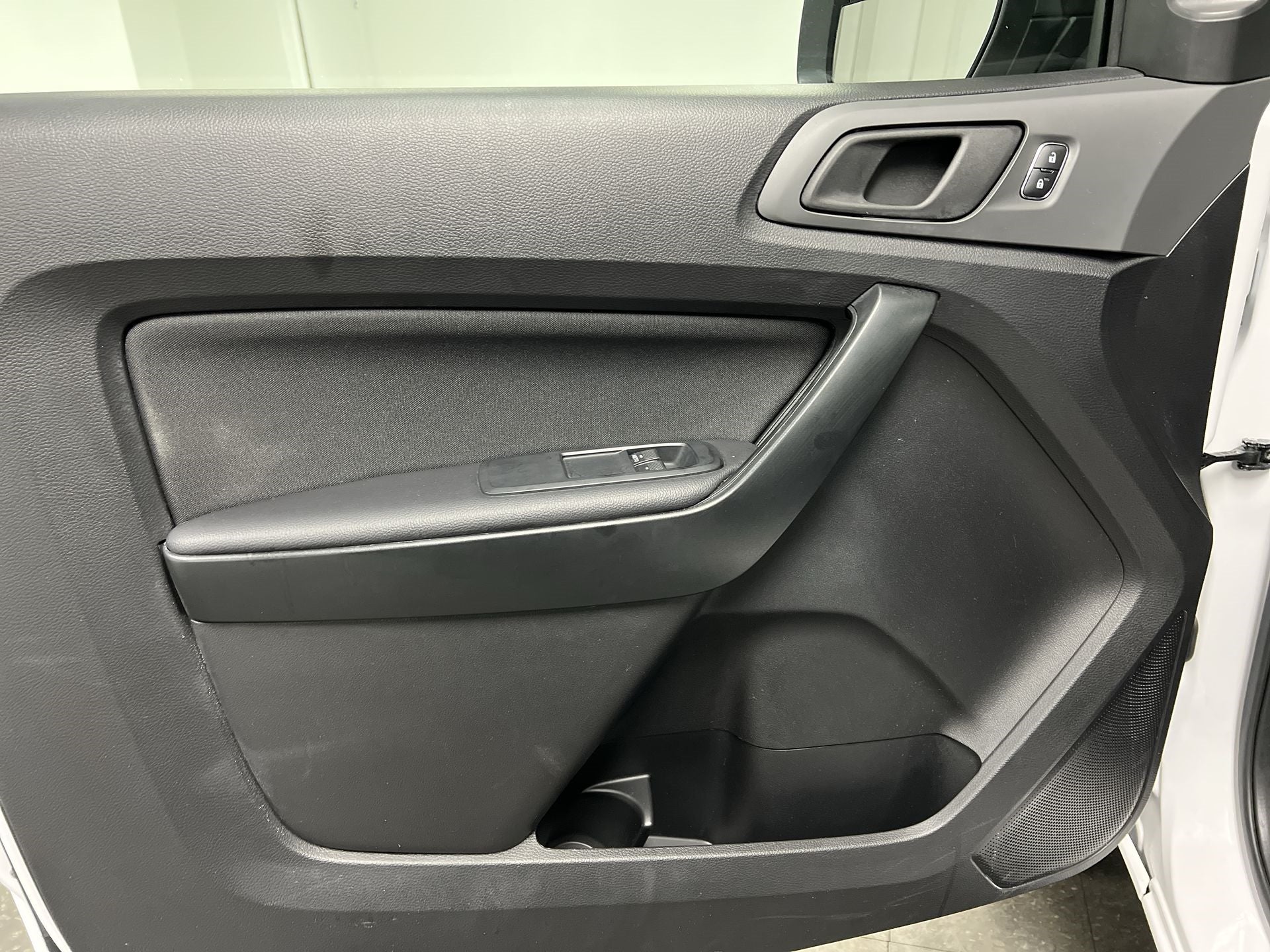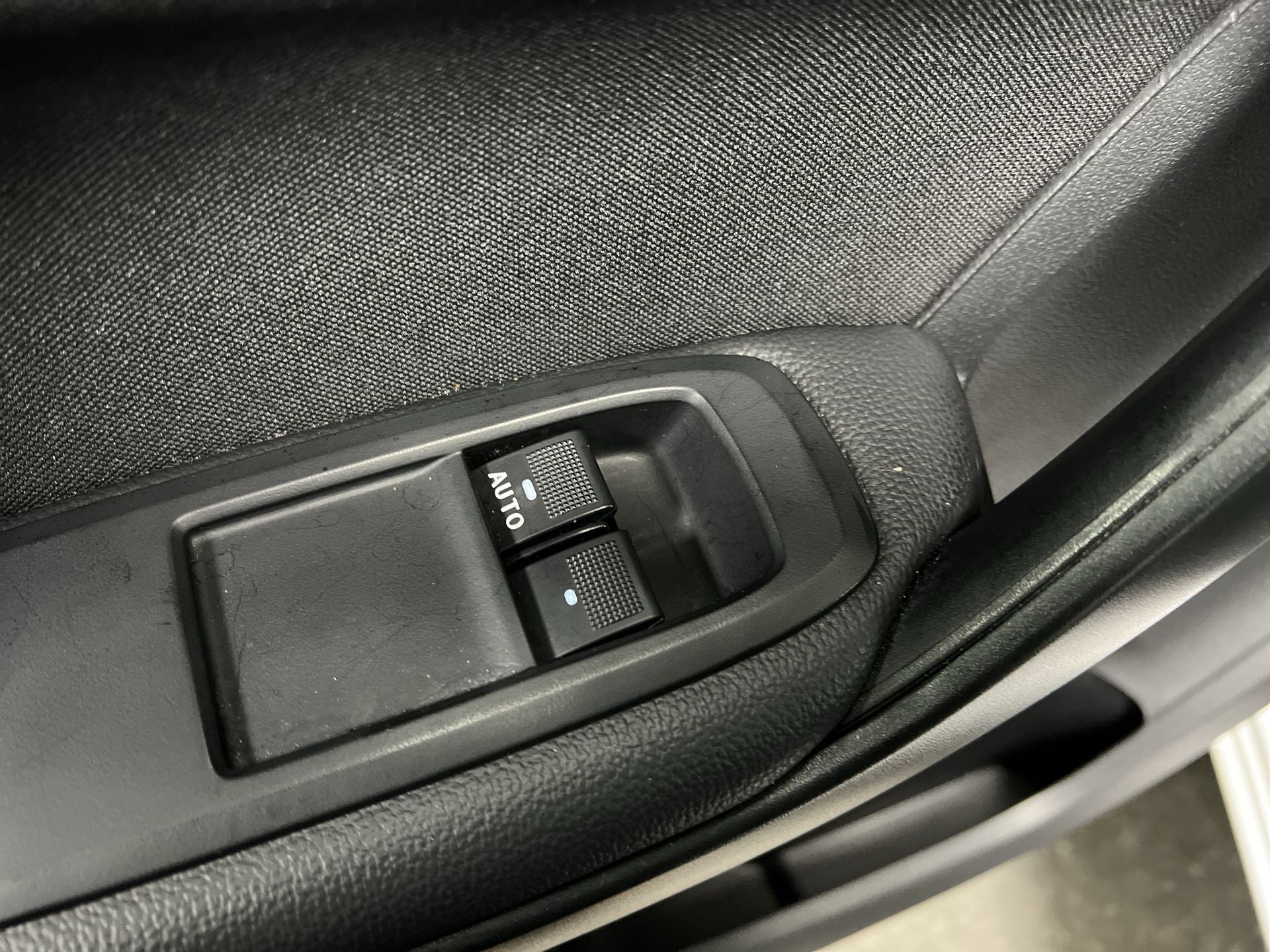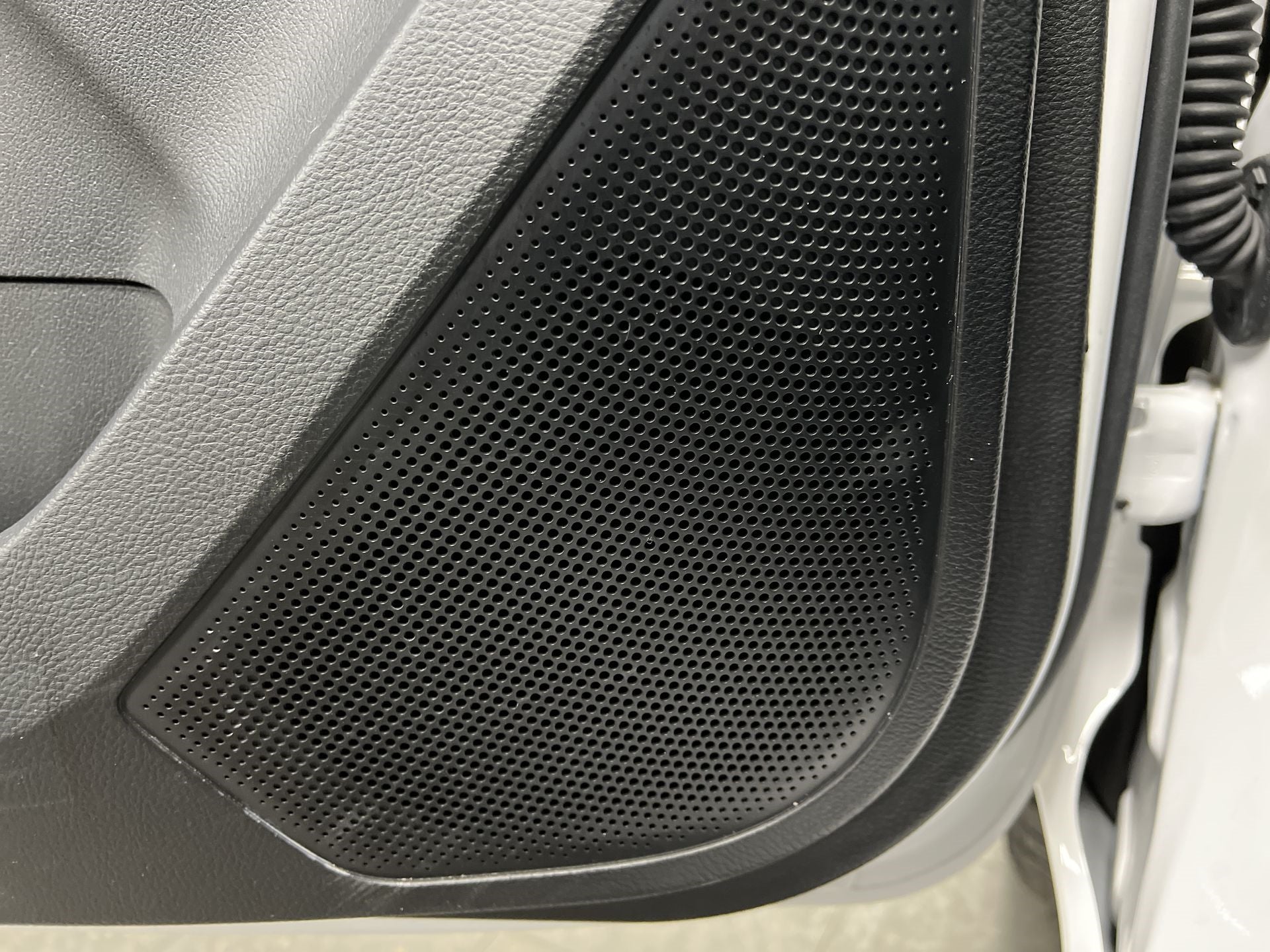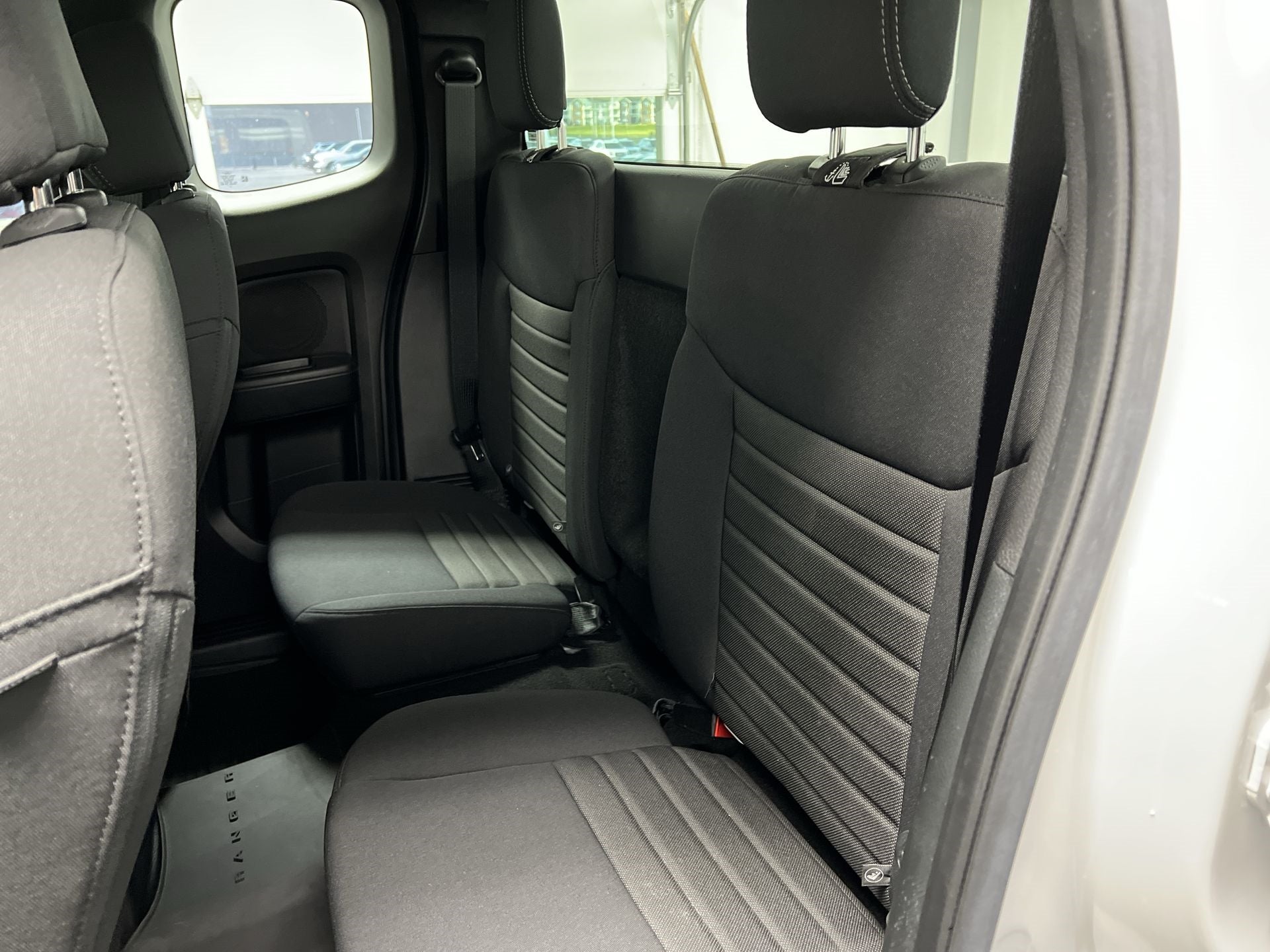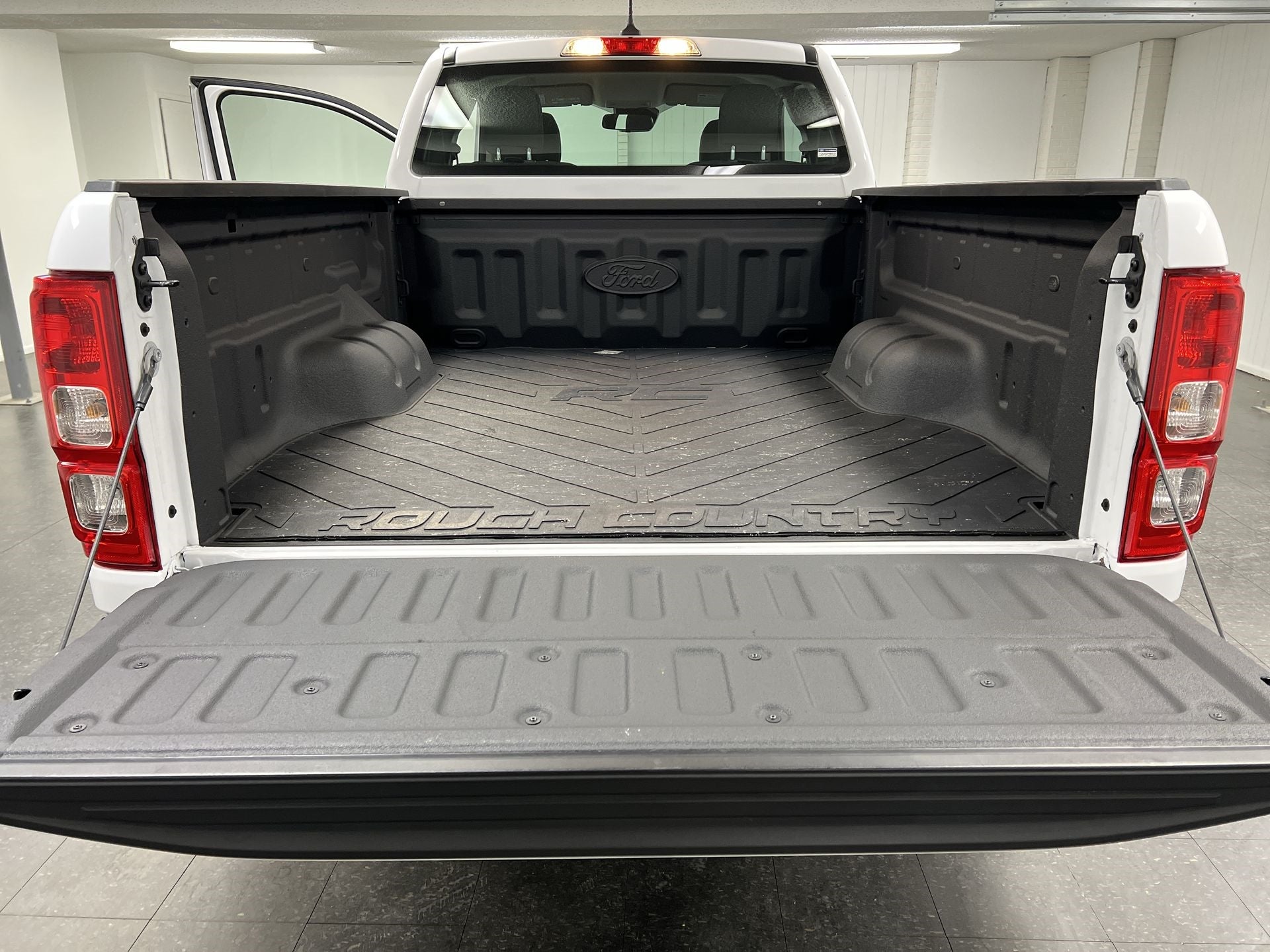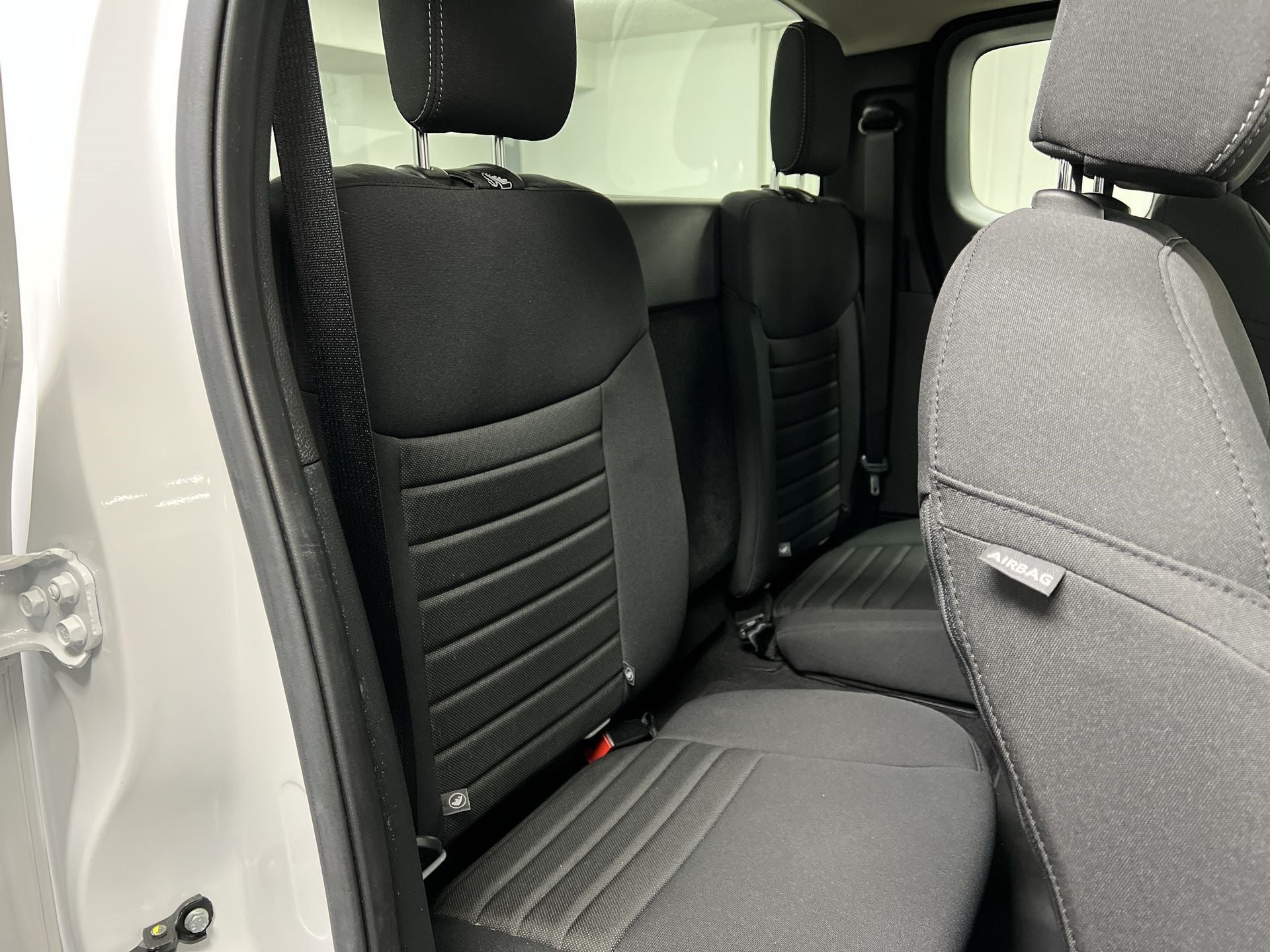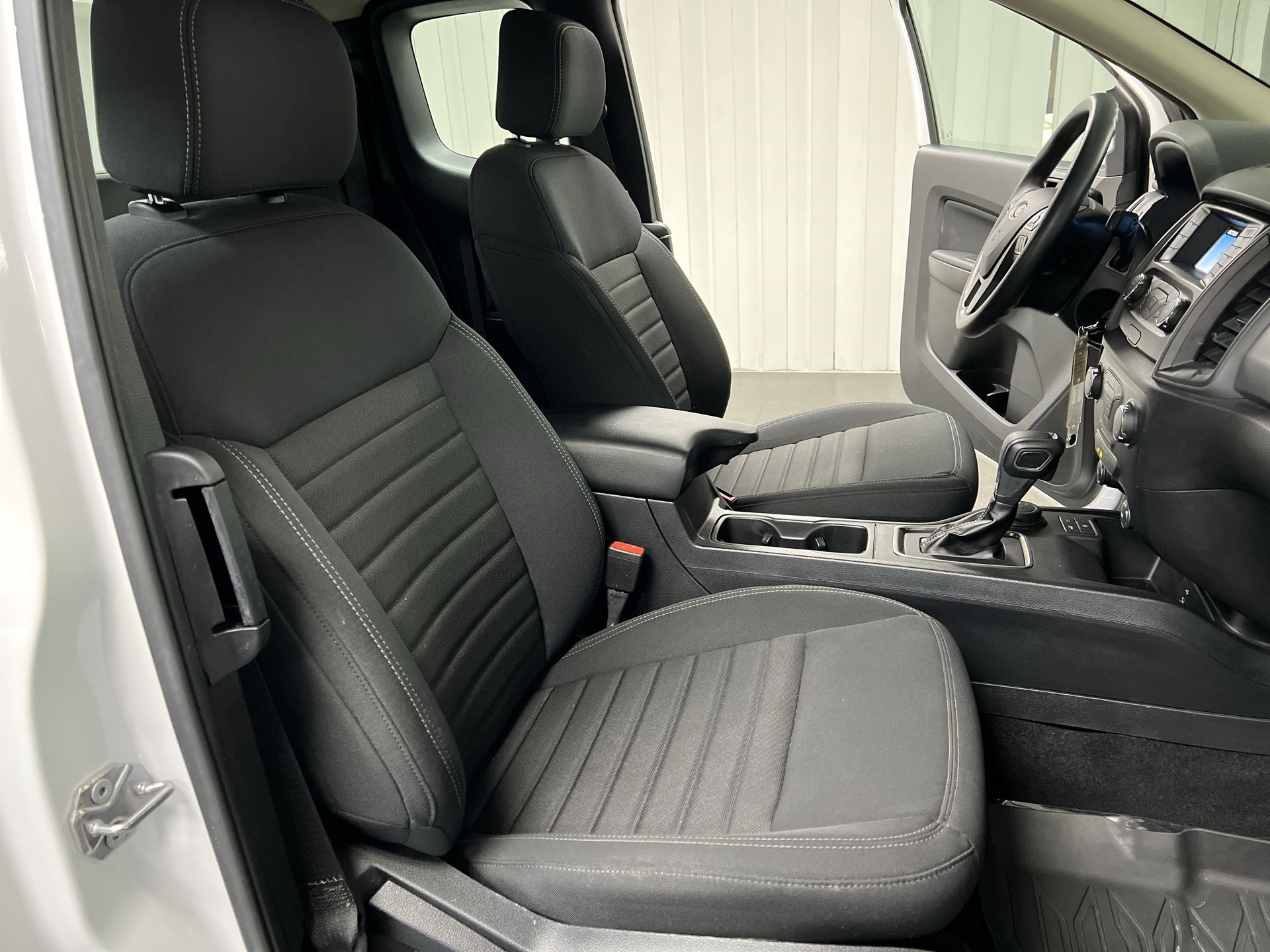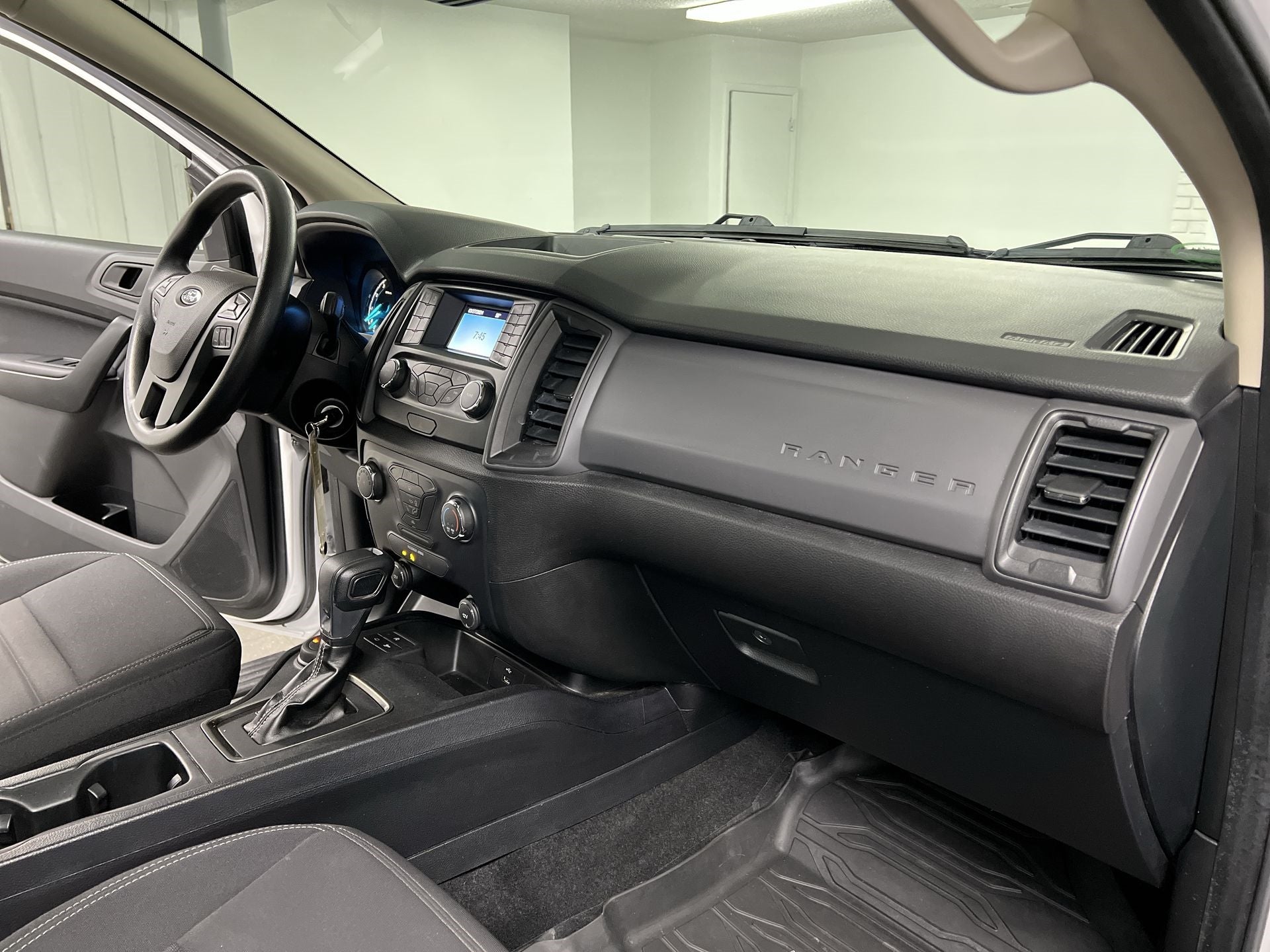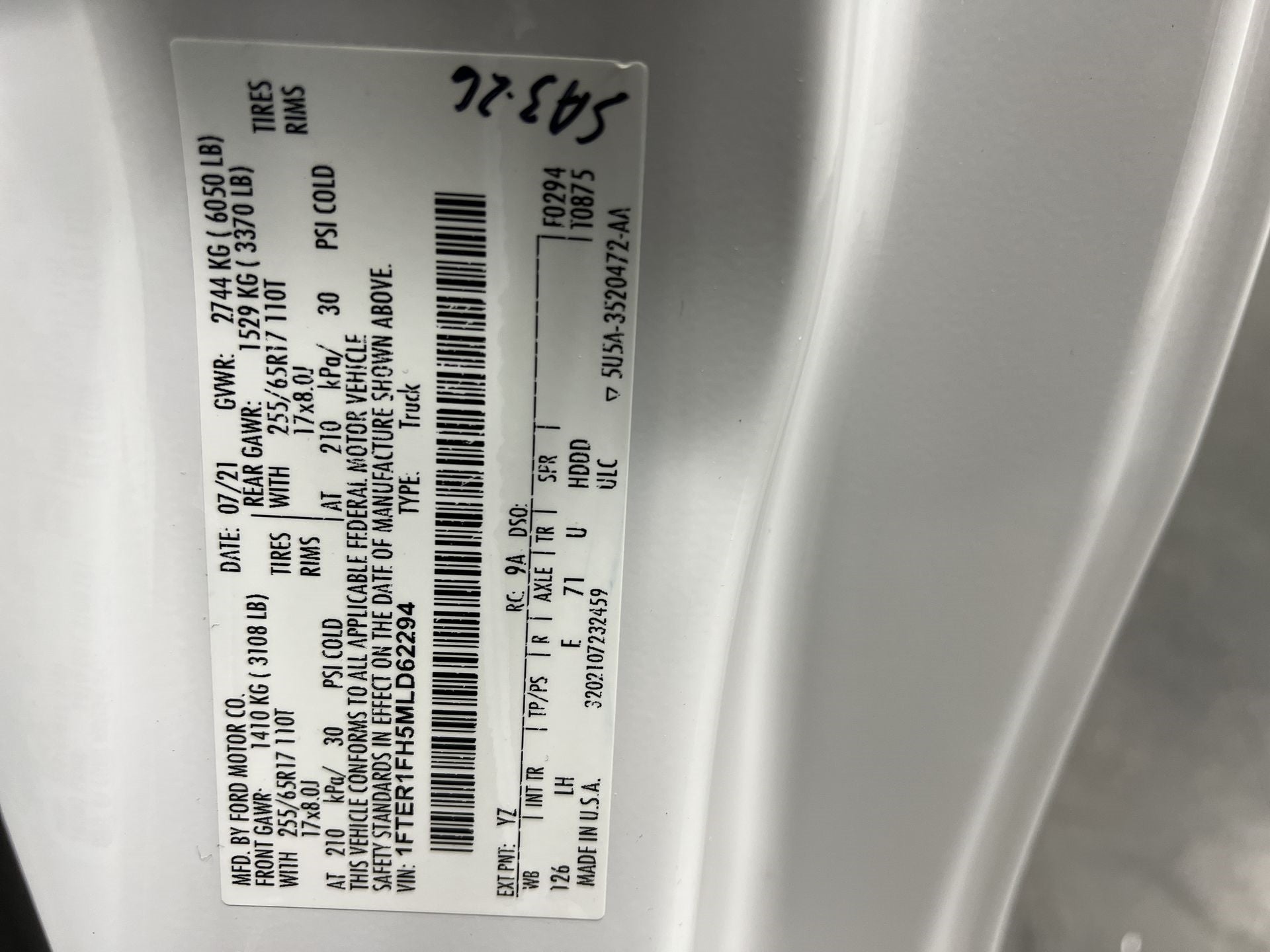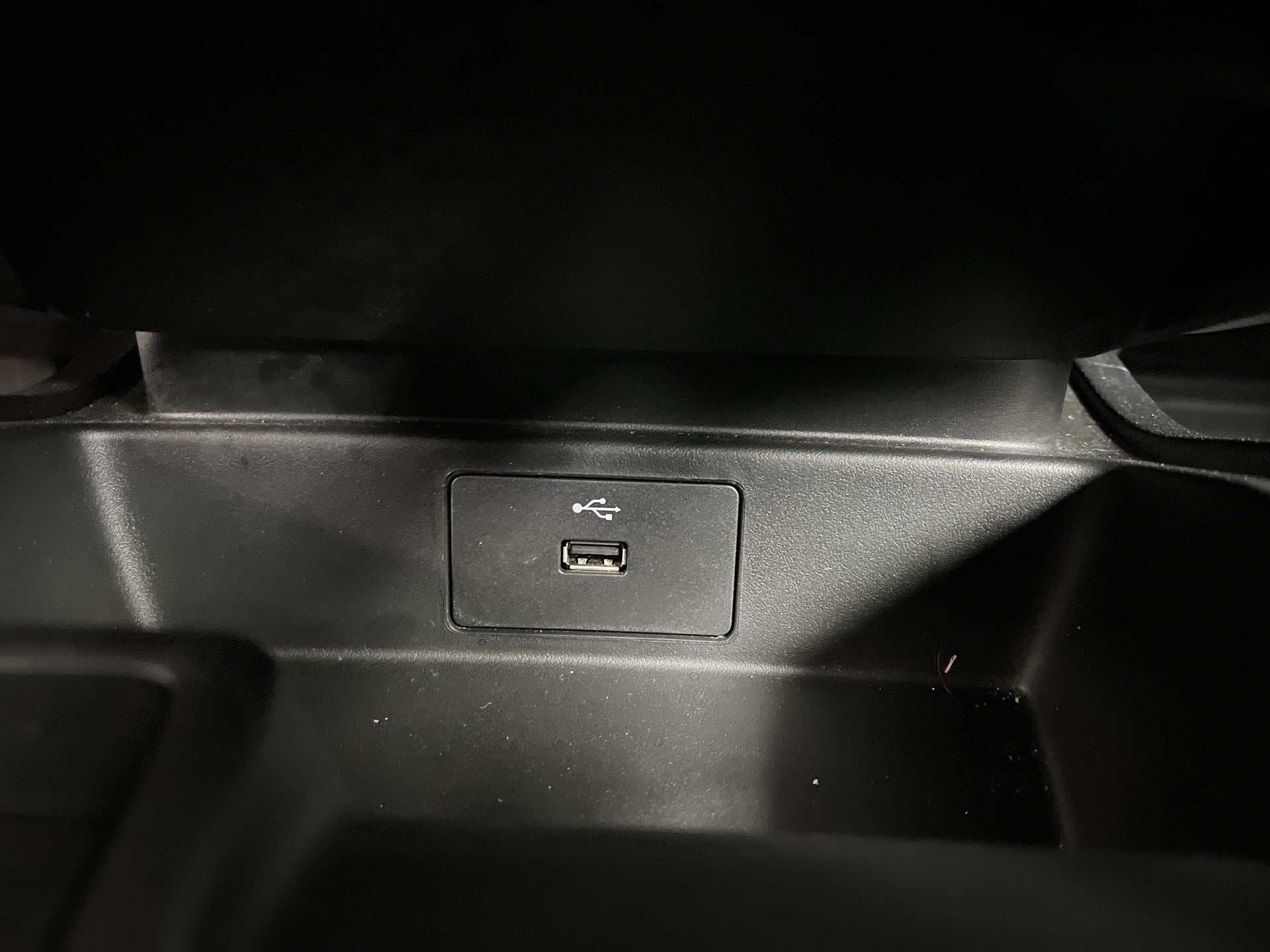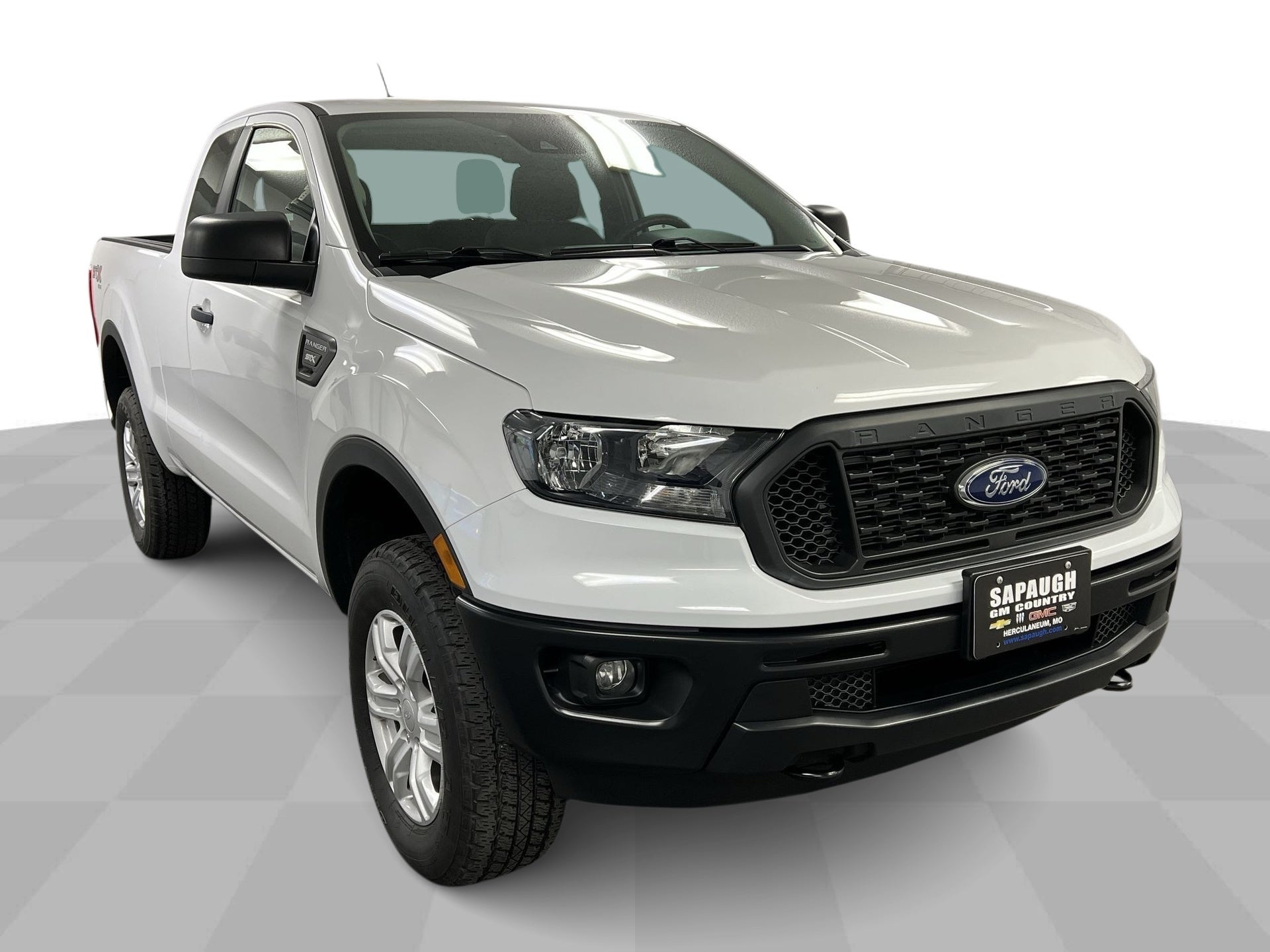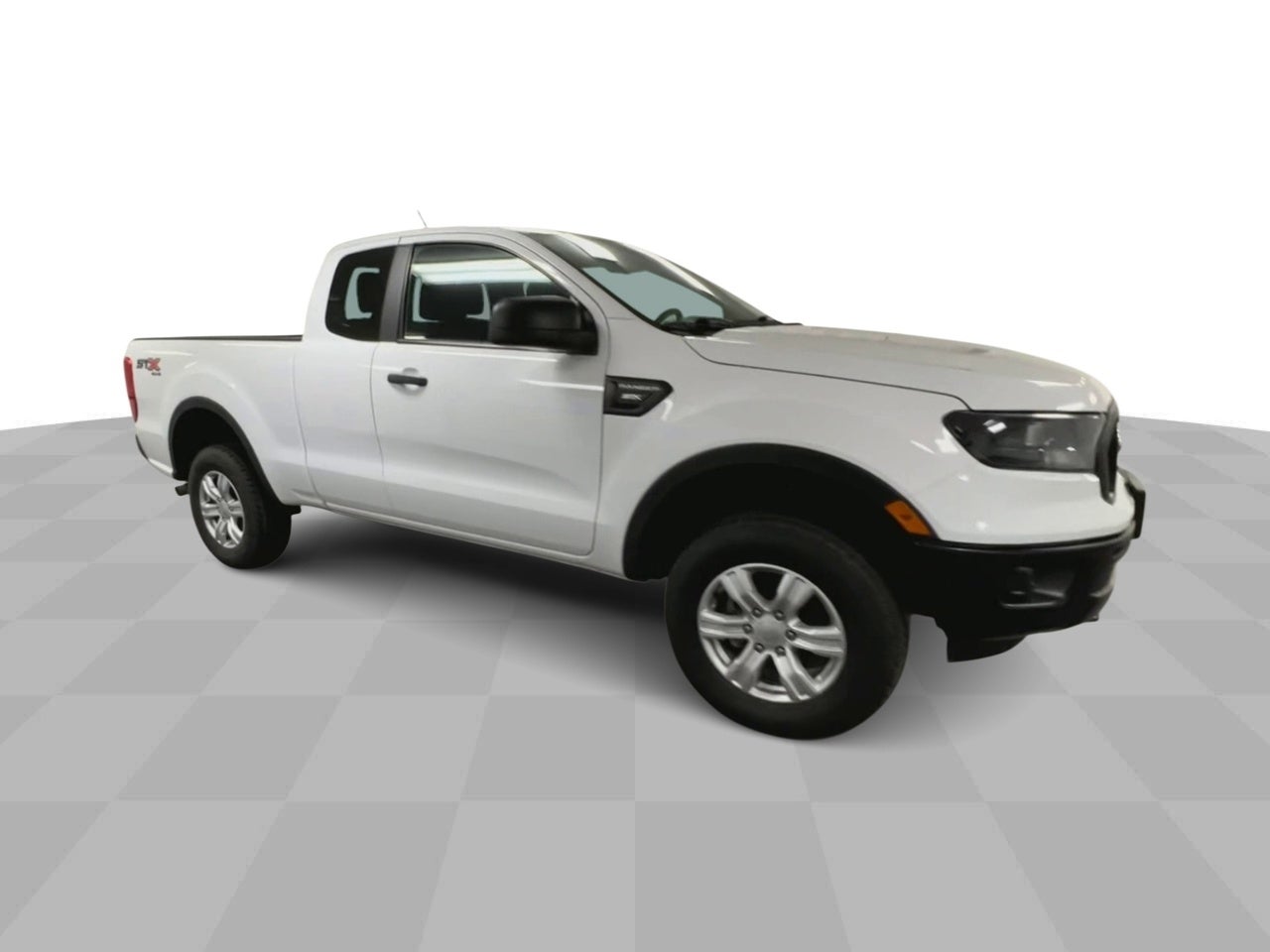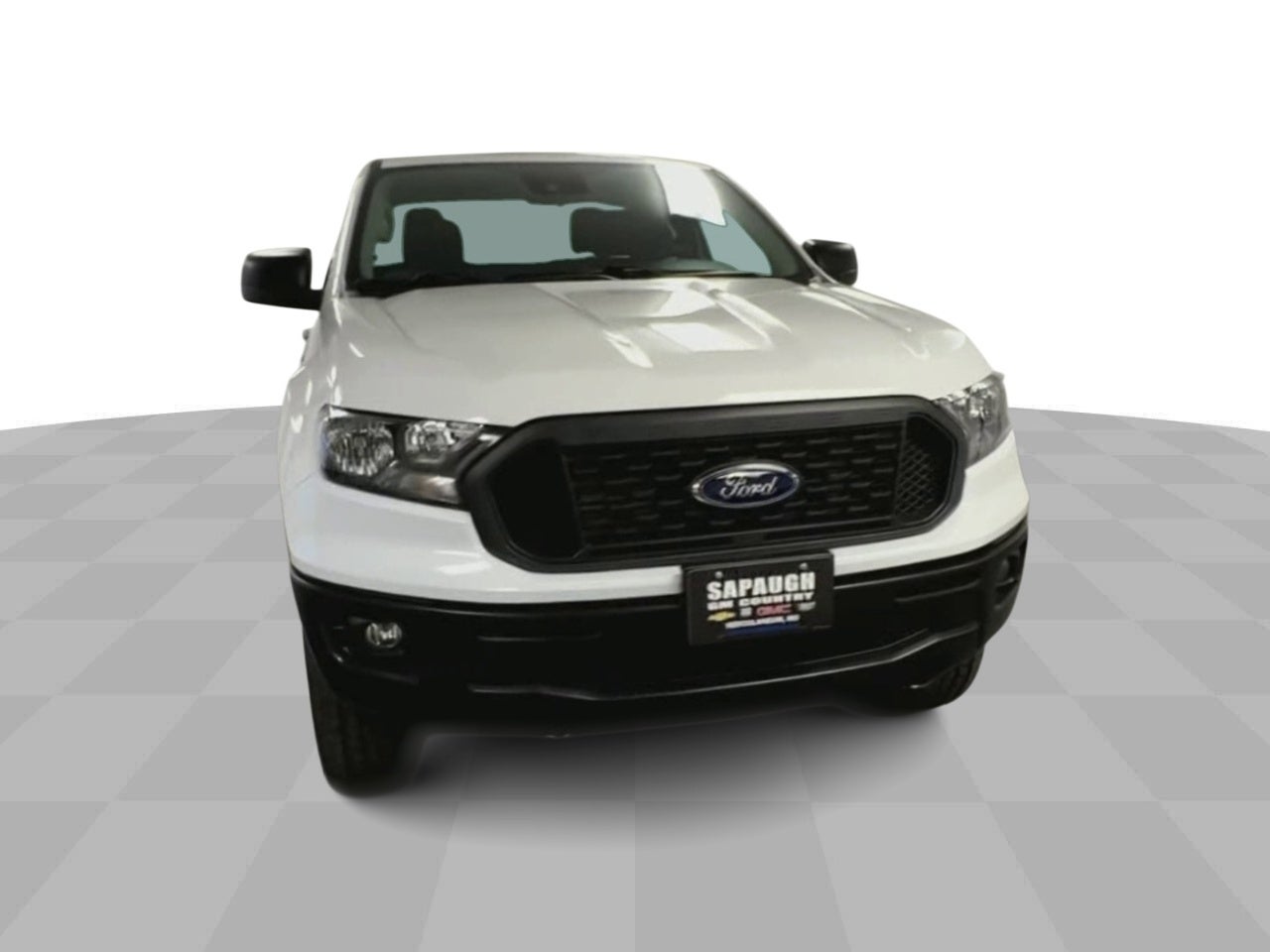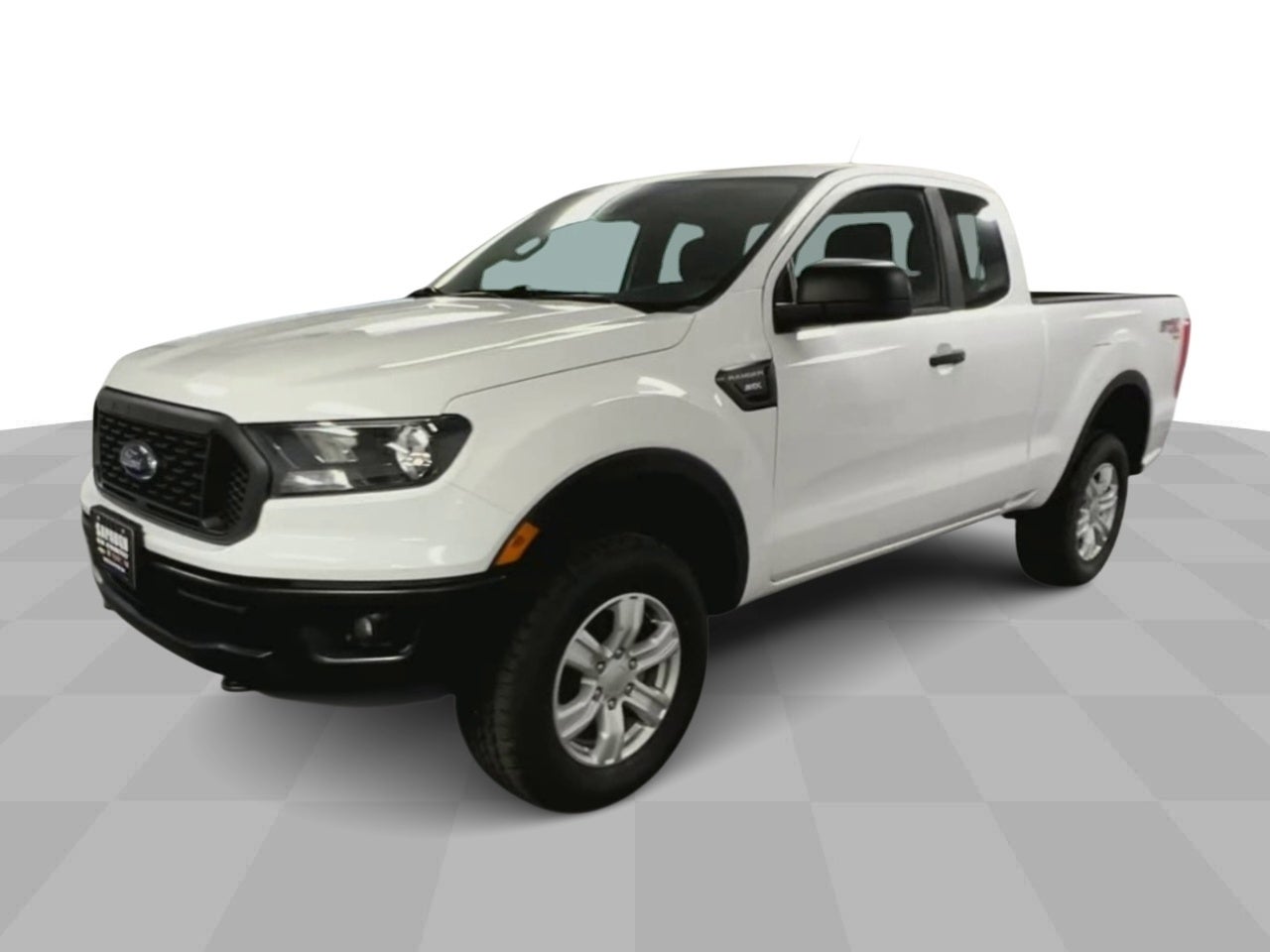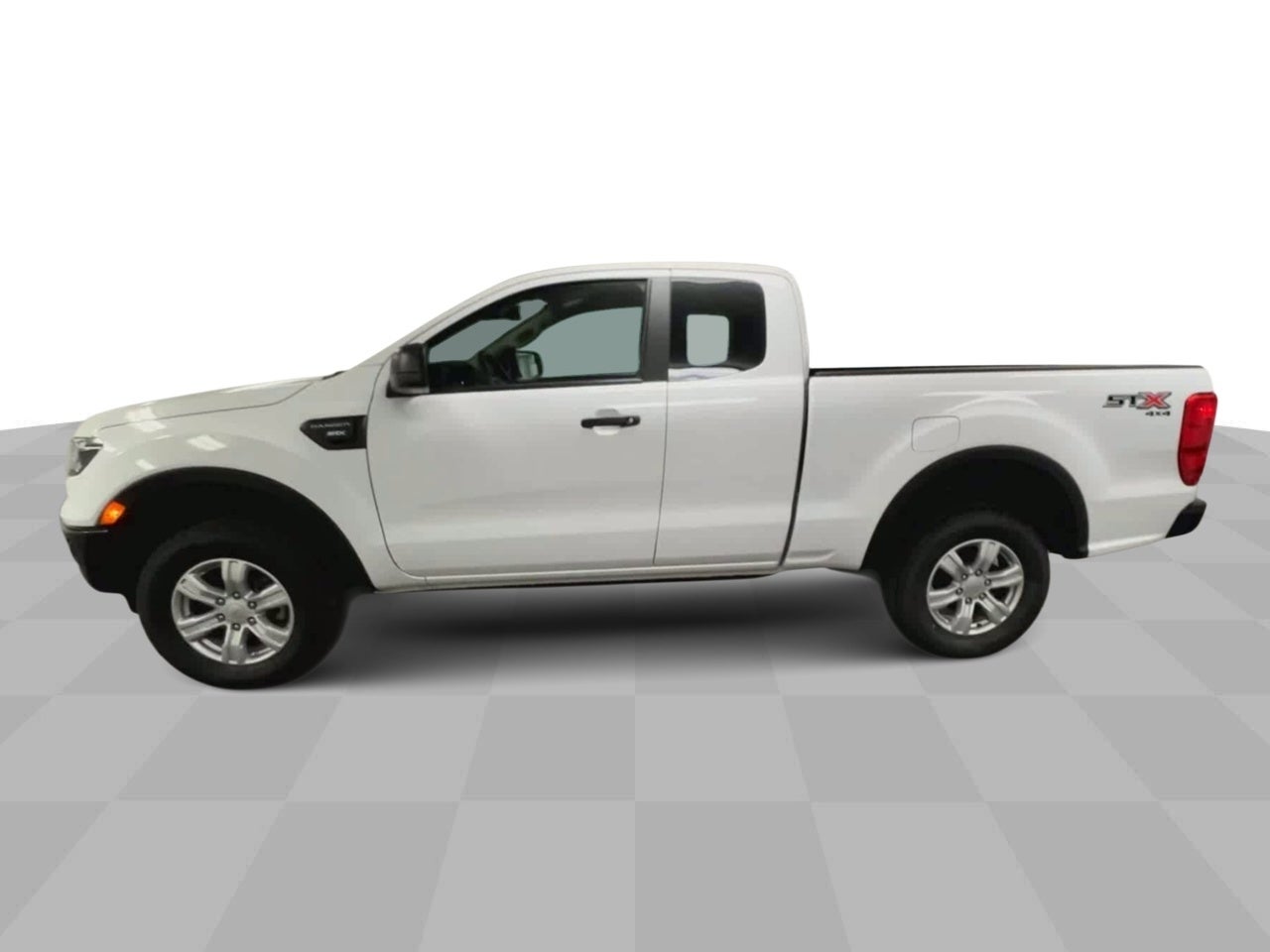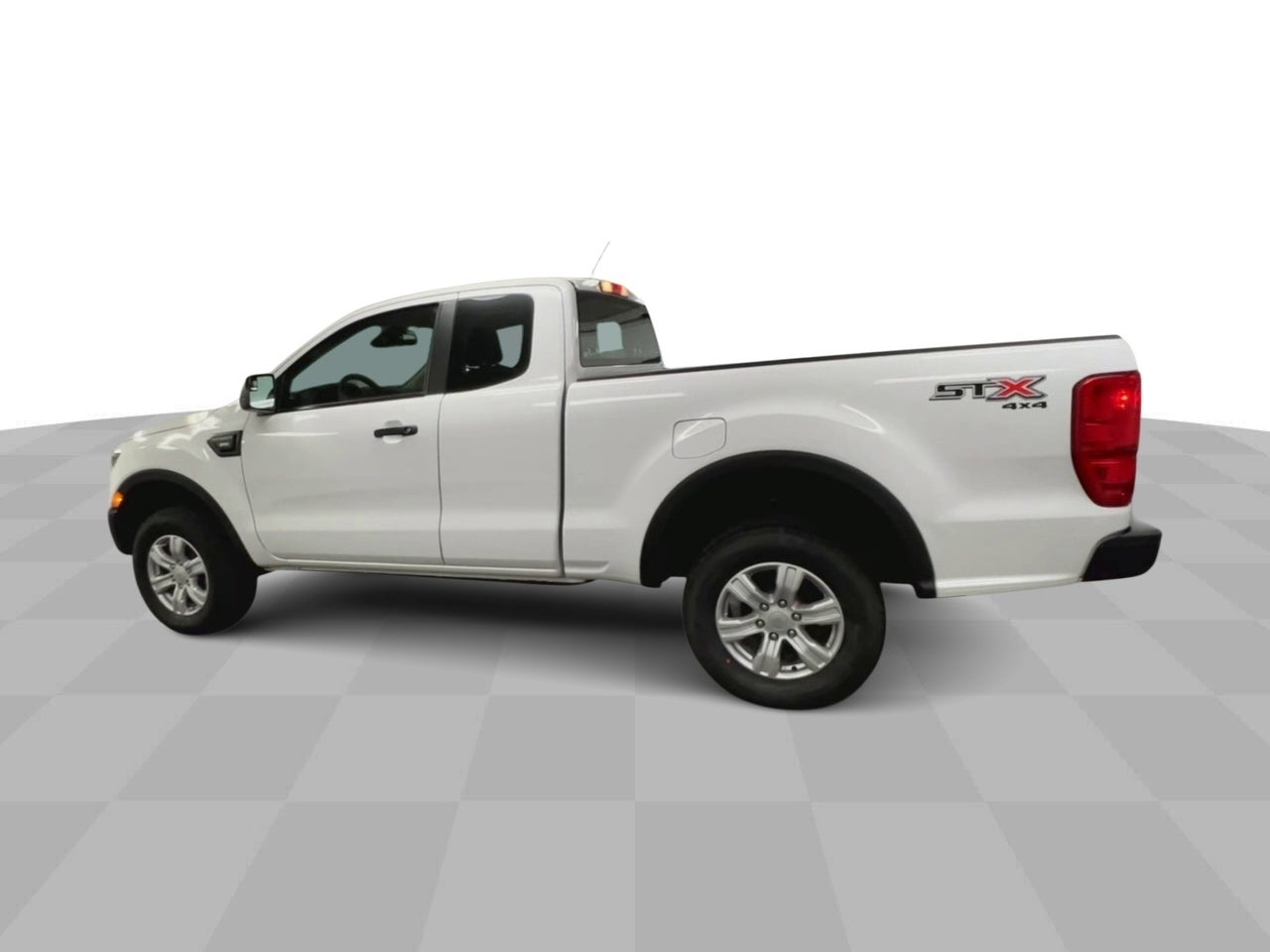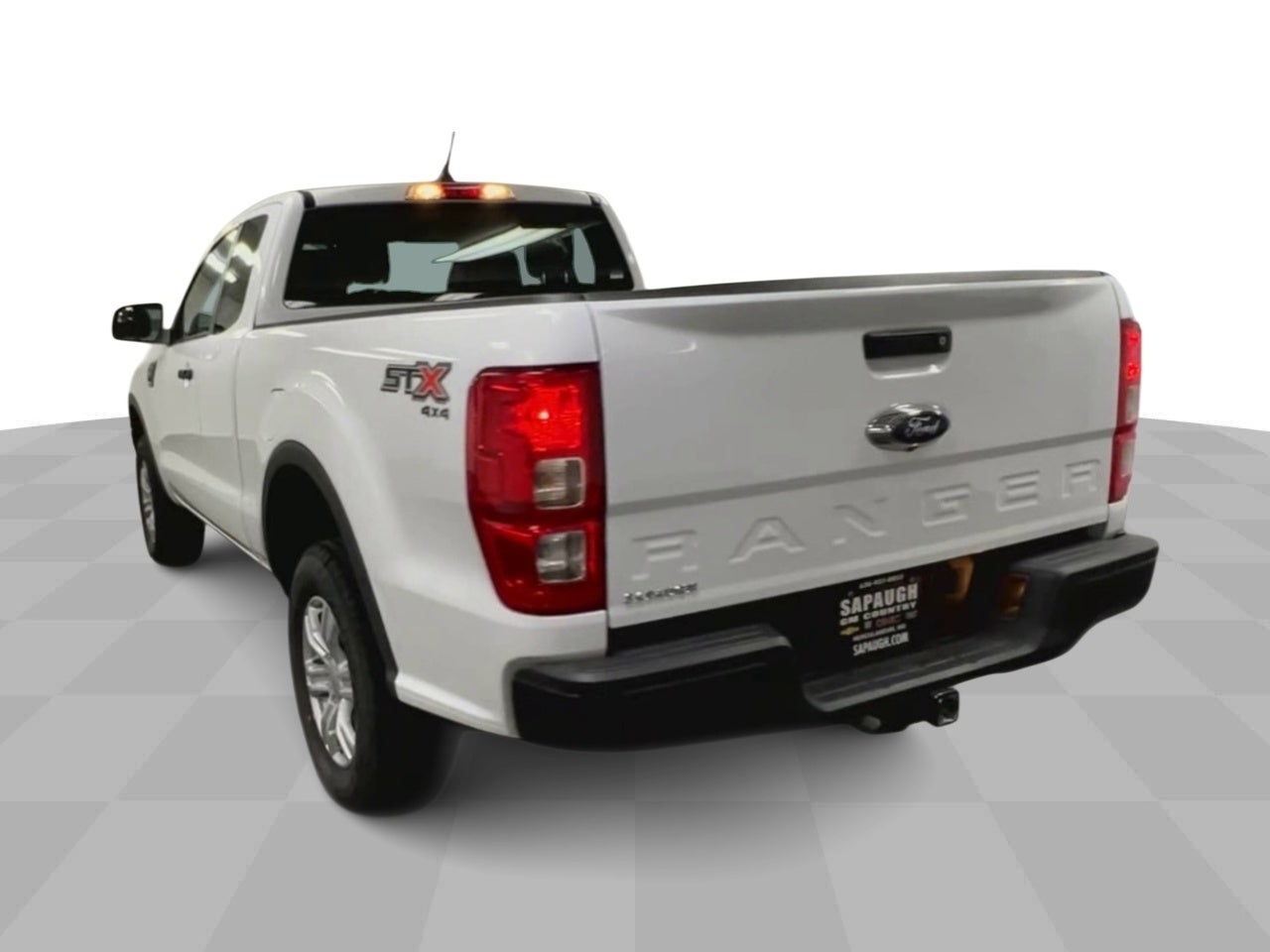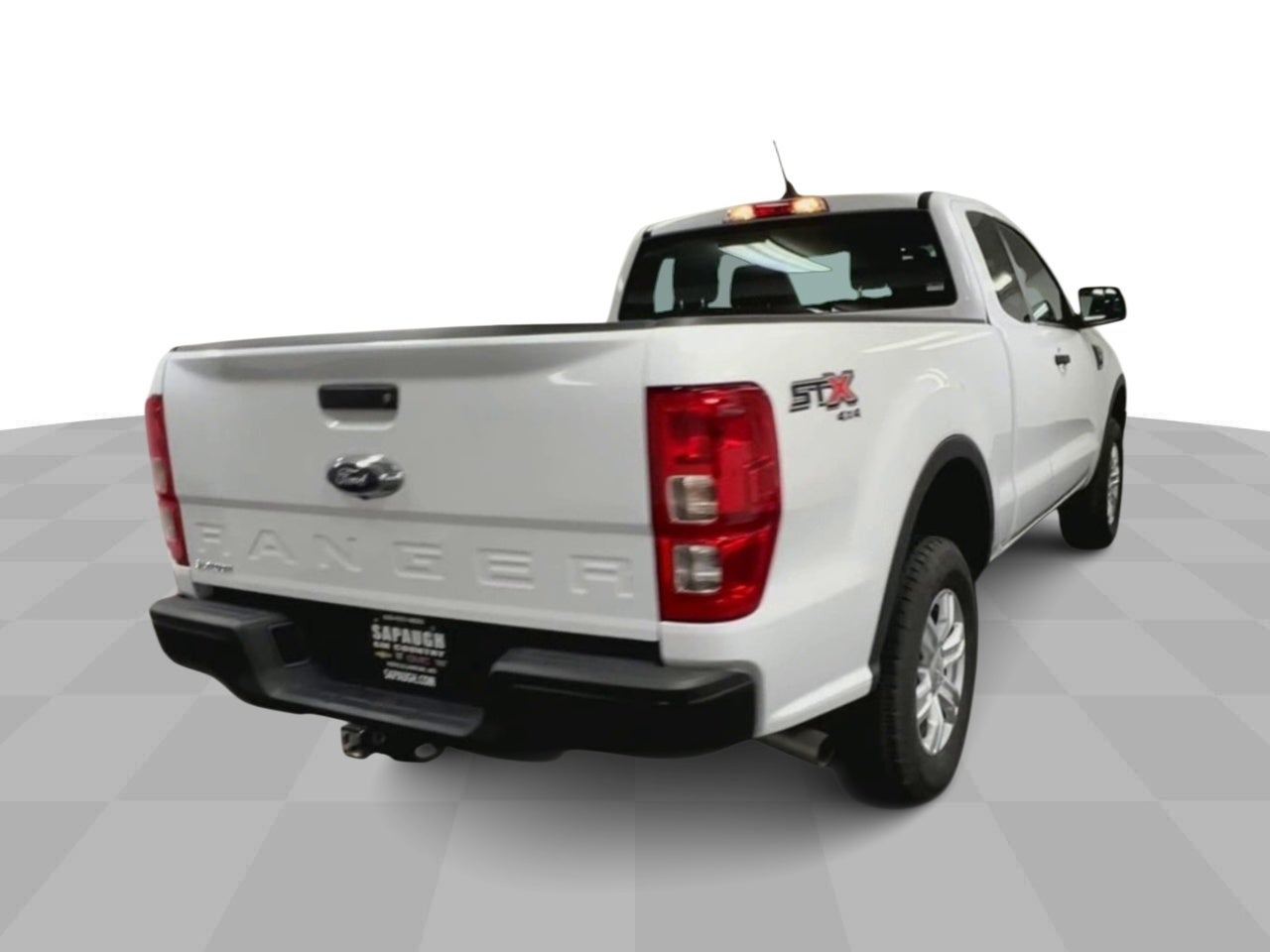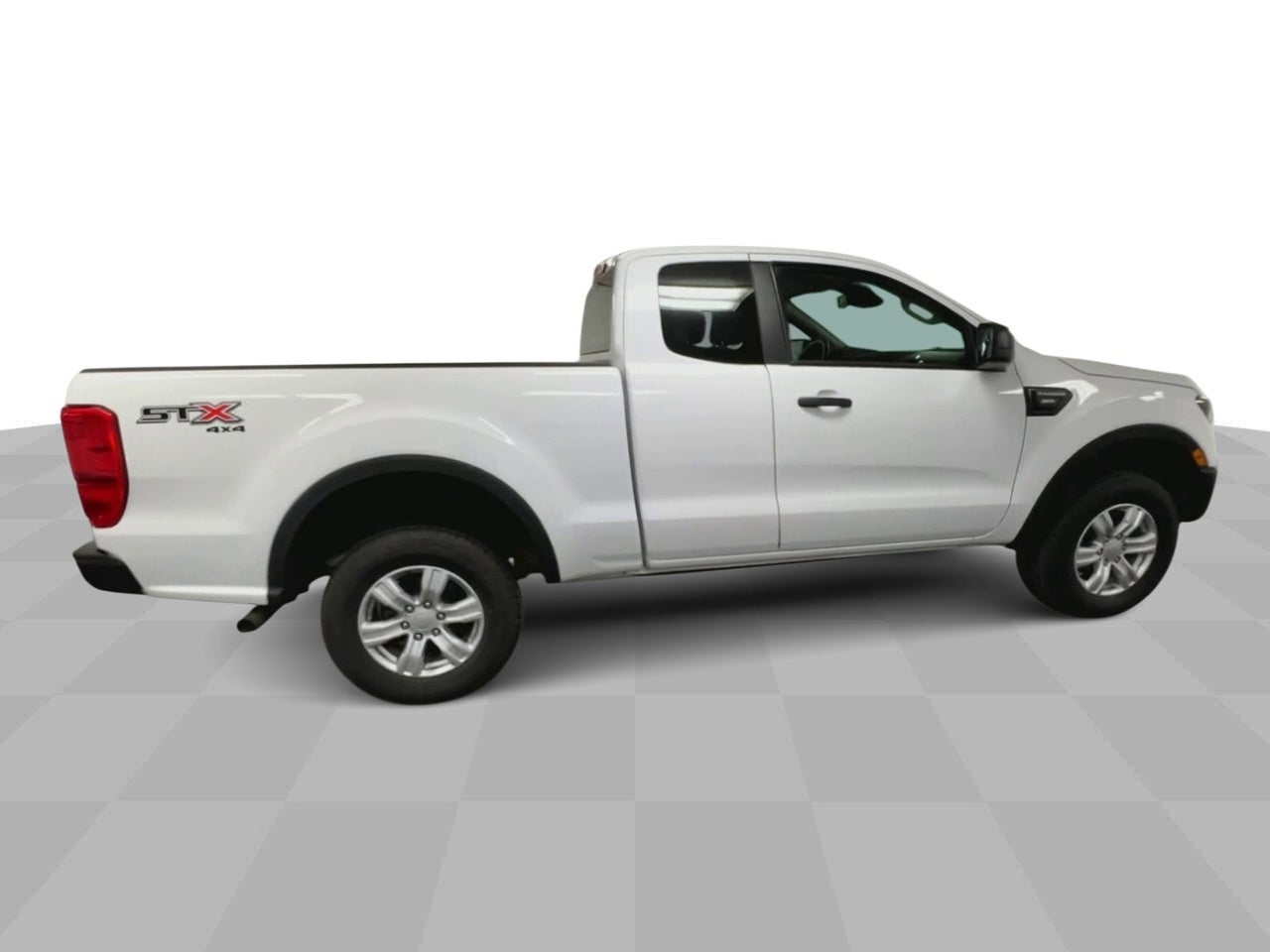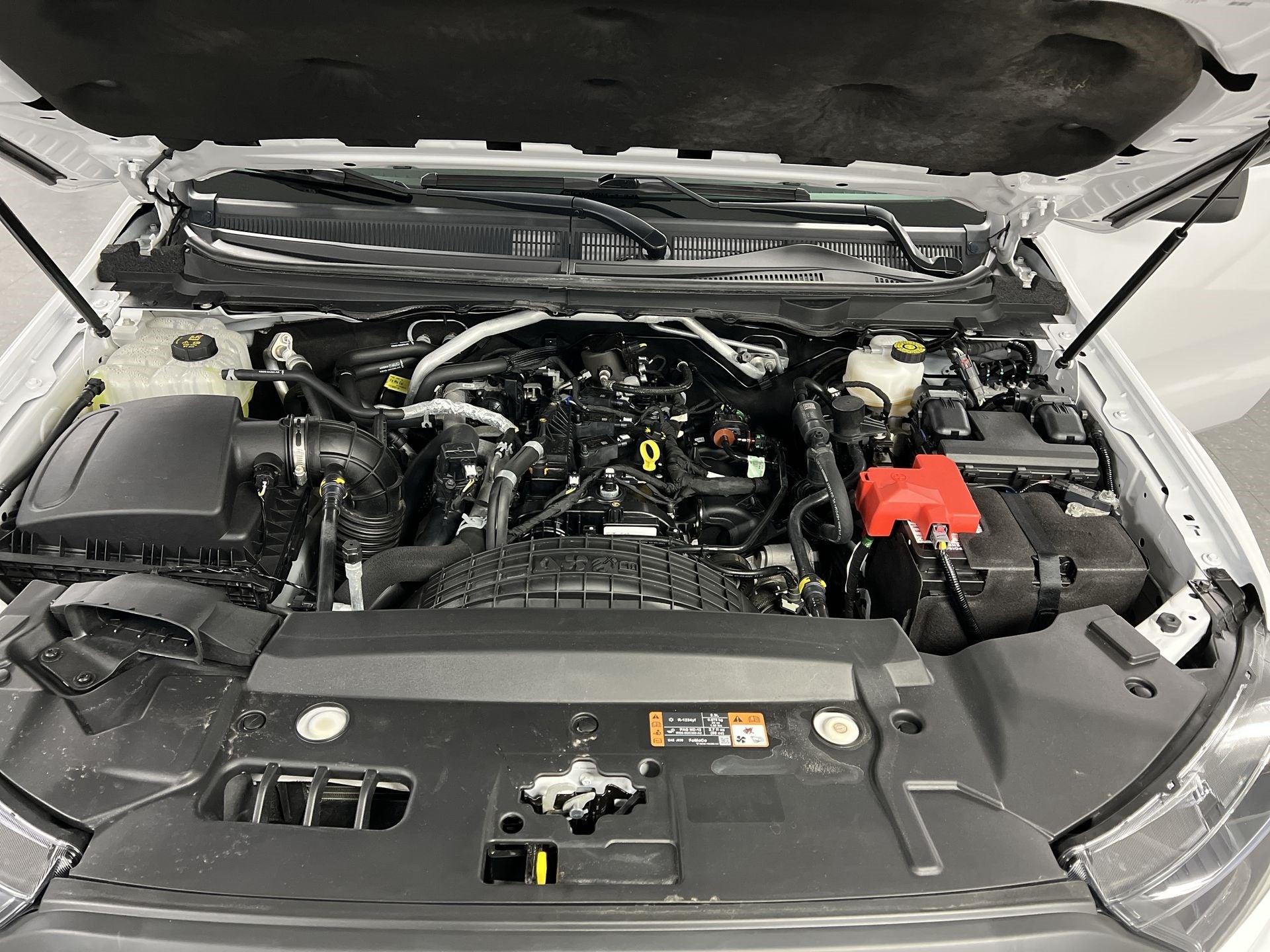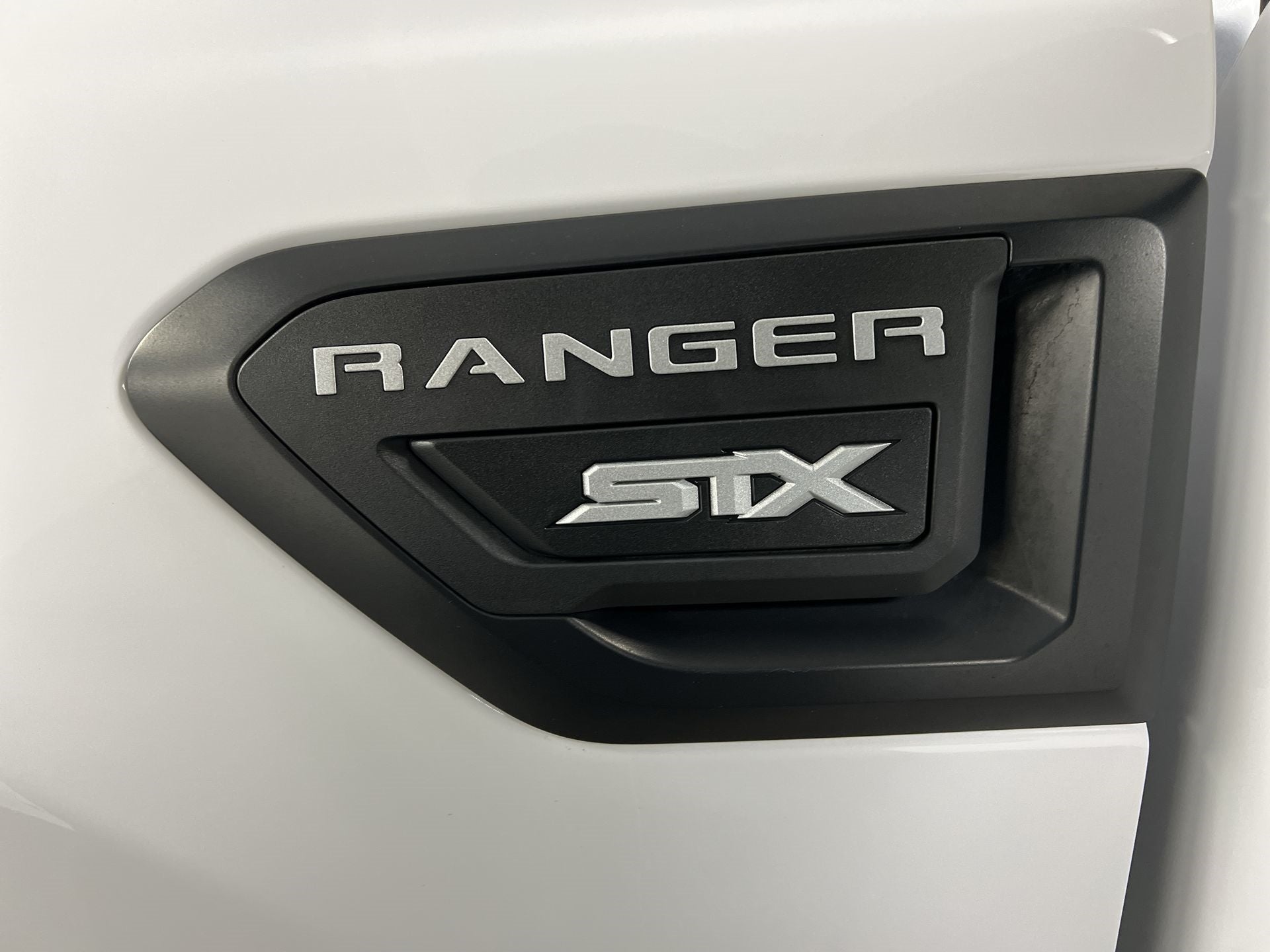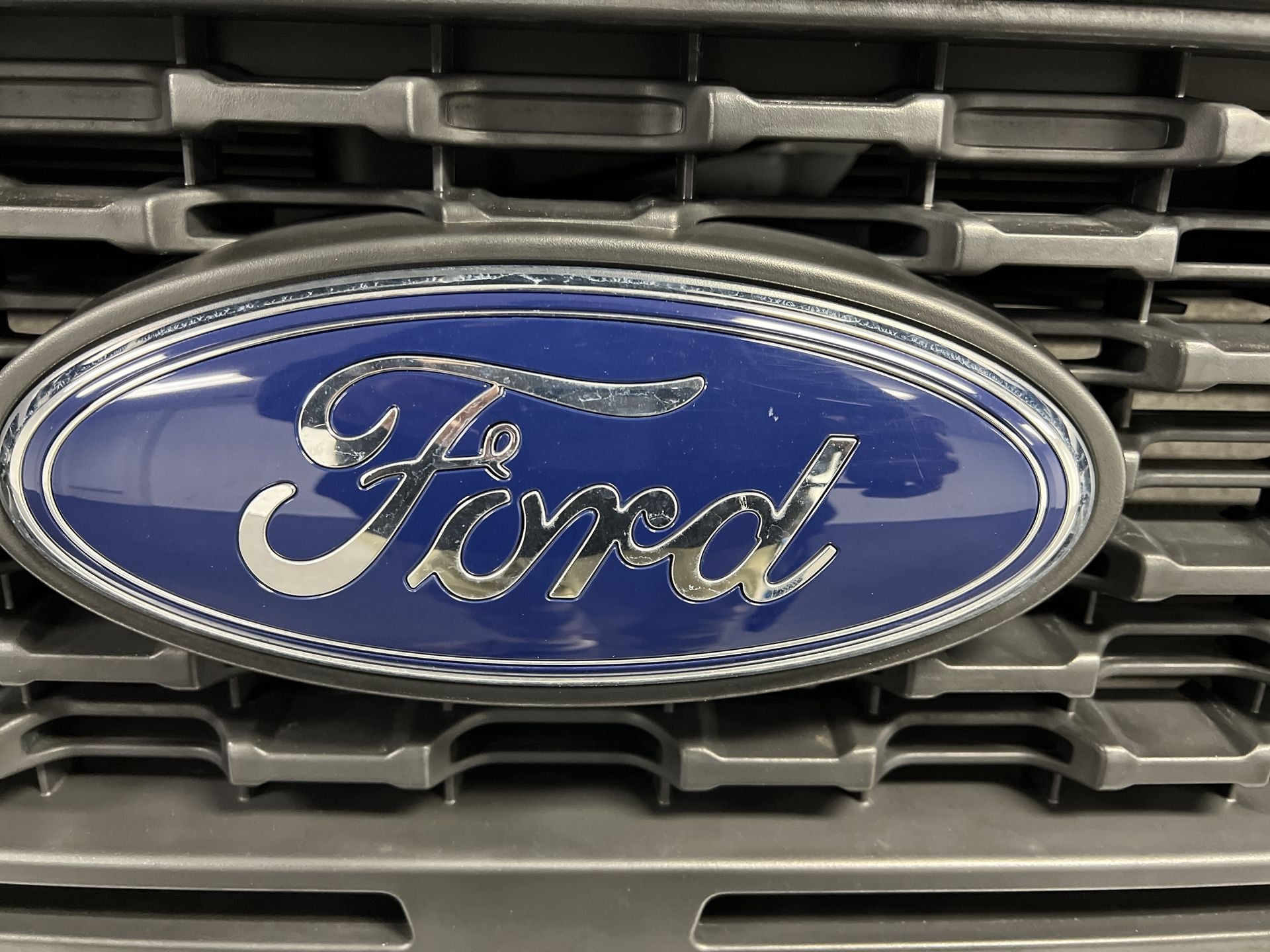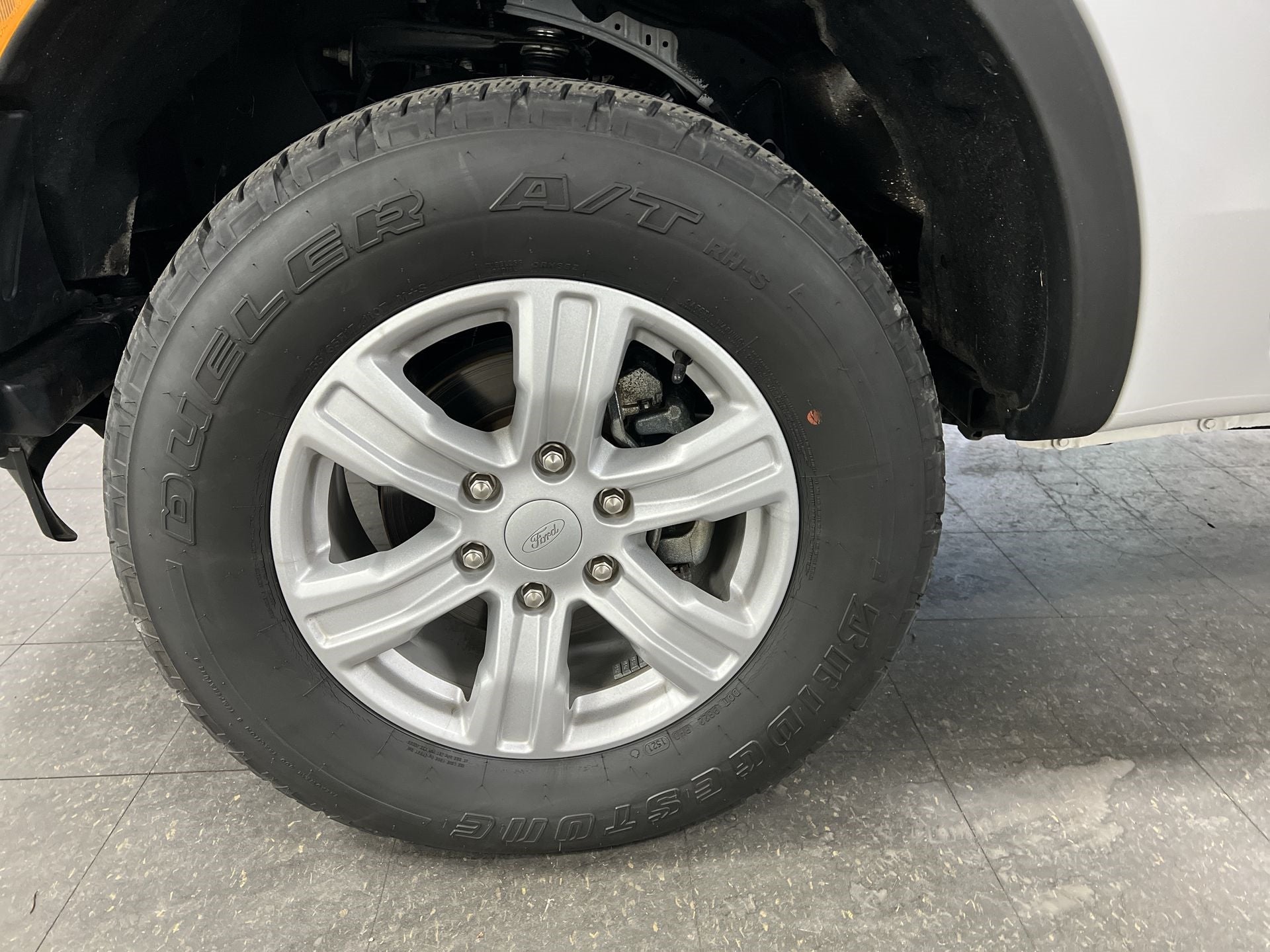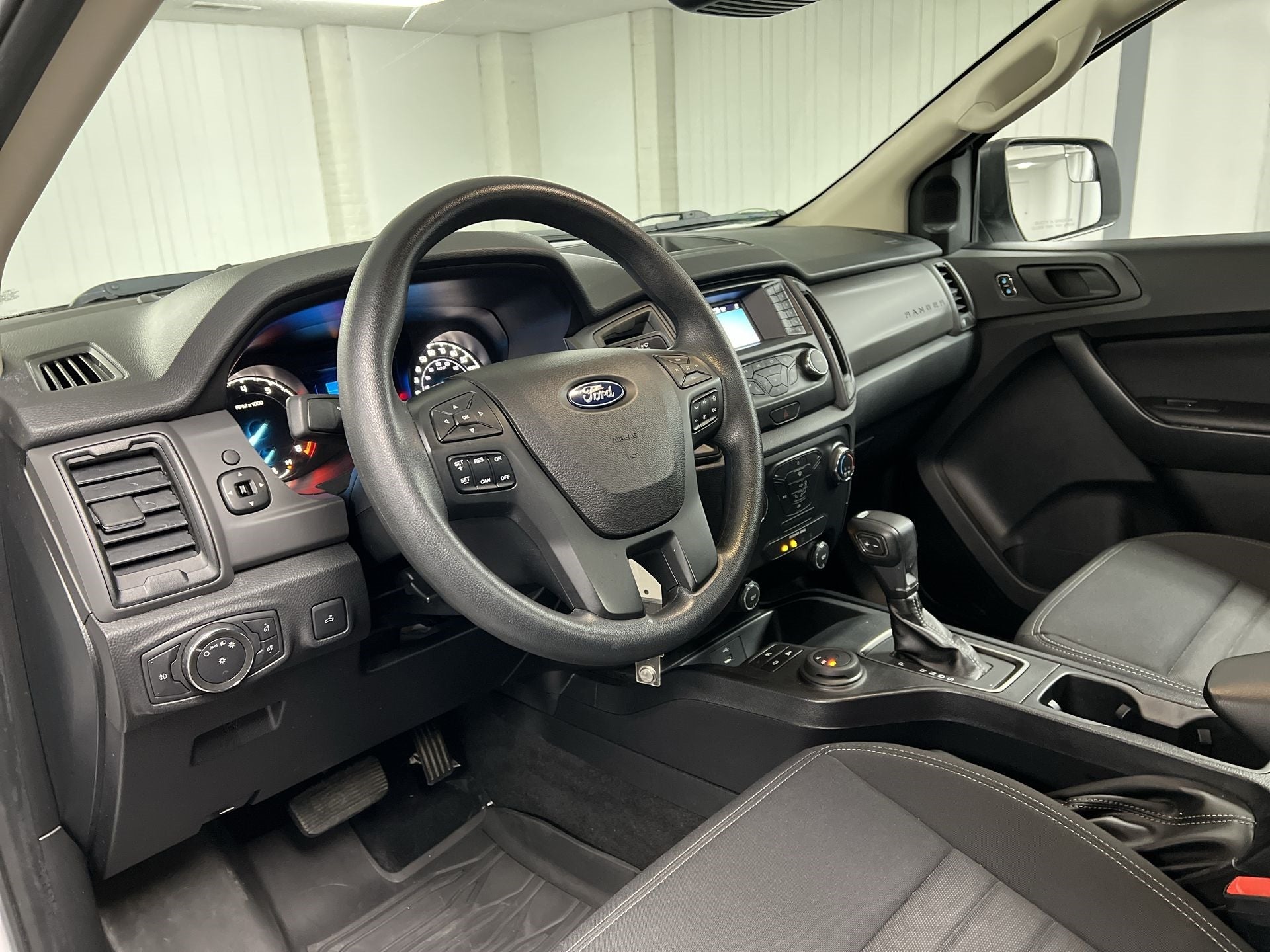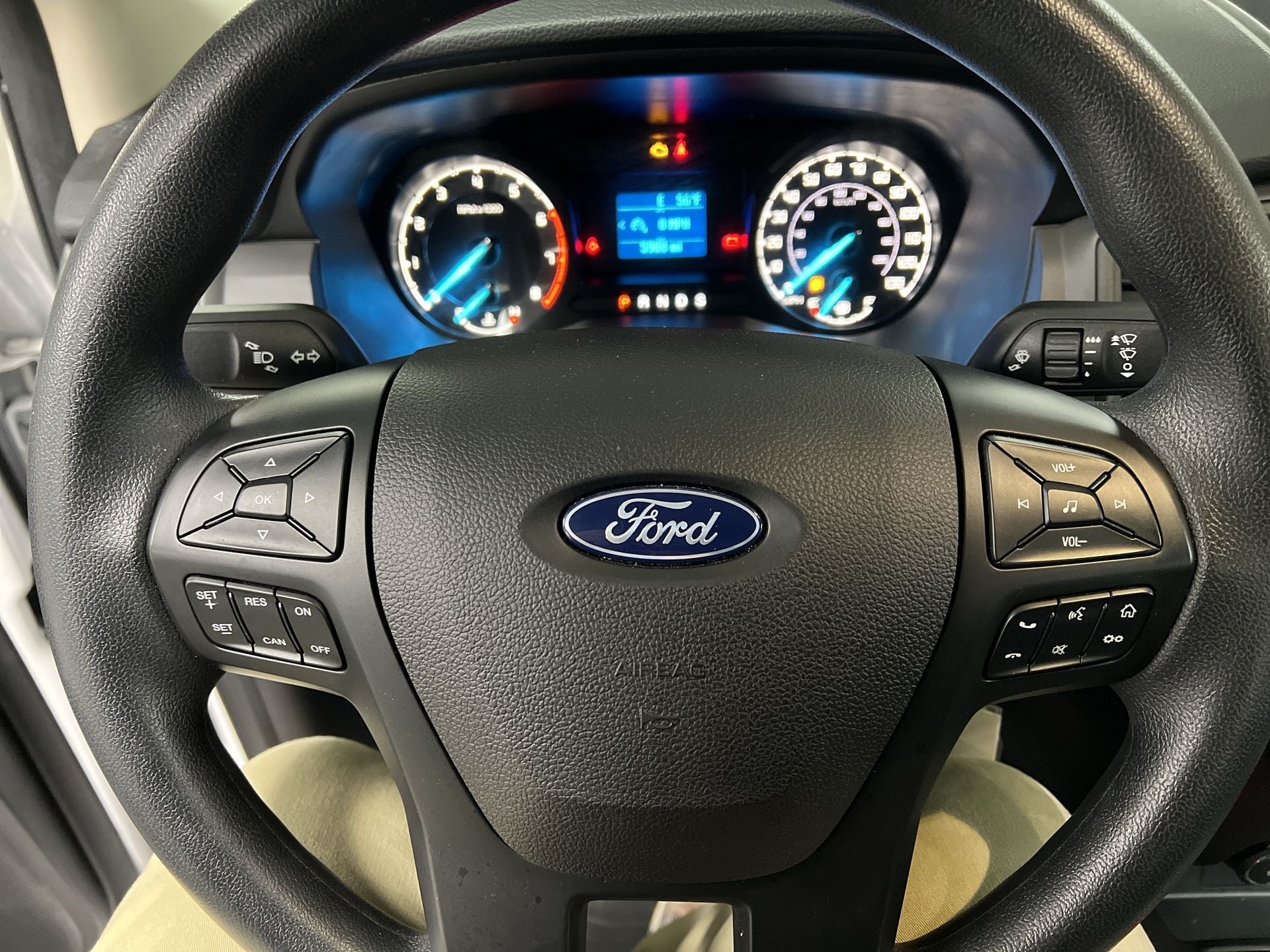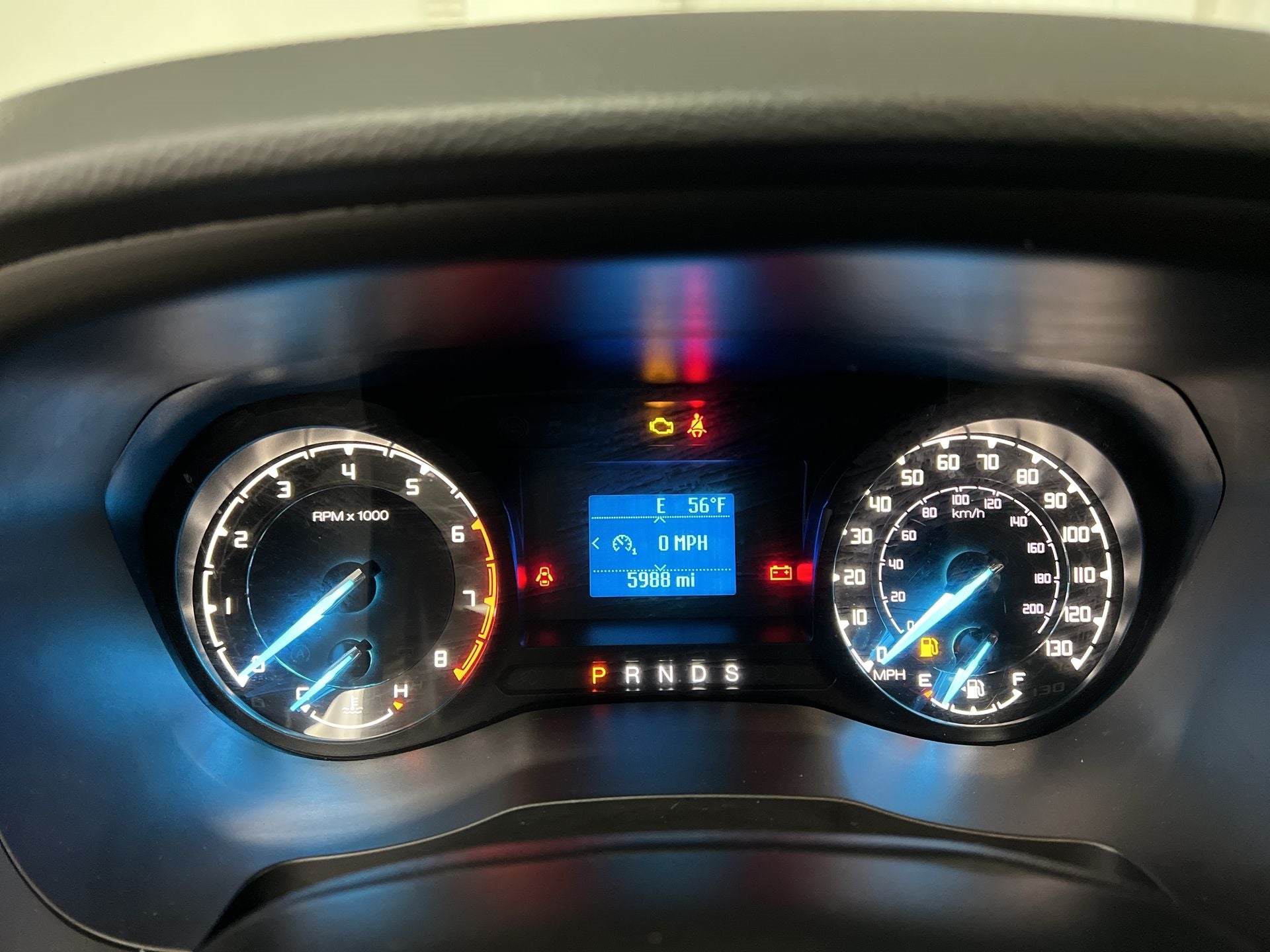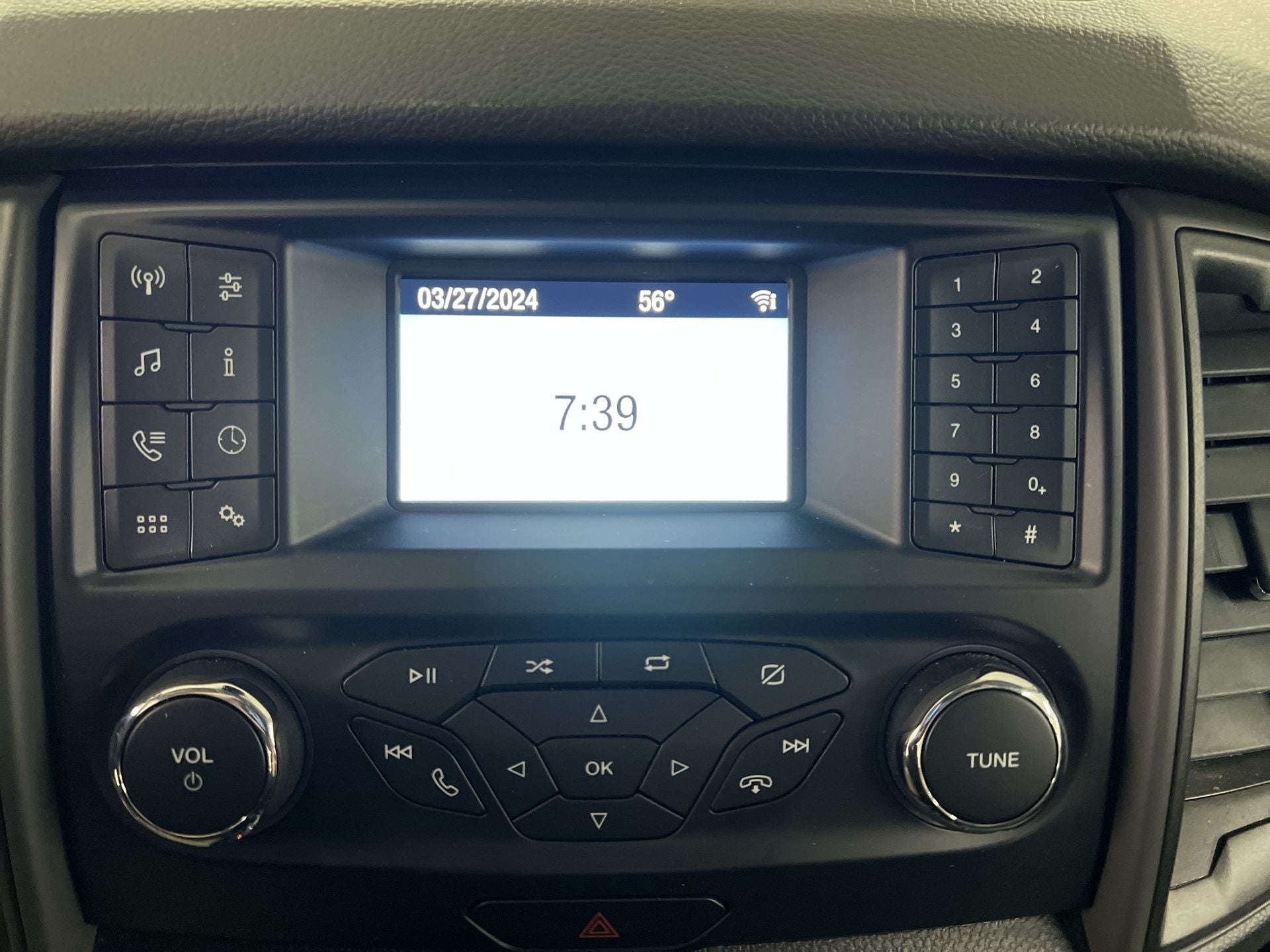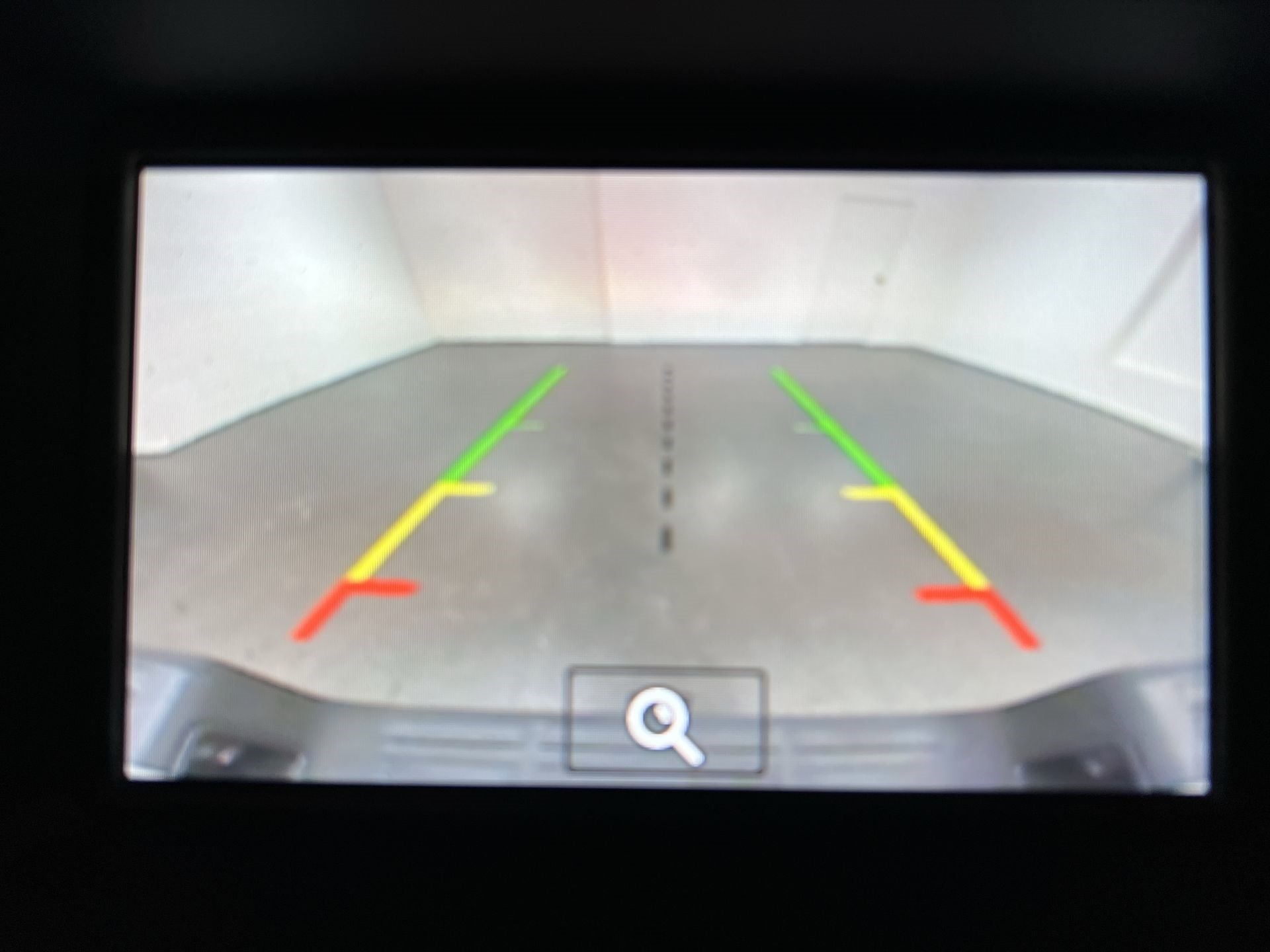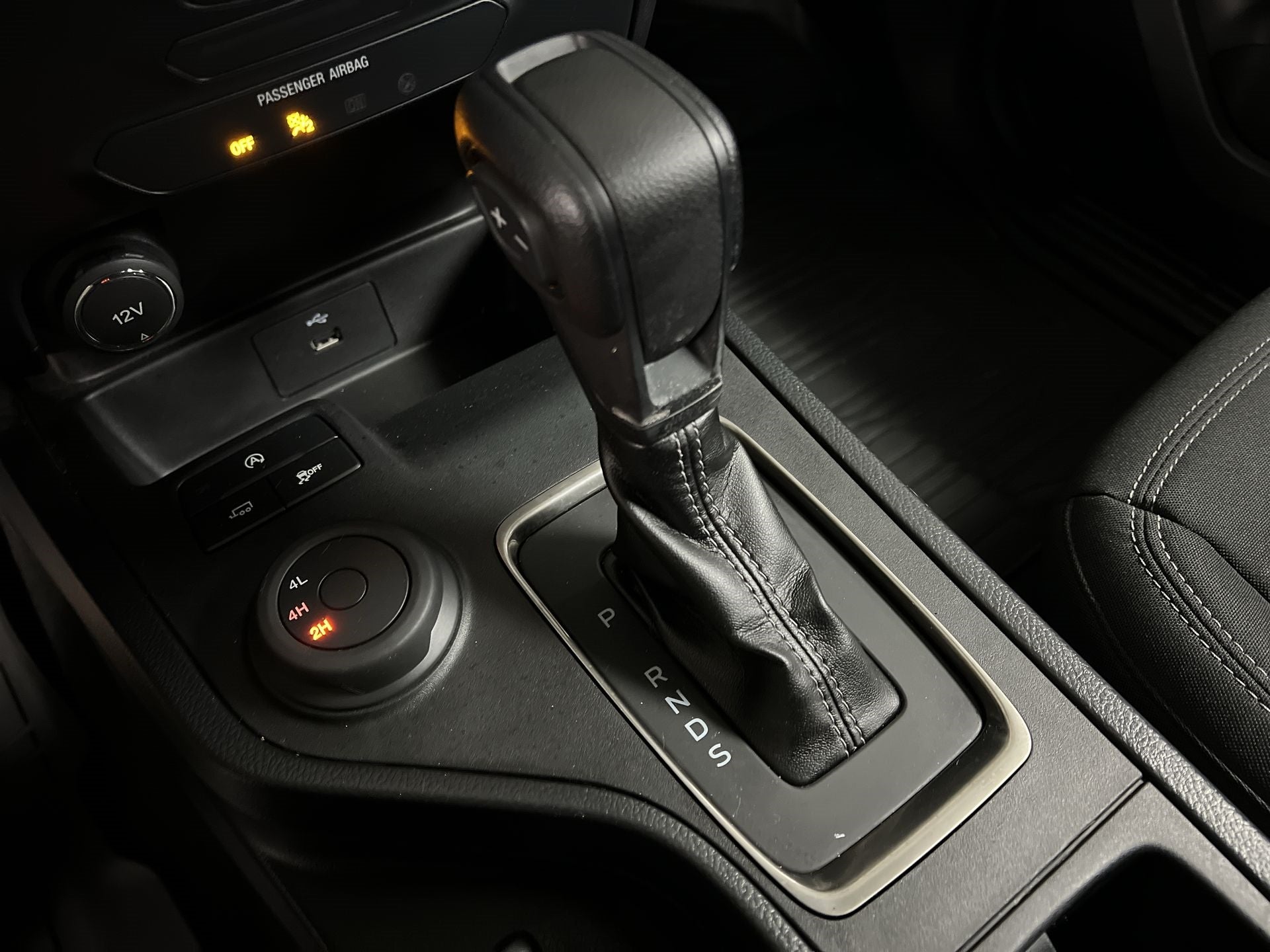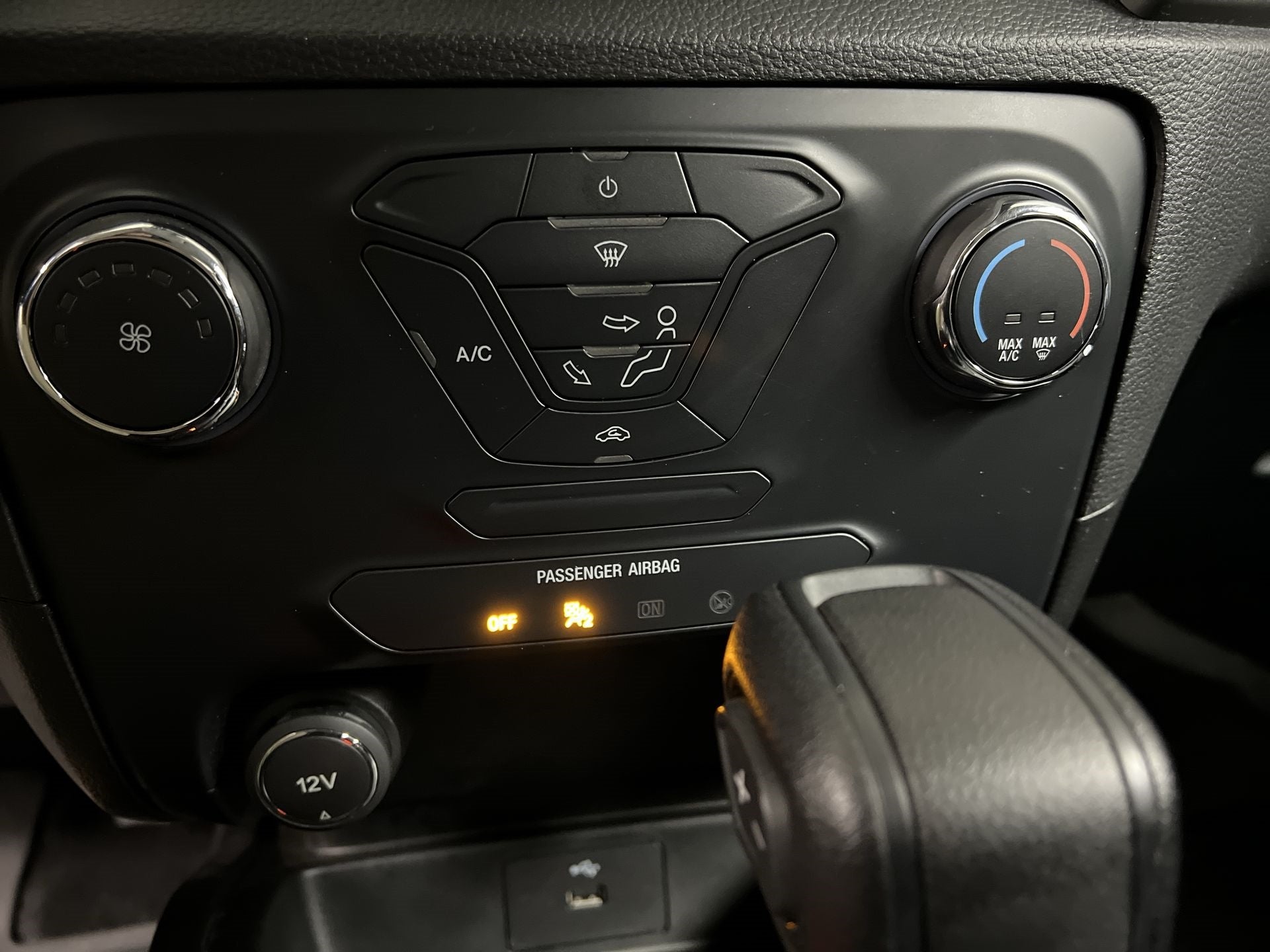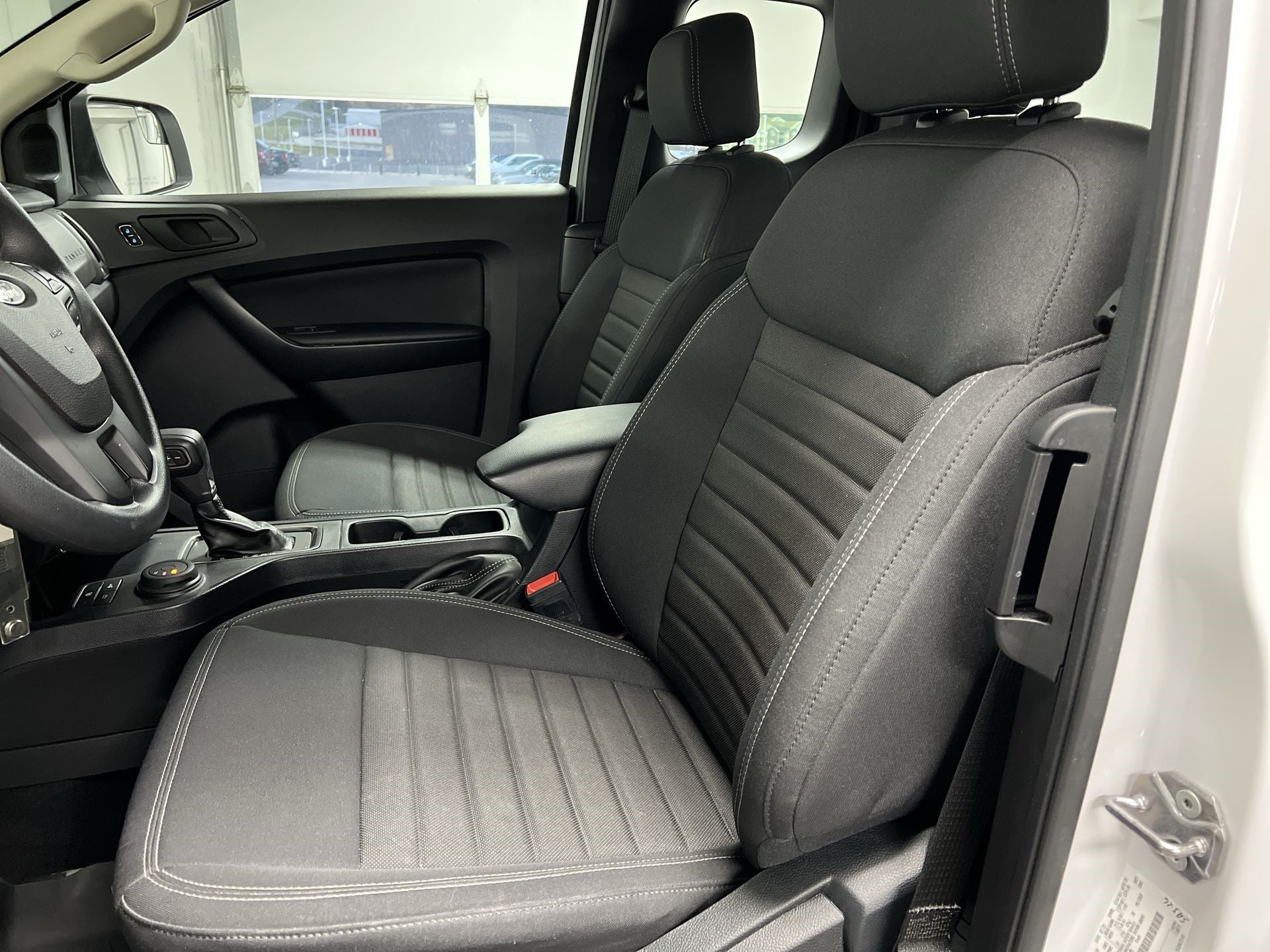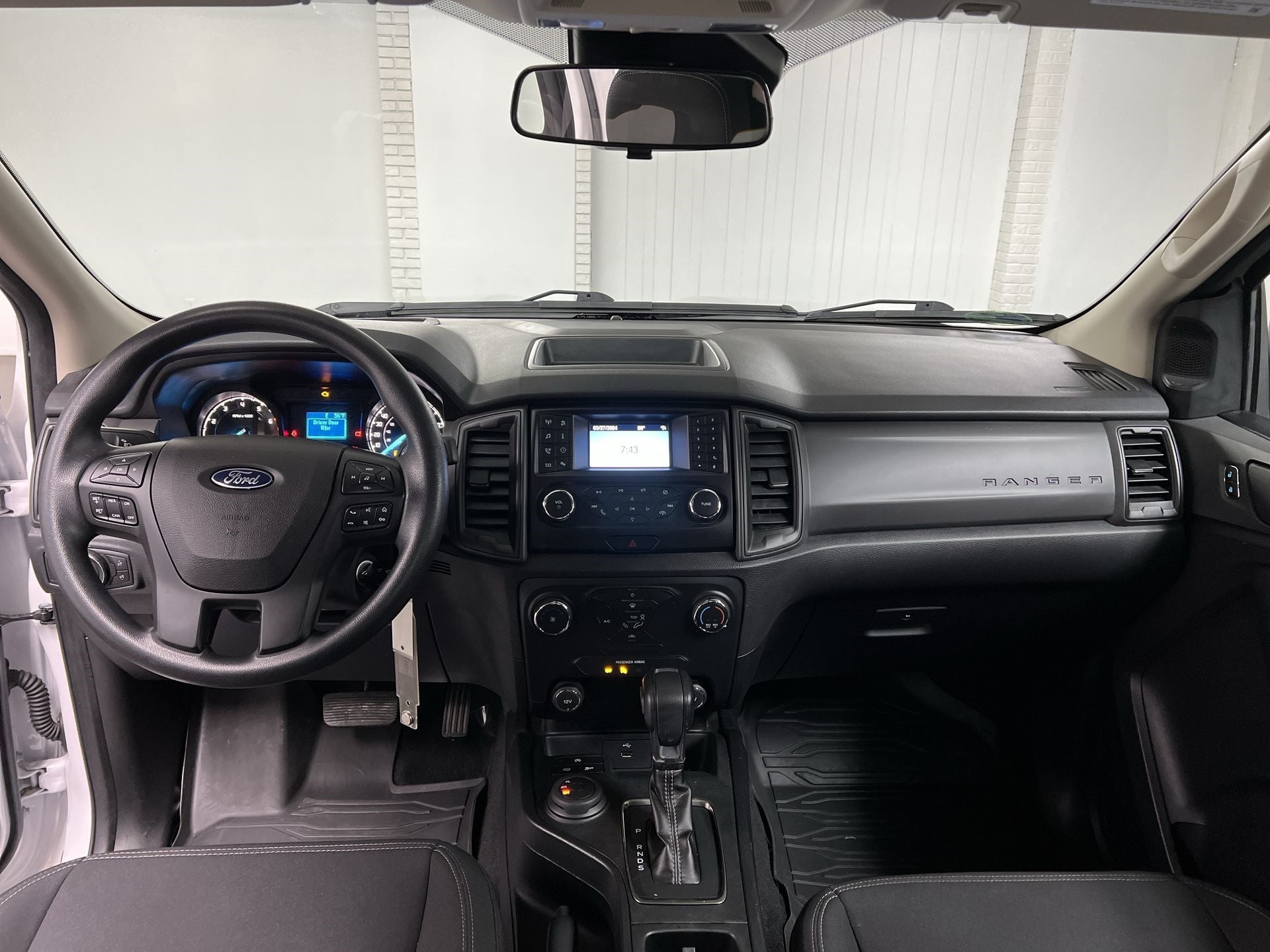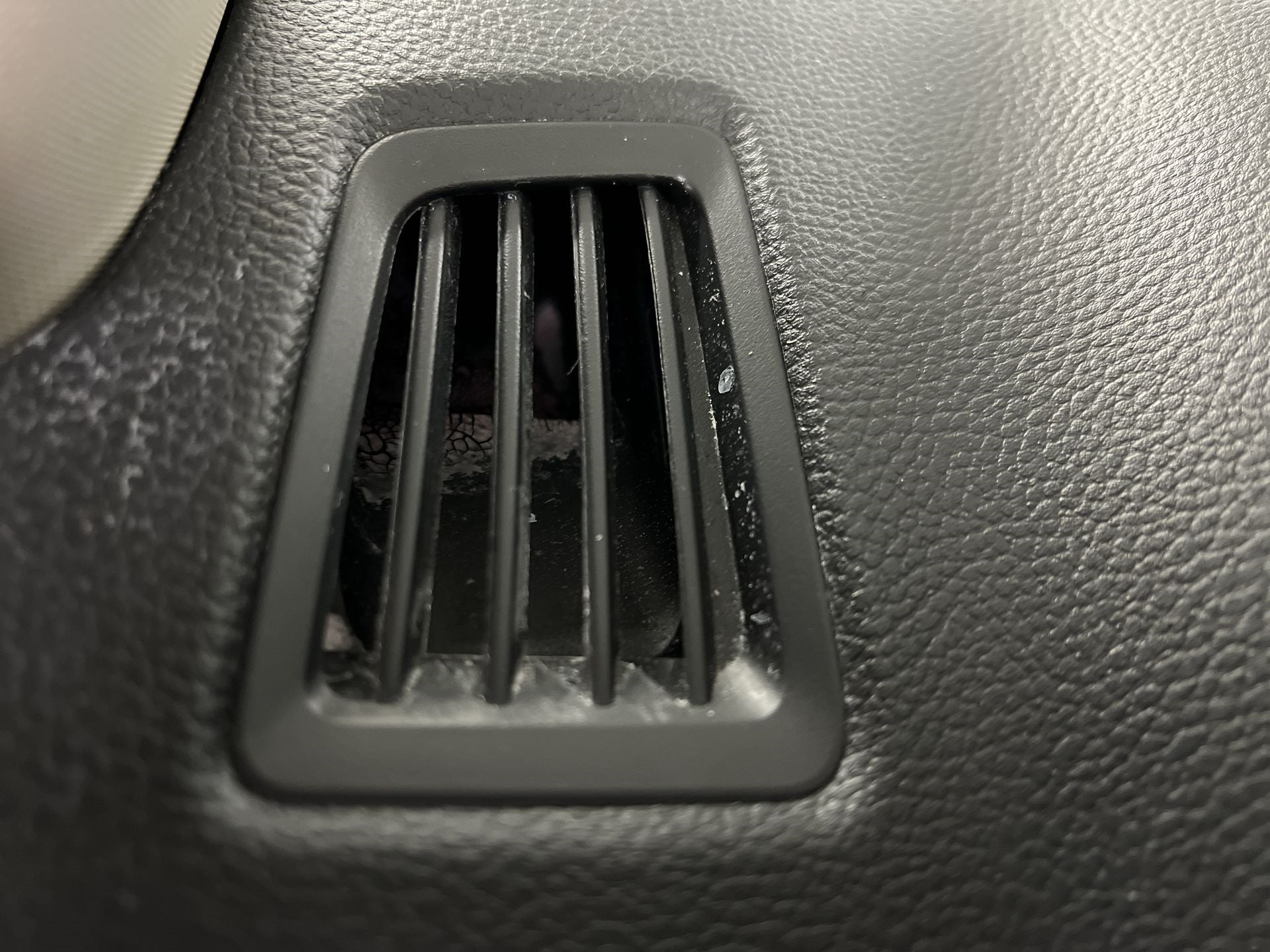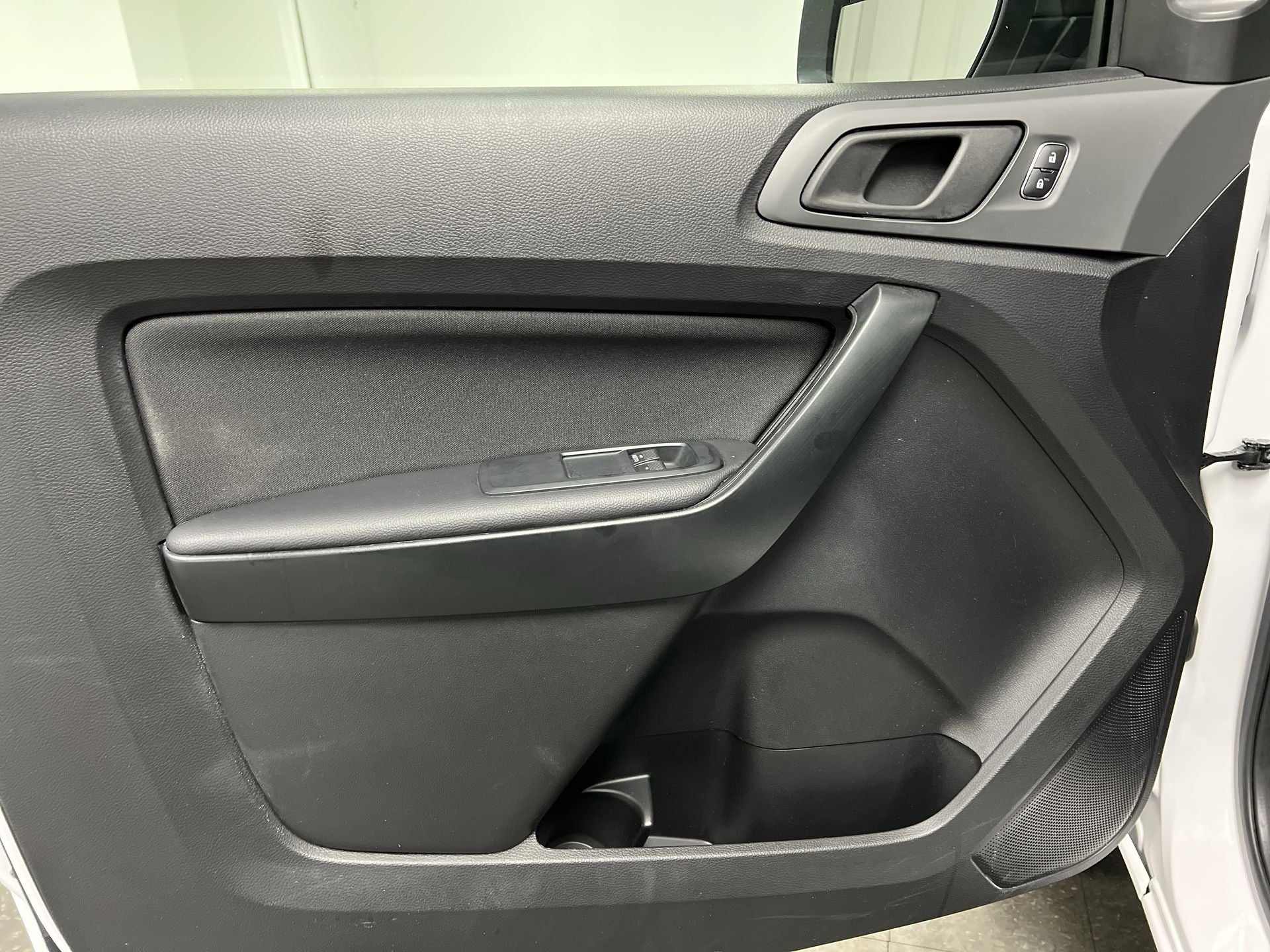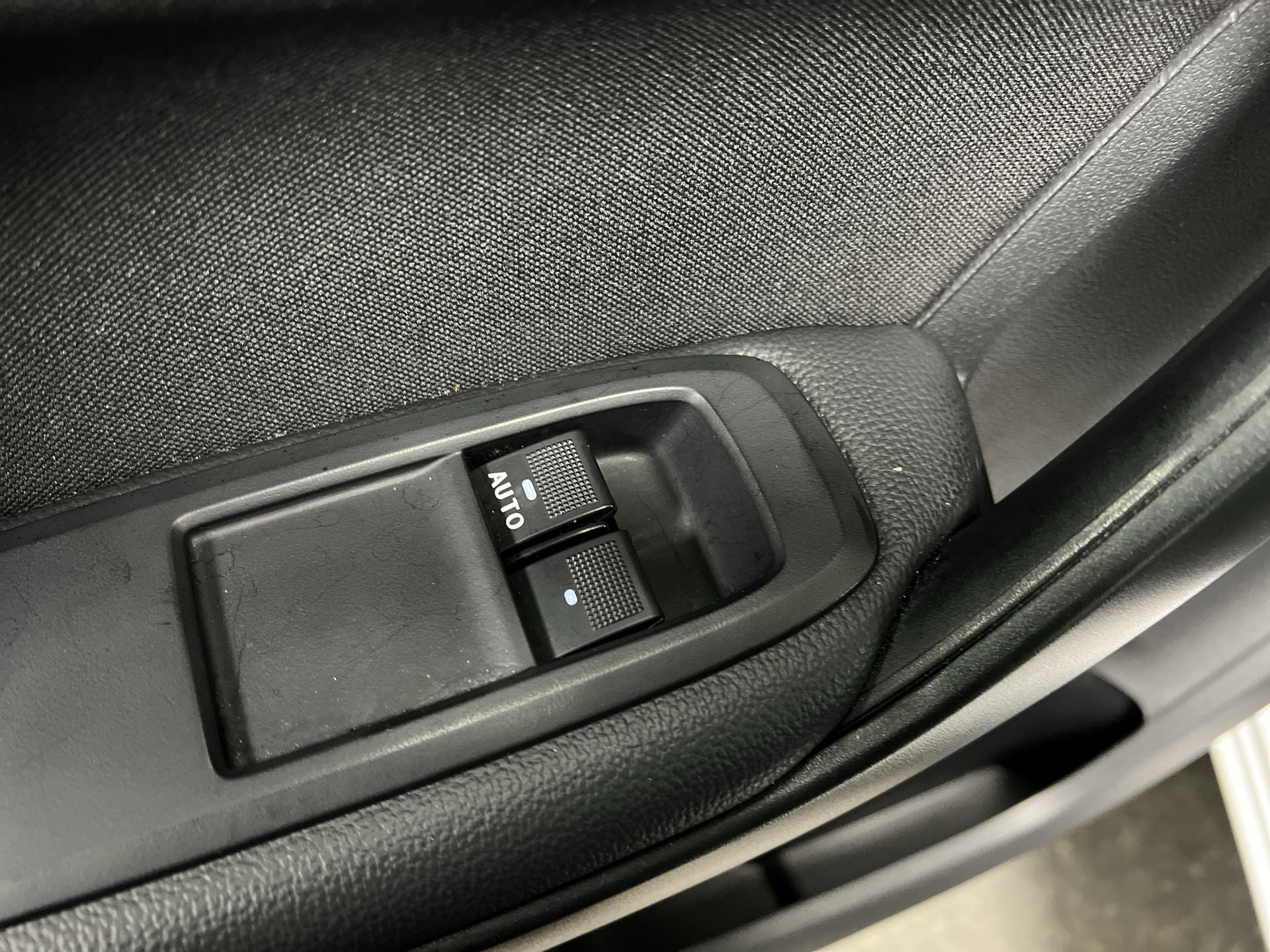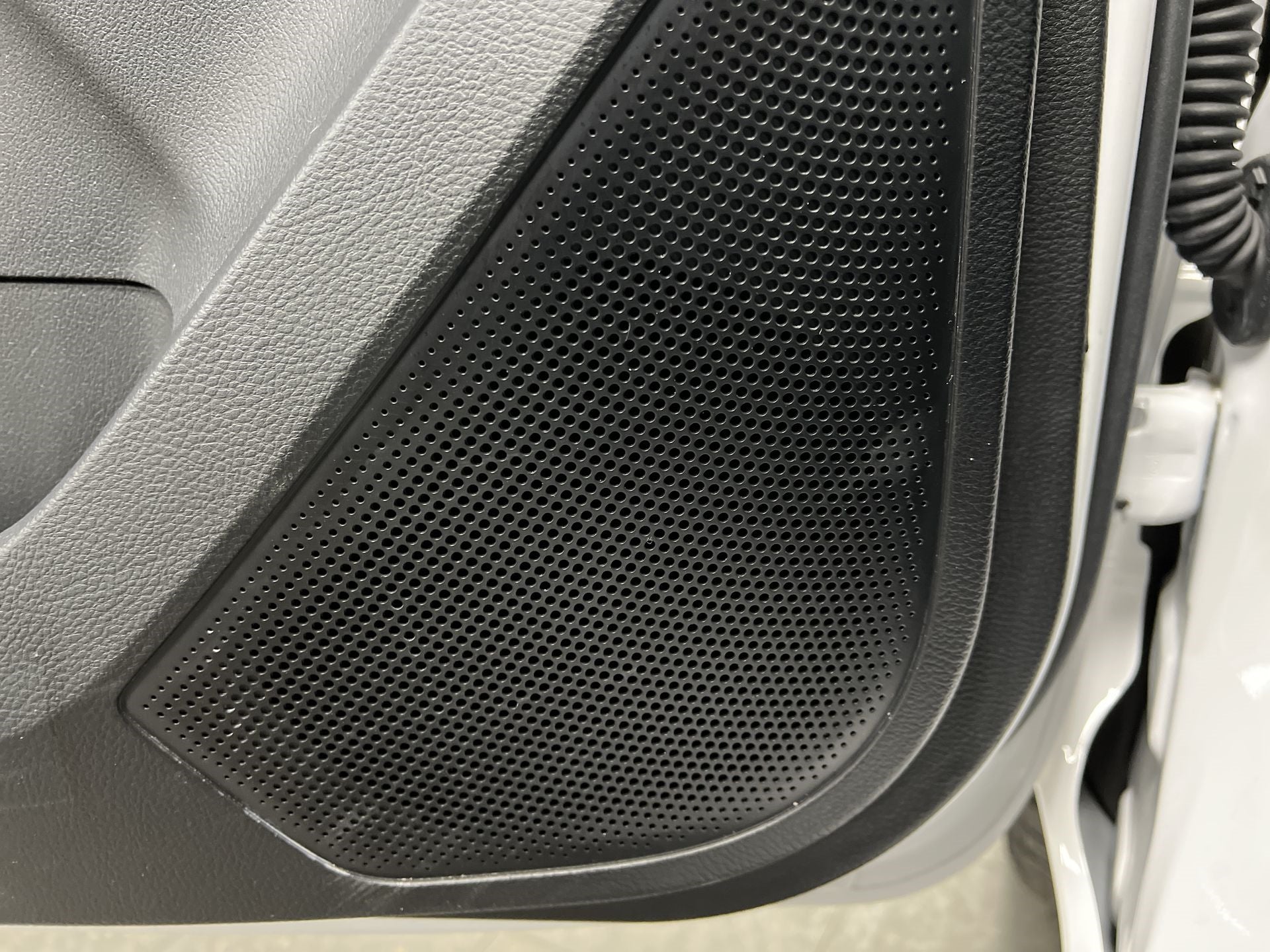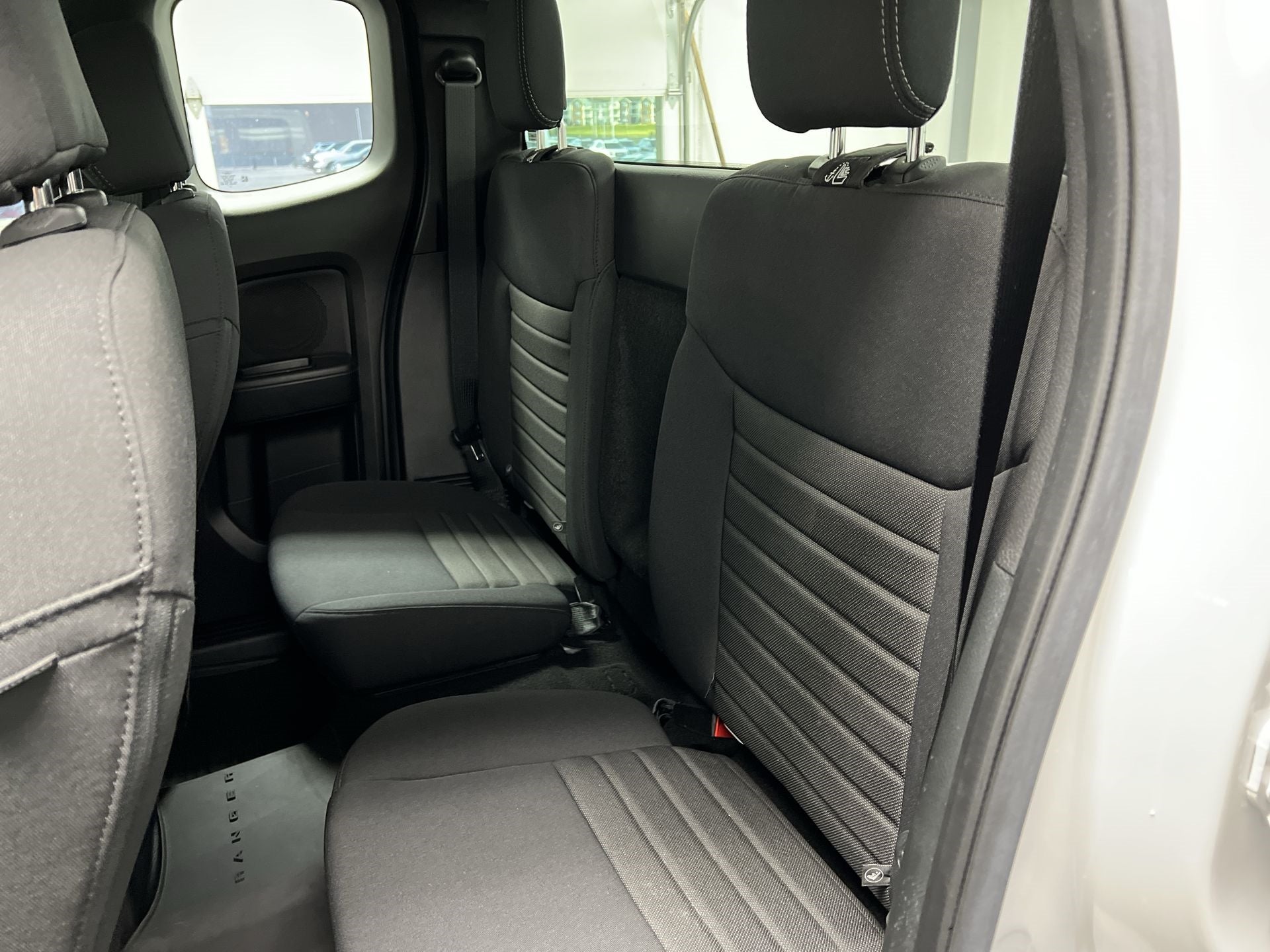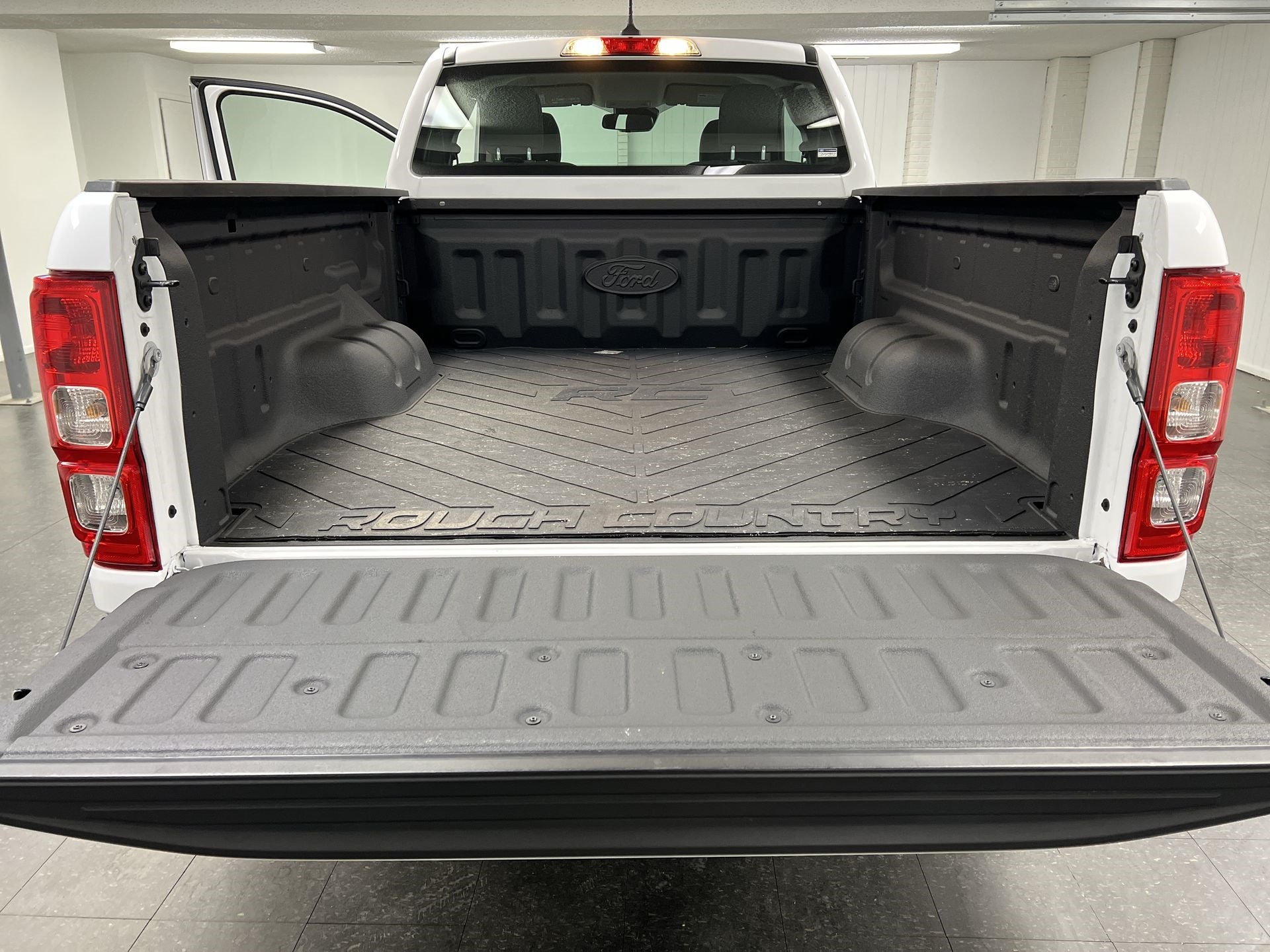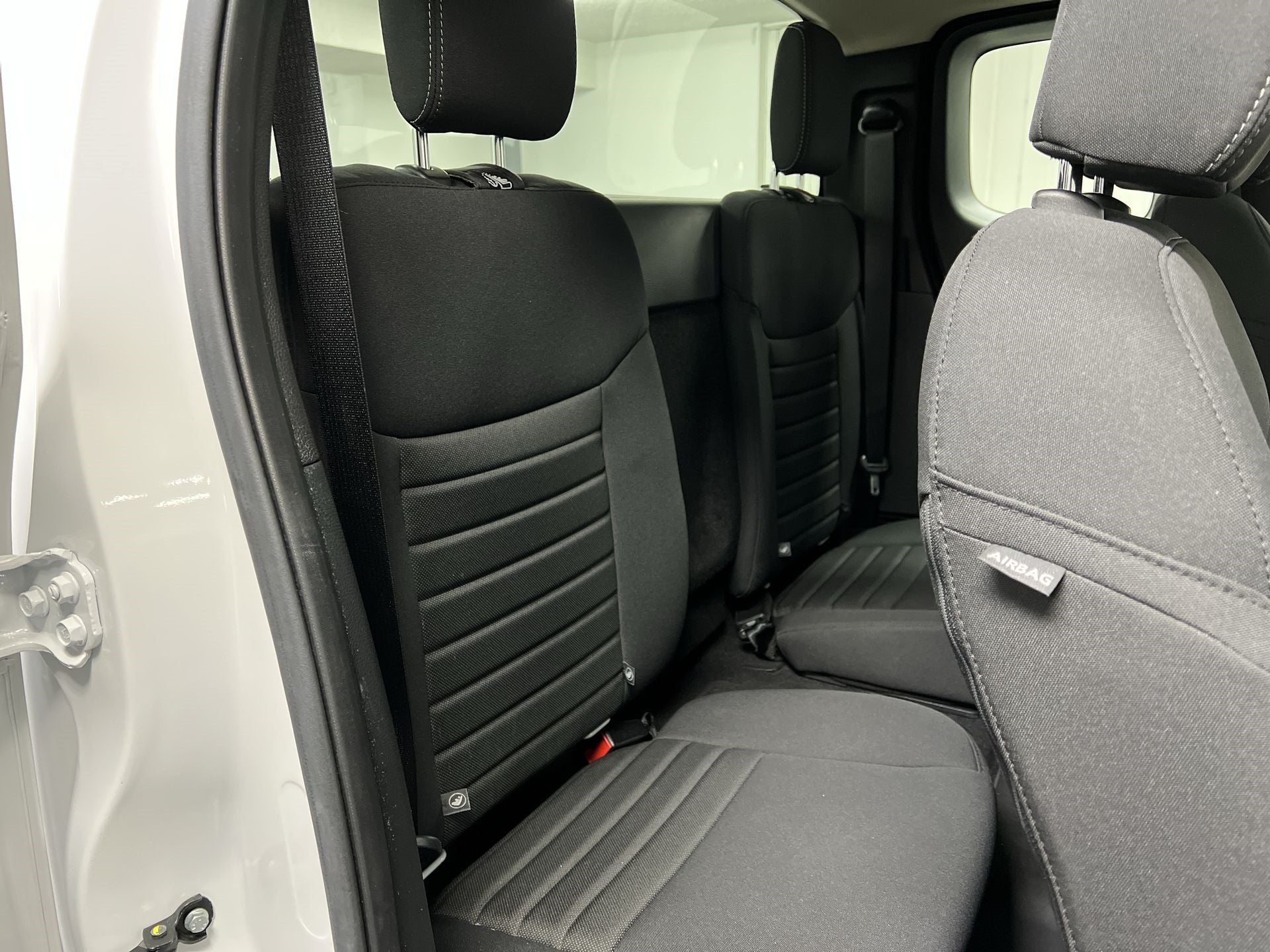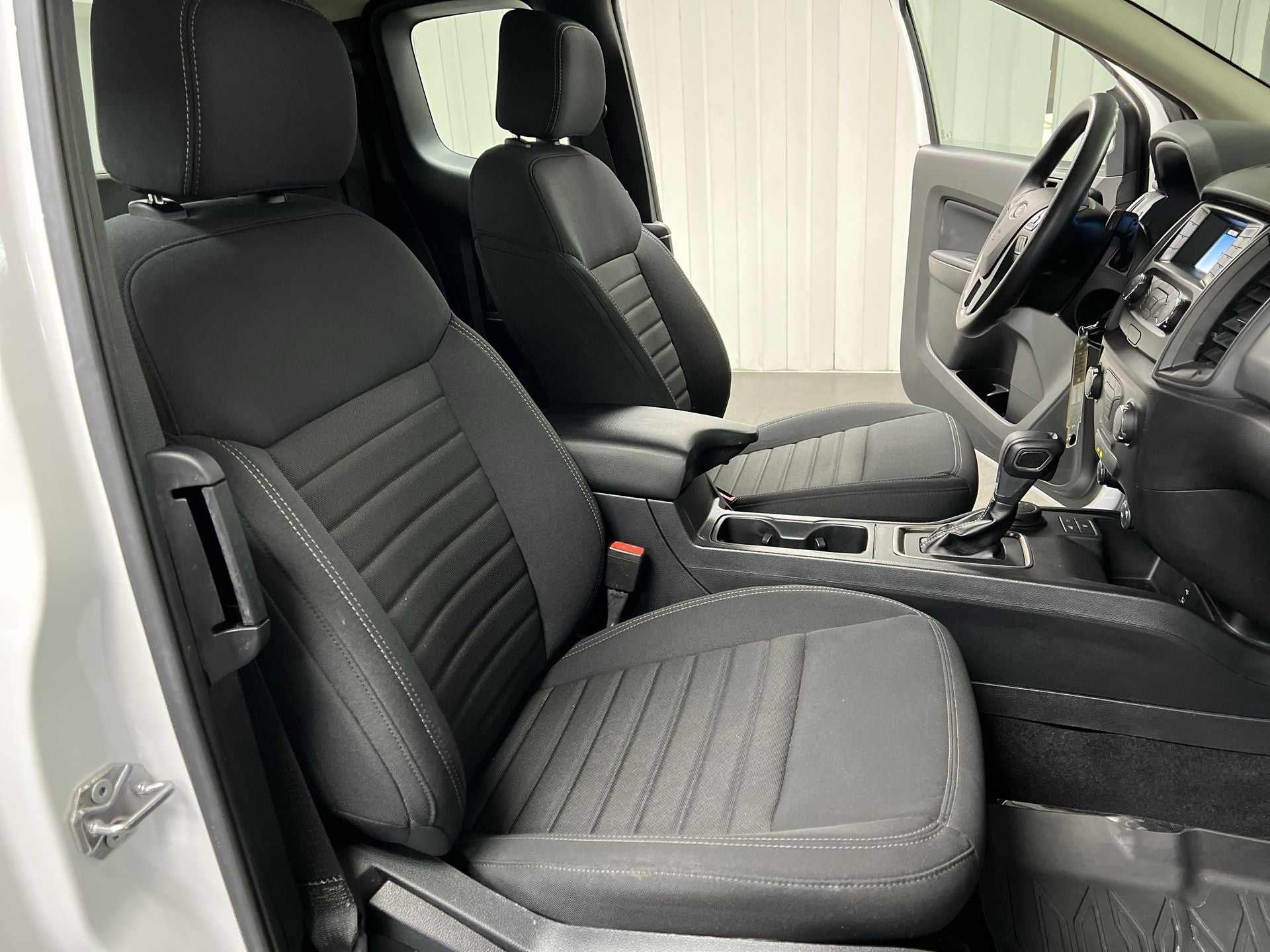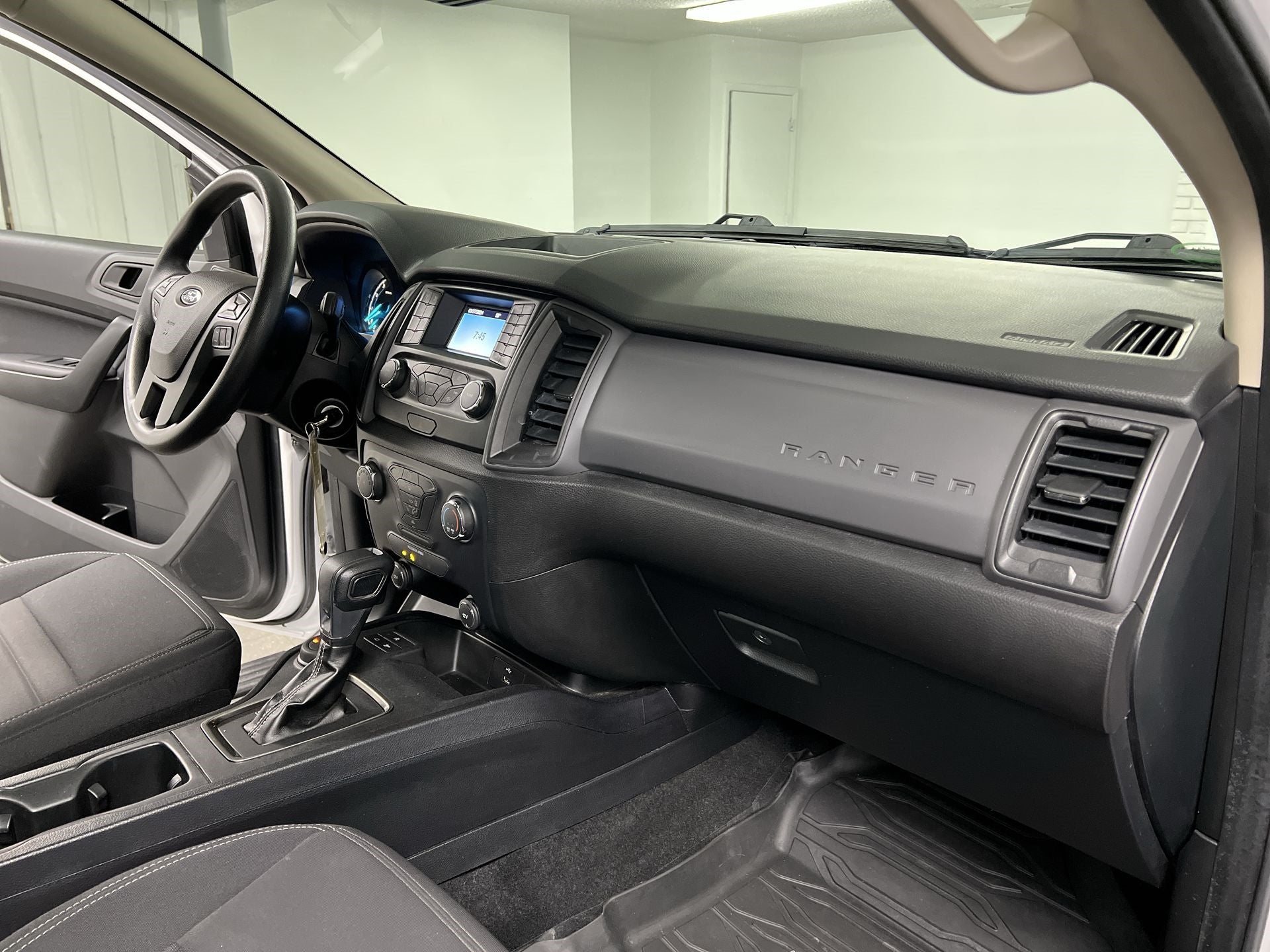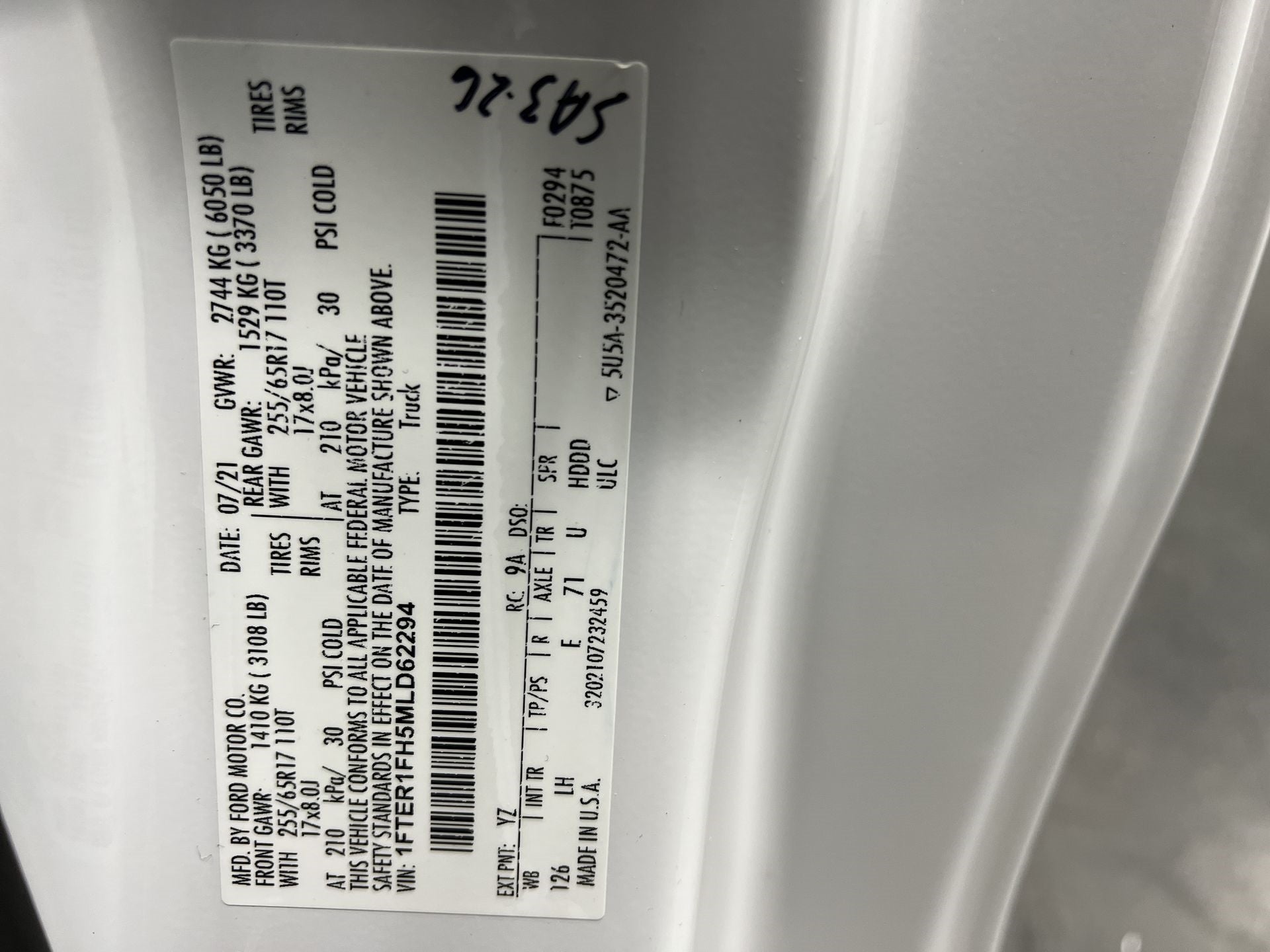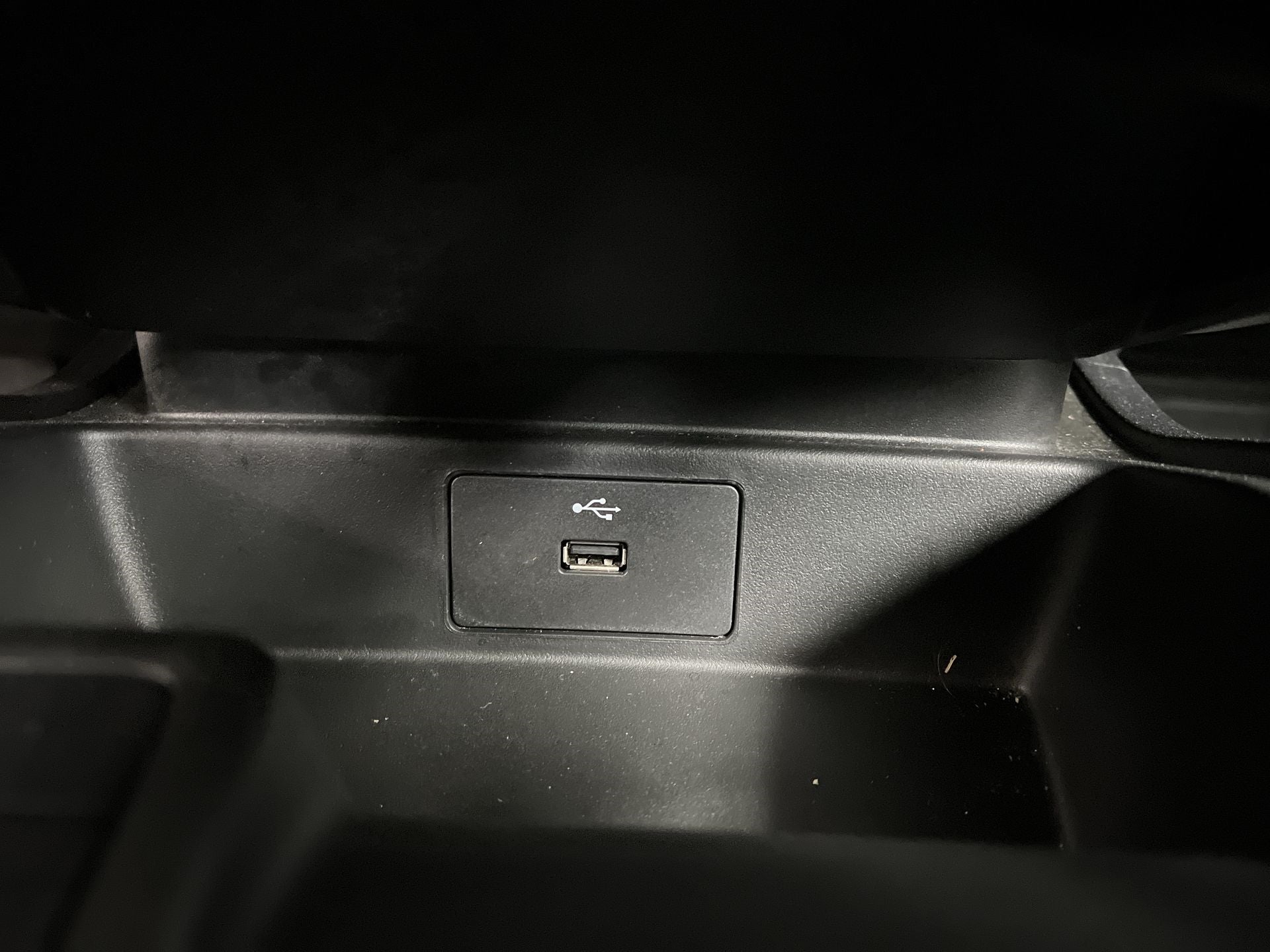2021 Ford Ranger XL
-
$32,063 BEST PRICE
- Retail Price $31,714
-
- +$349
- Internet Price $32,063
-
$32,063 BEST PRICE
- Retail Price $31,714
-
- +$349
- Internet Price $32,063
Visit our Store
- Sapaugh Cadillac
-
1435 Mcnutt Street
Herculaneum, MO 63048
- Sales: 636-465-9505
- Service & Parts: 636-725-0214
Vehicle Information
-
Condition Used
-
 Body Style Extended Cab
Body Style Extended Cab -
Exterior Color White
-
Interior Color Black
-
Mileage 5,988
-
 Engine EcoBoost 2.3L I-4 gasoline direct injection, DOHC, Ti-VCT variable valve control, intercooled turbo, regular unleaded, engine with 270HP
Engine EcoBoost 2.3L I-4 gasoline direct injection, DOHC, Ti-VCT variable valve control, intercooled turbo, regular unleaded, engine with 270HP -
 Transmission Automatic
Transmission Automatic
Dealer Comments
All Features
- Rear head restraint control: 2 rear seat head restraints
- Seating capacity: 4
- Bucket front seats: Separate driver and front passenger seats with individual control are provided.
- Cabback insulator: The inside rear of the cab is trimmed to cover exposed metal.
- Rear seatback upholstery: Carpet rear seatback upholstery
- Interior accents: Chrome interior accents
- Cloth seat upholstery: The seating surfaces are covered in cloth.
- Front seatback upholstery: Cloth front seatback upholstery
- Headliner material: Cloth headliner material
- Cloth rear seat upholstery: The seating surfaces are covered in cloth.
- Manual reclining driver seat: The seatback angle is manually adjustable.
- 6-way driver seat: The seat provides a variety of adjustments to enhance seating comfort.
- 6-way passenger seat: The seat provides a variety of adjustments to enhance seating comfort.
- Front seat center armrest: A single center armrest divides the front seating positions.
- Full floor coverage: The entire passenger compartment floor is covered with flooring material.
- Headliner coverage: Full headliner coverage
- Full floor coverage: The entire passenger compartment floor is covered with flooring material.
- Height adjustable rear seat head restraints: The head restraint(s) can be adjusted up or down.
- Height and tilt adjustable front seat head restraints: The head restraint(s) can be adjusted up or down as well as back and forth.
- Lightly tinted windows: The vehicle's glass is lightly tinted.
- Manual air conditioning: The air conditioning requires manual selection of operation mode, temperature and fan speed.
- Manual driver lumbar: Lumbar support is manually adjustable.
- Front head restraint control: Manual front seat head restraint control
- Rear head restraint control: Manual rear seat head restraint control
- Manual telescopic steering wheel: The distance of the steering wheel from the driver is manually adjustable.
- Manual tilt steering wheel: The angle of the steering wheel is adjustable manually.
- Manual reclining passenger seat: The seatback angle is manually adjustable.
- Rear bucket seat(s): Rear bucket seats provide individual seating.
- Rear underseat ducts: Rear underseat ducts direct HVAC airflow to the rear passenger compartment from under the front seats.
- Removable rear seat: The rear seats are designed to be easily removed from the vehicle without the use of tools.
- Gearshifter material: Urethane gear shifter material
- Steering wheel material: Urethane steering wheel
- Manual air conditioning: The air conditioning requires manual selection of operation mode, temperature and fan speed.
- 3 12V power outlets: Multiple 12-volt DC power outlets are provided.
- Number of beverage holders: 6 beverage holders
- Auto-dimming rear view mirror: An auto-dimming rear-view mirror automatically tints itself when excess glare is detected from traffic at night.
- Battery charge warning: A message, or specific light illuminates to indicate the vehicle's charging system is not producing acceptable levels.
- Compass: A display showing the direction the vehicle is traveling - on a global scale.
- Covered floor console storage: The floor console offers a covered space to store items.
- Day-night rear view mirror: An interior, rear-view mirror that has a manually operated switch that adjusts the mirror slightly, up or down, to reduce glare from traffic at night.
- Door ajar warning
- Passenger door bin: The inner door panel has an integrated storage bin.
- Driver one-touch down window: A one-touch down power driver's window lowers the glass completely with one press of the button.
- One-touch up driver windows: A one-touch up power driver's window raises the glass completely with one press (or pull) of the button.
- Driver visor with expandable coverage: A means of expanding the visor's coverage in one or more directions. Also, visors that have a secondary visor that is used for front shading if the main visor is turned to the side.
- Capless fuel filler: A spring-loaded flap replaces the traditional screw-in style gas cap.
- Rear windshield: Fixed rear windshield
- Second-row windows: Fixed second-row windows
- Smart device vehicle start control: The vehicle can be remotely started from a smart device such as a phone and a subscription is required to maintain access to the smart device remote start function.
- Front beverage holder(s): An area is provided to securely hold beverages.
- Full floor console: A full floor console separates the front seating areas and divides the footwell.
- Clock: In-radio display clock
- Locking glove box: A locking glove box provides secured storage space.
- Low fuel warning: A message, or specific light illuminates to indicate the vehicle will run out of fuel soon, and refilling the tank is required.
- Manually folding passenger side door mirror: Manually folding exterior mirrors can pivot on a joint to bring the mirror housing closer to the vehicle body.
- Manual tailgate/rear door lock: The tailgate/rear door lock is operated by key only.
- Oil pressure gage
- Oil pressure warning
- Passenger visor with expandable coverage: A means of expanding the visor's coverage in one or more directions. Also, visors that have a secondary visor that is used for front shading if the main visor is turned to the side.
- Power door locks: The vehicle is equipped with power activated door locks.
- Power first-row side windows: The first-row of glass on the side of the vehicle can be raised and lowered by electric motors.
- Rear beverage holder(s): An area is provided to securely hold beverages.
- Rear door bins: The inner door panels have integrated storage bins.
- Rear underseat tray: An underseat tray provides additional concealed storage.
- Reverse opening left rear passenger door: A reverse opening rear door is hinged at the rear and opens in the opposite direction of a traditional door.
- Reverse opening right rear passenger door: A reverse opening rear door is hinged at the rear and opens in the opposite direction of a traditional door.
- Service interval indicator: A message, or specific light illuminates to indicate the vehicle needs to be taken in for routine servicing (oil change).
- Steering wheel mounted audio controls: Auxiliary controls for the audio system are located on the steering wheel.
- Rear cargo door: Tailgate
- Trip computer: A trip computer calculates and can display any, or all of the following functions: current fuel consumption, average speed, distance traveled, elapsed time, distance to empty and remaining fuel.
- Trip odometer: A trip odometer counts the miles or kilometers the vehicle travels and can be reset by the driver.
- Variable IP lighting: The intensity of the instrument panel lighting can be adjusted manually.
- Variable intermittent front windshield wipers: The vehicle's front wiper system has low and high speeds, as well as a variable intermittent setting to change the pause length between wipes.
- Voltmeter
- Steel wheels: Basic steel wheels are stamped from sheet metal and are designed to accommodate full wheel covers.
- Front tow hooks: Front bumper tow hooks are large, easily visible hooks that are attached to the exterior of the vehicle's bumper.
- Number of doors: 4 doors
- Door handle material: Black door handles
- Door mirror style: Black door mirrors
- Bumpers front: Black front bumper
- Bumper rub strip front: Black front bumper rub strip
- Grille style: Black grille
- Bumpers rear: Black rear bumper
- Window Trim: Black side window trim
- Wheel well trim: Black wheel well trim
- Windshield trim: Black windshield trim
- Spare tire mounted under body with crankdown: The spare tire stores beneath the vehicle in a crankdown carrier.
- Front license plate bracket: A front license plate bracket provides a dedicated means to mount a front plate to the front bumper or fascia of the vehicle.
- Front splash guards: Front splash guards are installed at the rear edge of the front fender behind the wheel well.
- Full-size spare tire: A full-size spare tire will match or closely duplicate the specifications of the running tires.
- Galvanized steel/aluminum body panels: Galvanized steel and alloy body panels are found on the vehicle's exterior.
- Special paint: Monotone paint
- AS tires: All-season tires are designed to provide good all-around traction and handling, and a smooth, quiet ride in all conditions.
- Bed-rail protectors: The top of each side of the pickup box is covered in a material designed to prevent damage to the pickup box while loading/unloading cargo.
- Rear step bumper: A rear bumper with an adequate surface to stand on, that is strong enough to support the weight of a person without causing damage to the bumper. Usually has a protective covering to prevent damage to the finish.
- Rear splash guards: Rear splash guards are installed at the rear edge of the rear wheel well.
- Running boards: Running boards are affixed to the exterior of the vehicle along the bottom edge of the rocker panel from the rear edge of the front wheel well to the front edge of the rear wheel well.
- Paint: Standard paint
- Regular style pickup box: The side panels of a regular style box are flush with the cab of the truck. The rear wheel wells are contained in the box and are not protruding from the side.
- Trailer sway control: A computer-controlled system used to automatically counteract trailer sway. When the computer senses the vehicle has left the driver's intended path, it will automatically apply select brakes to regain control and restore the intended path of the vehicle and trailer.
- Wiring harness: The trailer wiring harness is the electrical connection required to operate the trailer's running lights and brake lights. Some harnesses may include a connection for the trailer's auxiliary brakes.
- Fuel economy (city/highway/combined): 20/24/22 MPG
- Emissions: LEV3-ULEV70 emissions
- Emissions tiers: Tier 3 Bin 70 emissions
- First-row LCD display screen: One or more LCD screens are located in the vehicle's first row of seating.
- LCD primary display size: 3.5 inch primary LCD display
- Speakers number: 4 speakers
- Radio: AM/FM
- Auxiliary input jack: Any means of input that allows audio to flow from, and be controlled by, an external device through the vehicle's primary audio system. The most common forms of auxiliary audio input are: RCA or a 3.5 mm jack.
- Wireless audio streaming: This feature allows music to be transferred from a mobile device to the vehicle without the need to physically connect the two devices.
- External memory control: The vehicle can directly access and control digital memory stored on a hard-drive or memory card/stick. Digital memory can contain audio, video, pictures, or general files.
- Integrated roof antenna: The antenna that receives AM/FM broadcasts is mounted on the roof of the vehicle.
- Seek scan
- Speed sensitive volume: An automatic volume that increases/decreases the volume of the audio system based on vehicle speed.
- Speakers: Standard grade speakers
- Steering type number of wheels: 2-wheel steering system
- Displacement: 2.3 L
- Horsepower: 270 HP @5500 RPM
- Valves per cylinder: 4
- Alternator: The alternator is an electromagnetic device that converts mechanical energy into electrical energy.
- Automatic locking 4WD wheel hubs: The spring-loaded hub automatically engages on the fly when the transfer case is shifted from 2-wheel drive into 4-wheel drive. The application of torque to the axle causes the mechanism inside the hub to slide in and lock.
- Battery run down protection: Battery run-down protection automatically turns off interior lights and accessory power after a set time period, or when the battery power level reaches a predetermined point, in order to prevent excessive power drain on the battery.
- Electric power-assisted steering: An electric power-assisted steering system replaces the traditional hydraulic system with a dedicated electric motor and sophisticated electronics.
- Electronic transfer case shift: 4-wheel drive is engaged electronically, using convenient button or switch controls.
- Four channel ABS brakes: Four channel ABS monitors and operates on each wheel individually.
- 4-wheel drive: Power is delivered to all four wheels.
- Front anti-roll bar: An anti-roll bar, also called anti-sway or stabilizer bar, is a transversely mounted link connecting the right and left sides of the suspension. Body roll or individual wheel movement causes the bar to twist, adding its own spring rate to that of the vehicle's springs to help reduce body roll.
- Front coil springs: A spiral-shaped spring that can be compressed or extended without permanent deformation.
- Front ventilated disc brakes: The front disc brakes incorporate channels, or vents, to promote air circulation. This provides better heat dissipation for cooler operation to maximize braking effectiveness.
- Gas-pressurized front shock absorbers: A shock absorber, also known as a damper, is a cylindrical device that prevents a vehicle's springs from continually bouncing up and down. Energy caused by axle motion is converted into heat, dissipating the energy through hydraulic fluid before it reaches the vehicle body. Pressurized nitrogen gas prevents aeration (formation of air bubbles) of the hydraulic fluid in the shock absorbers, which can occur during hard use and diminish effectiveness.
- Powertrain type: ICE
- Independent front suspension: Independent front suspension allows either wheel to track over road imperfections with minimal effect on the opposite wheel.
- Battery type: Lead acid battery
- Leaf spring rear suspension: Leaf springs consist of a series of flat bars assembled parallel to the vehicle's sides which resist load inputs by bending.
- 4-wheel drive: Power is delivered to all four wheels.
- Rack-pinion steering: Rack-and-pinion steering is a simple and direct system that uses a gear (pinion) meshing with a toothed bar (rack) to directly actuate the steering linkage.
- Rear leaf springs : A flat, horizontal leaf design resists load inputs by bending.
- Fuel Type: Regular Unleaded
- Regular grade rear springs: Springs are an integral part of a vehicle's suspension system. They control motions and absorb impacts caused by tires passing over uneven road surfaces to reduce the effect on the vehicle body and spreading the weight of a load more widely over the vehicle's chassis.
- Rigid axle rear suspension: A simple non-independent suspension consisting of a rigid transverse member with wheel hubs that are solidly bolted to it. The axle can be attached to the vehicle body by leaf springs or by a combination of suspension arms and links.
- Short & long arm front suspension: This independent front suspension uses unequal length control arms to locate the front wheels. The upper arm is usually shorter than the lower arm to control camber changes during jounce and rebound.
- Spark ignition system: Contemporary ignition systems provide a high level of spark energy to ensure ignition under a wide variety of operating conditions
- Speed sensitive power steering: Speed sensing steering governs the amount of power assist inversely proportional to speed. The system provides greater assist when the vehicle is moving slowly, decreasing assist as speed increases.
- Stainless steel exhaust system: Stainless steel construction is used for the exhaust system.
- Regular ride suspension: A regular ride suspension provides riding comfort in typical driving situations.
- Seatbelt pretensioners number: 2 seatbelt pre-tensioners
- 4-wheel ABS brakes: 4-wheel anti-lock brakes use computer-controlled sensors to continuously monitor the rotational speed of each wheel. When impending wheel lockup is detected the computer signals the hydraulic system to pump the brakes more quickly than human reflexes permit.
- 4 wheel disc brakes: 4-wheel disc brakes consist of a disc at each wheel that rotates at wheel speed, straddled by a caliper that squeezes the disc (rotor) with friction pads to provide braking.
- 6 airbags: Airbags are designed to cushion the occupants' impact and therefore reduce the possibility of serious injury in the event of a crash.
- Airbag occupancy sensor: Determines if a seat is being used, either by weight and/or occupancy position sensors within the seat. These factors help to determine which airbags should and should not inflate, and the intensity with which they should deploy, in the event of a collision.
- Analog instrumentation display: The majority of the instrument cluster gauges are a traditional analog style or are a digital representation of analog gauges and their movement.
- Auto on/off headlamp control: A sensor controls the vehicle lamps, turning on or off all the lights, including the headlights at full power, depending on ambient light conditions.
- Brake assist: Brake assist senses panic braking from the speed of the brake pedal's travel and applies all available power brake boost.
- Daytime Running Light (DRL) preference setting: The driver can set the Daytime Running Lights (DRL) to come on, or stay off, depending on their preference.
- Daytime running lights: Daytime running lights provide headlamp illumination as soon as the vehicle is started.
- Delay-off headlamps: When the vehicle is turned off the headlamps automatically turn off after a preset time delay.
- Driver front impact airbag: Airbags are designed to cushion the occupants' impact and therefore reduce the possibility of serious injury in the event of a crash.
- Fade dome light: A fade dome light remains on for several seconds after the door(s) have been shut, then slowly begins to dim until it has shut itself off.
- Forward collision mitigation: The vehicle is equipped with a system that senses, and then prepares, the vehicle and/or occupants, for an impending forward collision.
- Height adjustable front seatbelts: The upper anchor point of the outboard front seats can be raised or lowered manually.
- Front seatbelt pretensioners: Pyrotechnic retractors quickly remove slack from the safety belts in a crash exceeding a preset level of severity.
- Gage cluster display size (inches): Gage cluster display size: 2.30
- Halogen beam headlamps: Halogen headlamps are standard on most vehicles. They produce a bright white light.
- Center high mounted stop light: The auxiliary brake light (CHMSL) is located in a center position at the rear of the vehicle, higher than traditional brake lamps.
- Hill hold control: When starting from an incline position, the vehicle automatically applies brake force to prevent itself from rolling back.
- Illuminated entry: An illuminated entry system lights the interior before opening a door, and illumination is sustained for a period of time after a door is closed.
- Multiple enclosed headlamps: The headlamp system contains separate bulbs for the high and low beams. Both are located in the same housing behind a shatter-resistant transparent cover.
- Restricted driving mode: Restricted driving mode allows the owner to impose limits on features such as maximum vehicle speed and audio volume.
- Passenger front impact airbag: Airbags are designed to cushion the occupants impact and therefore reduce the possibility of serious injury in the event of a crash.
- Front pedestrian detection: The vehicle constantly monitors the roadway in front of the vehicle and identifies and tracks pedestrians on an interior display.
- Pickup box cargo light: A cargo box light shines down into the pickup box to assist night time loading and unloading.
- Projector beam headlamps: Projector beam lamps focus light in a precise pattern and project it downward and onto the roadway.
- Rear camera: The vehicle is equipped with a camera that displays an image of the area behind the vehicle on an interior display.
- Curtain first and second row overhead airbags: Airbags are designed to cushion the occupants' impact and therefore reduce the possibility of serious injury in the event of a crash.
- Seat mounted driver side impact airbag: Airbags are designed to cushion the occupants' impact and therefore reduce the possibility of serious injury in the event of a crash.
- Seat mounted passenger side impact airbag: Airbags are designed to cushion the occupants' impact and therefore reduce the possibility of serious injury in the event of a crash.
- Ignition immobilizer: Ignition immobilizer is a passive means of security. It consists of a transmitter embedded within the ignition key and a sensor located in the vehicle. These two circuits must be present, and must recognize each other before the vehicle will start.
- Low tire air pressure warning (tire specific): A message, or specific light illuminates to indicate exactly which tire is under inflated or will display the exact pressure in each tire. Some systems also monitor the spare tire.
- Tracker system: The vehicle is equipped with a means of externally monitoring its position in case of theft.
- 1 USB port: A Universal Serial Bus (USB) allows connection, data transfer, and/or power supply between the vehicle and electronic devices.
- Wireless connectivity: Otherwise known as Bluetooth®, this technology allows electronic devices to integrate with the vehicle systems without the need for a physical connection between them.
- Mobile hotspot: Mobile devices can wirelessly connect to the internet through the vehicle's private mobile network.
- DriveType: NA
- City: 0
- Hwy: 0
- Combined: 0
- Fuel Tank Capacity: 0
- Fuel Type: Regular Unleaded
- Horse Power: 270
- Trailering Capacity: 0
Warranty
- Cblp: 6 Month 6000 Miles
- : 36 Month 36 000 Miles
Must print out and present at dealership upon arrival to receive the special Internet price. We work hard to ensure prices posted are accurate. All prices are subject to change and occasional errors are made. Dealership does not guarantee any online prices. All prices must be verified at the dealership. Tax, title, license and dealer fees (unless itemized above) are extra. Not available with special finance or lease offers. MPG estimates on this website are EPA estimates; your actual mileage may vary. For used vehicles, MPG estimates are EPA estimates for the vehicle when it was new. The EPA periodically modifies its MPG calculation methodology; all MPG estimates are based on the methodology in effect when the vehicles were new (please see the Fuel Economy portion of the EPA's website for details, including a MPG recalculation tool).
Must print out and present at dealership upon arrival to receive the special Internet price. We work hard to ensure prices posted are accurate. All prices are subject to change and occasional errors are made. Dealership does not guarantee any online prices. All prices must be verified at the dealership. Tax, title, license and dealer fees (unless itemized above) are extra. Not available with special finance or lease offers. MPG estimates on this website are EPA estimates; your actual mileage may vary. For used vehicles, MPG estimates are EPA estimates for the vehicle when it was new. The EPA periodically modifies its MPG calculation methodology; all MPG estimates are based on the methodology in effect when the vehicles were new (please see the Fuel Economy portion of the EPA's website for details, including a MPG recalculation tool).


